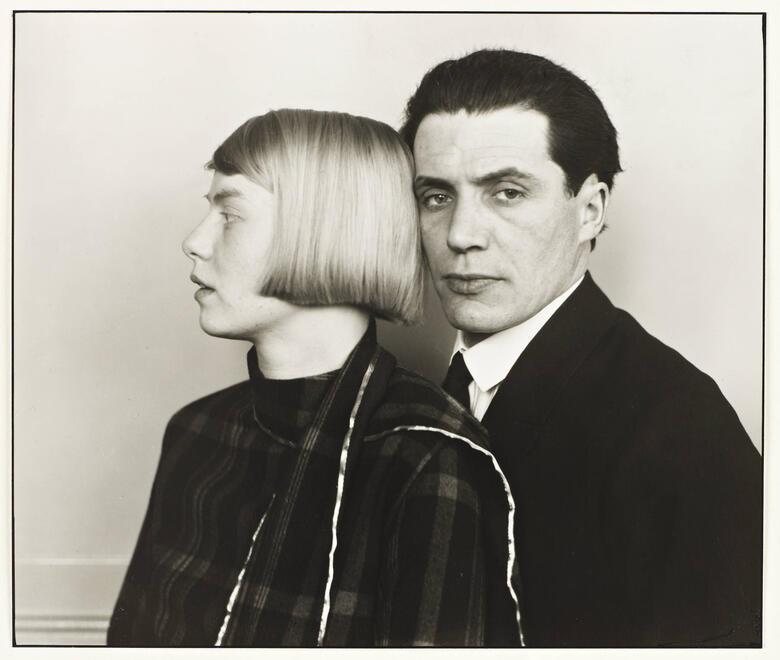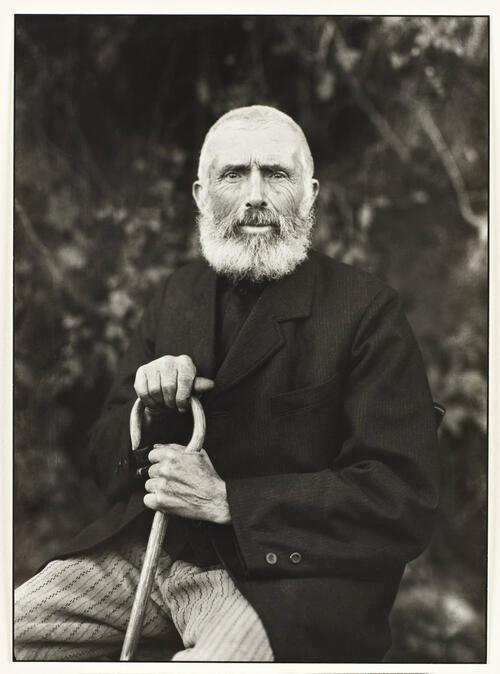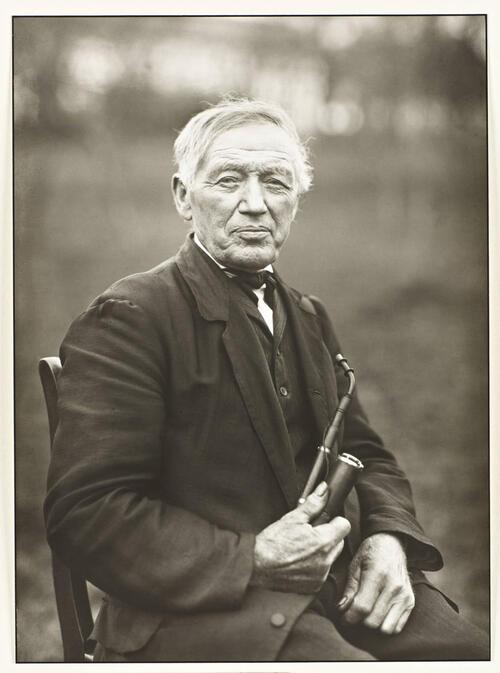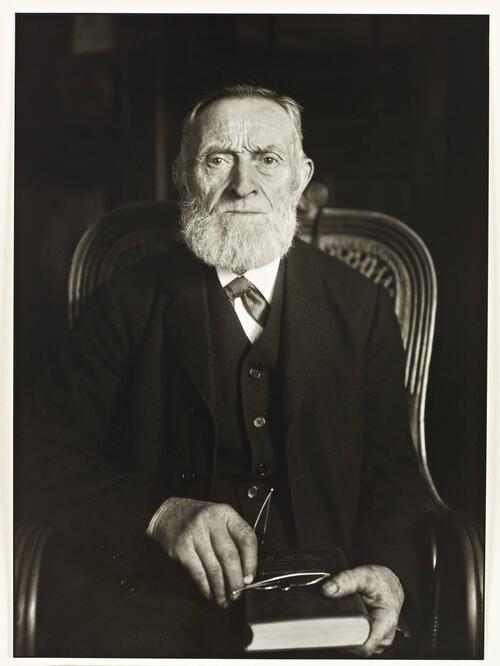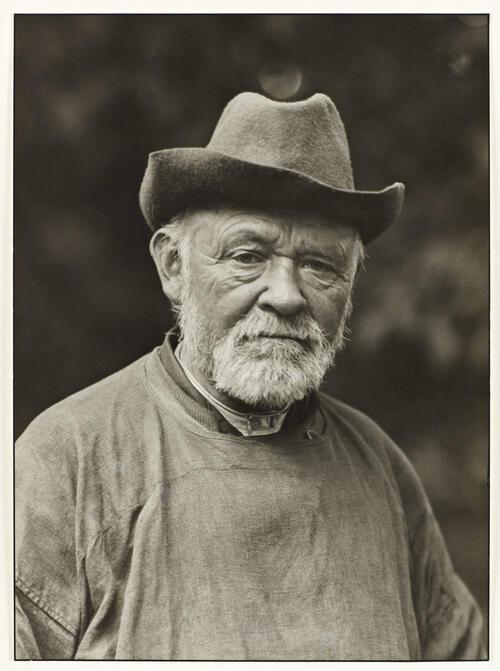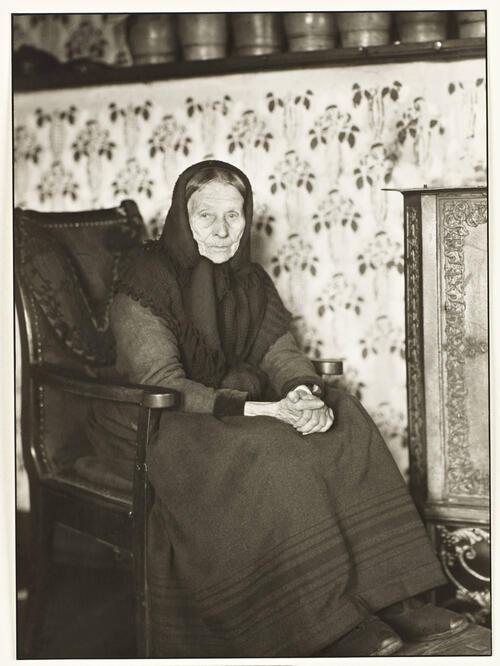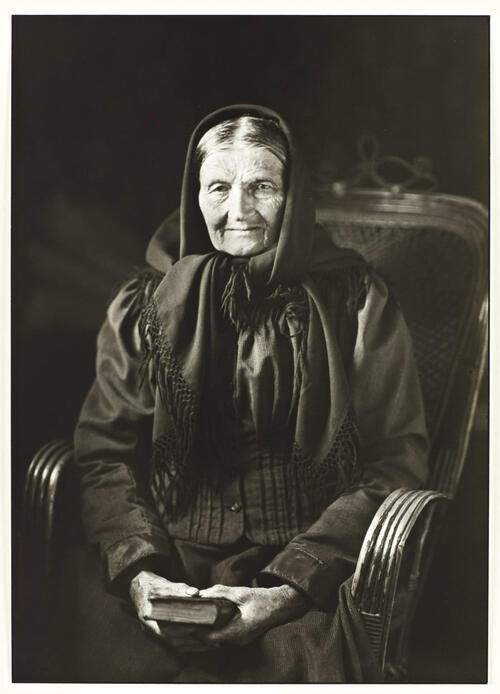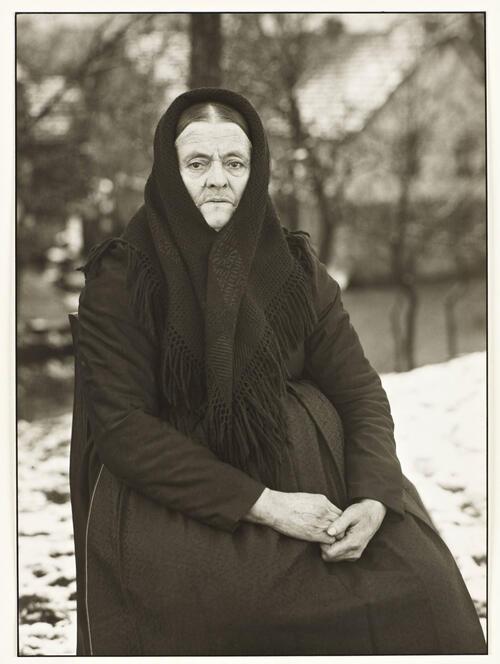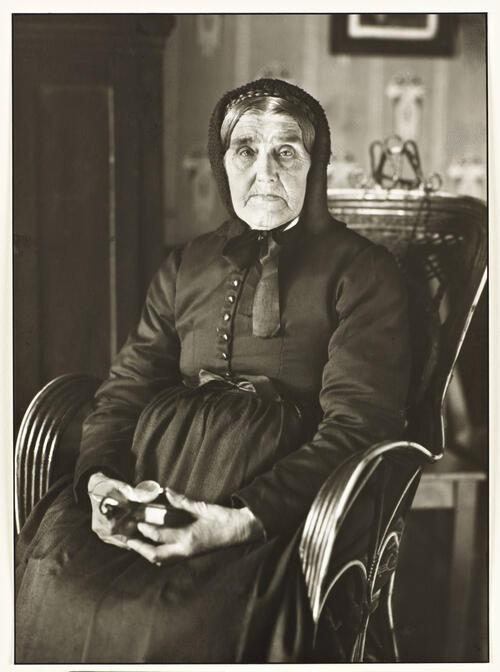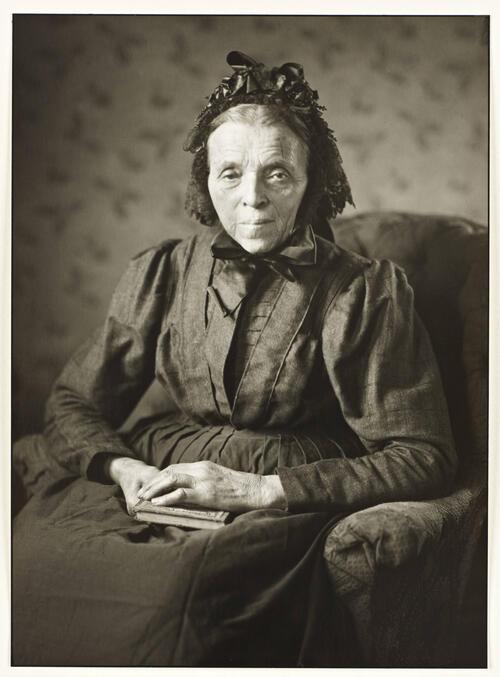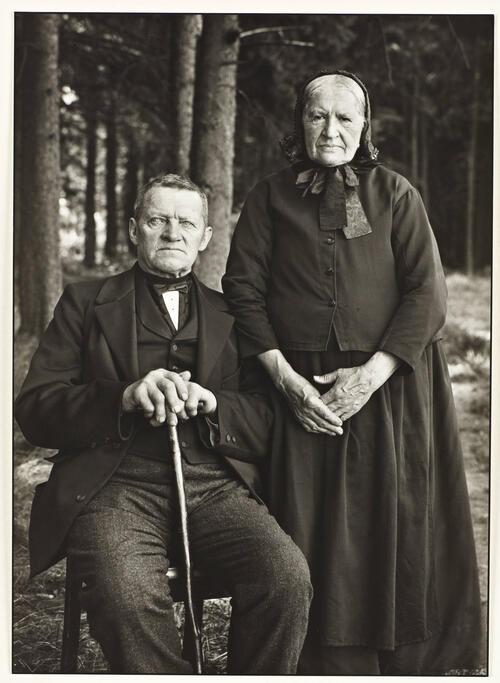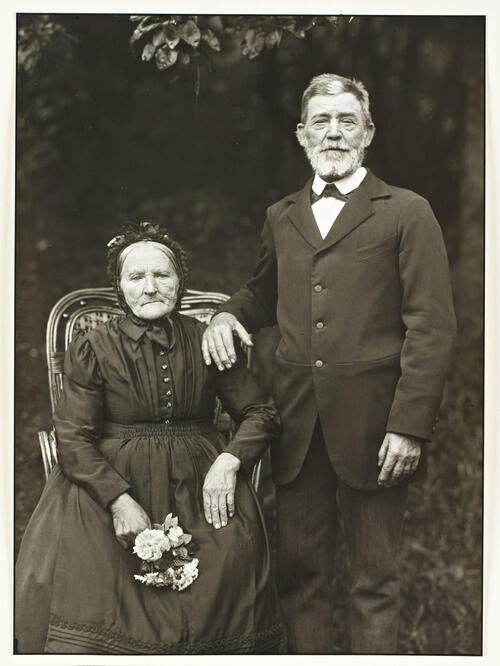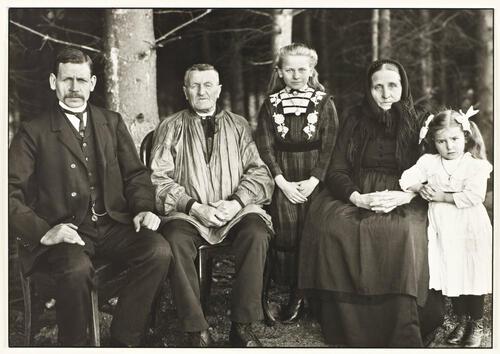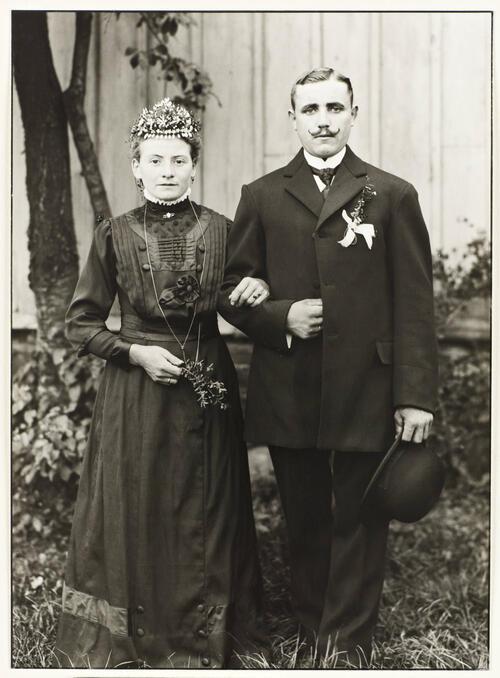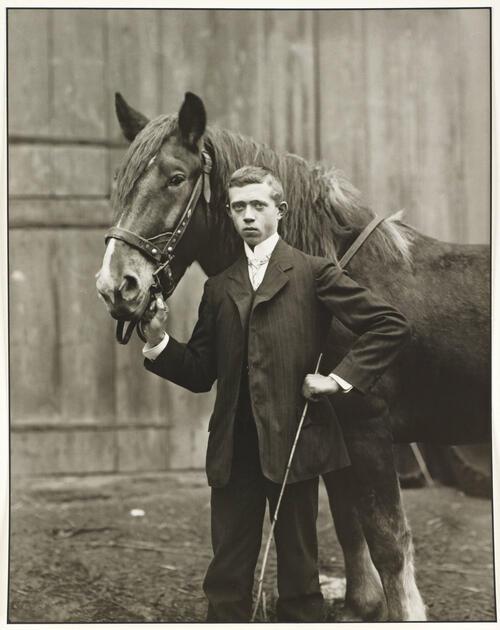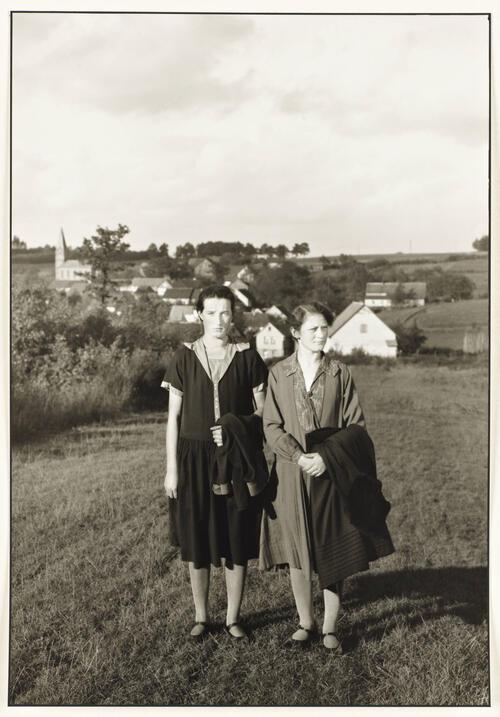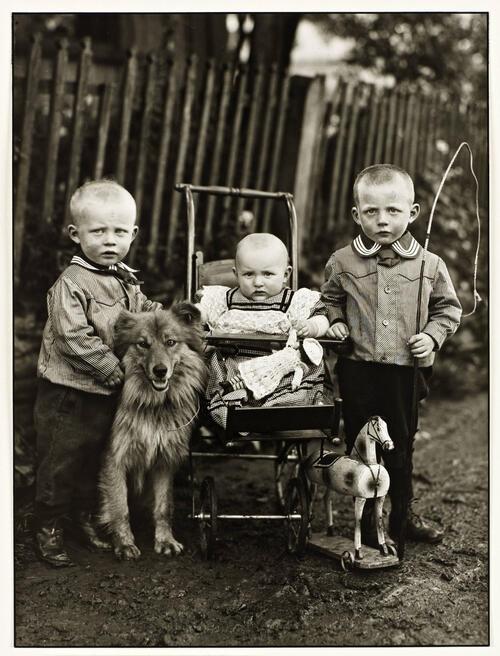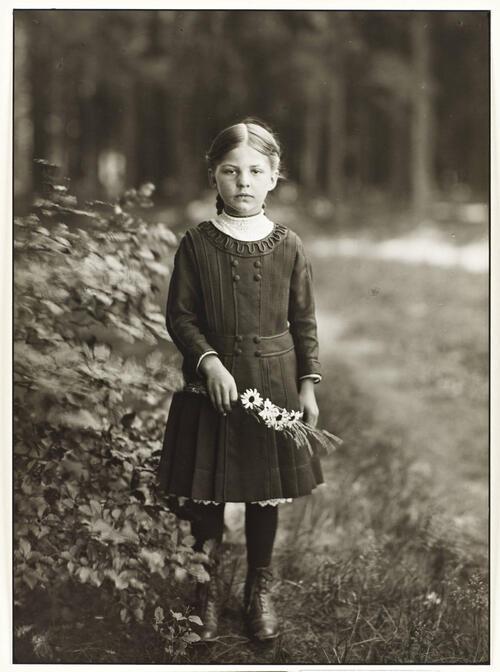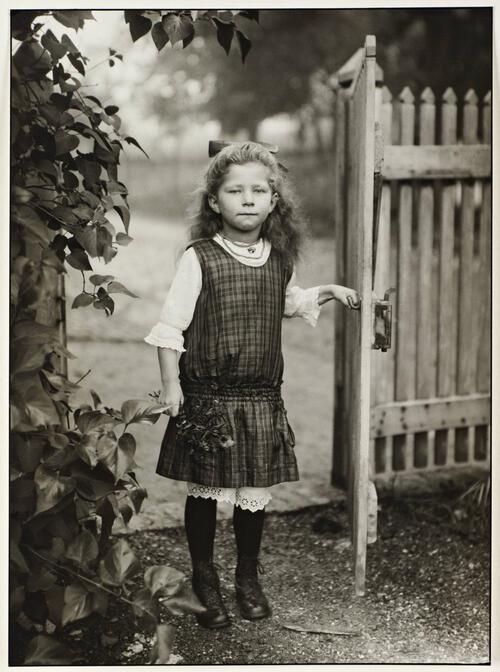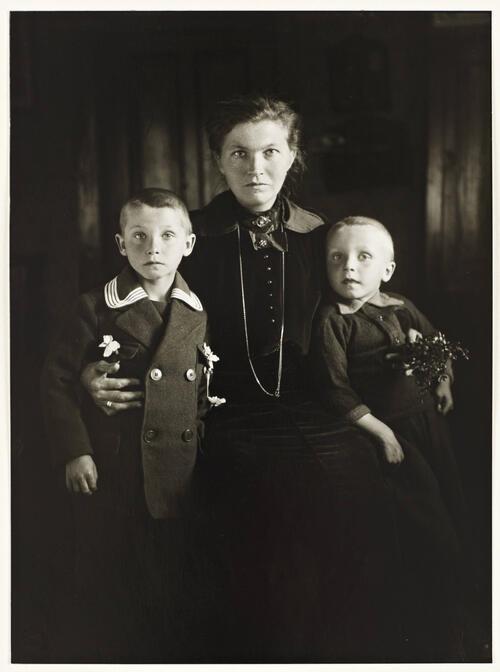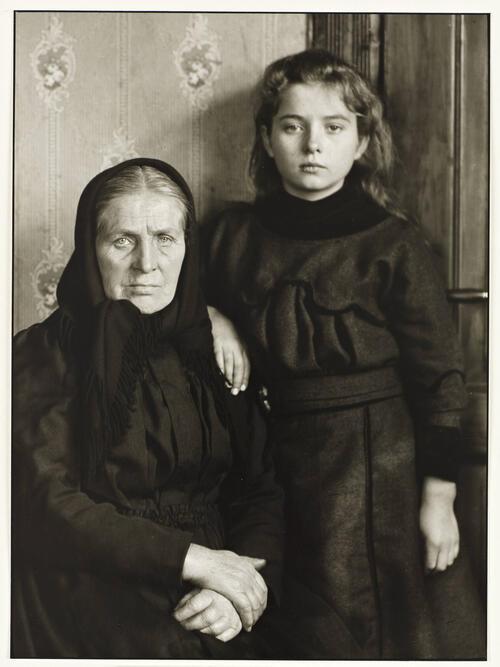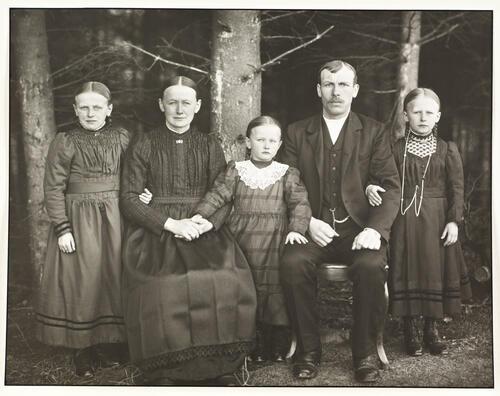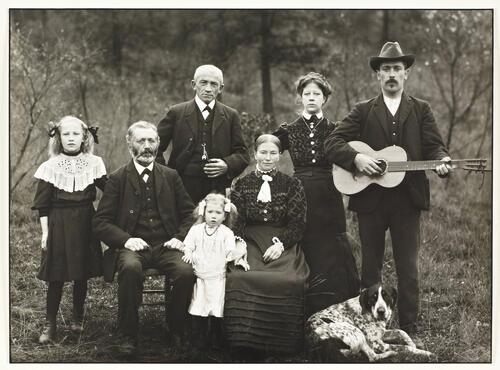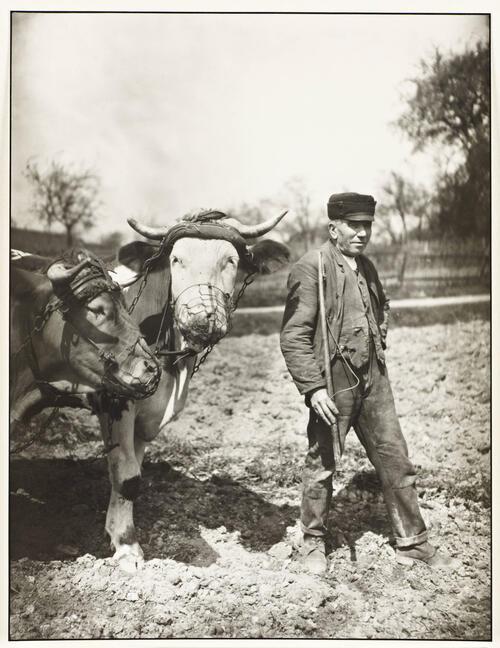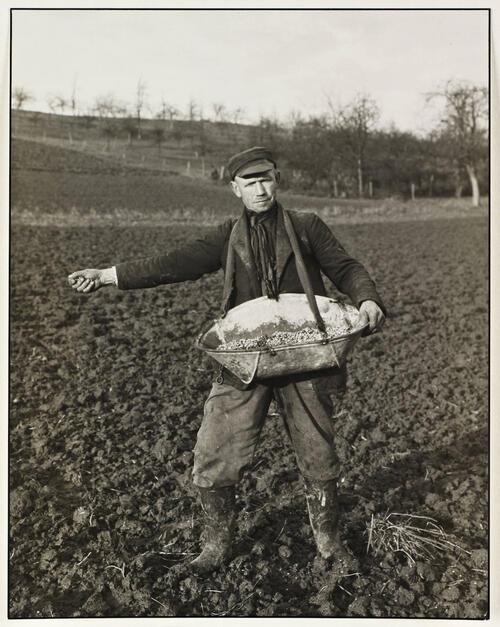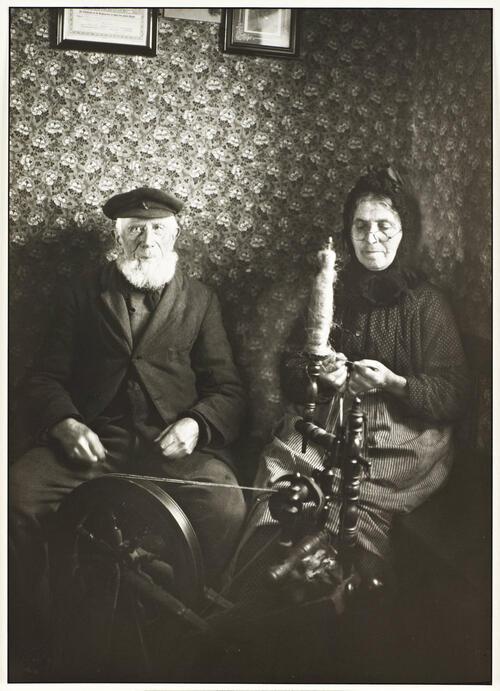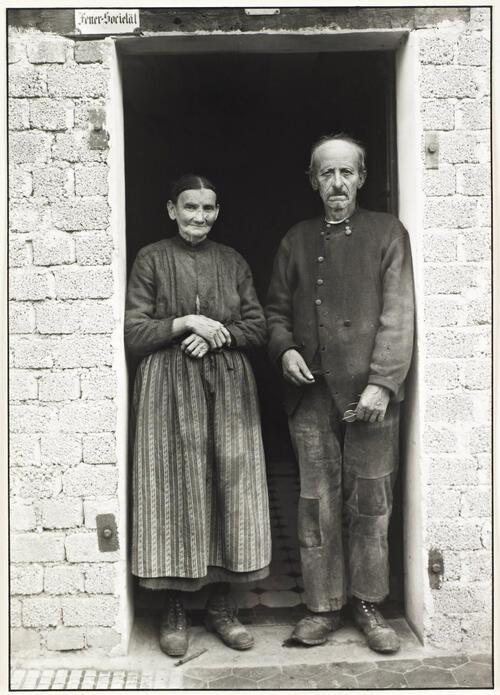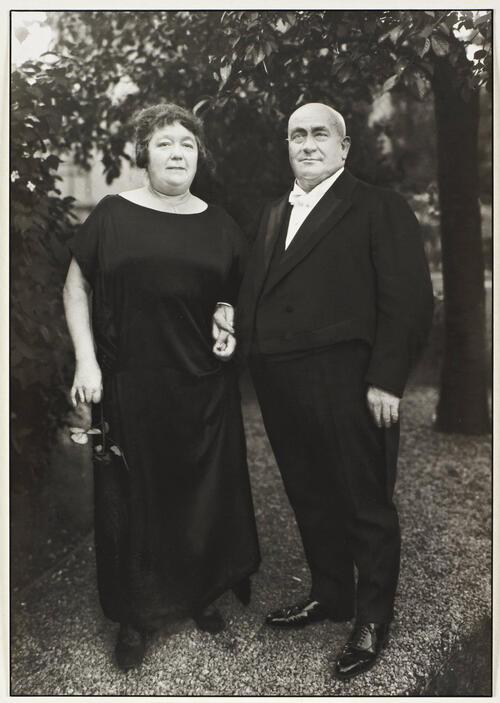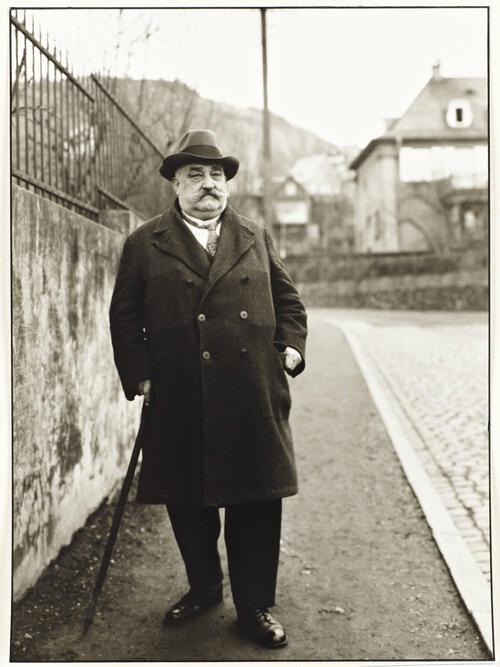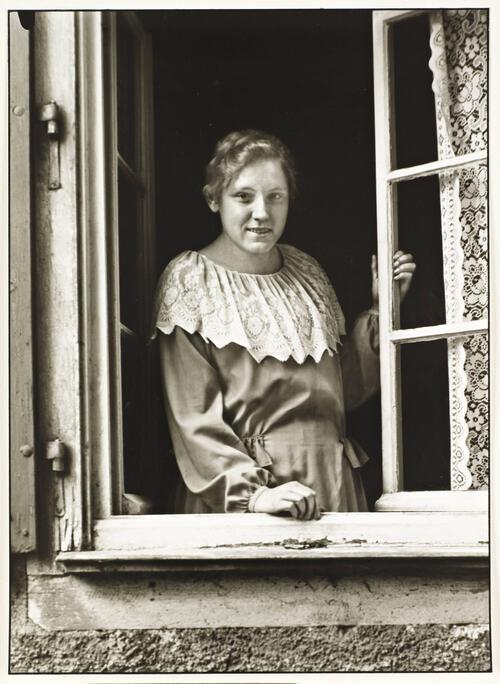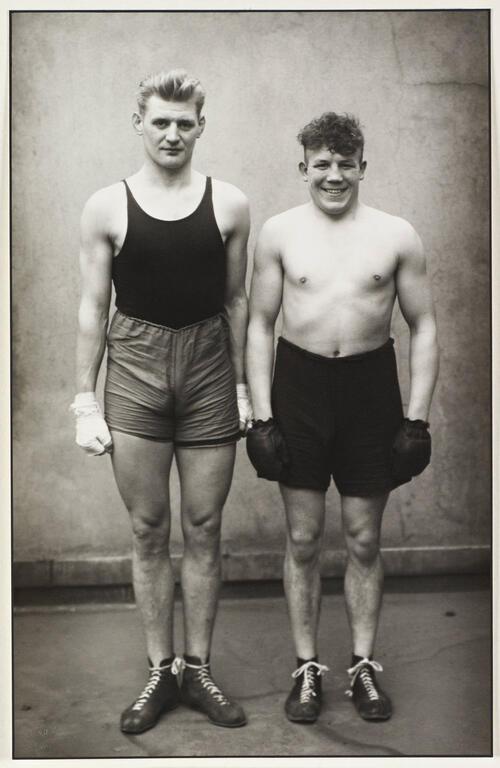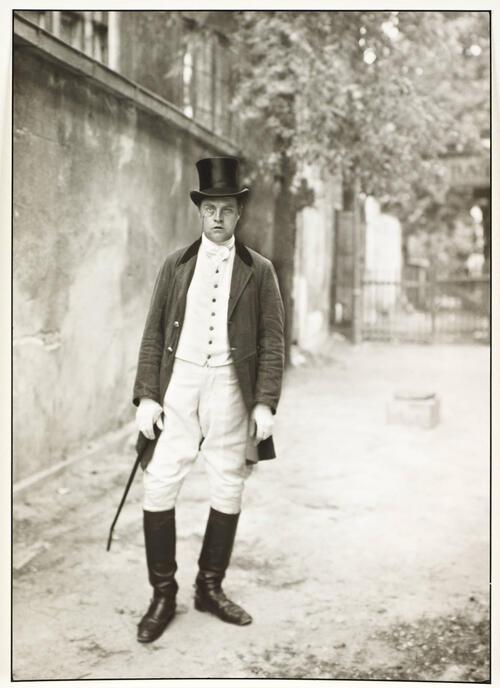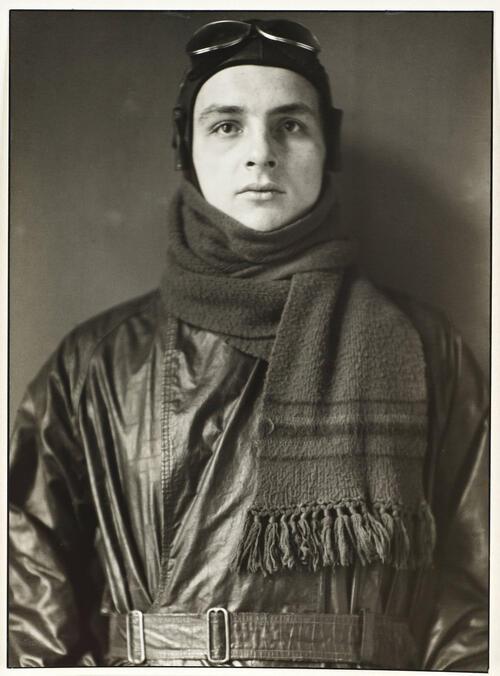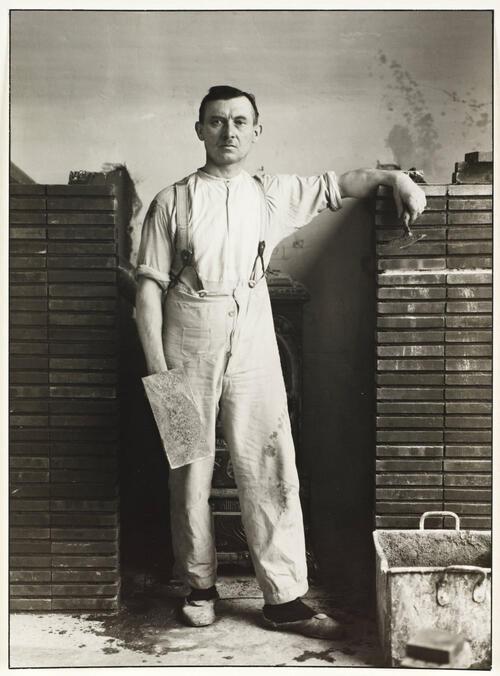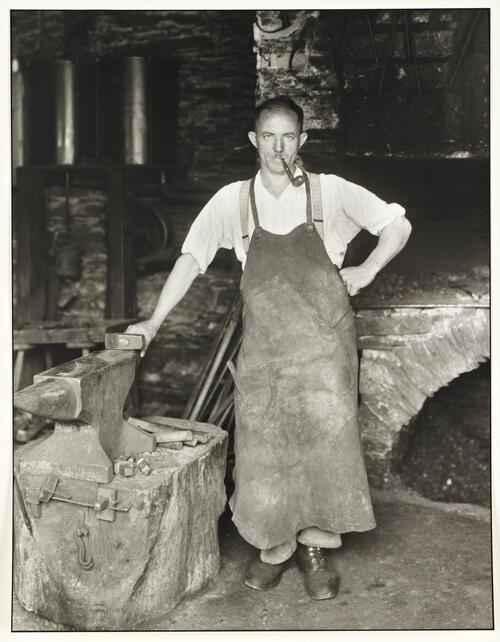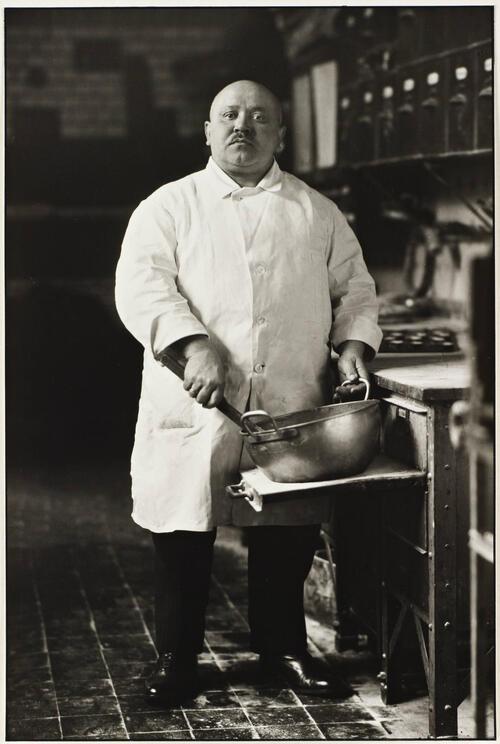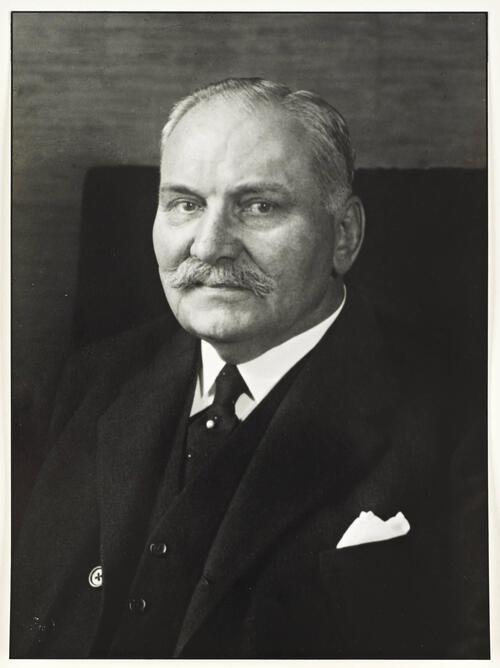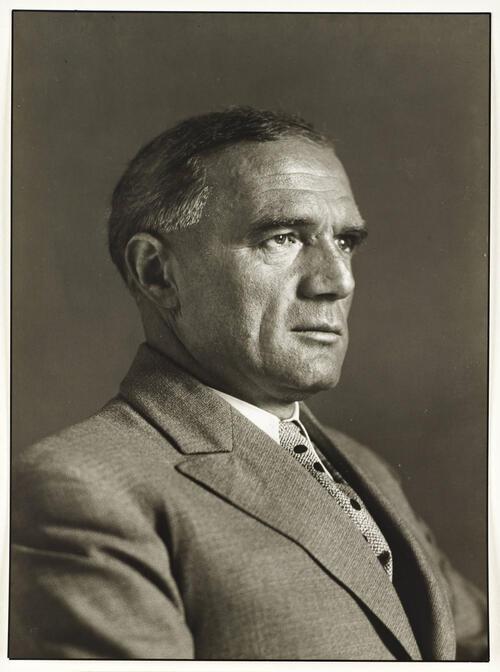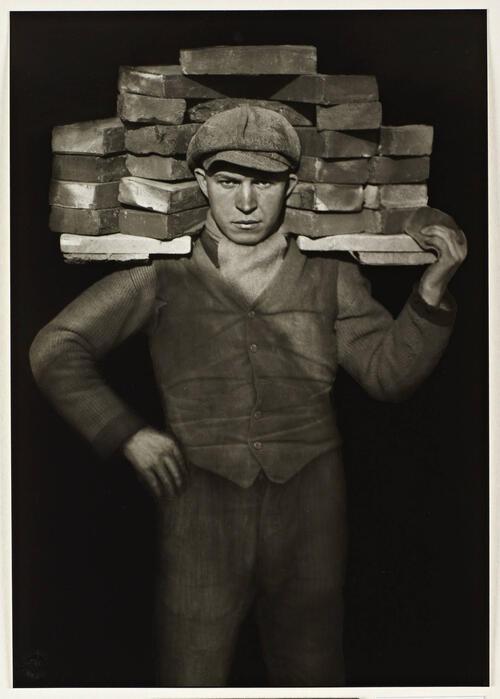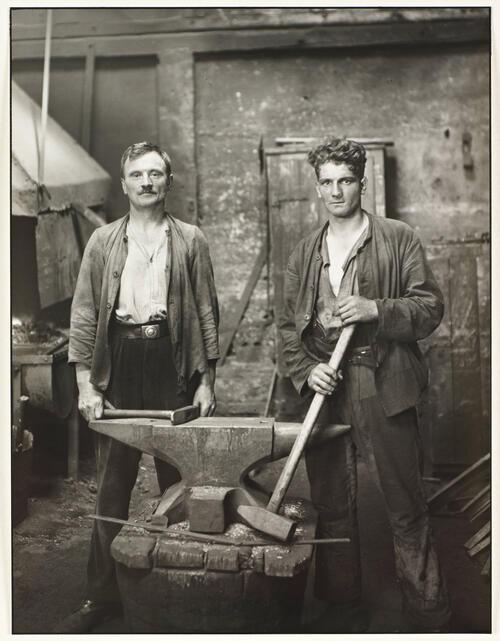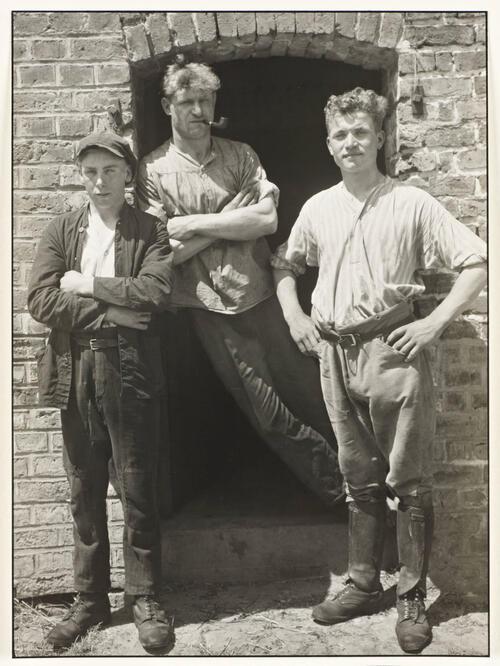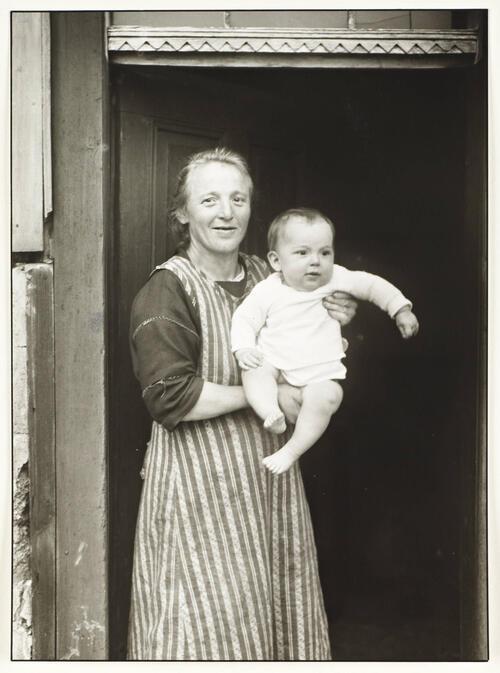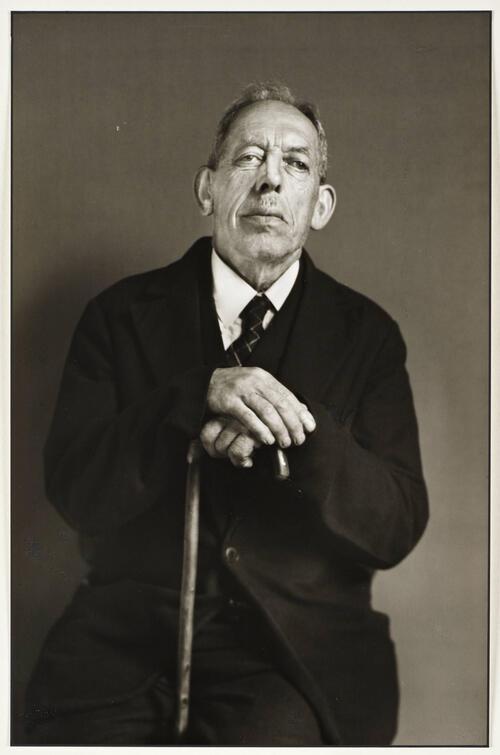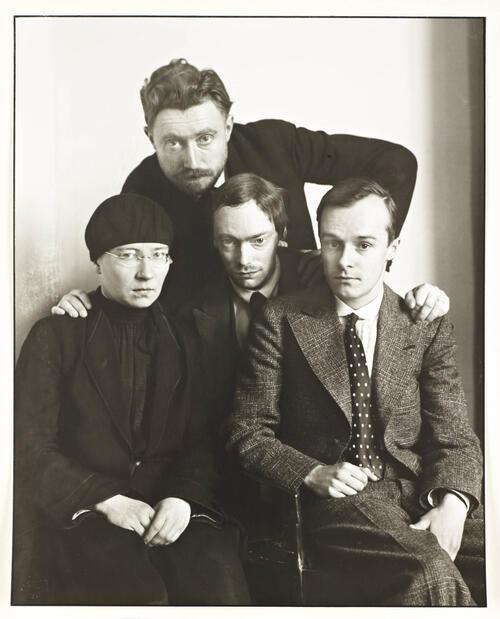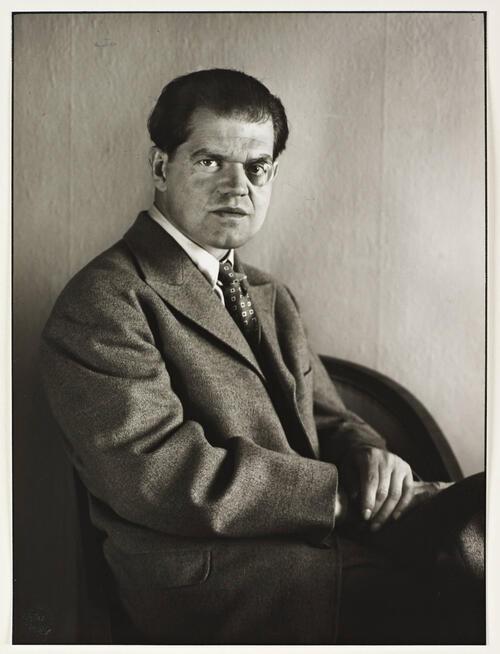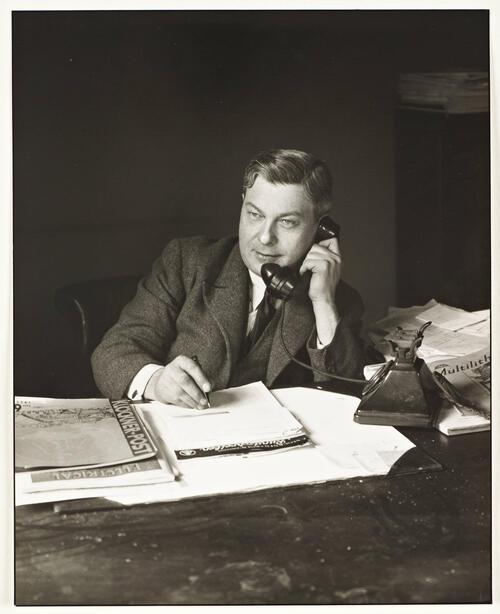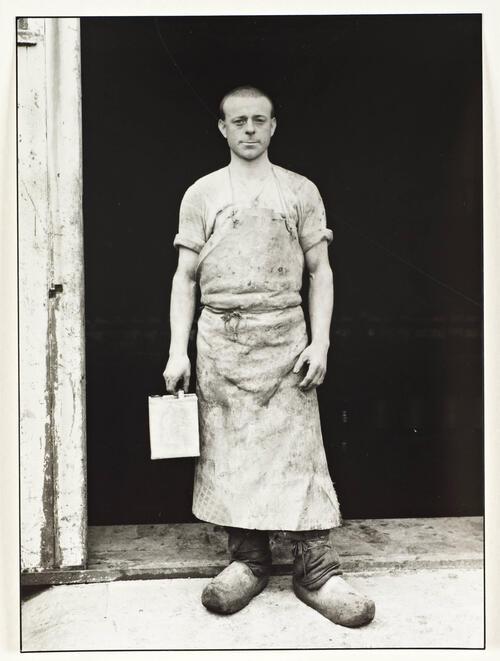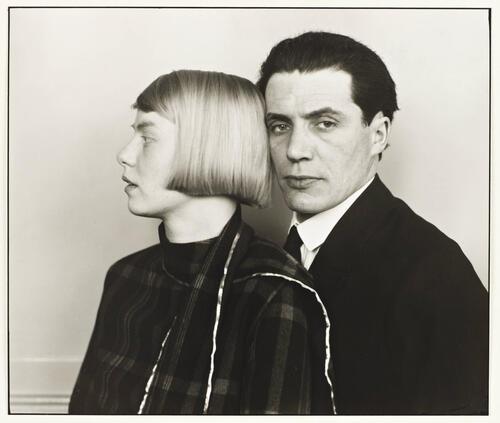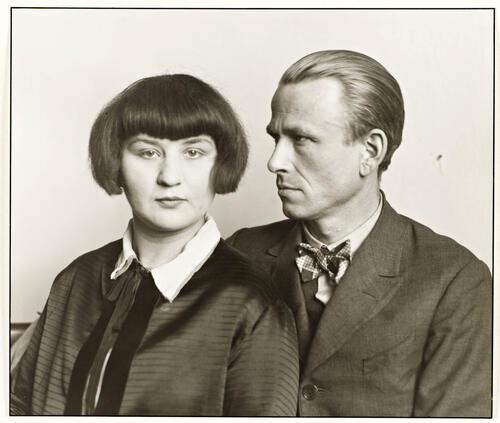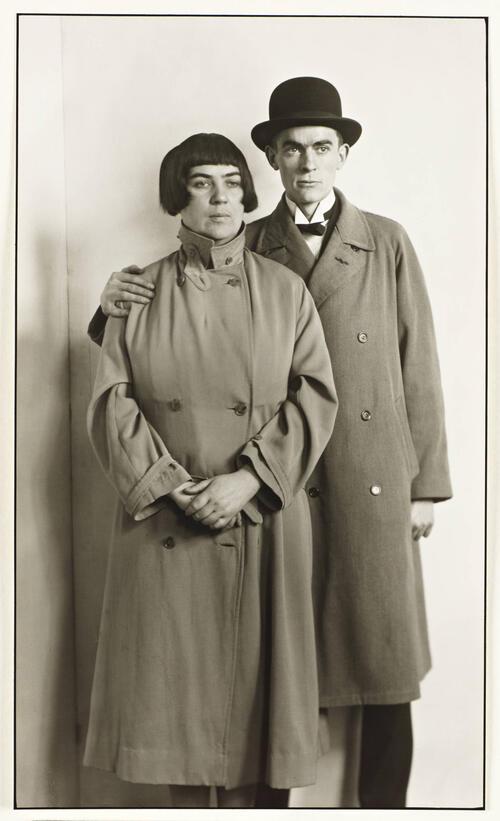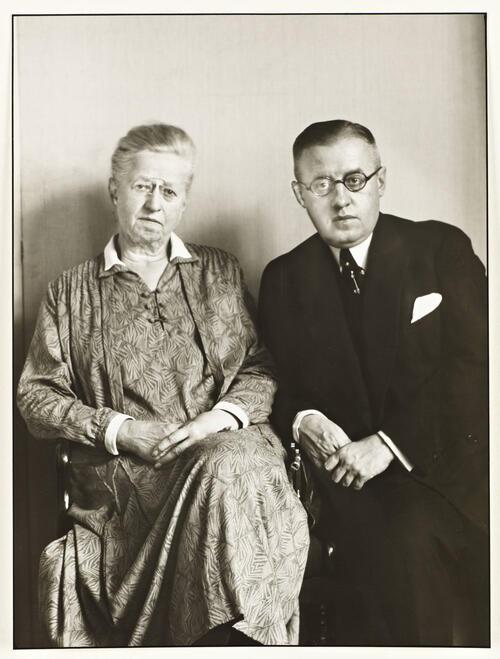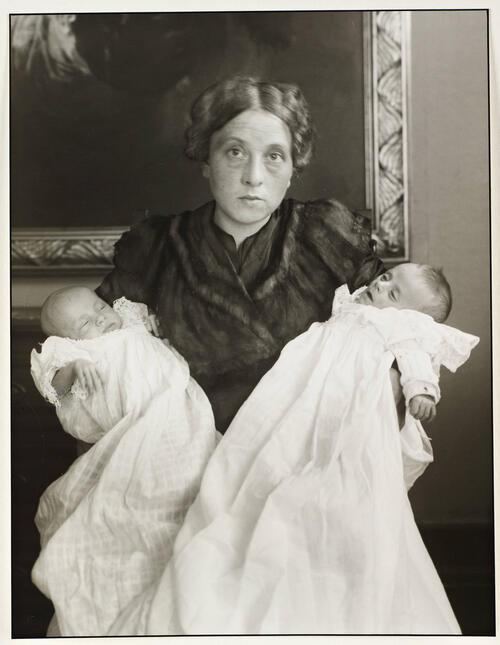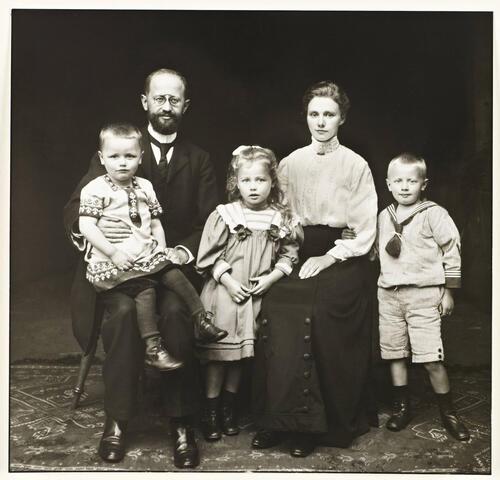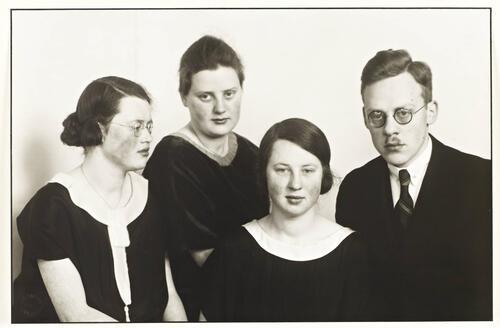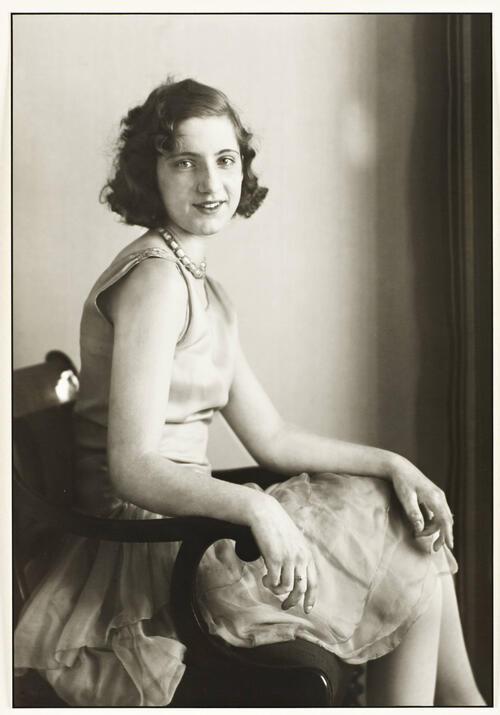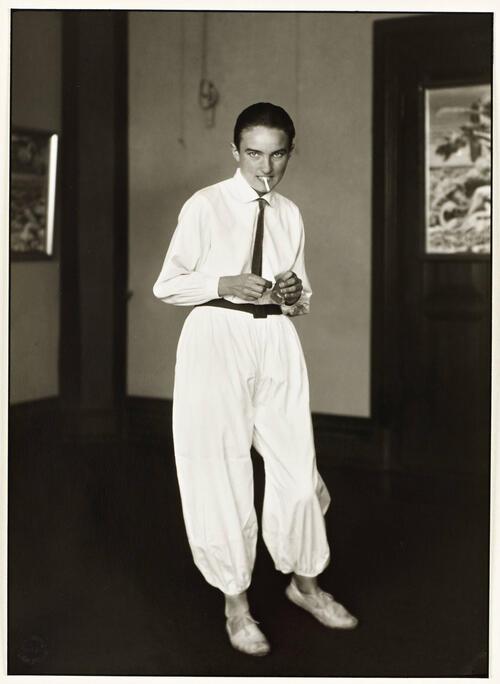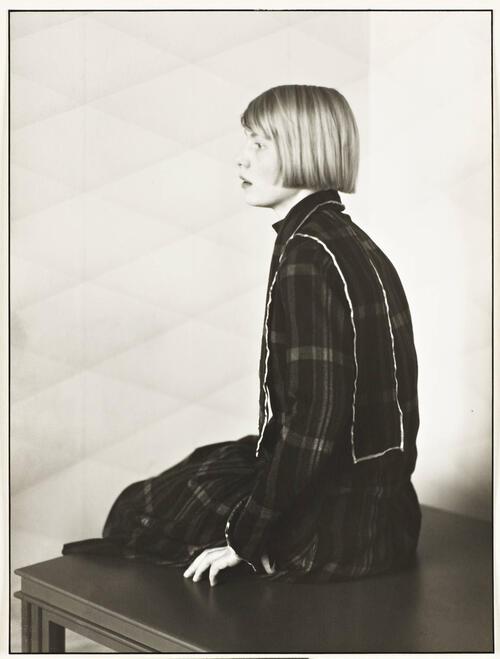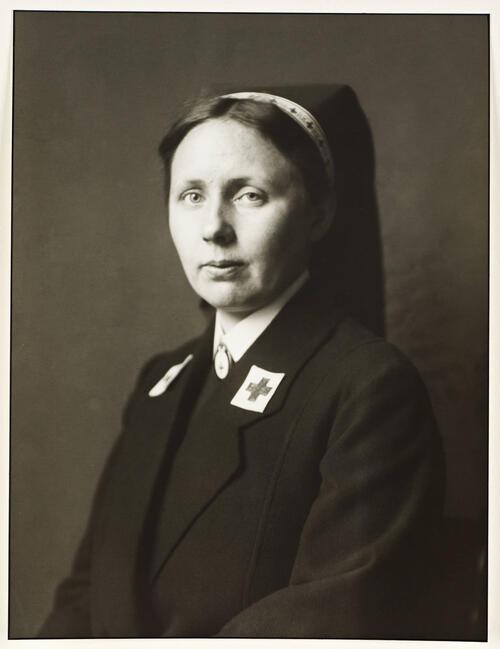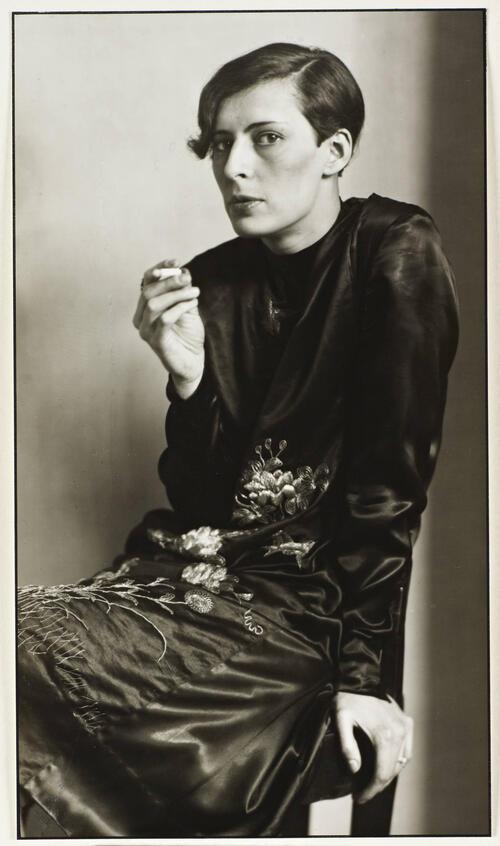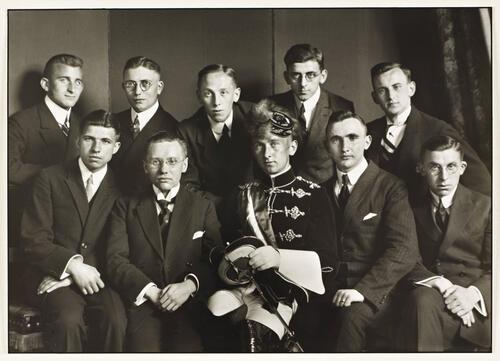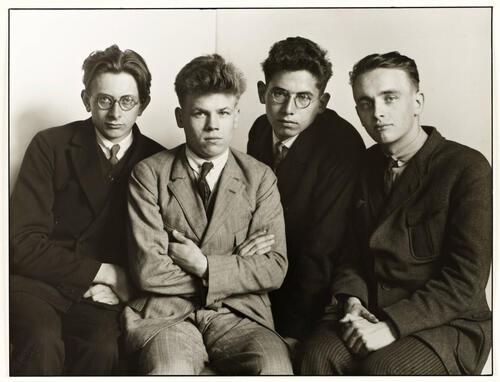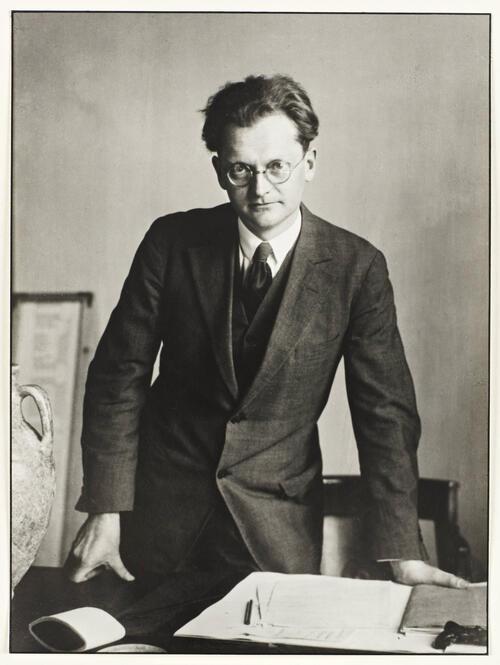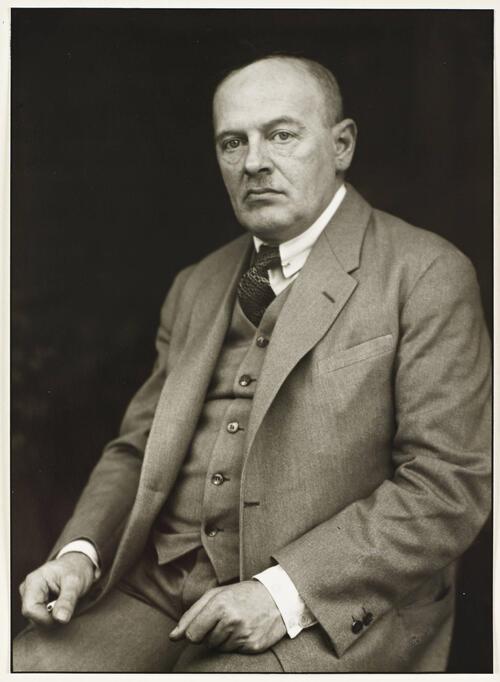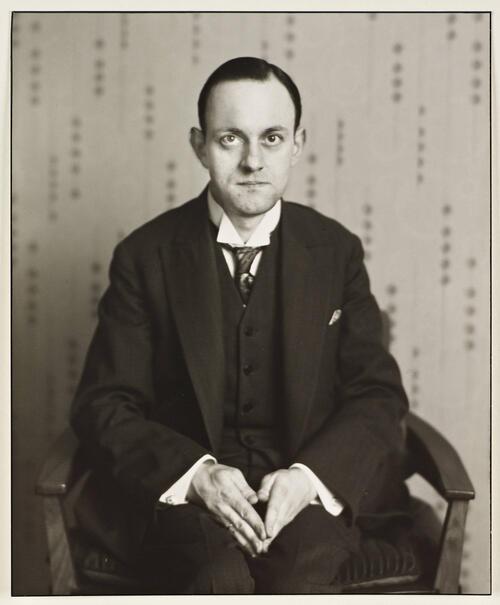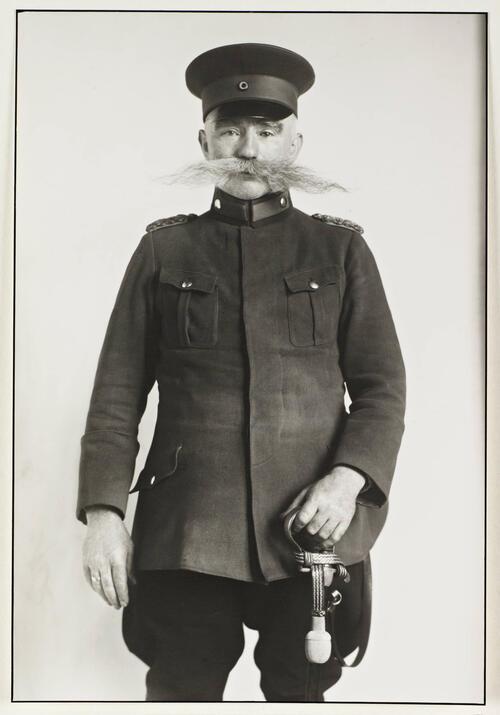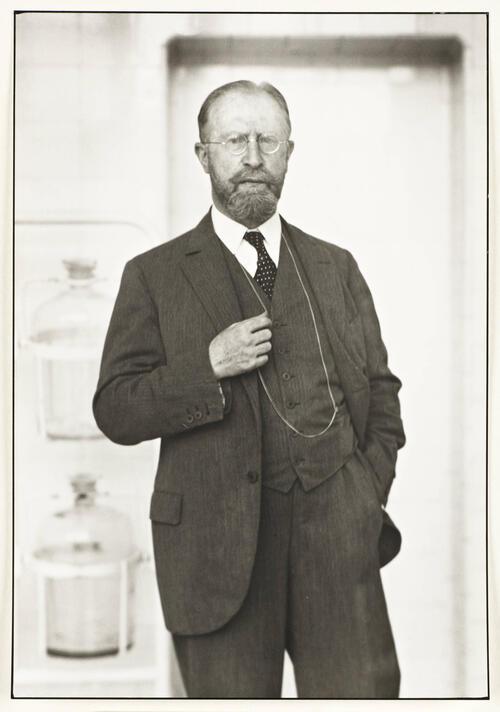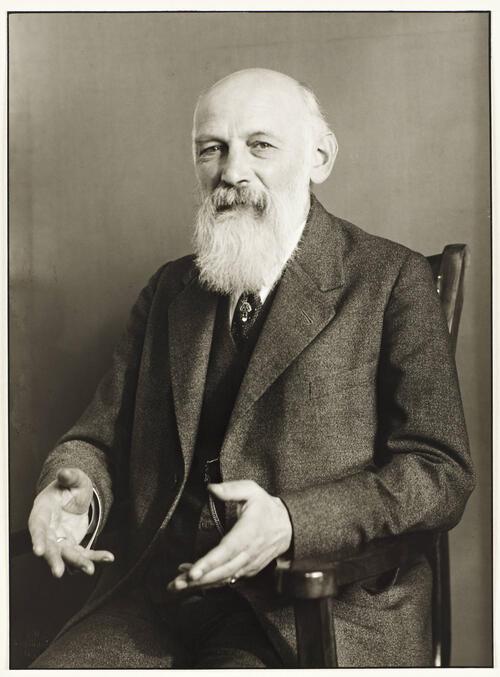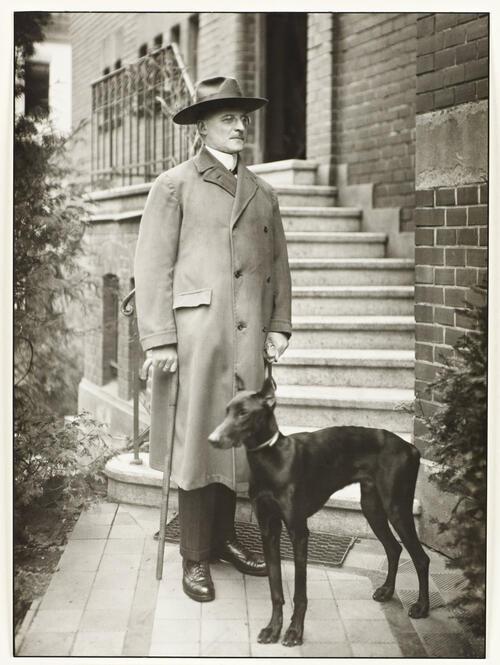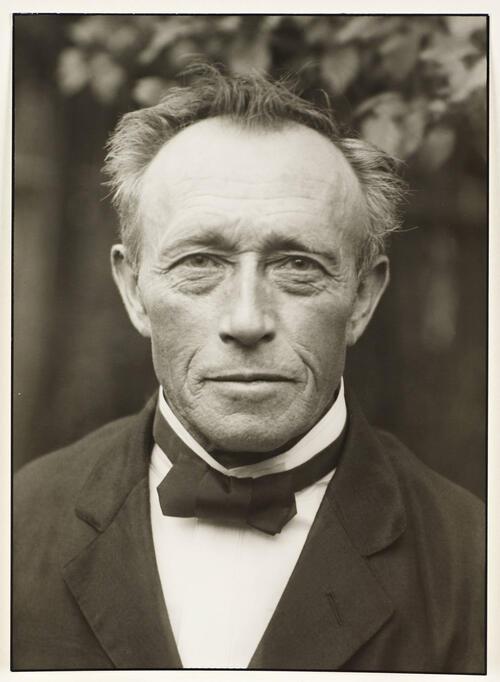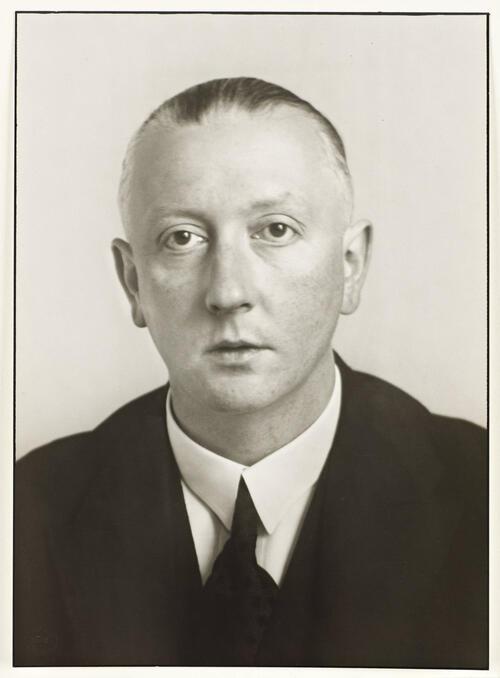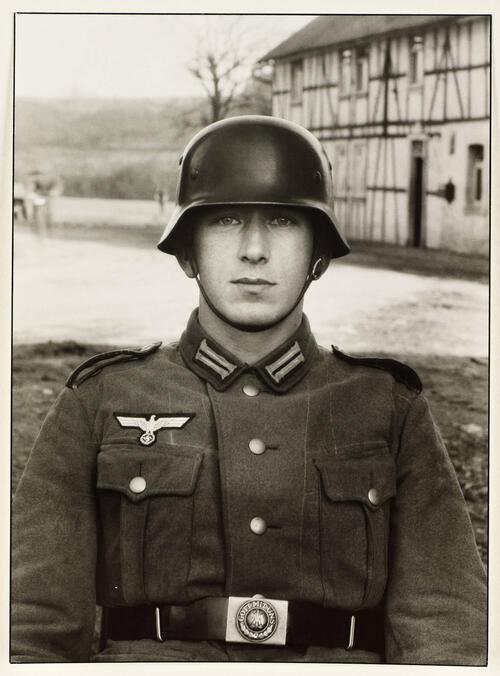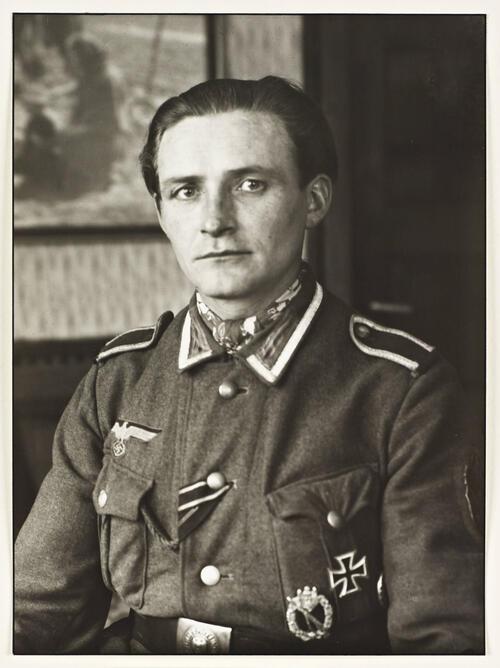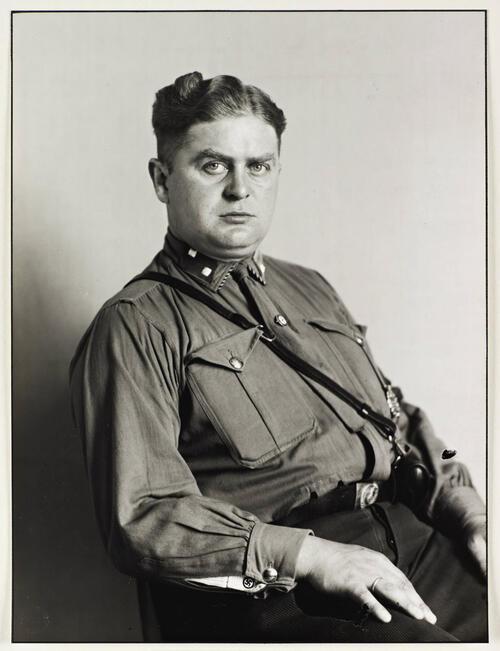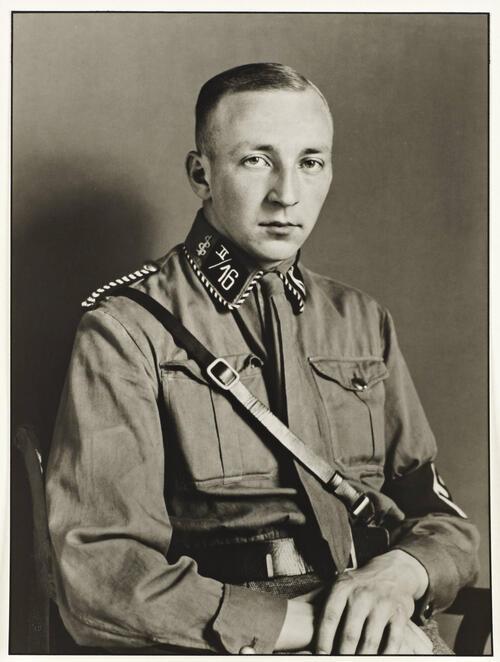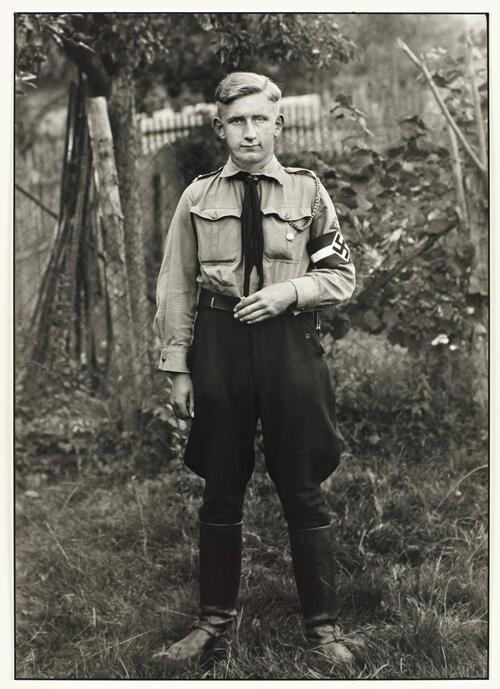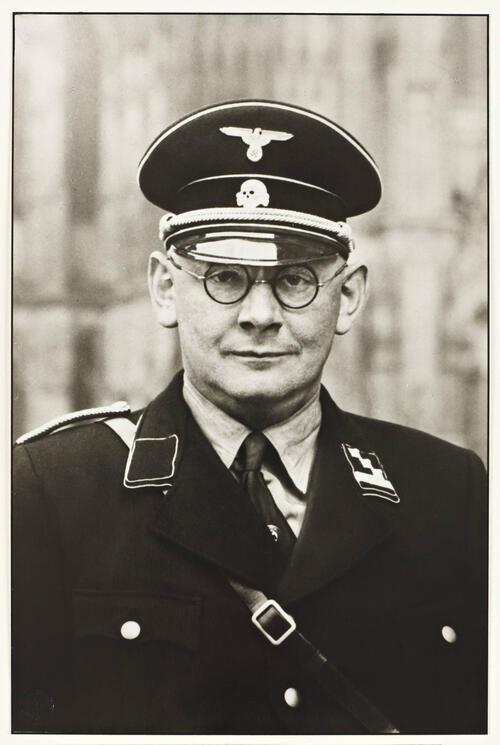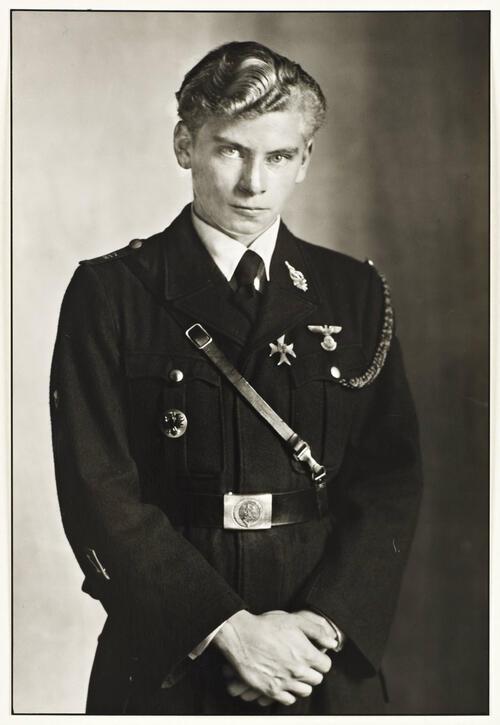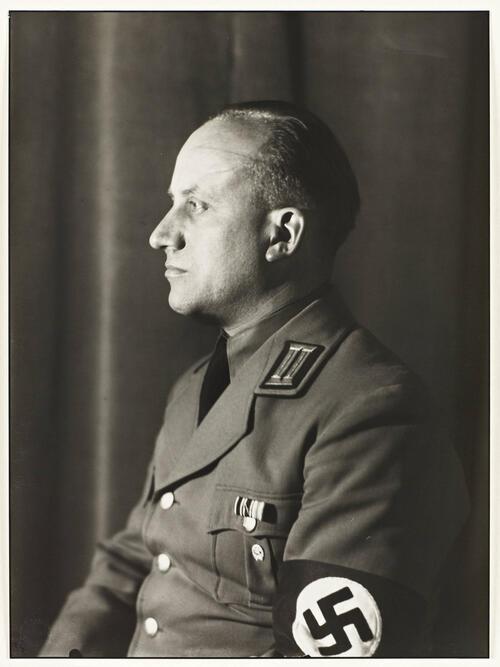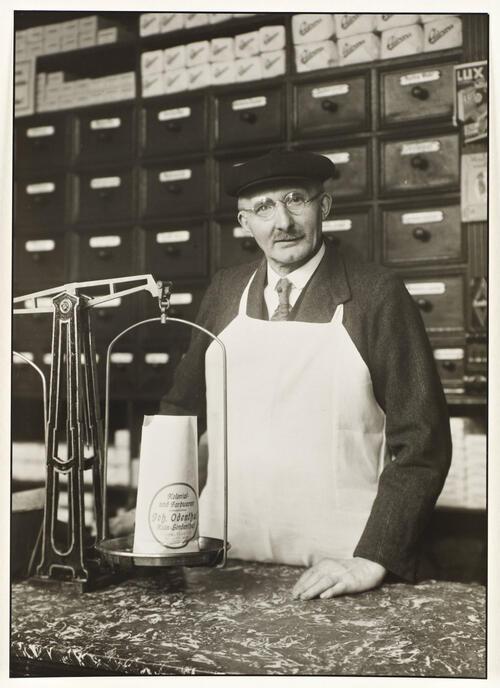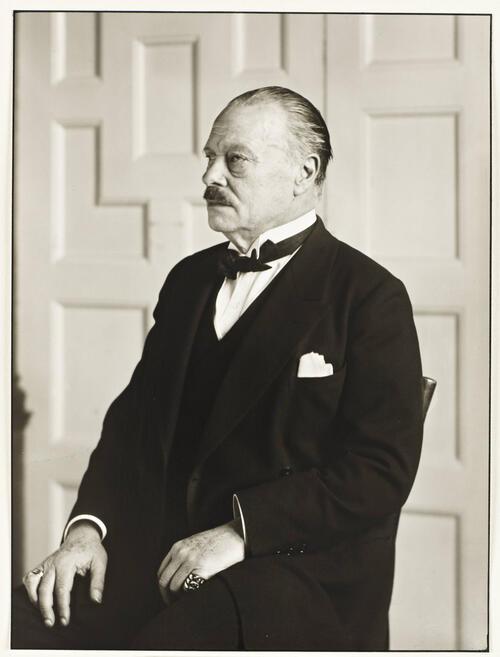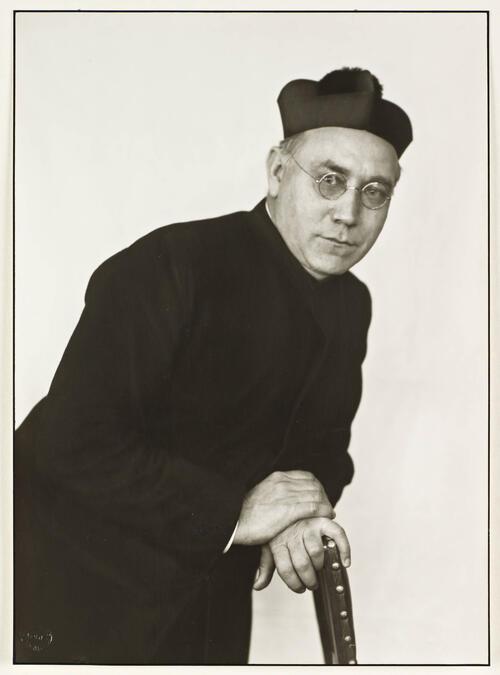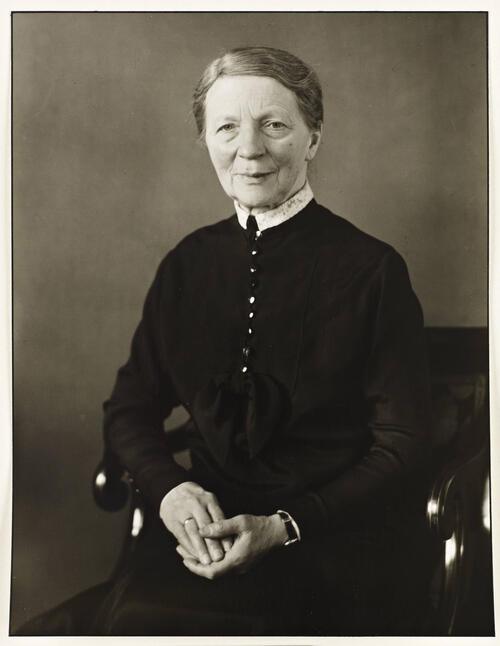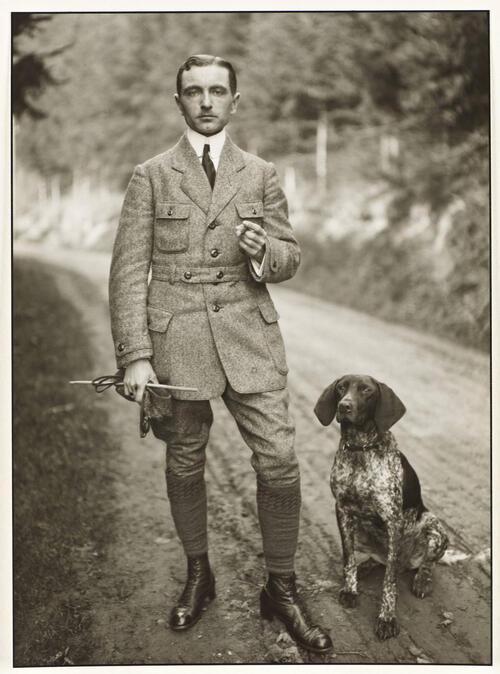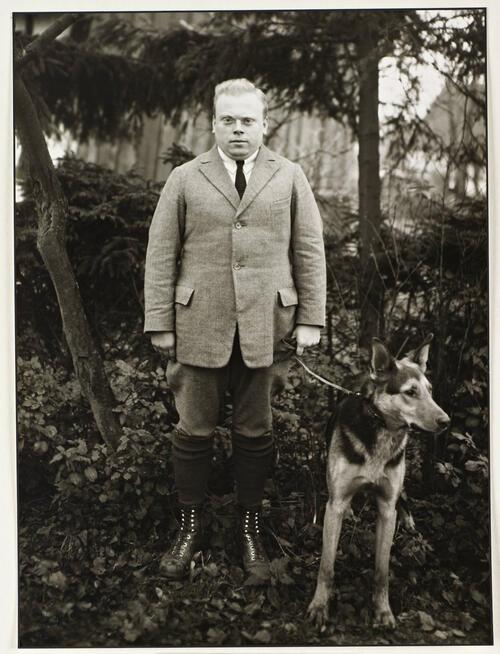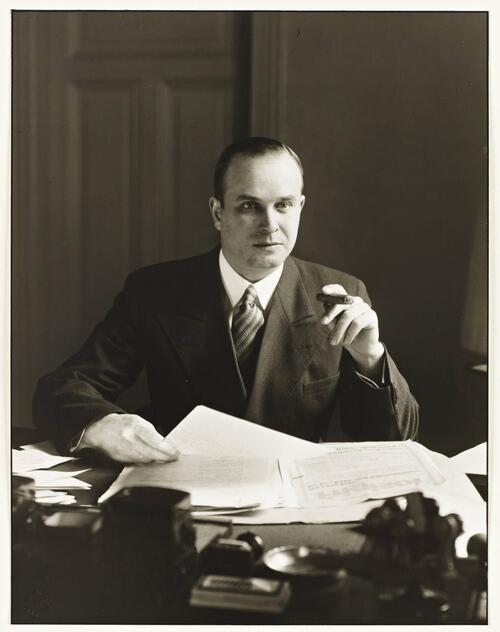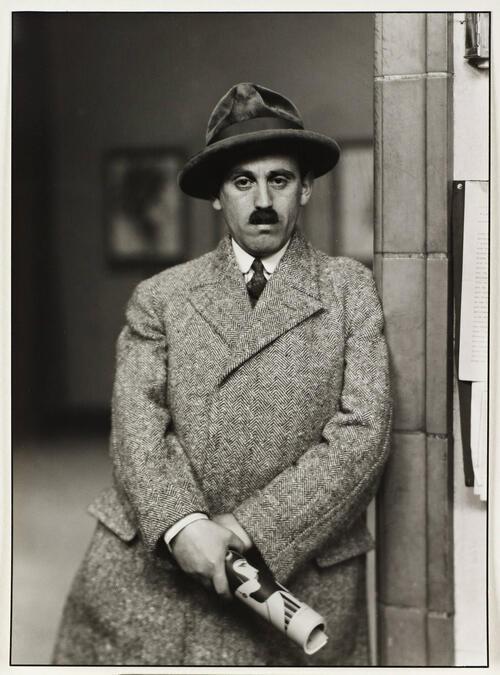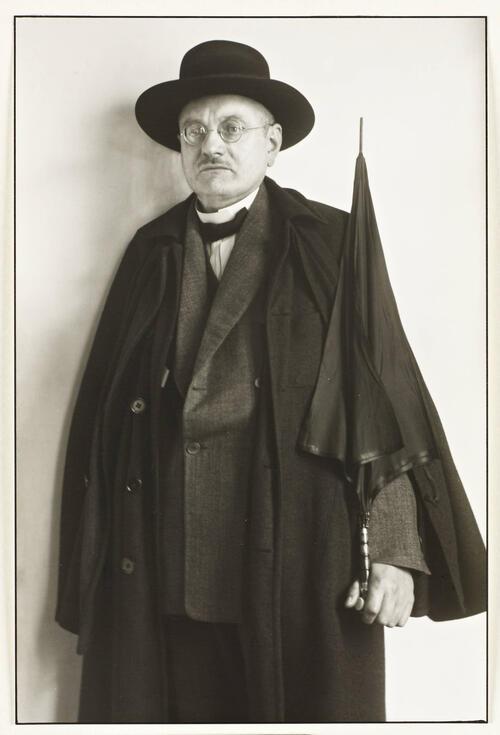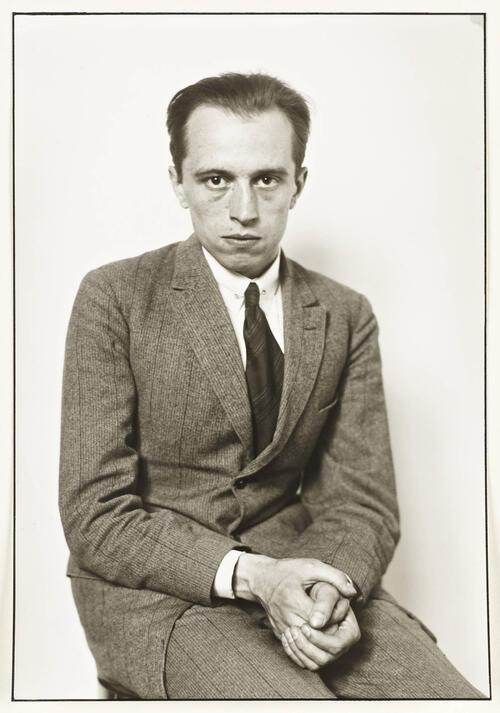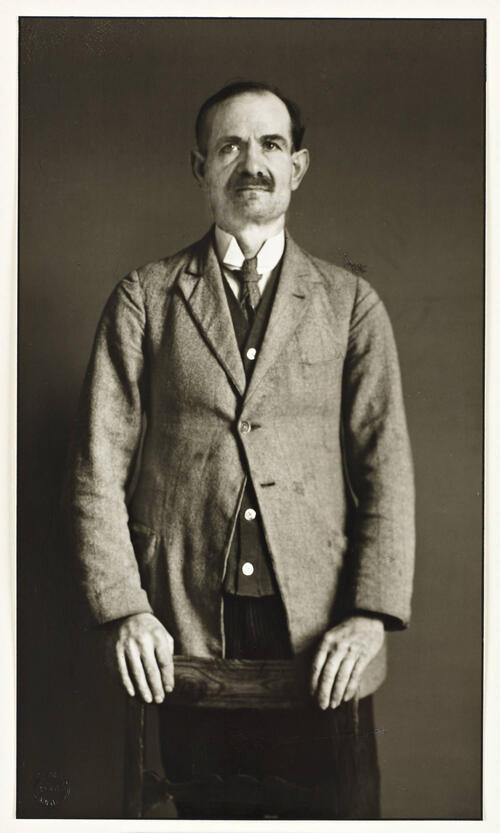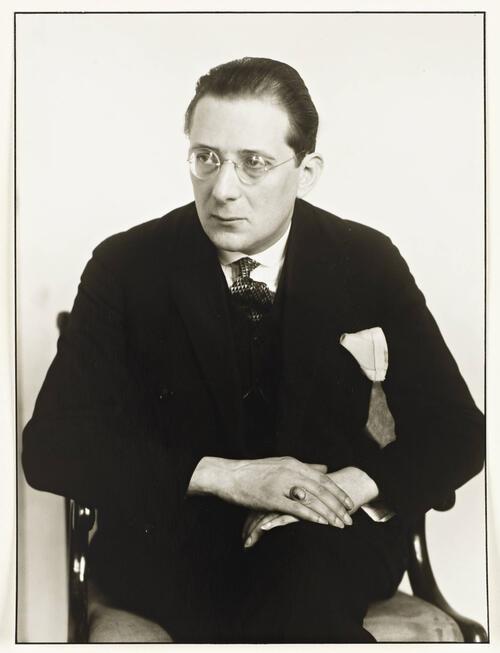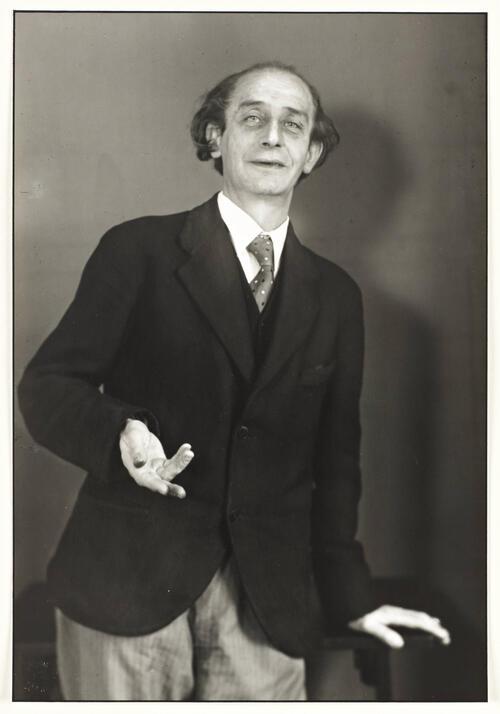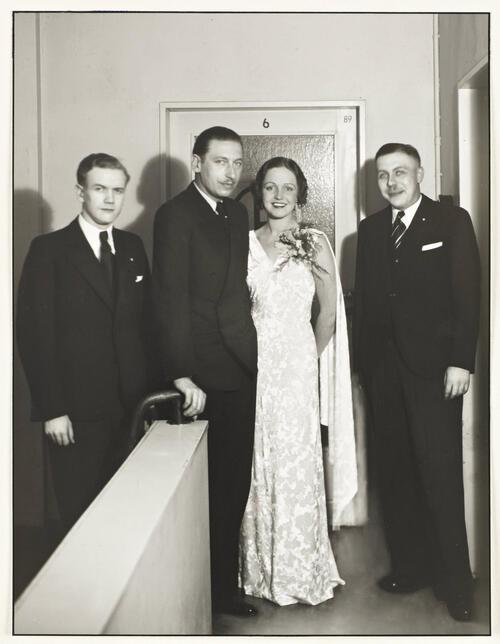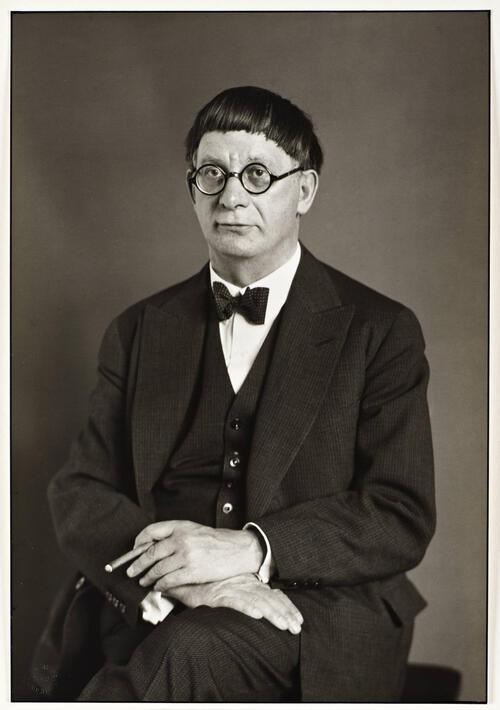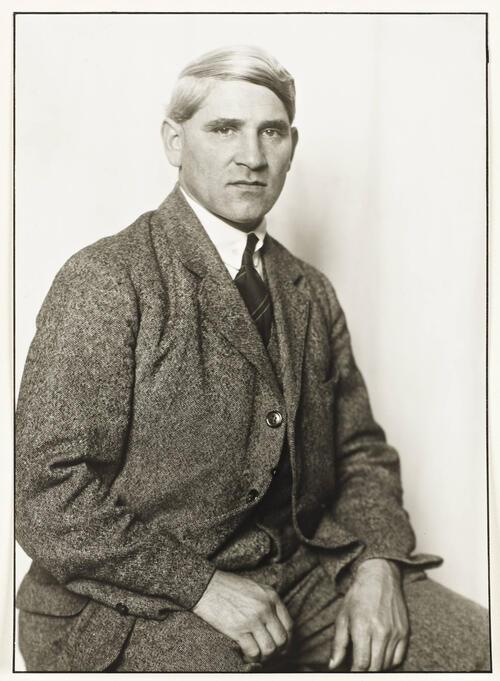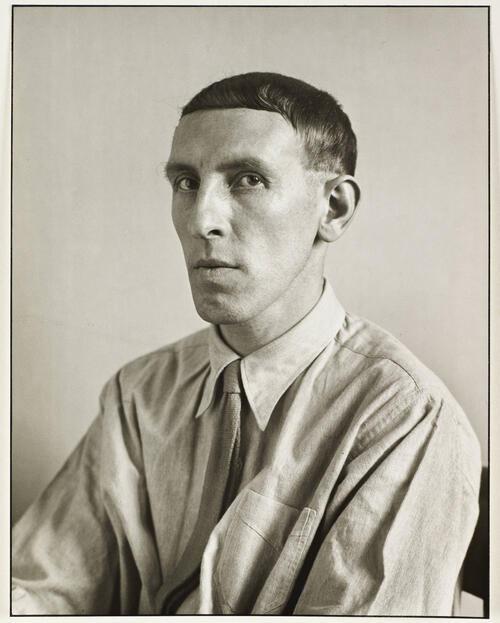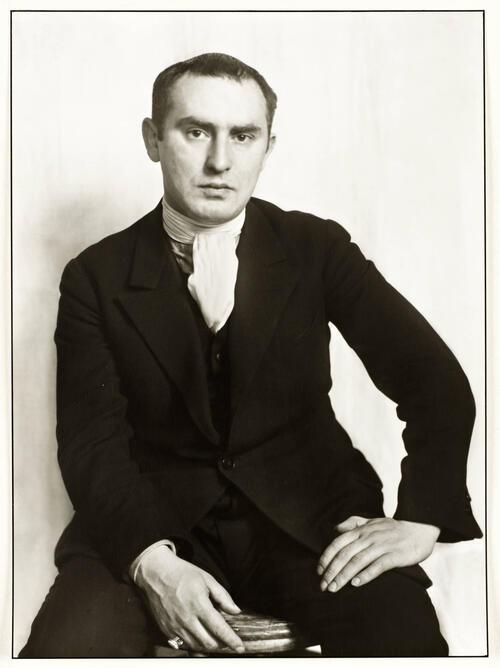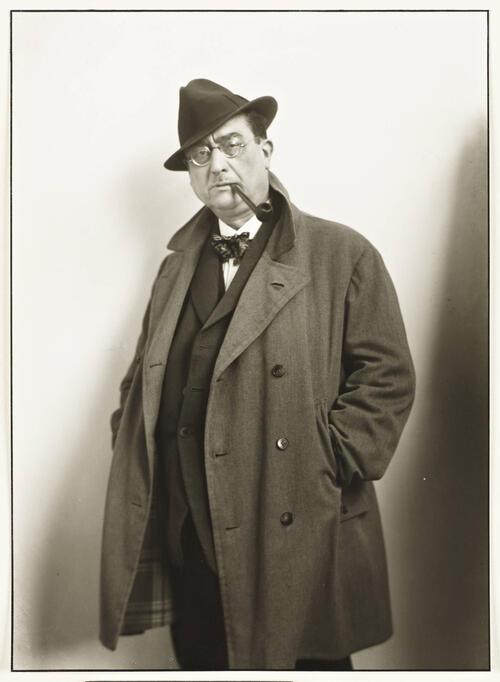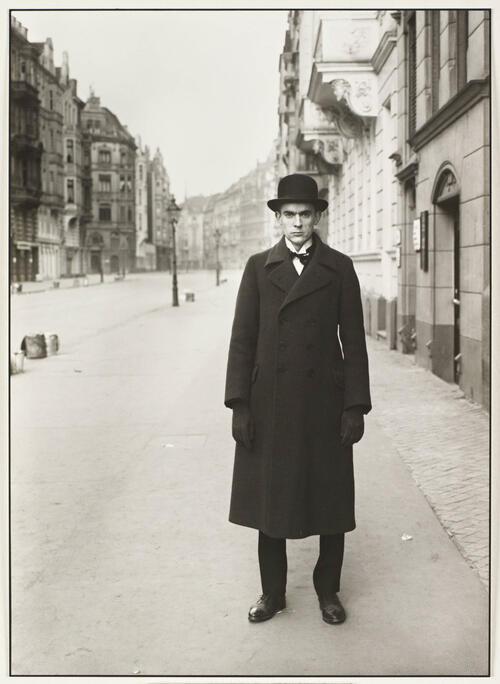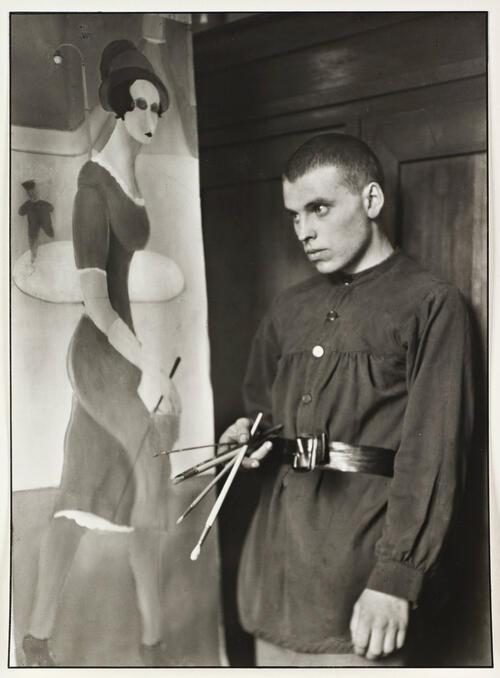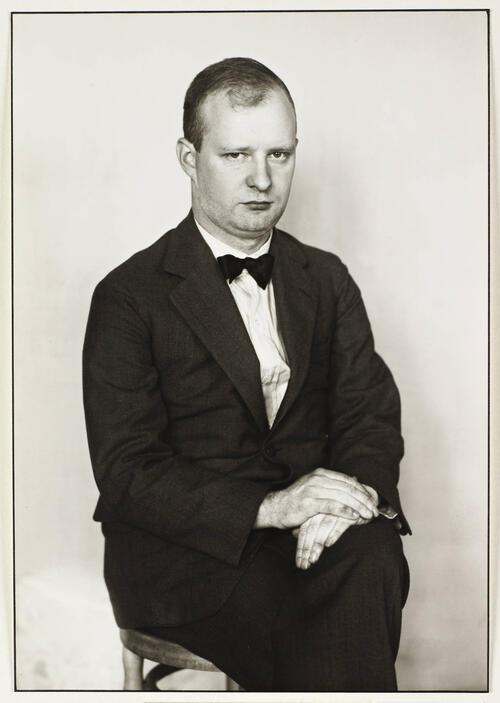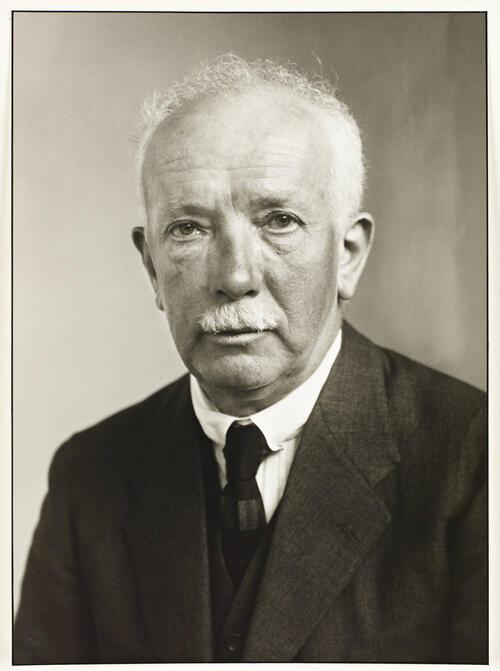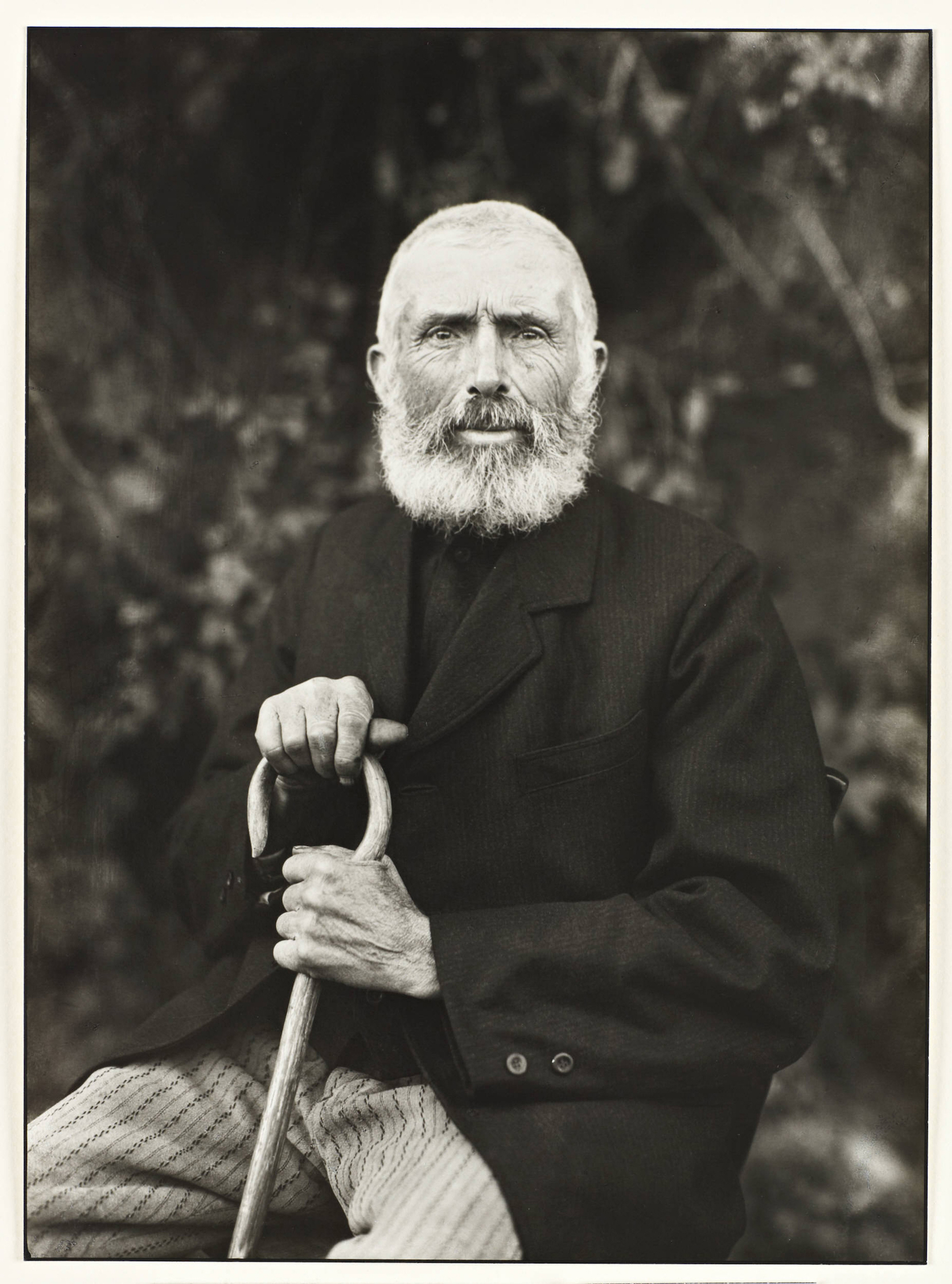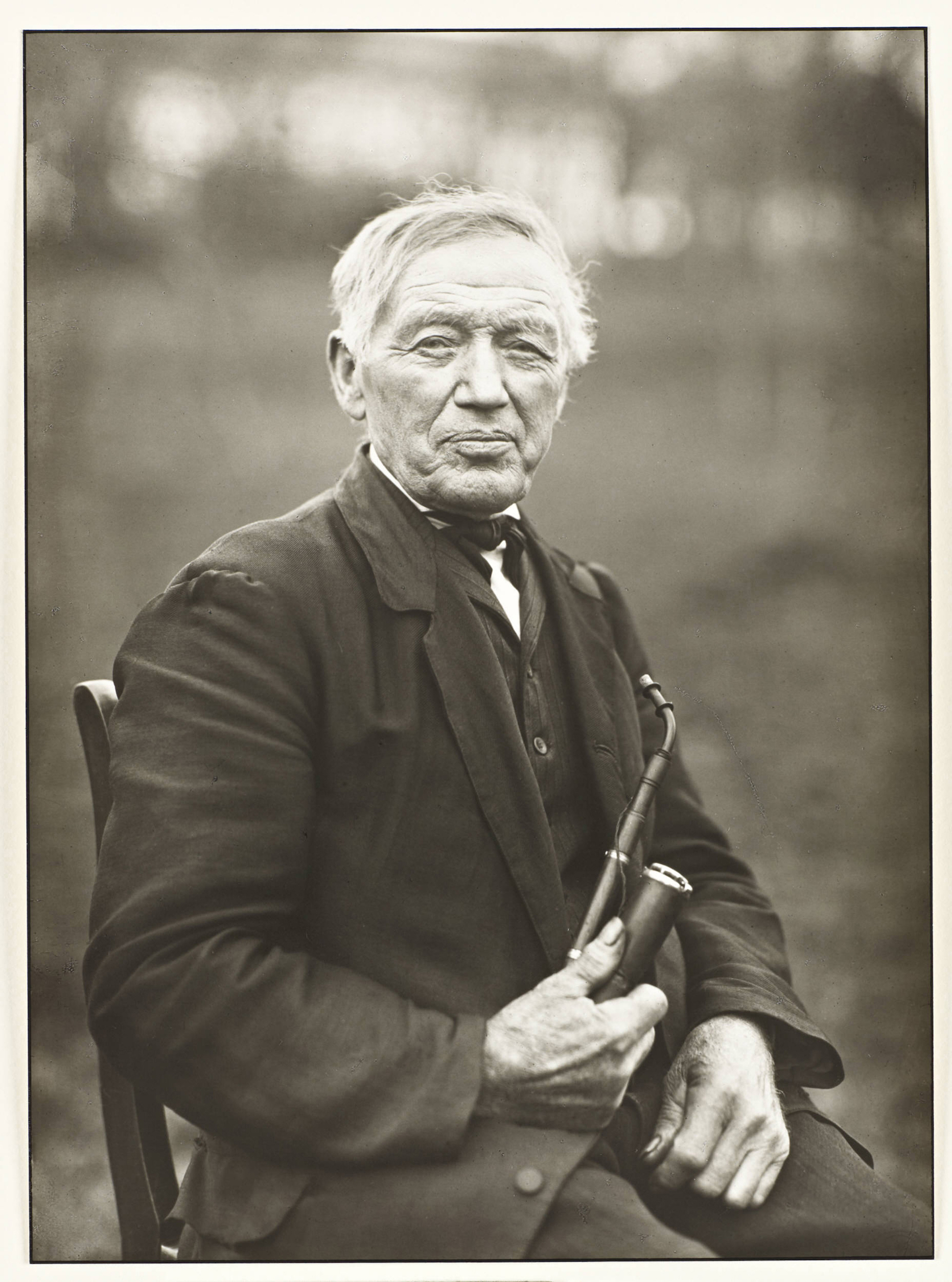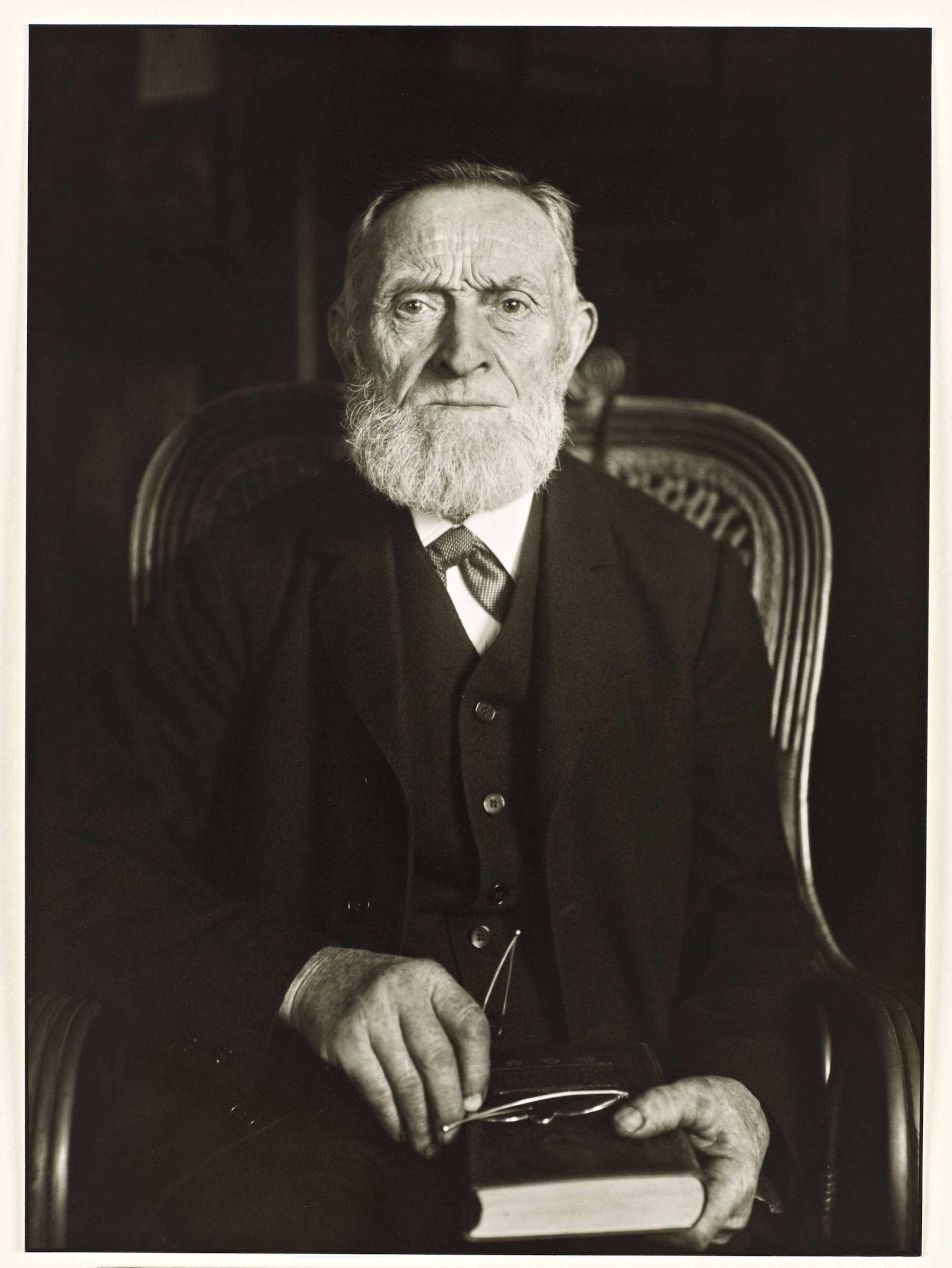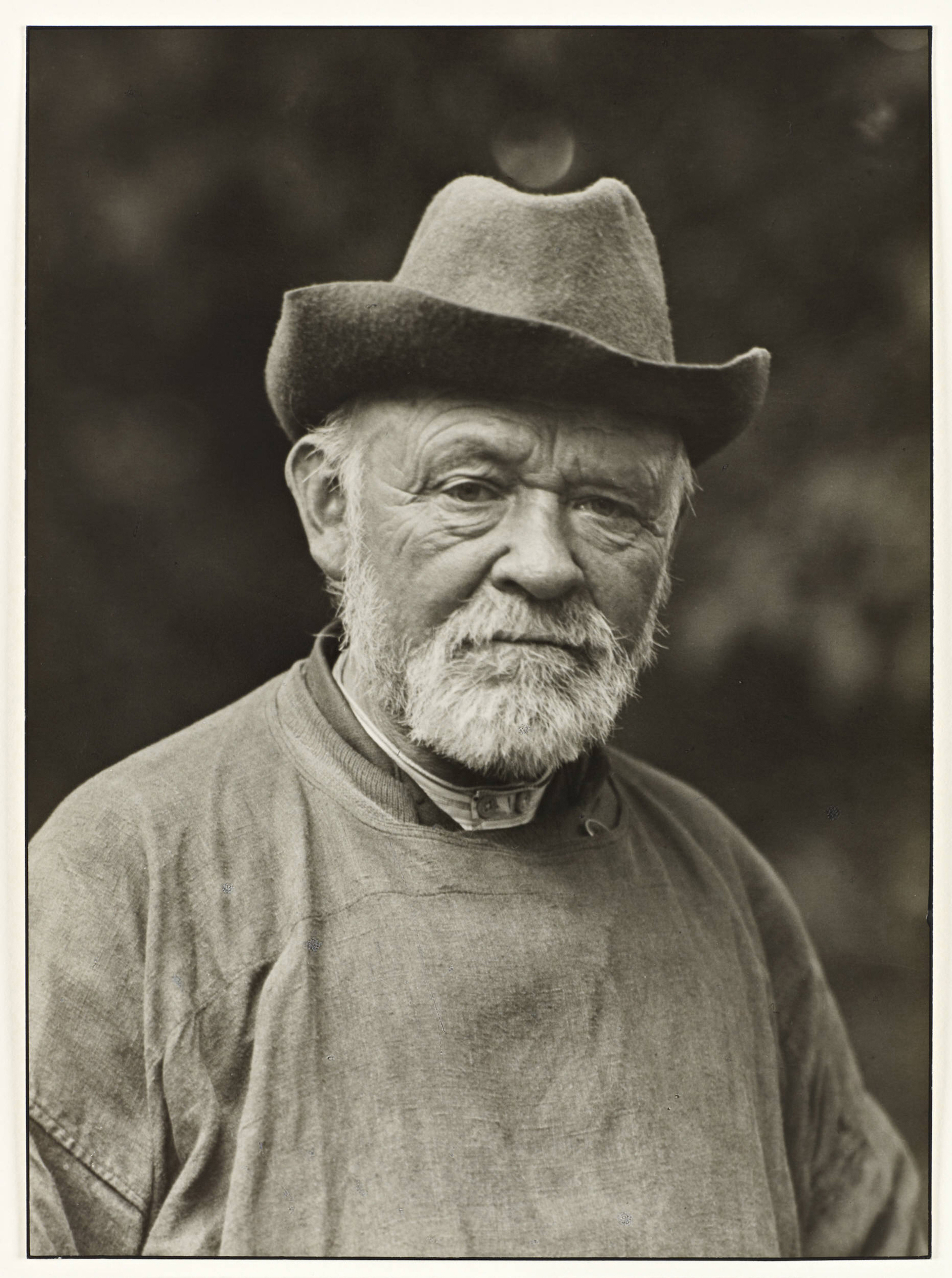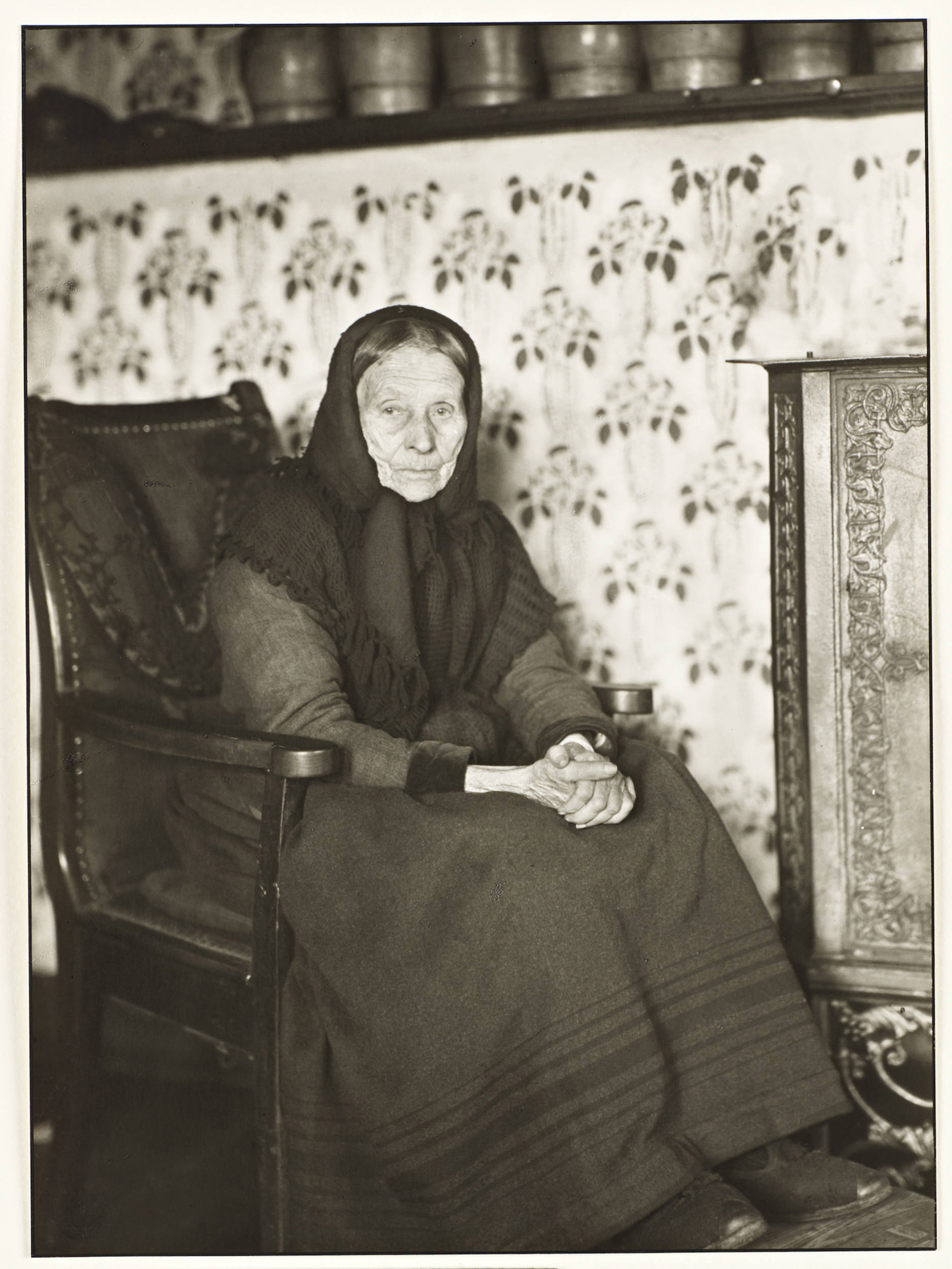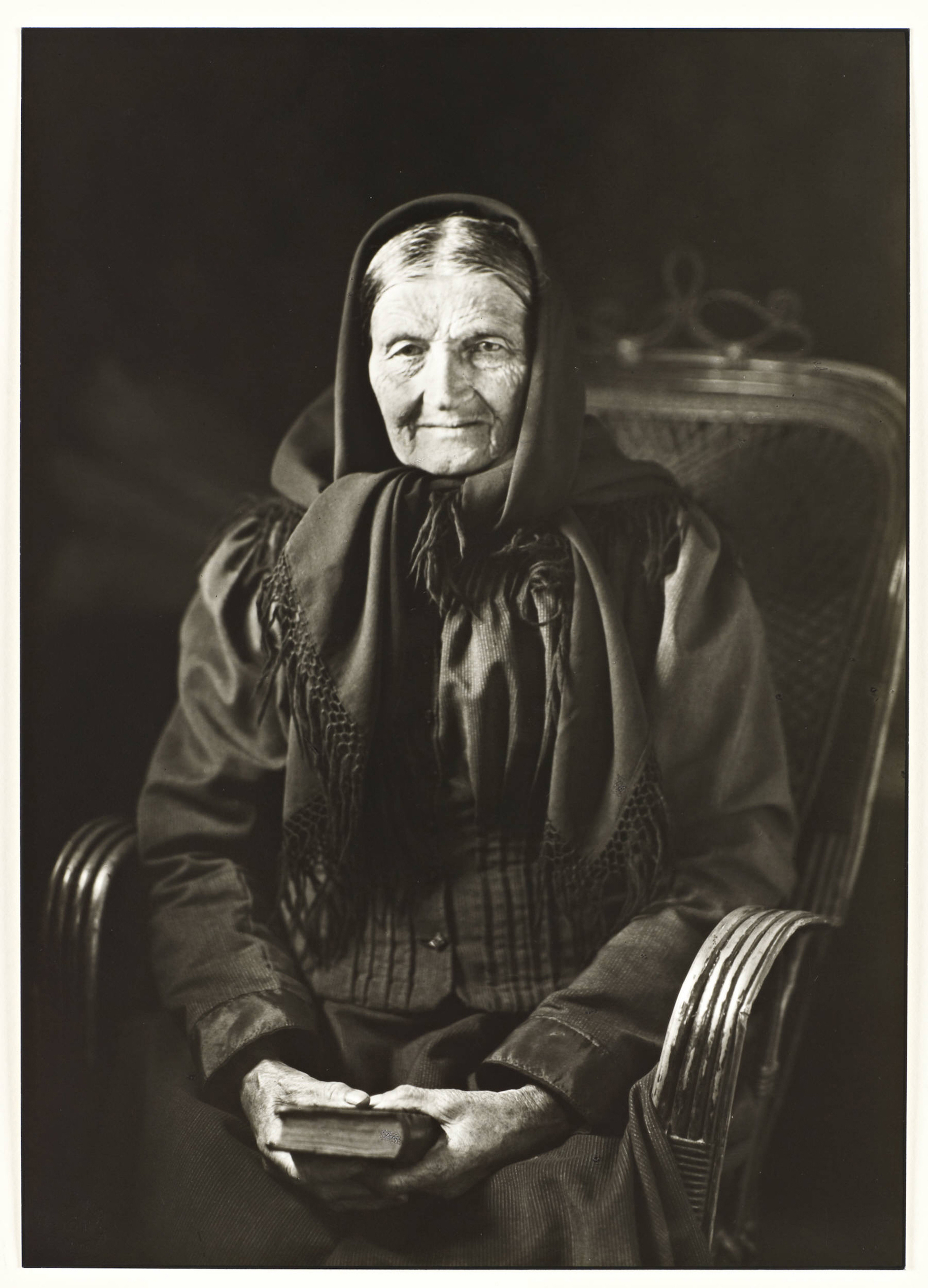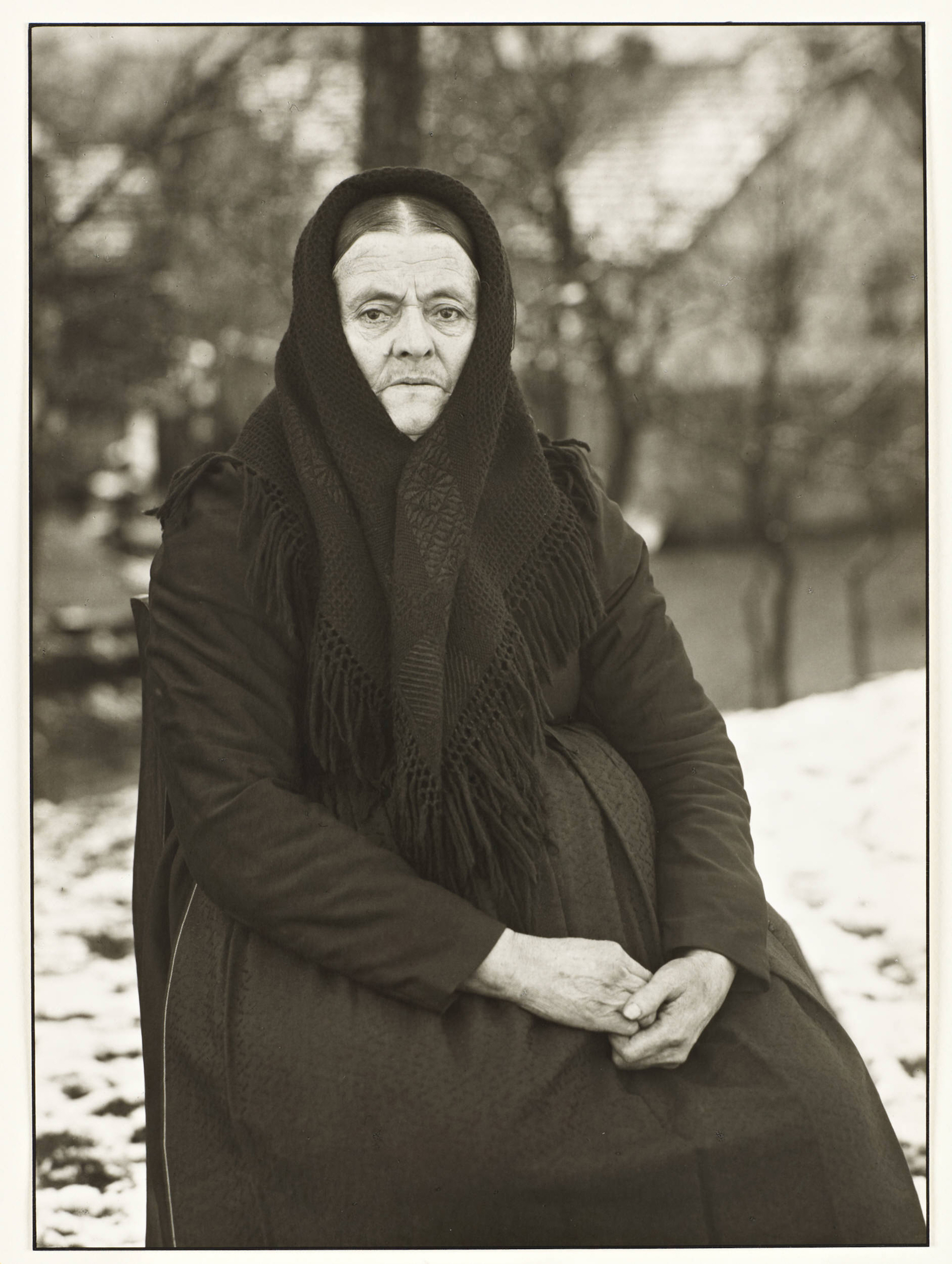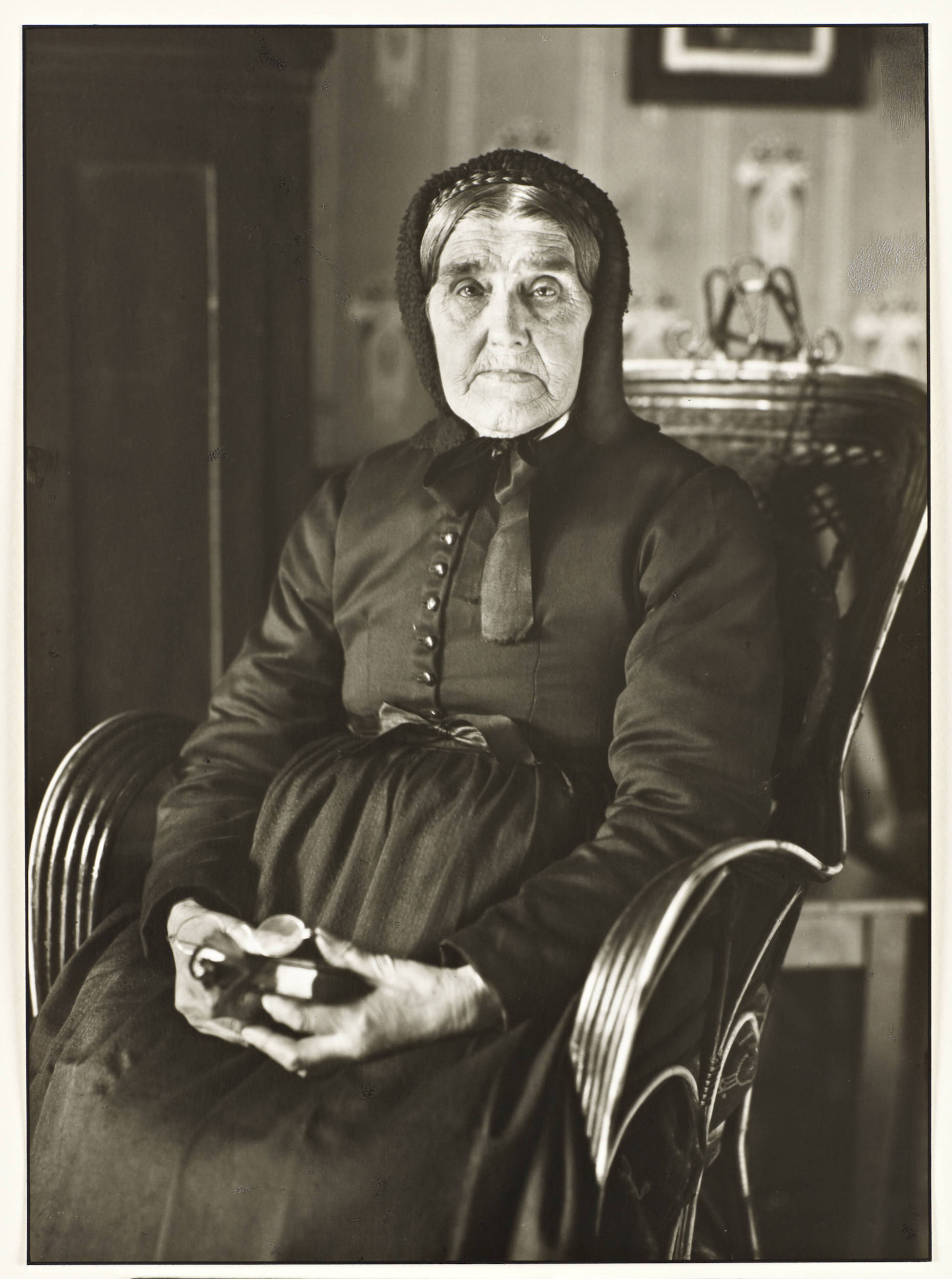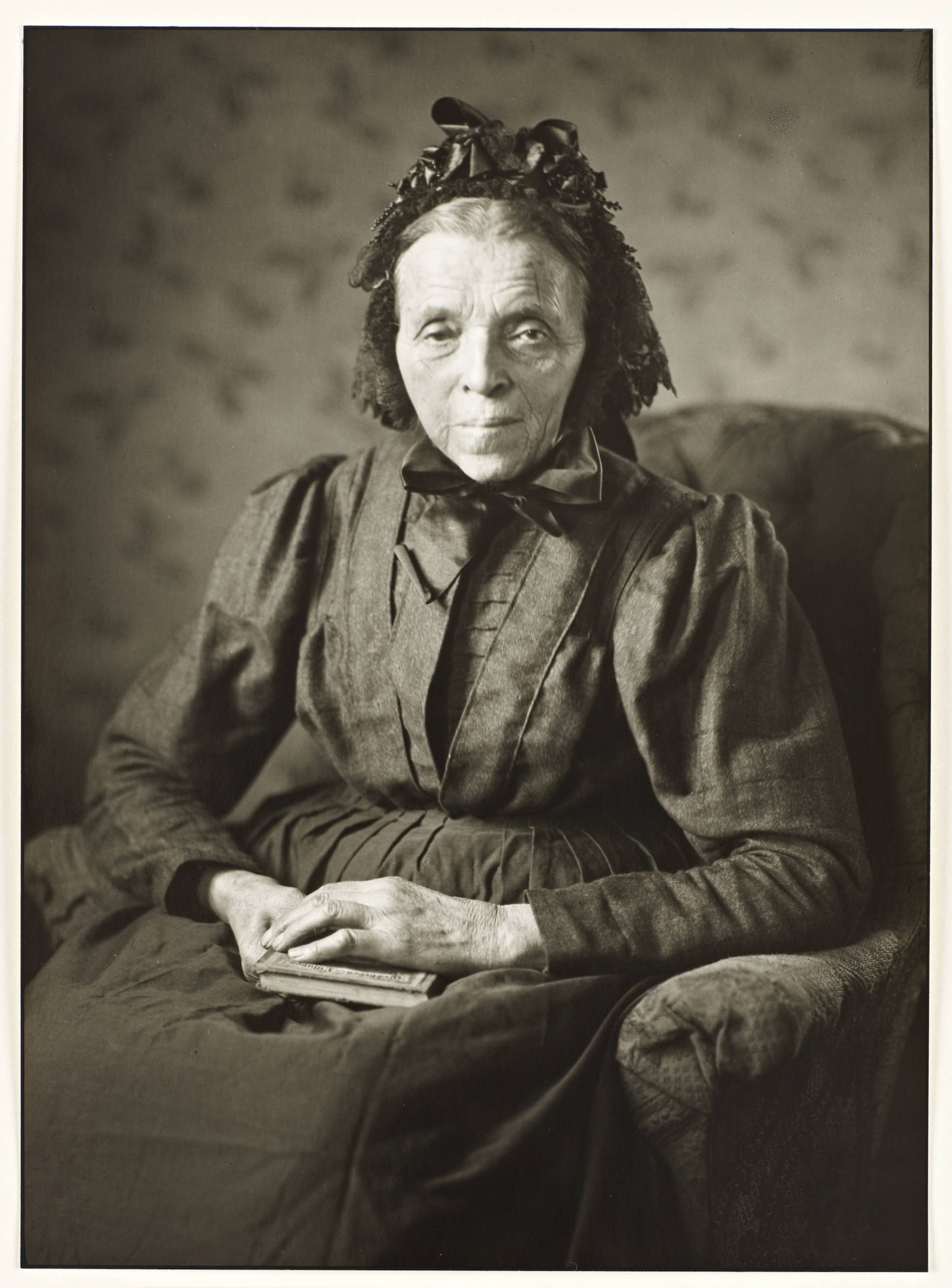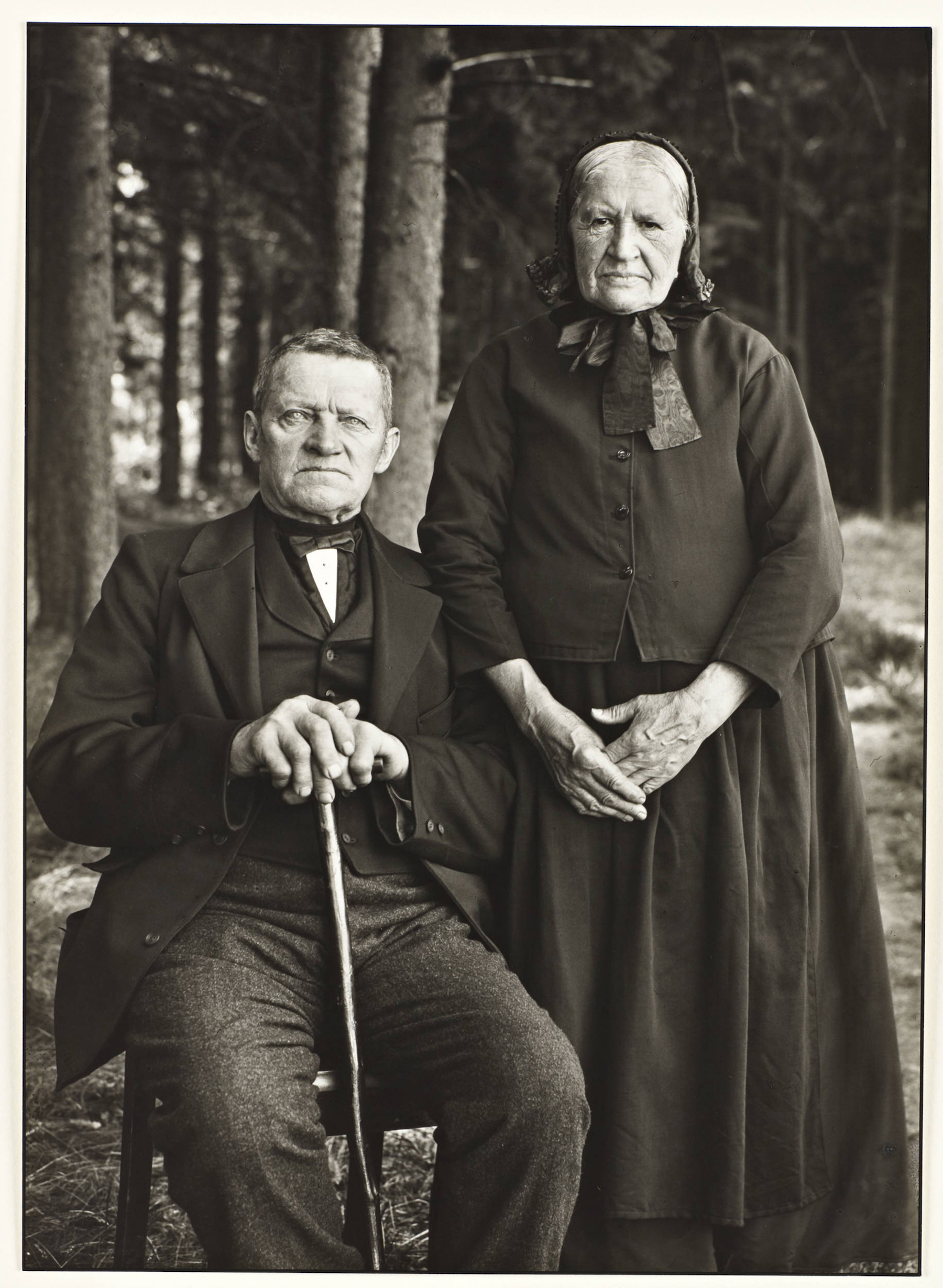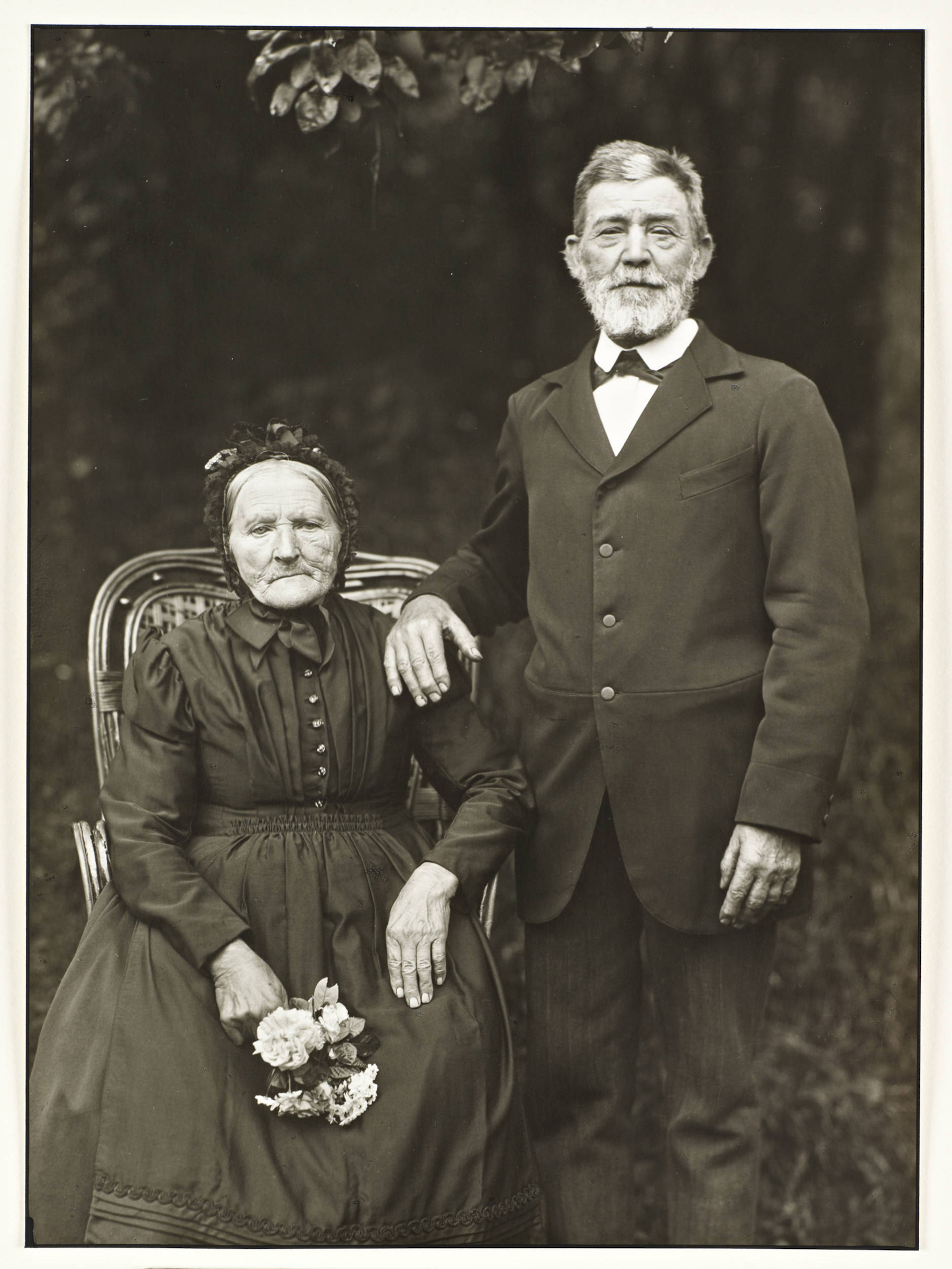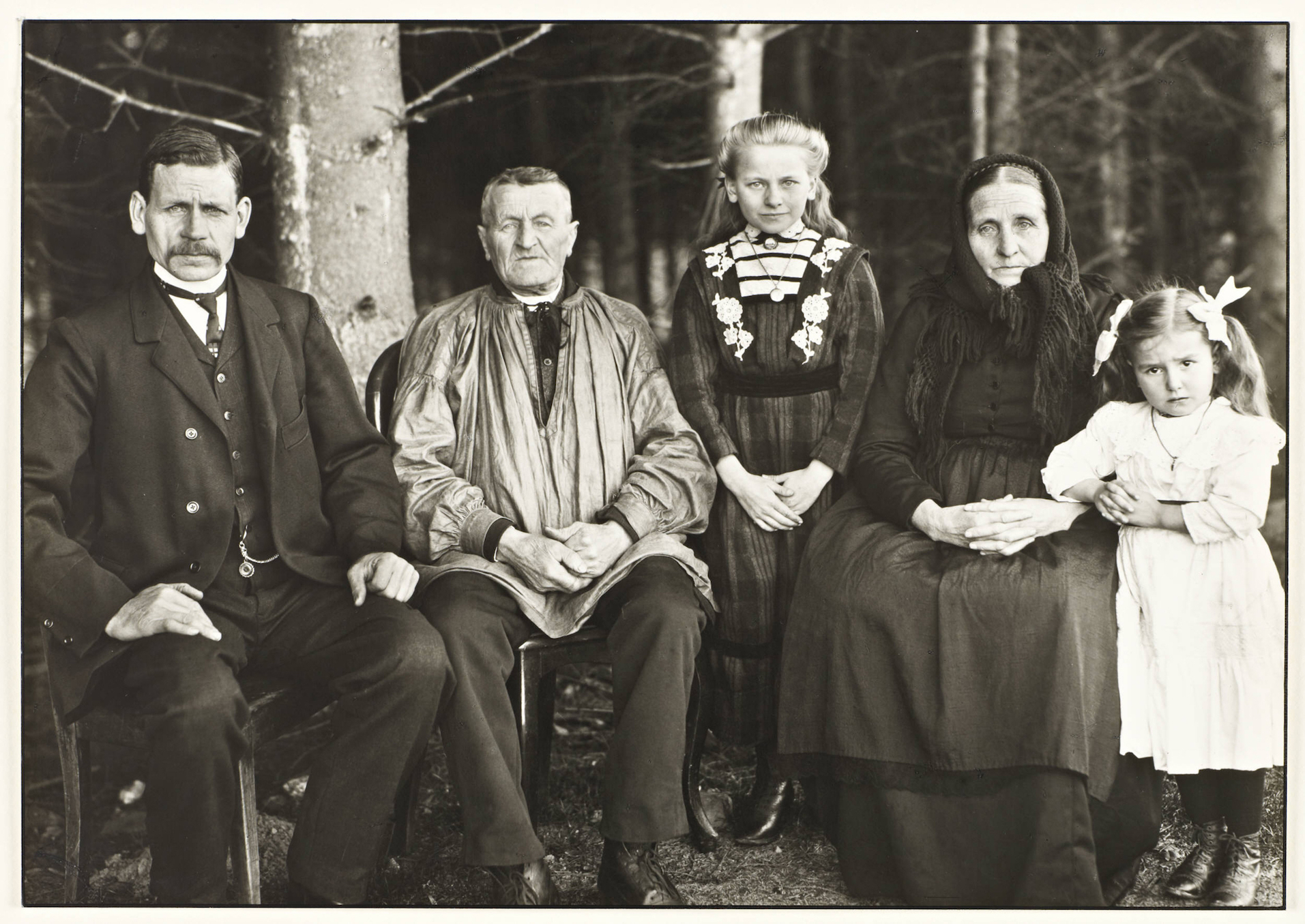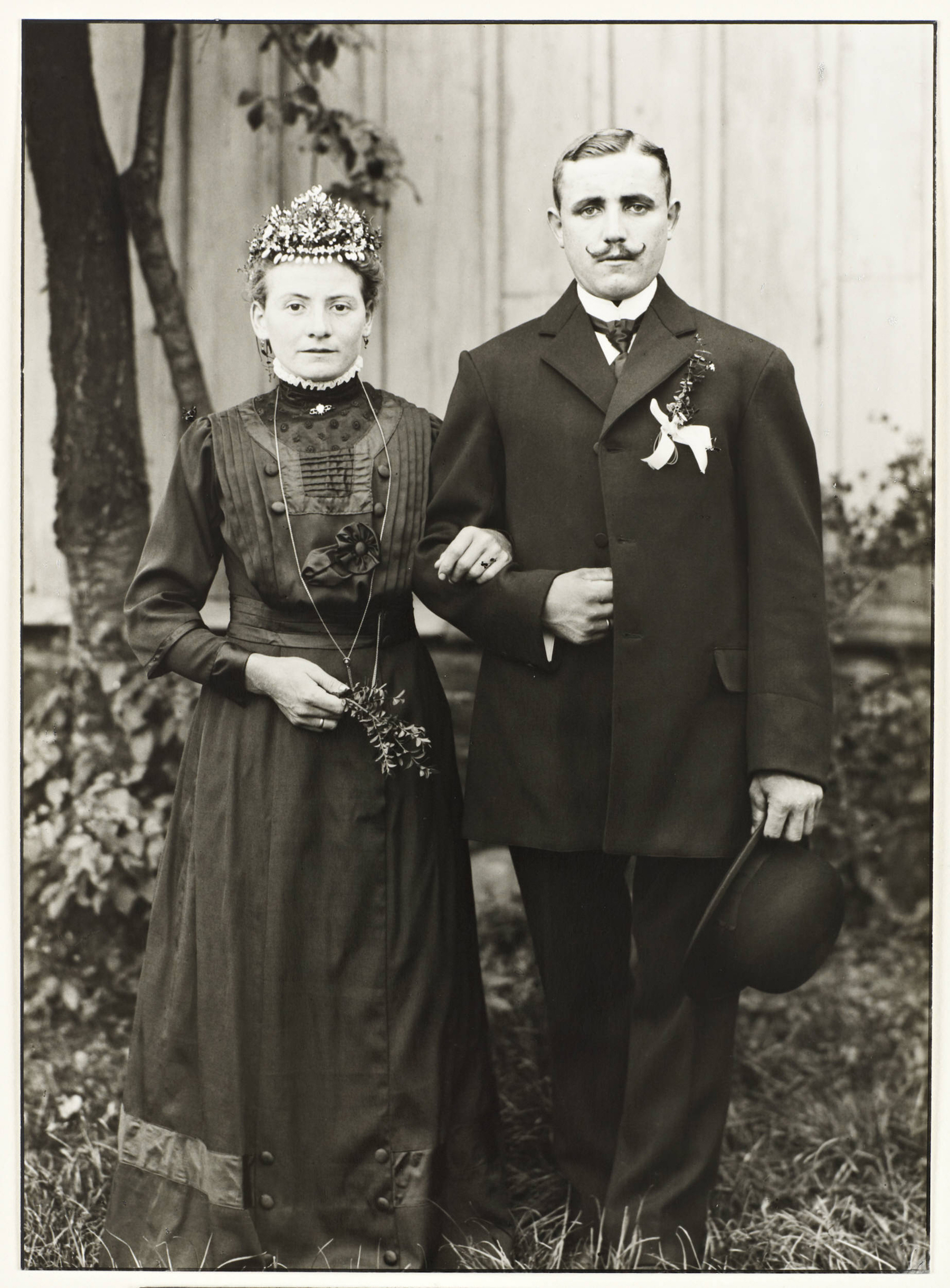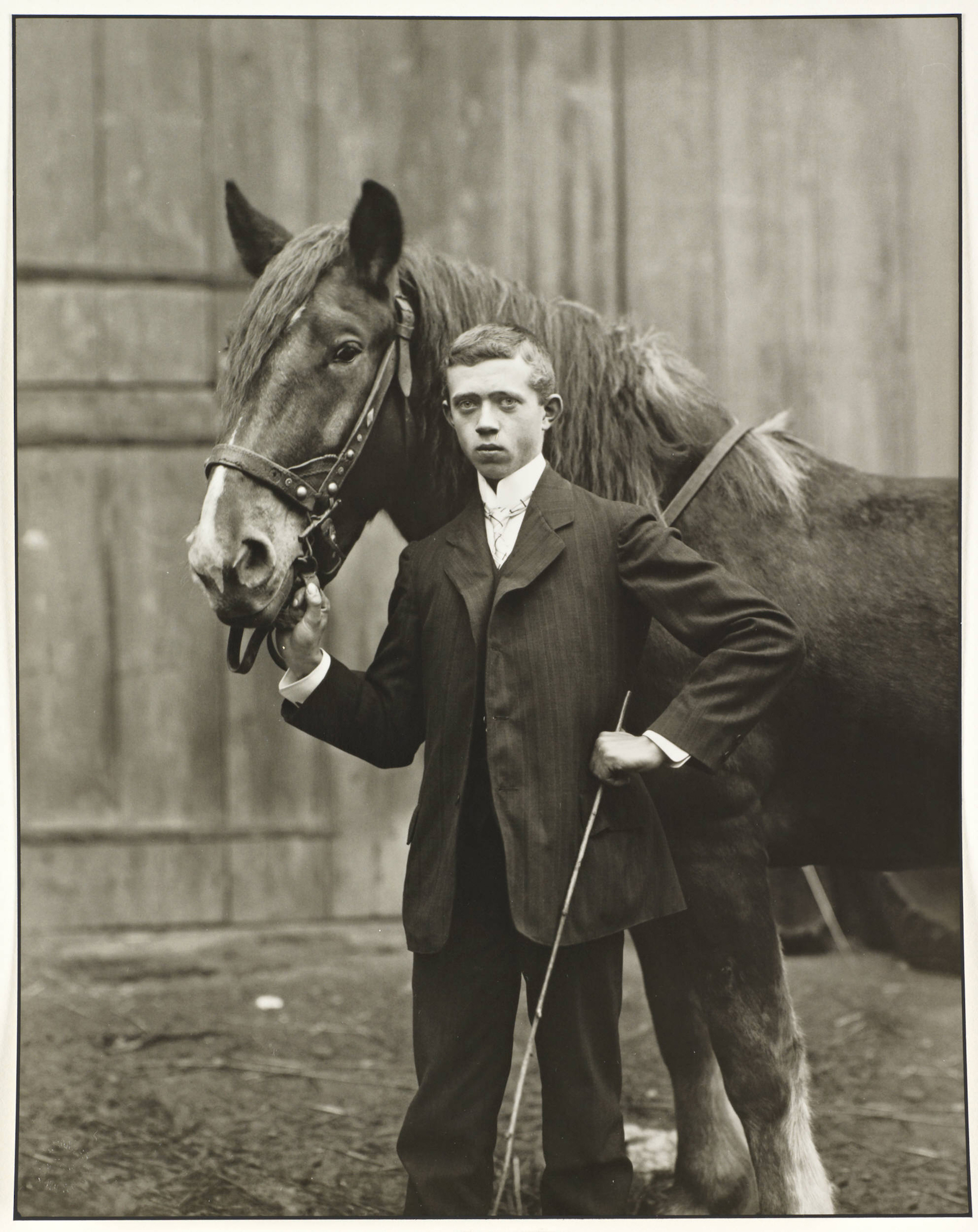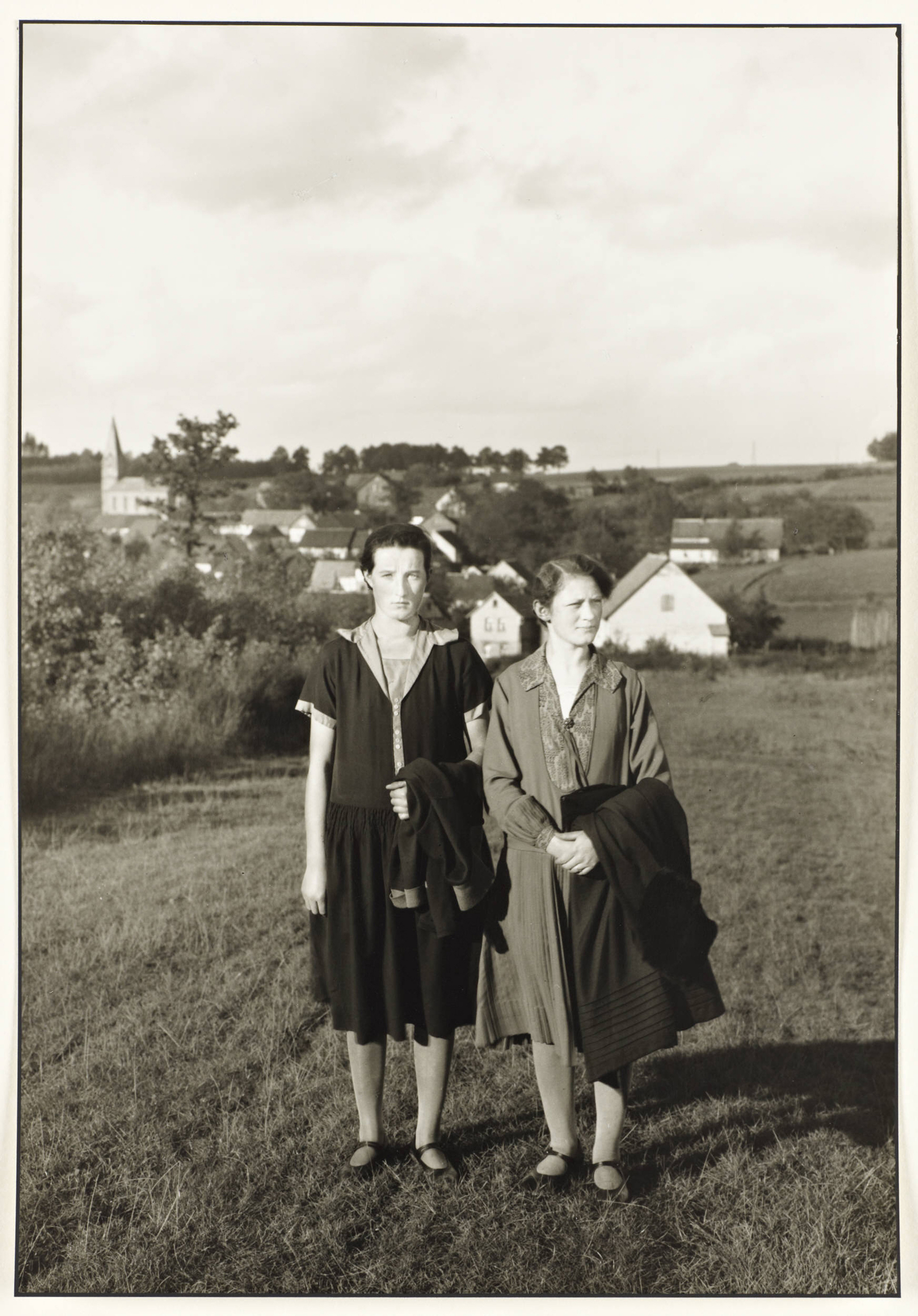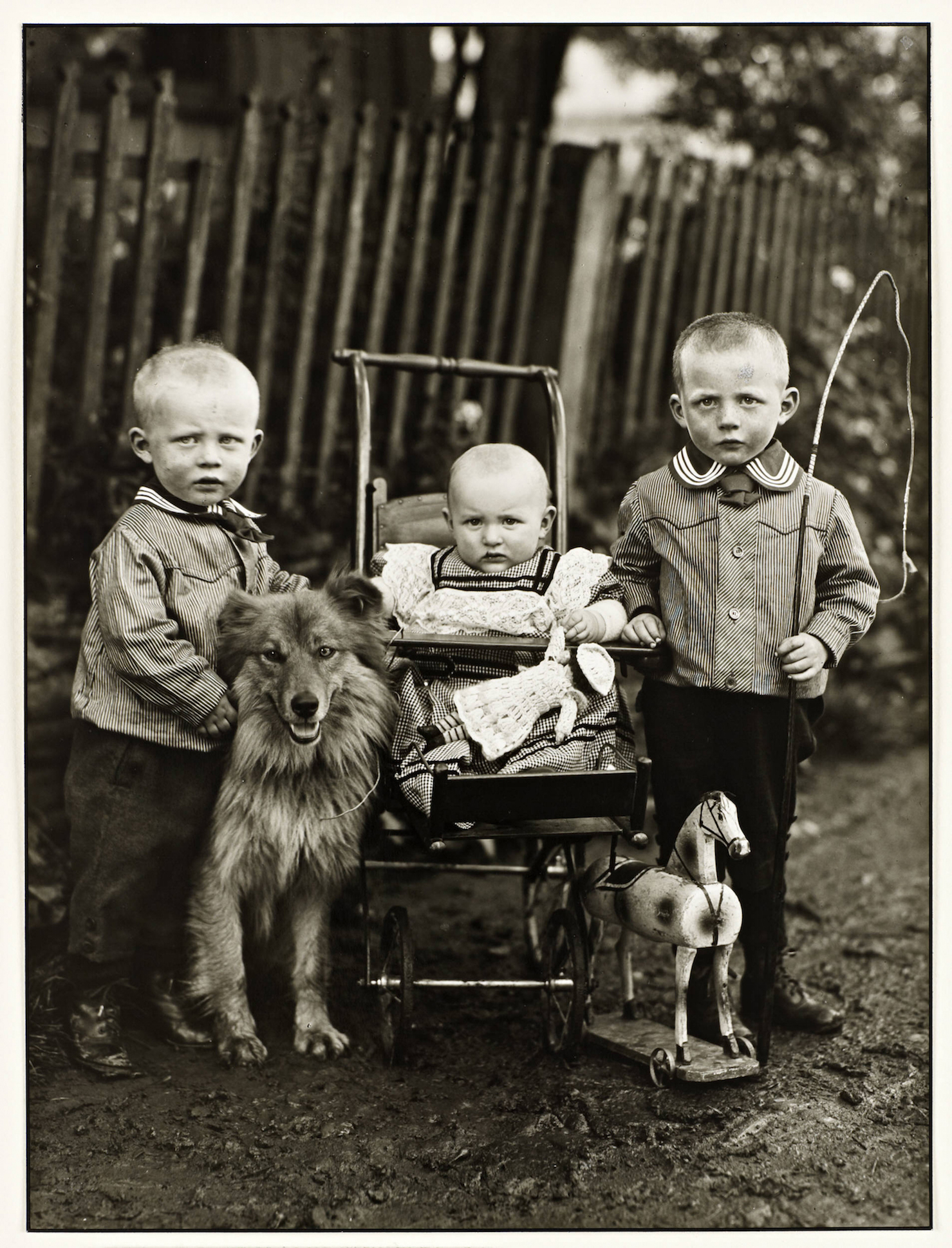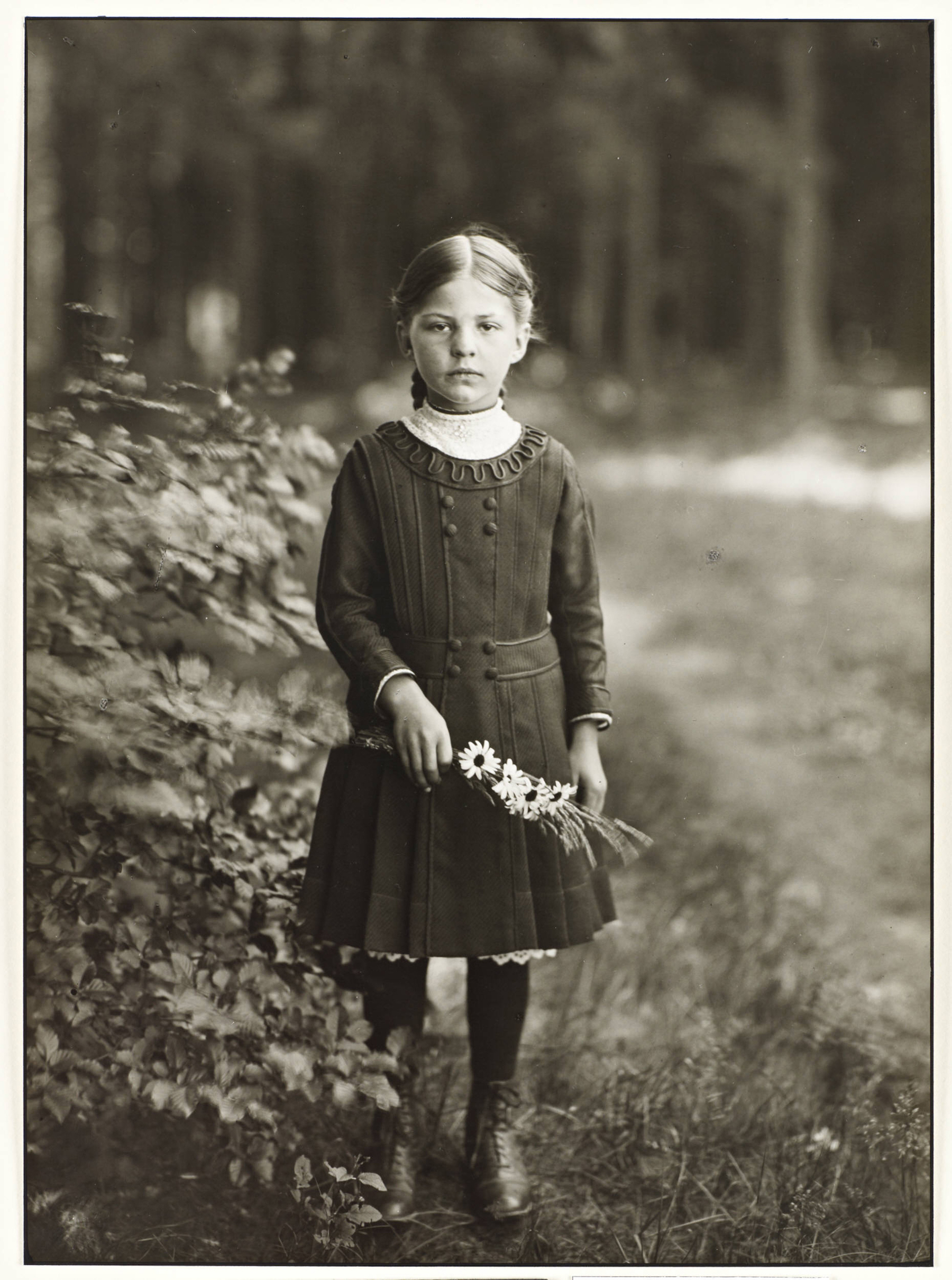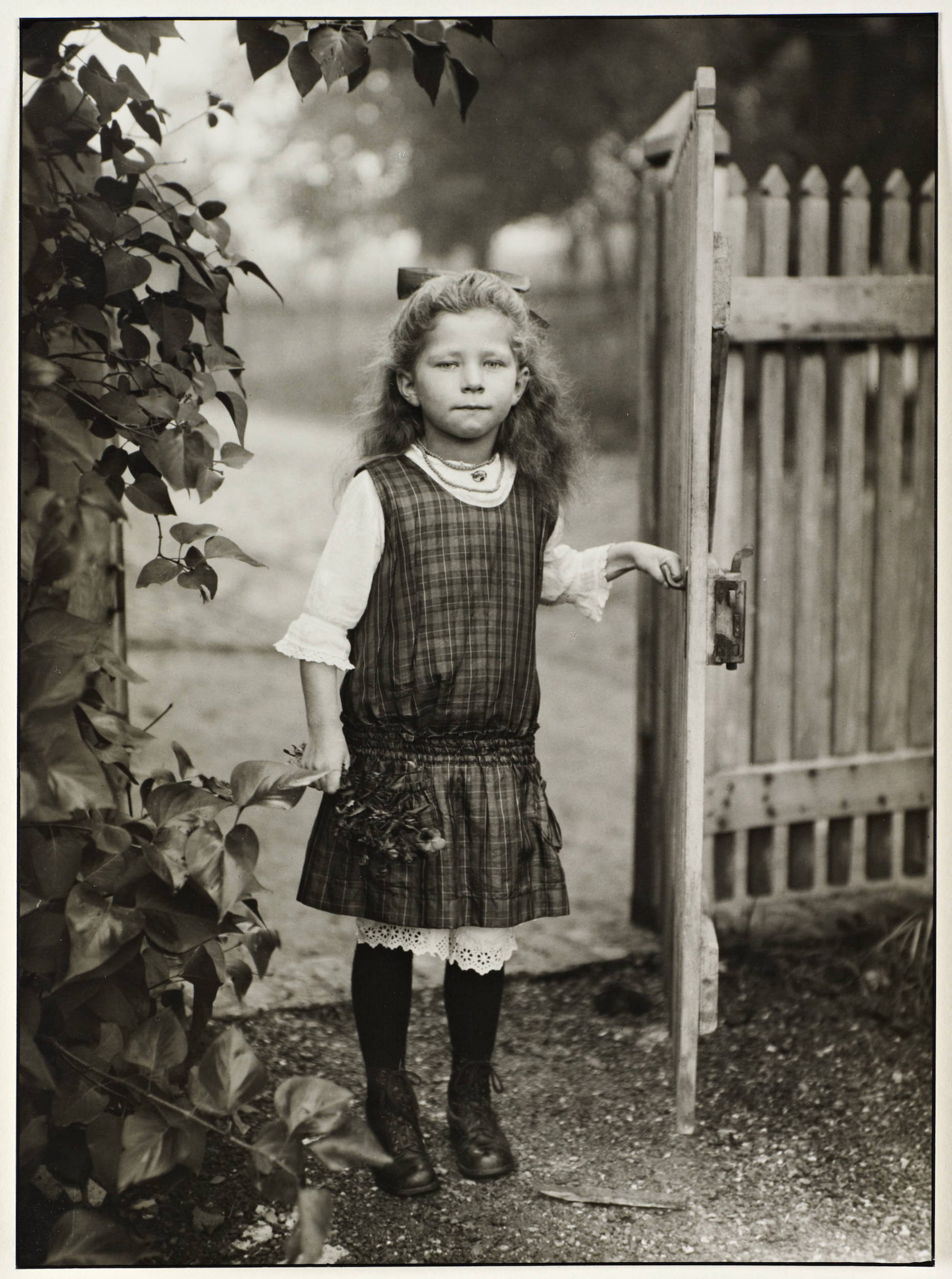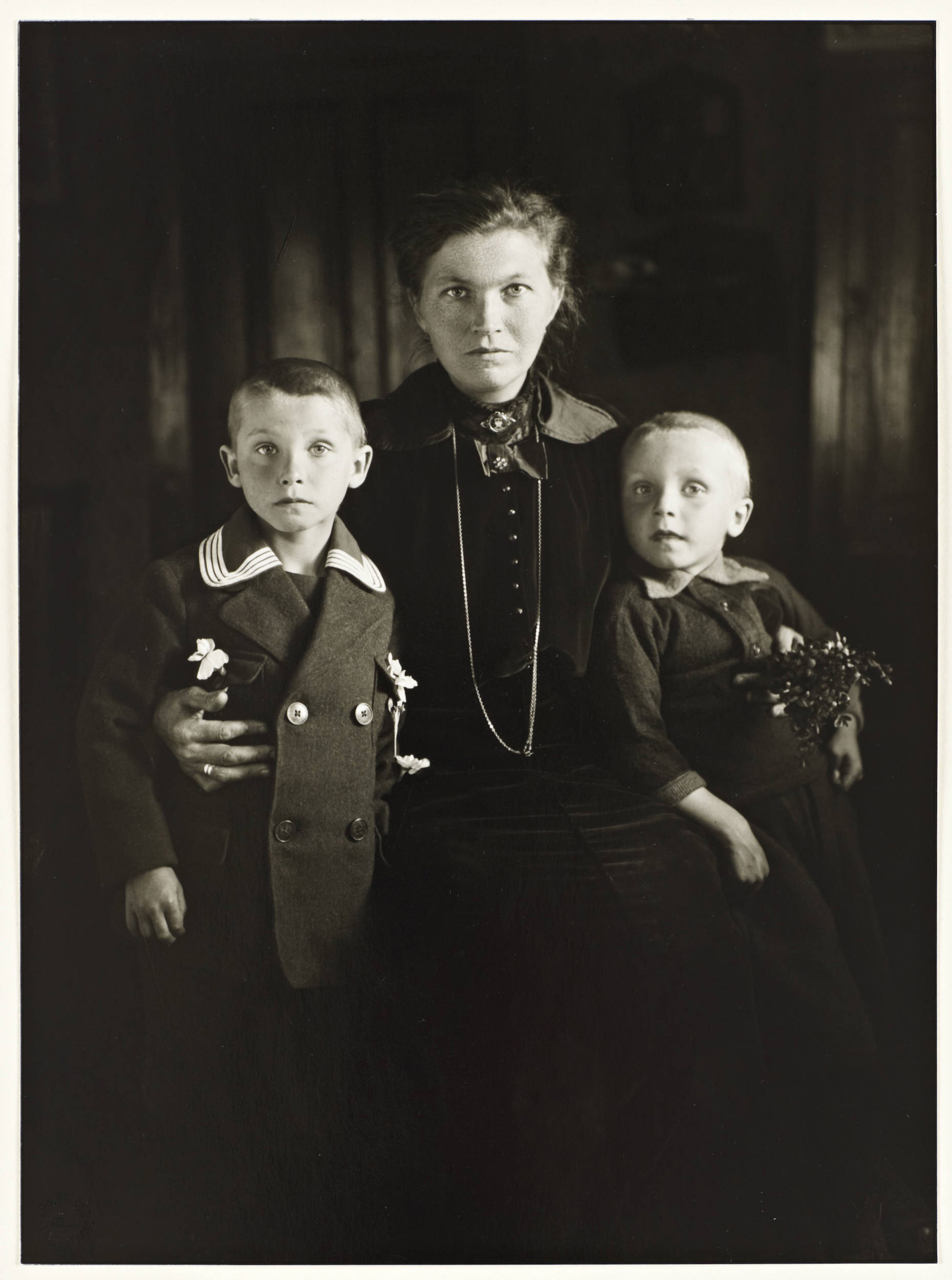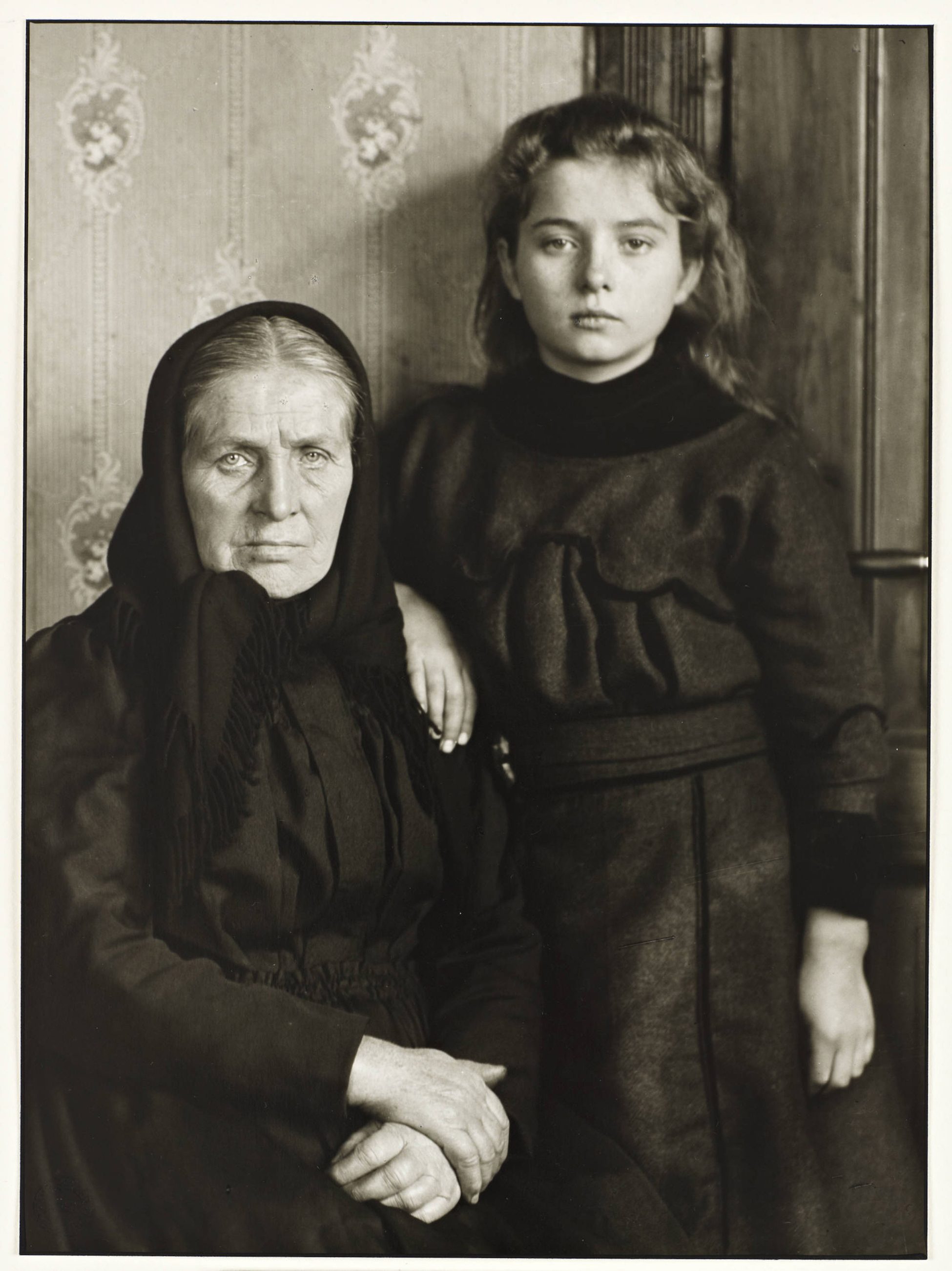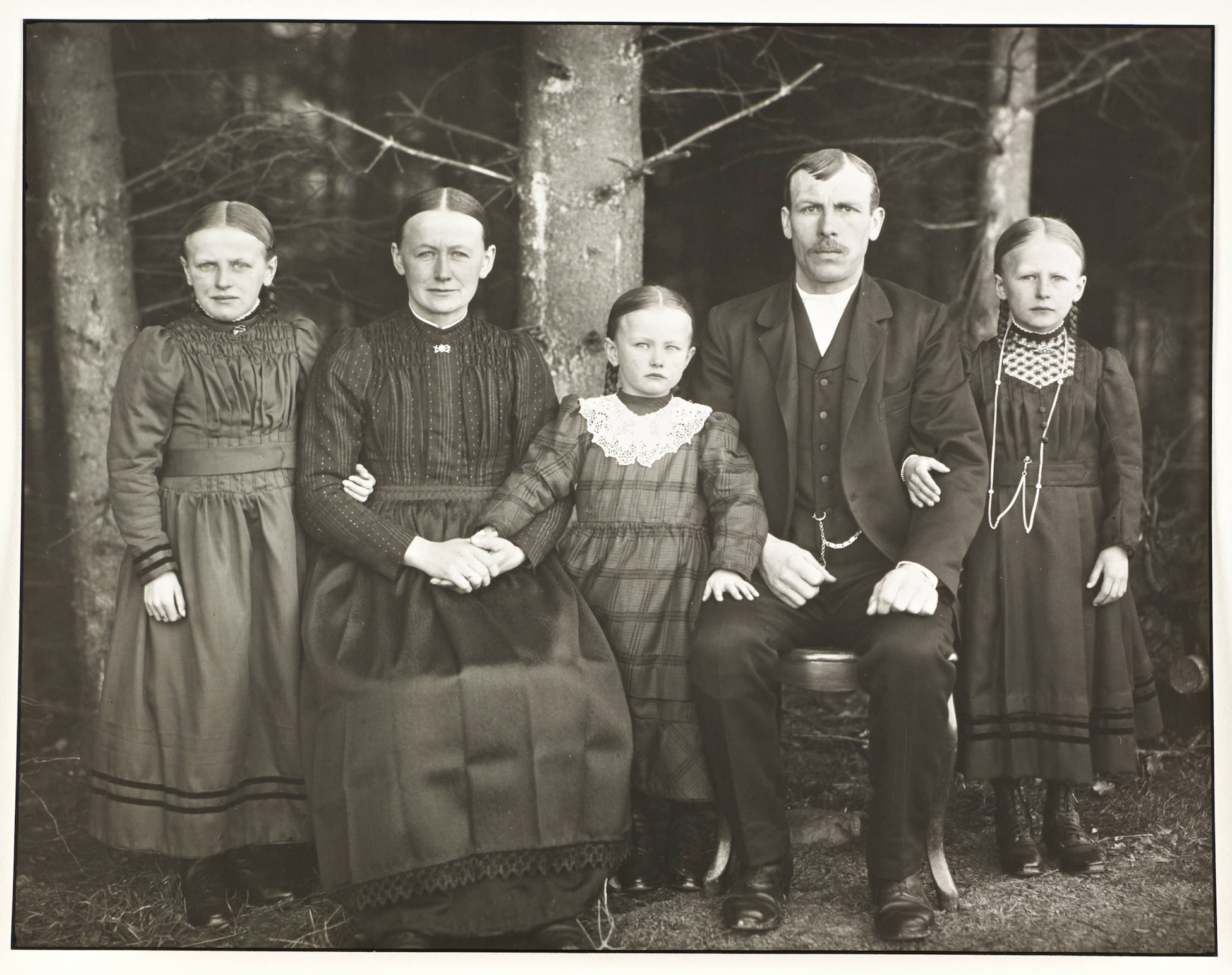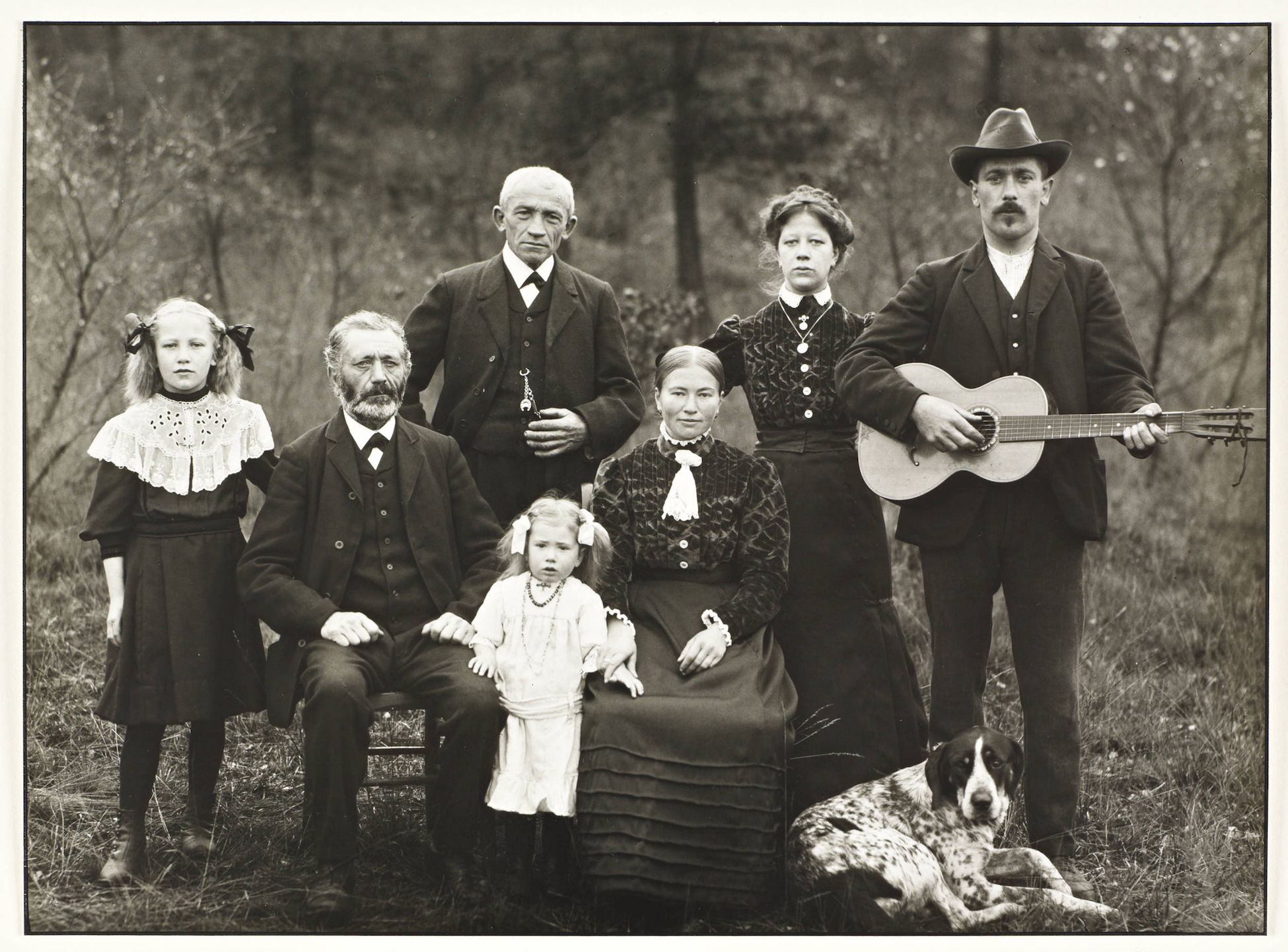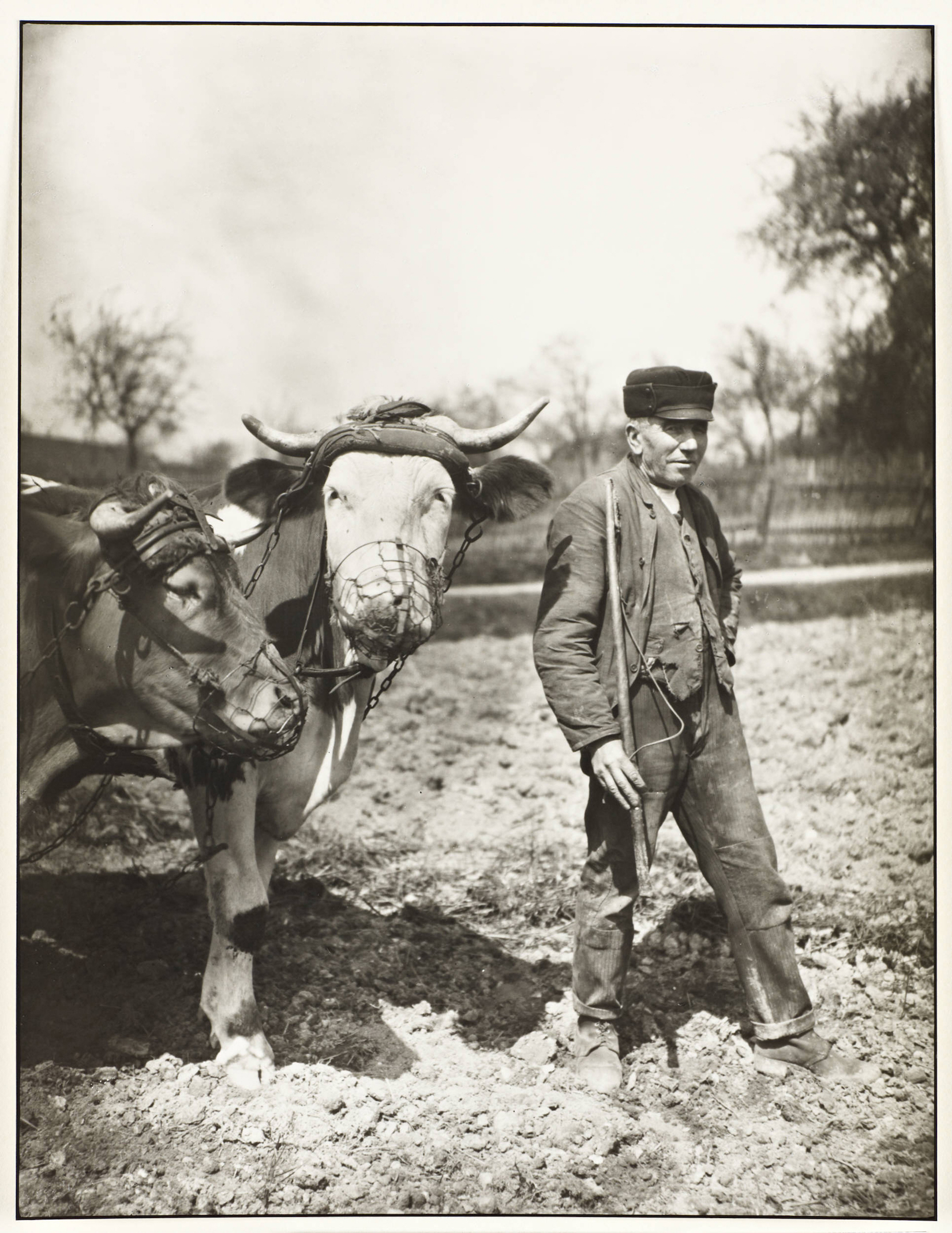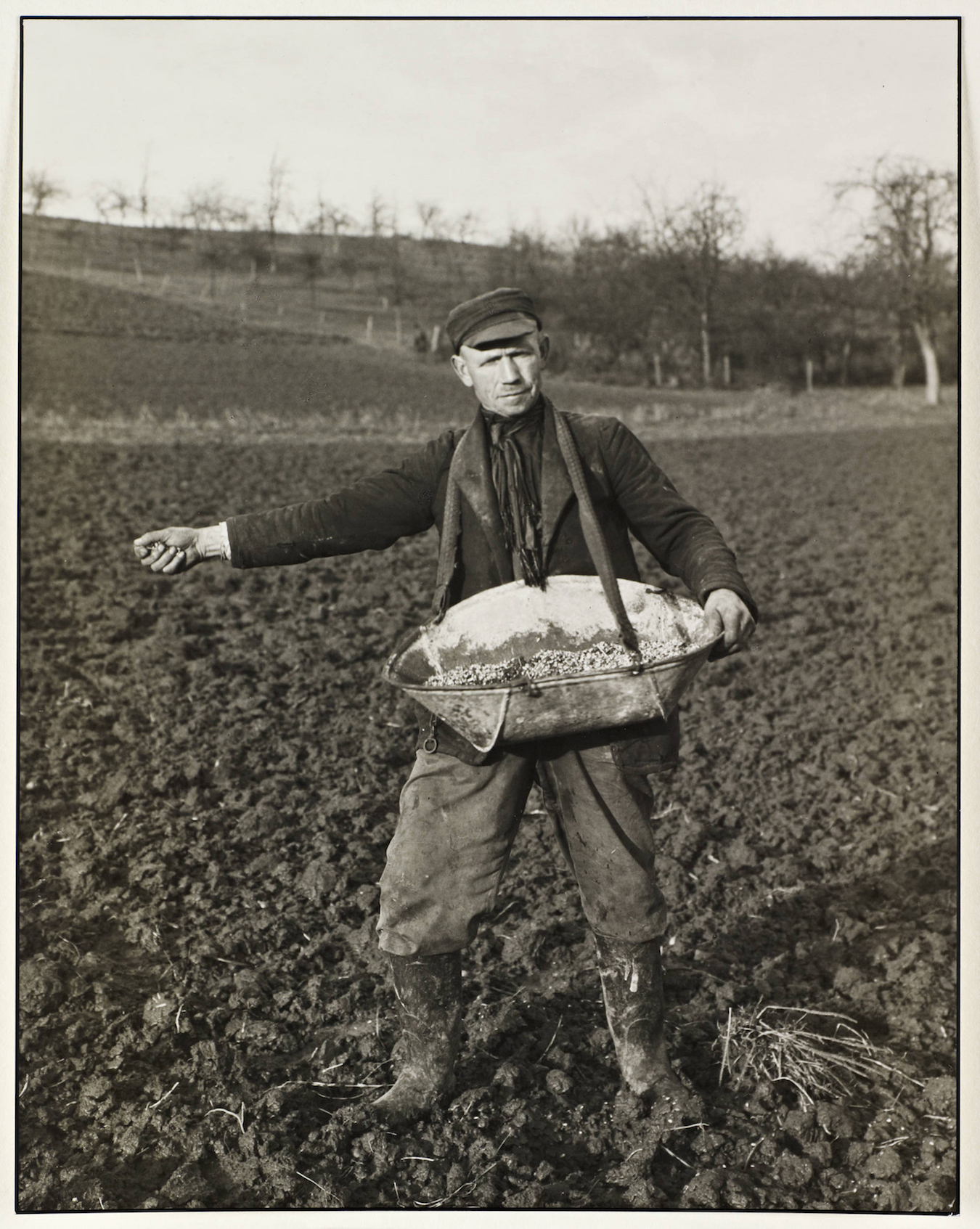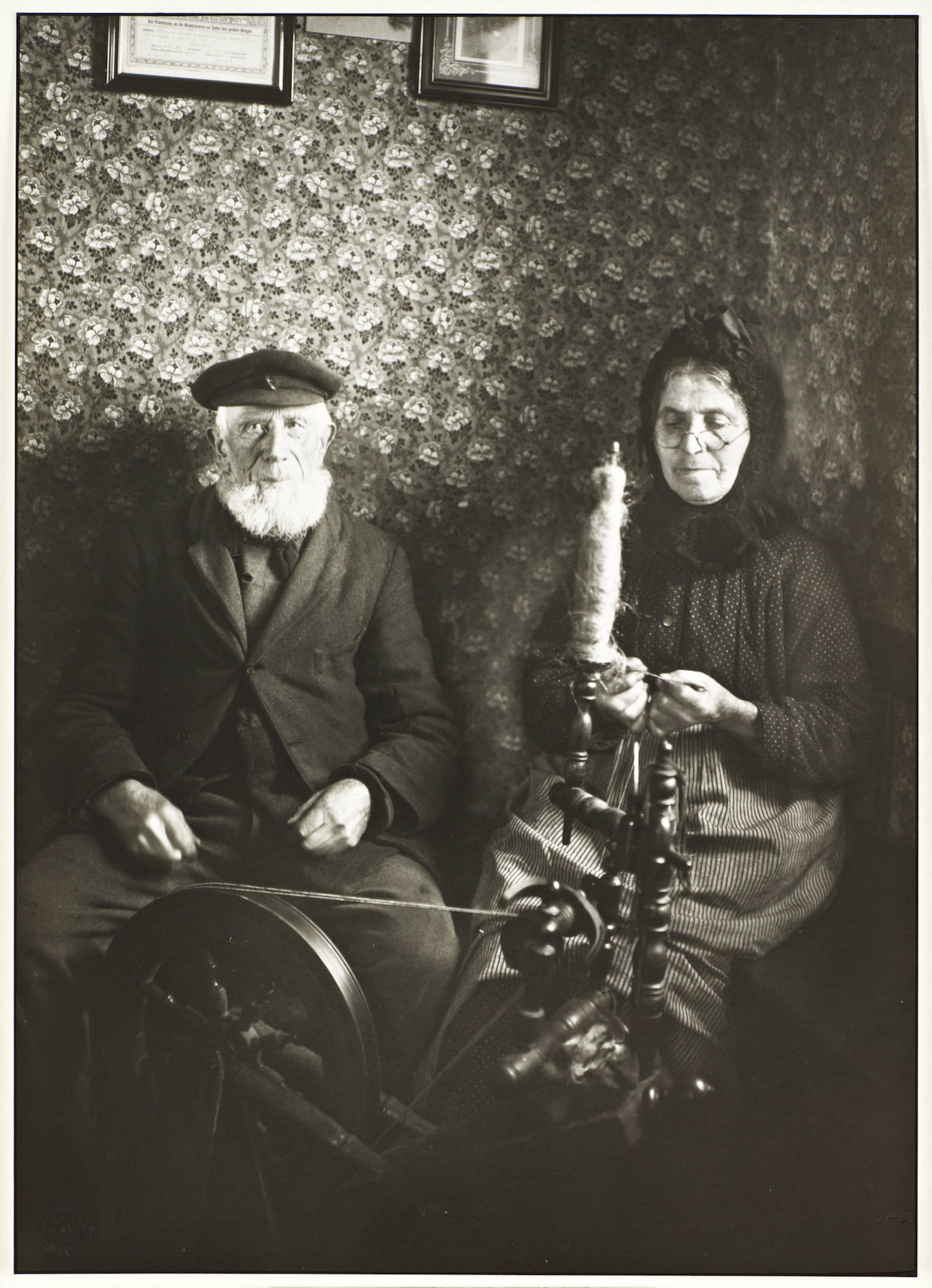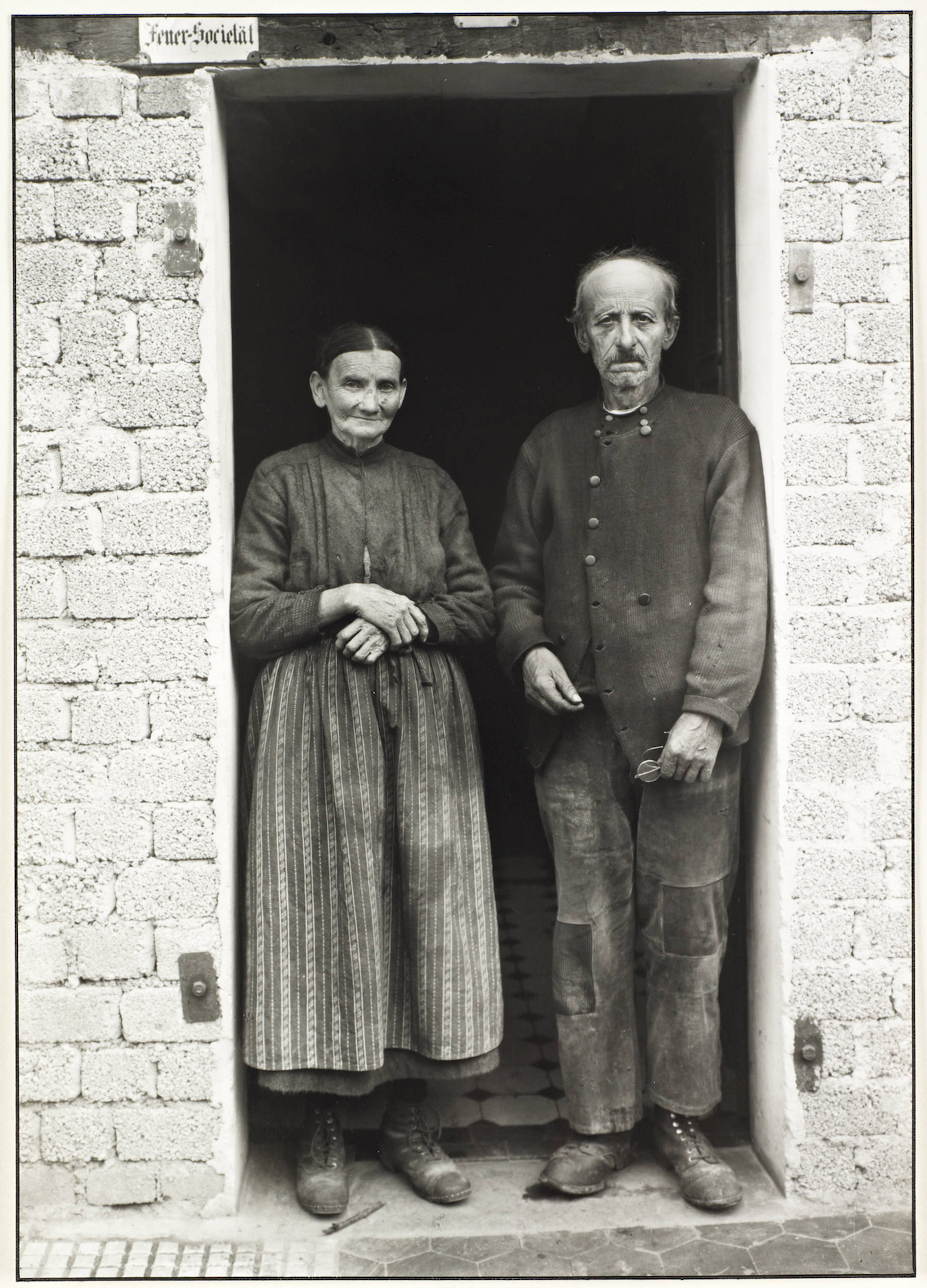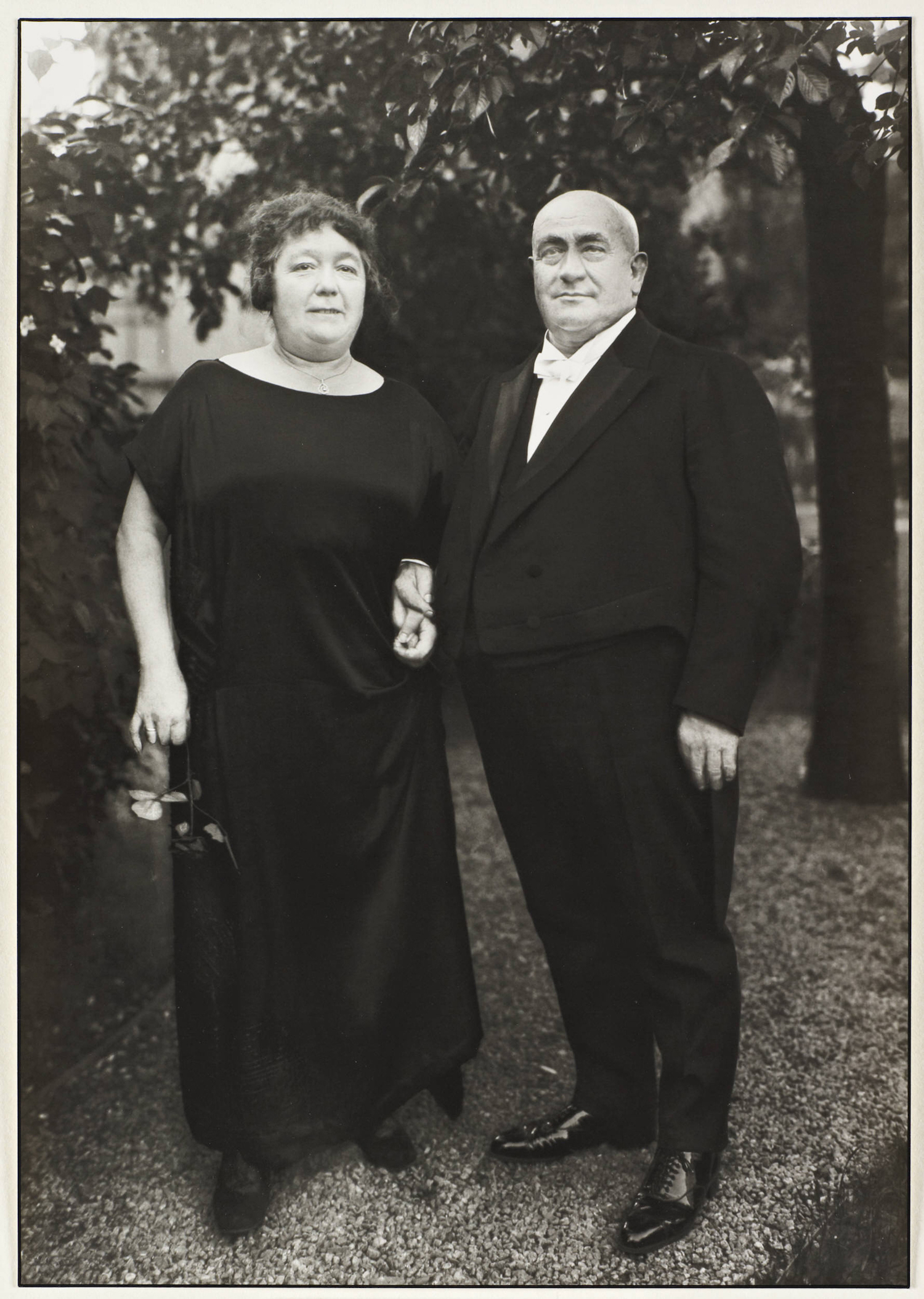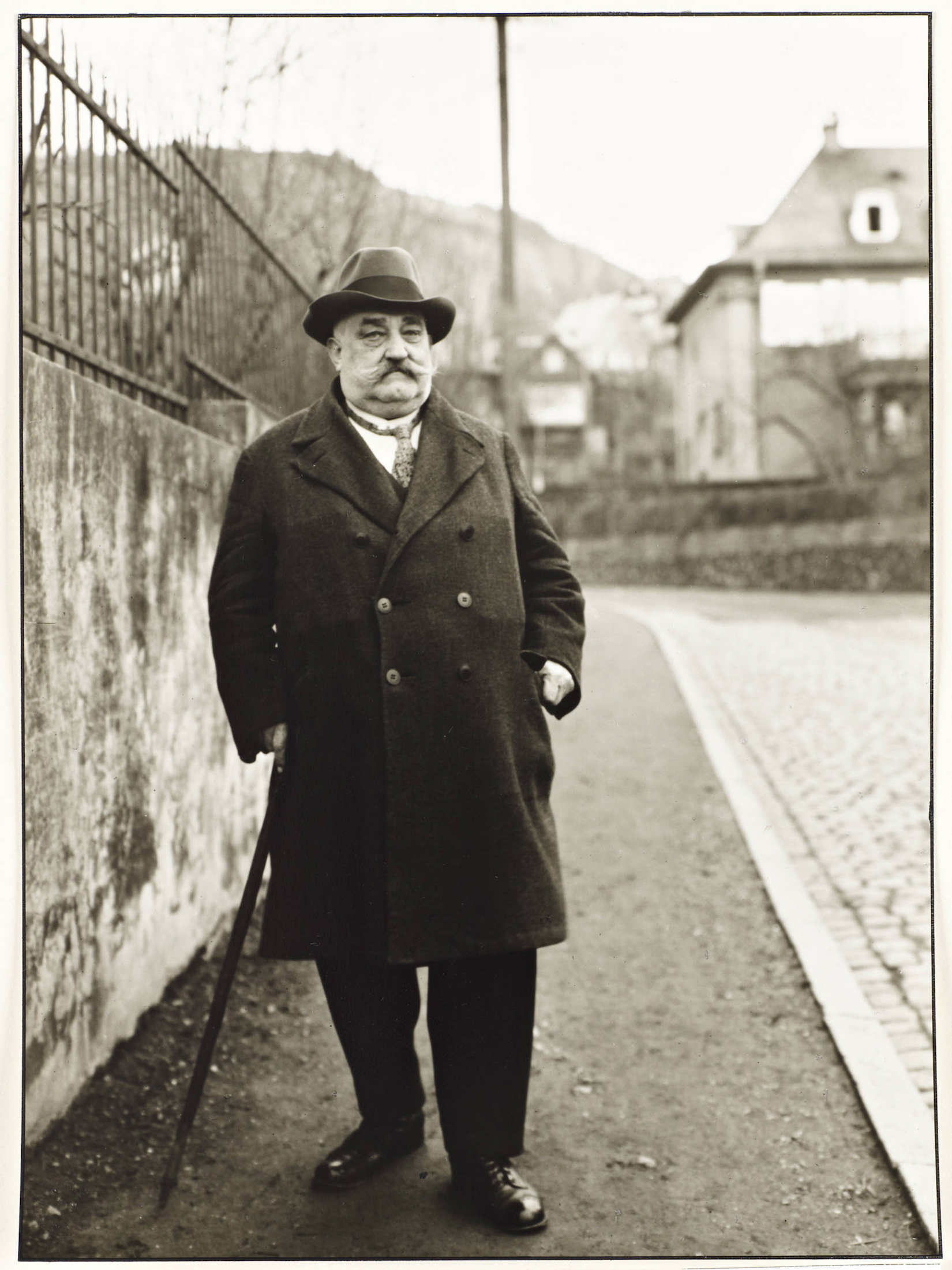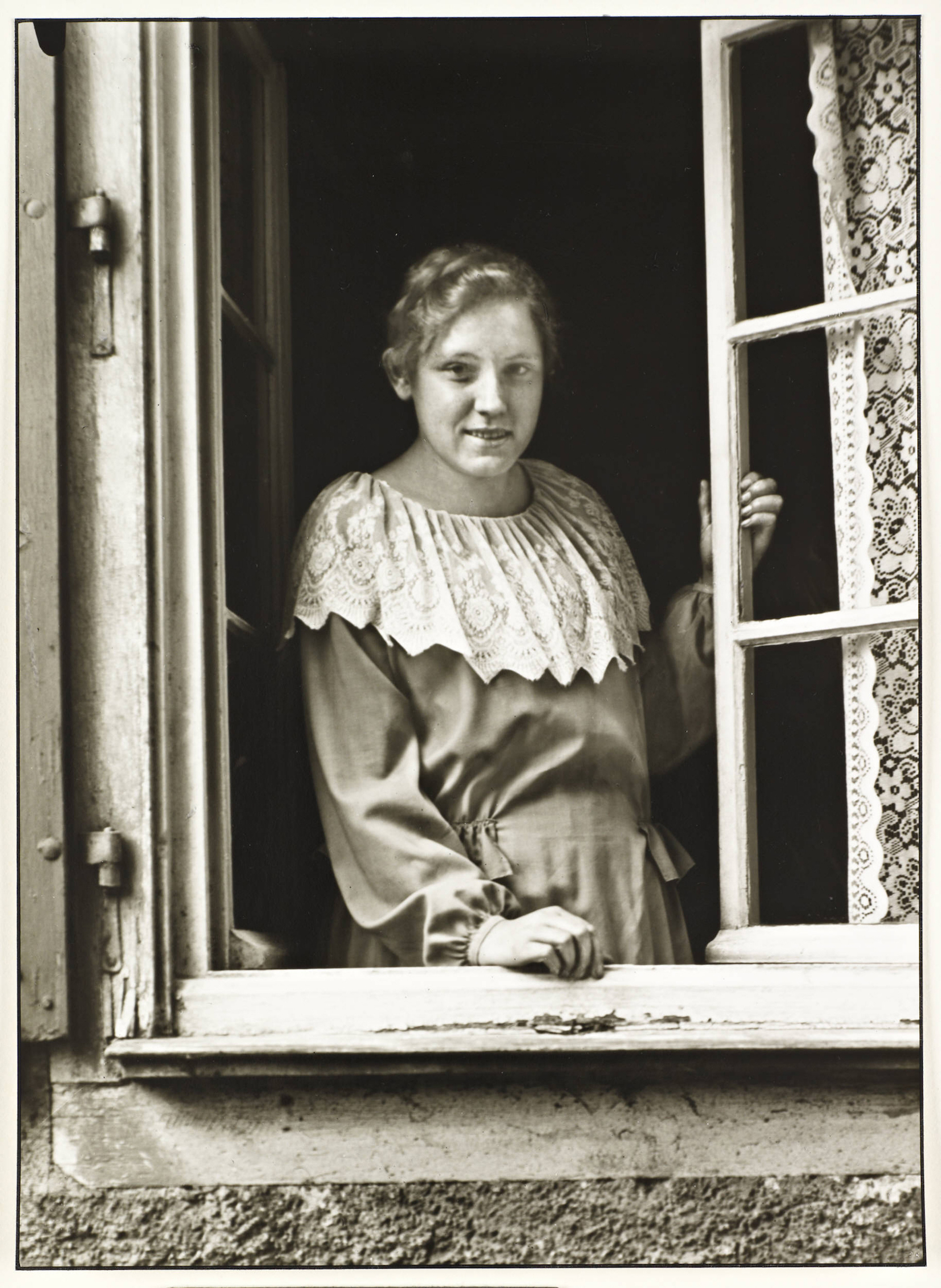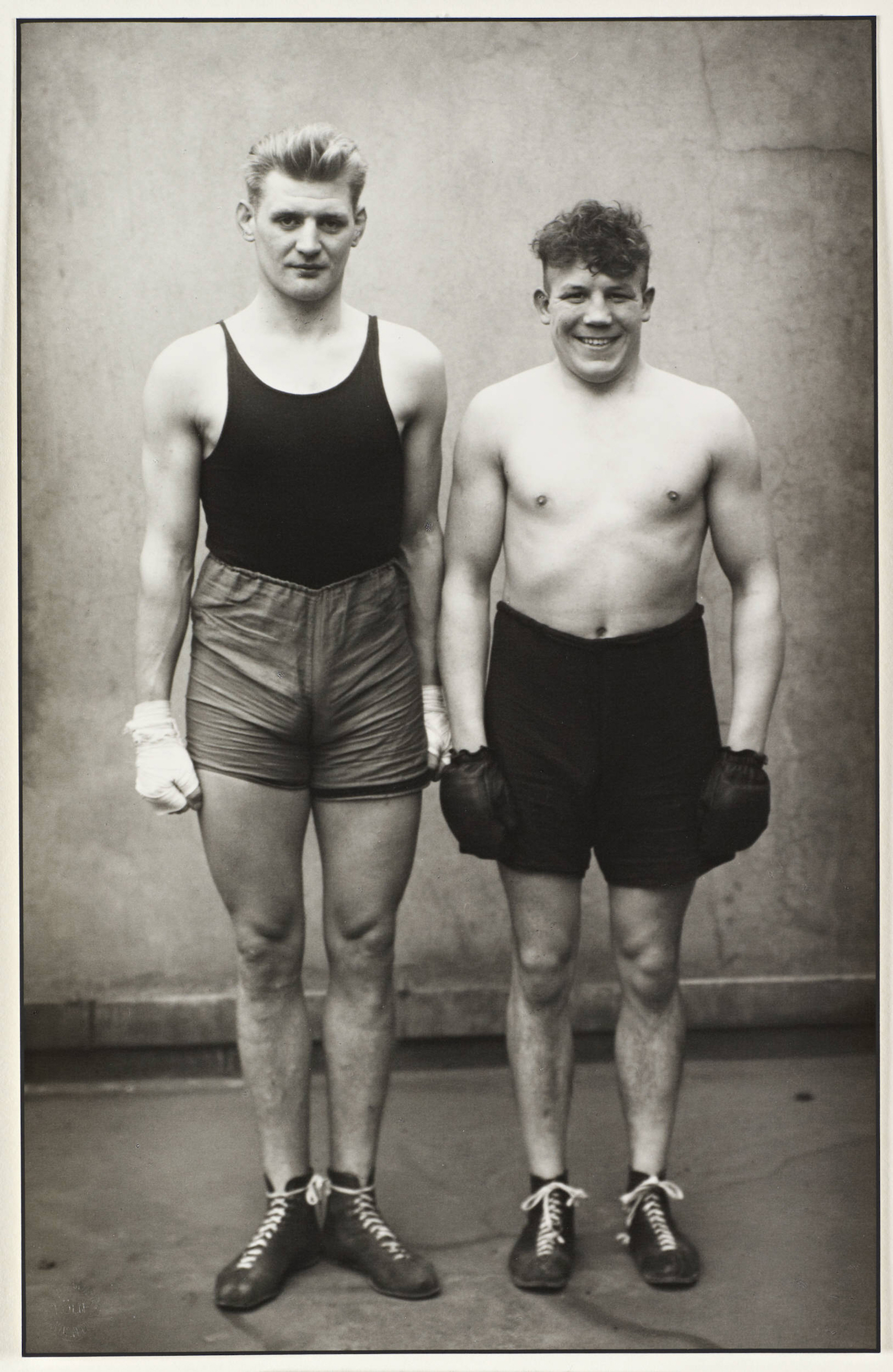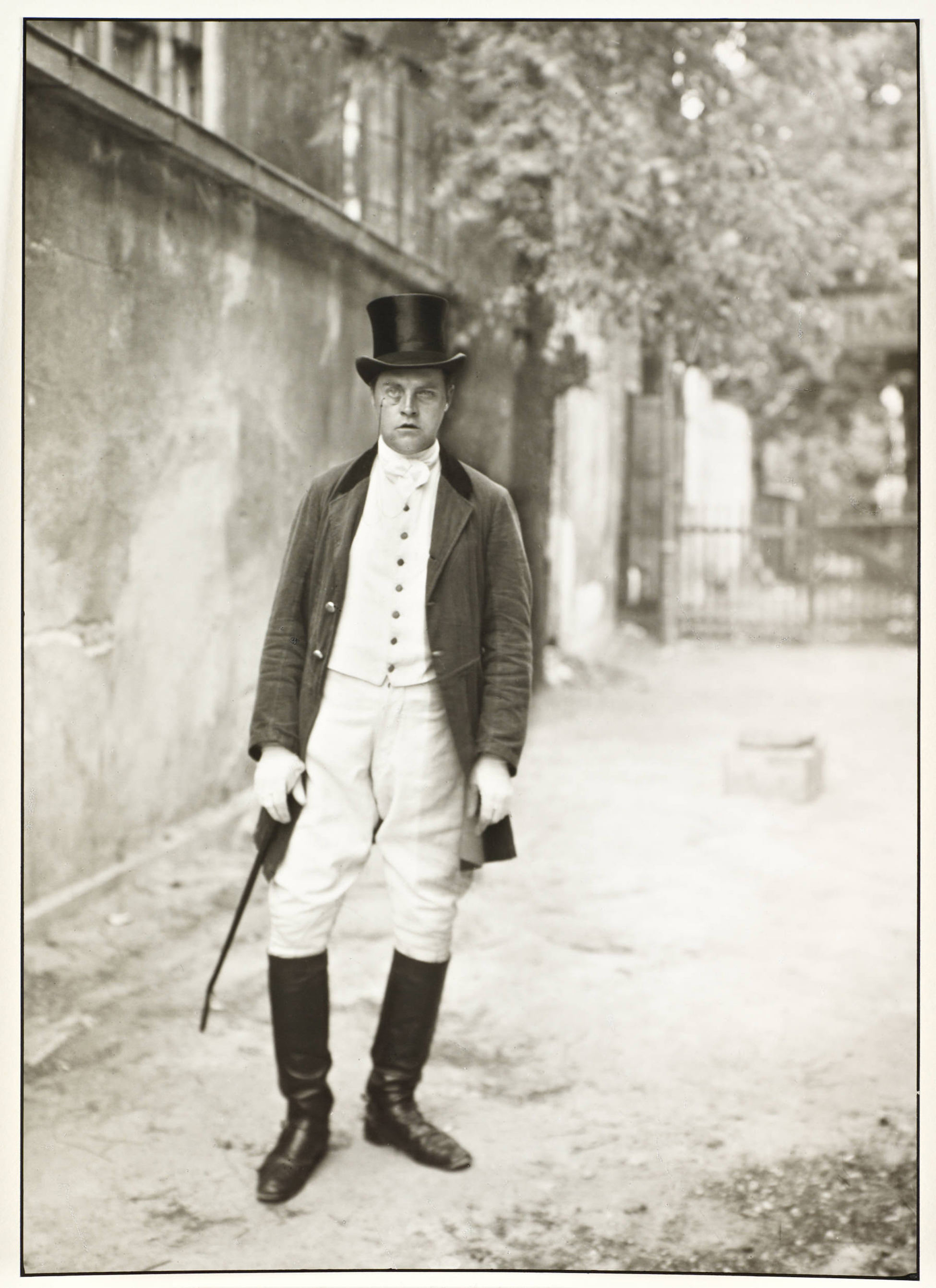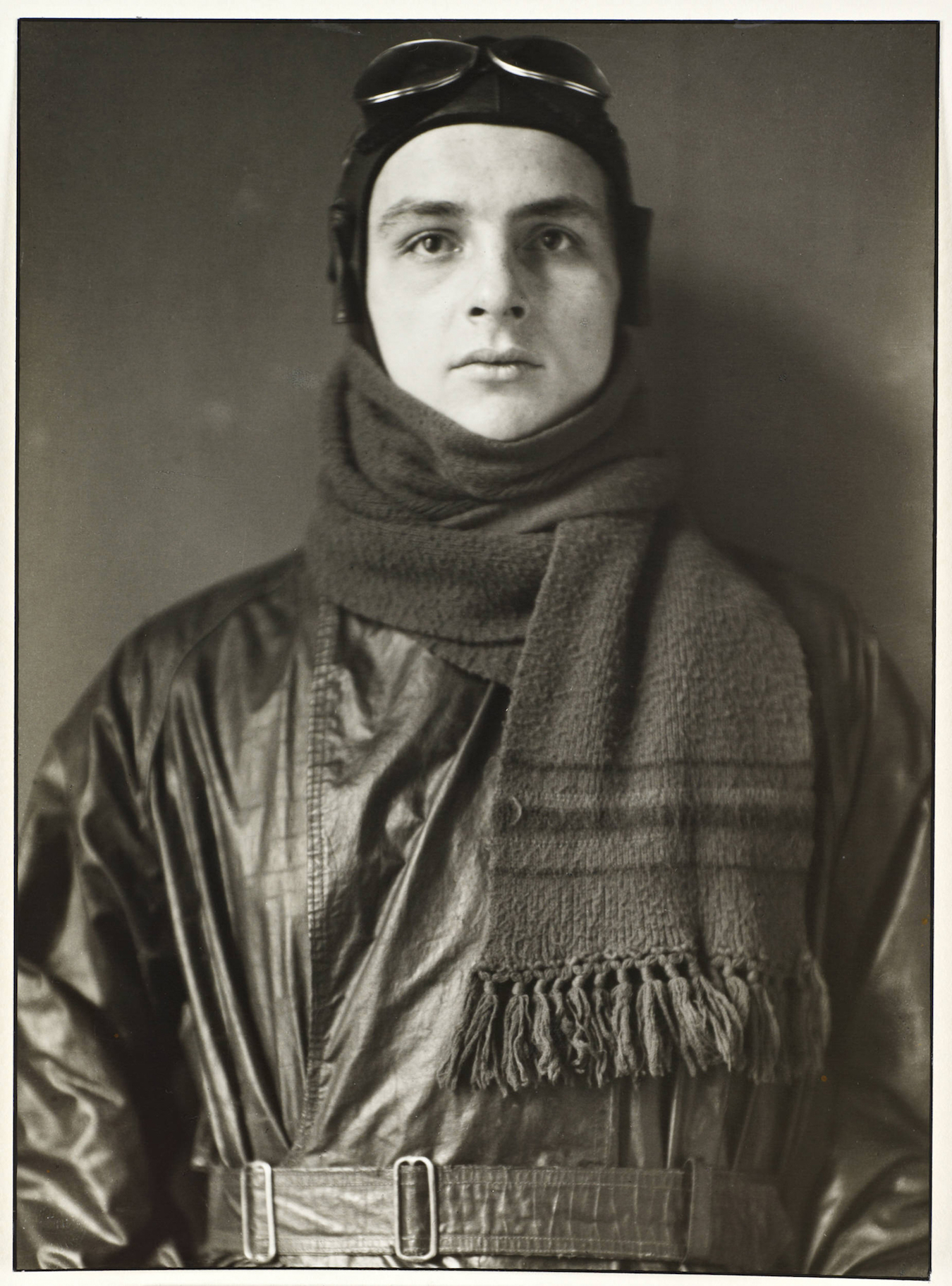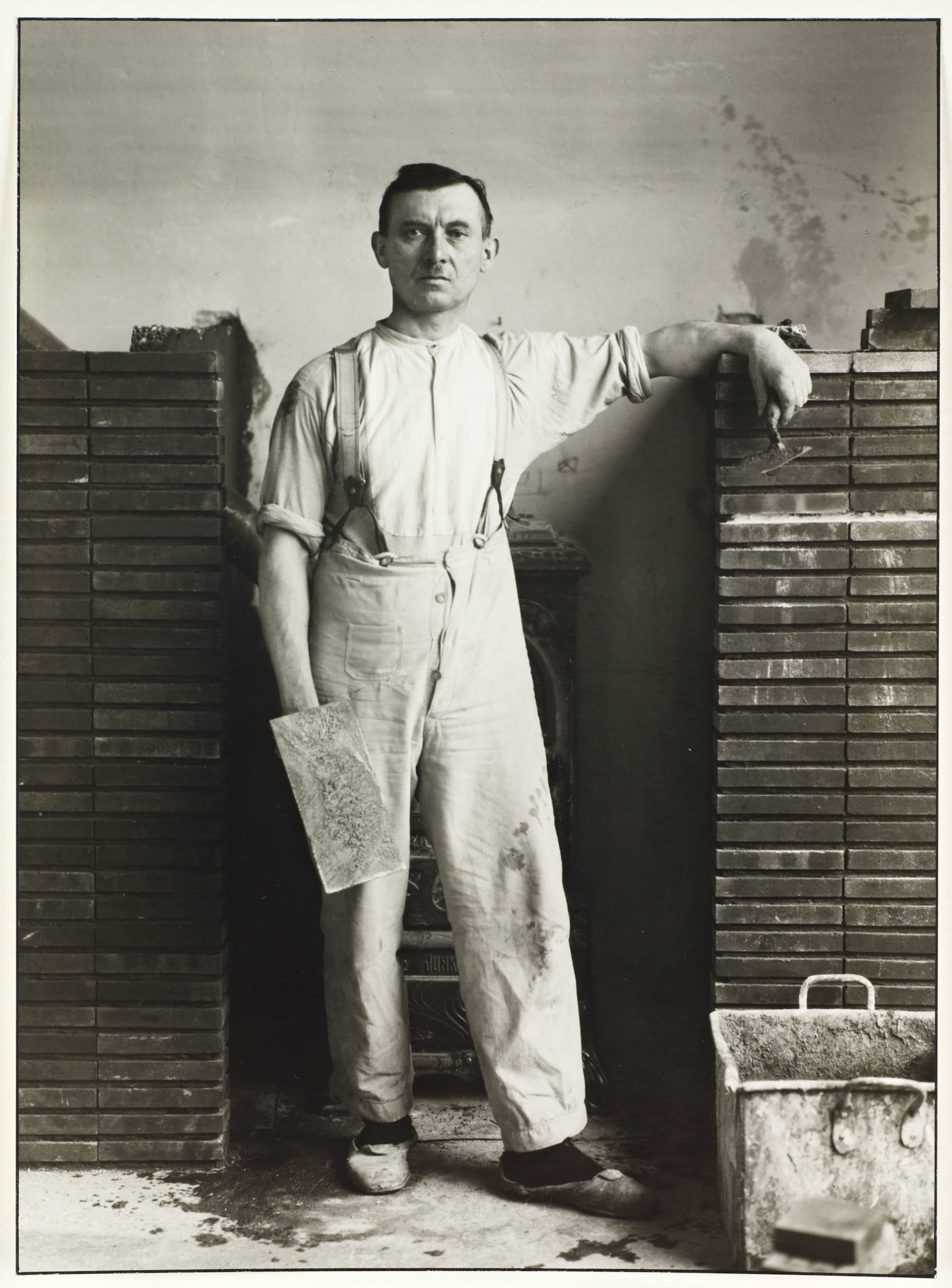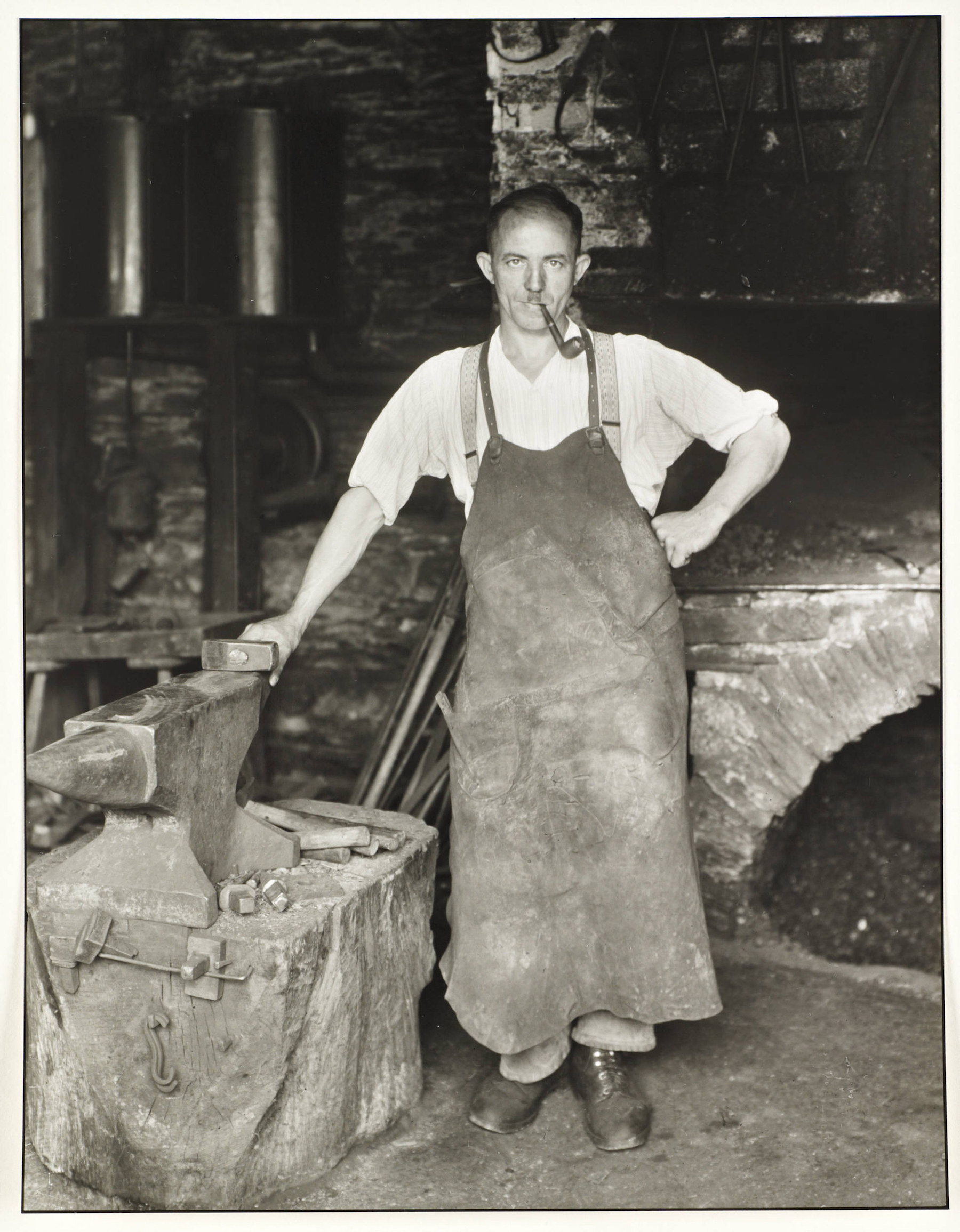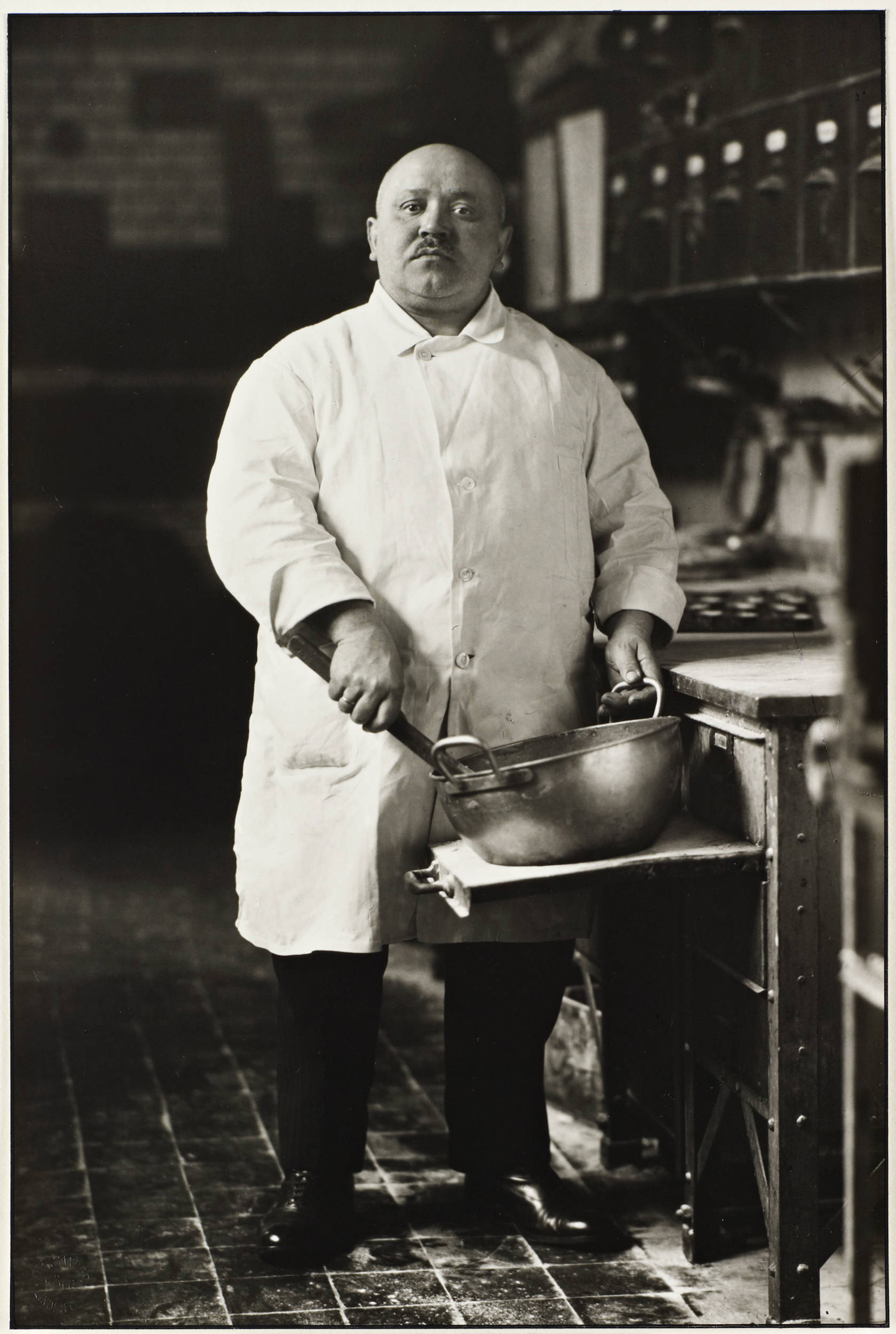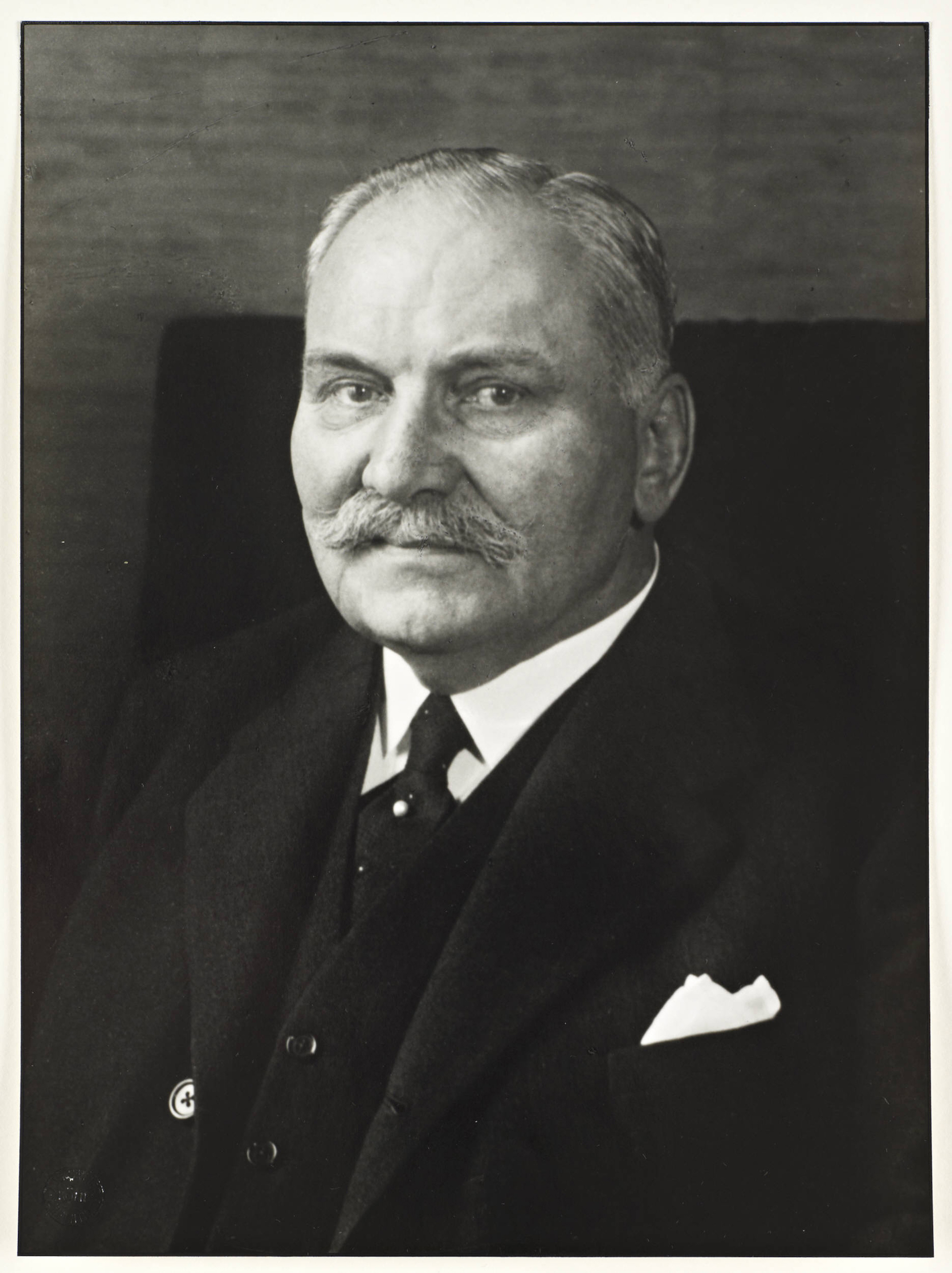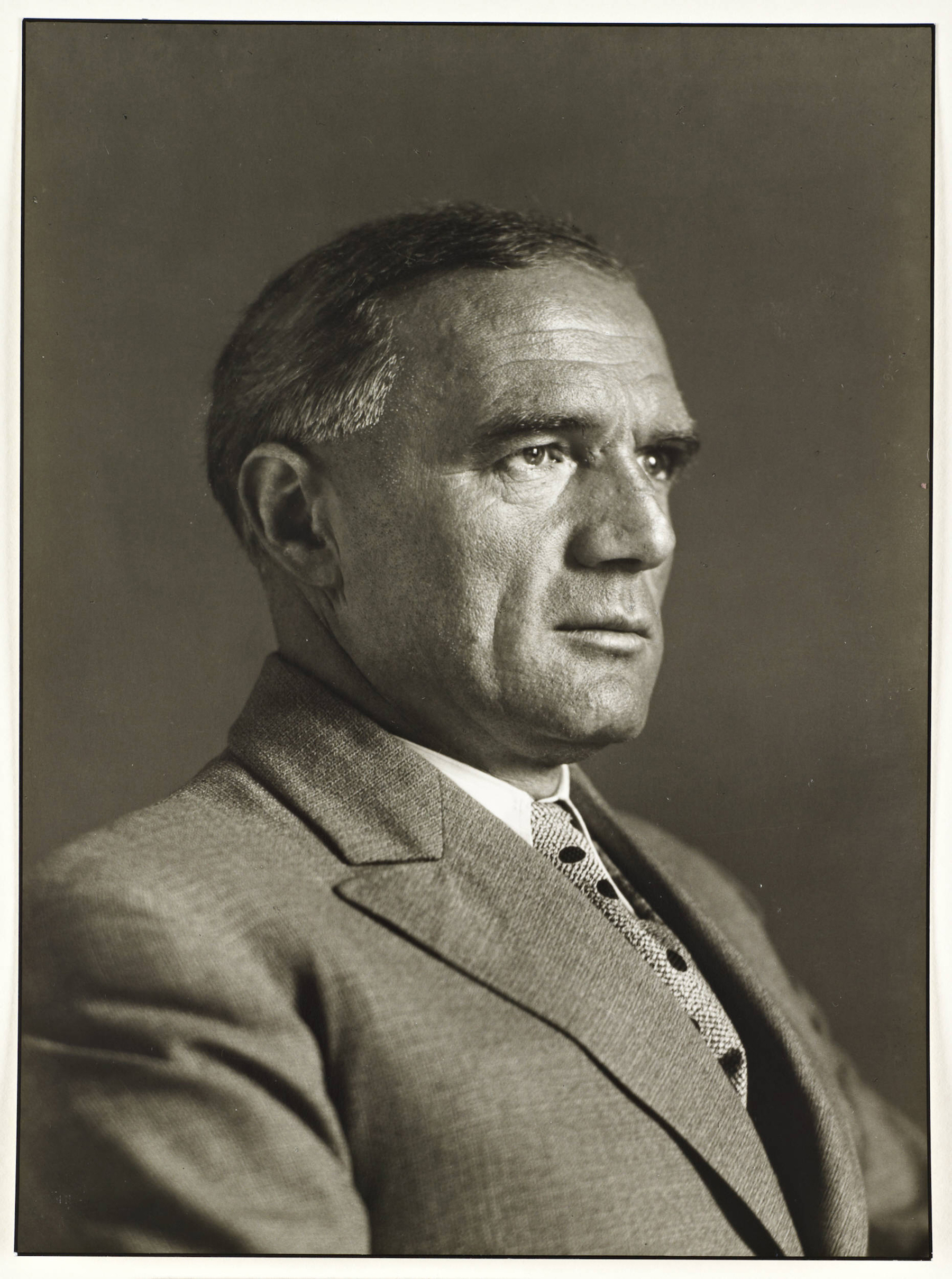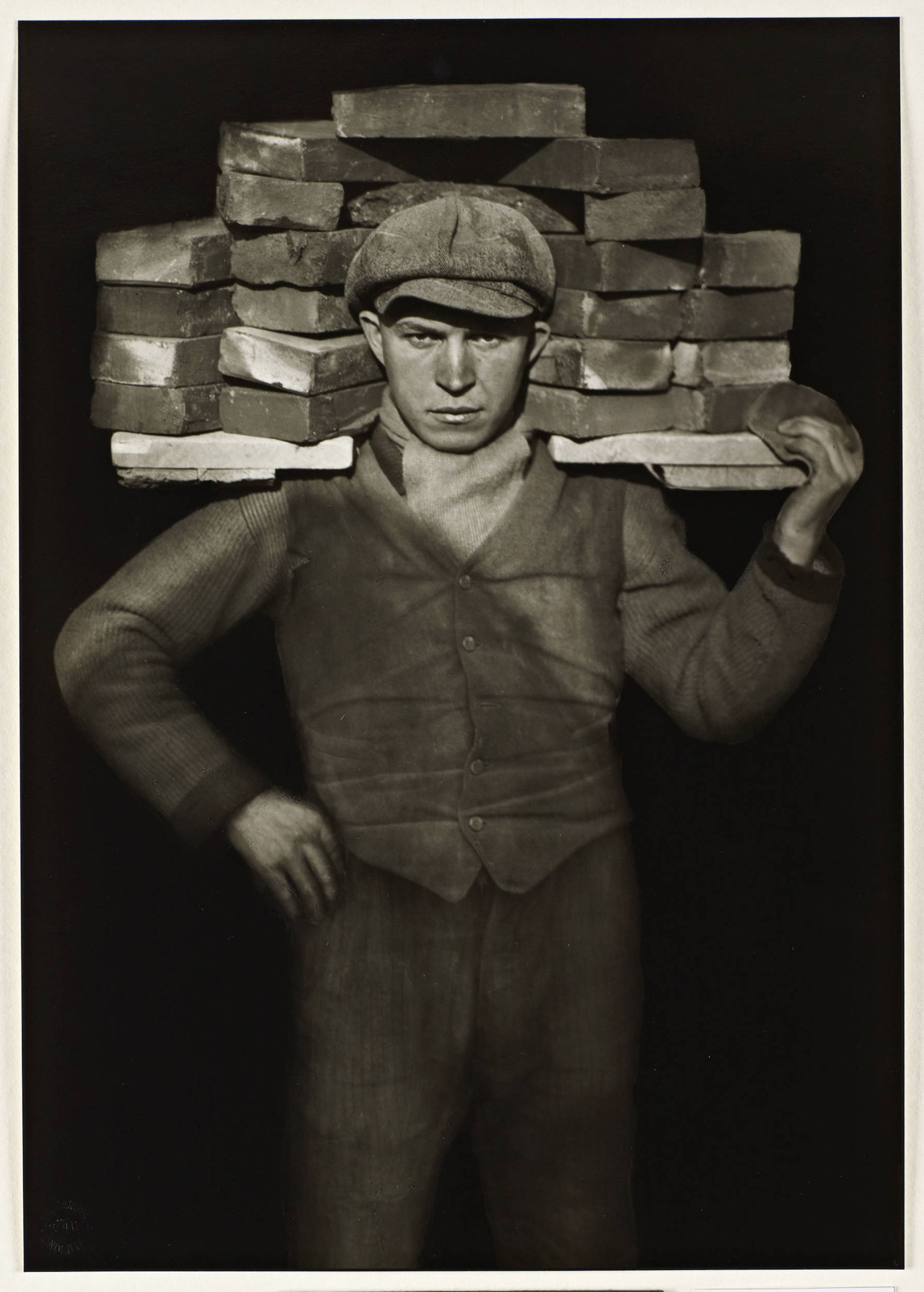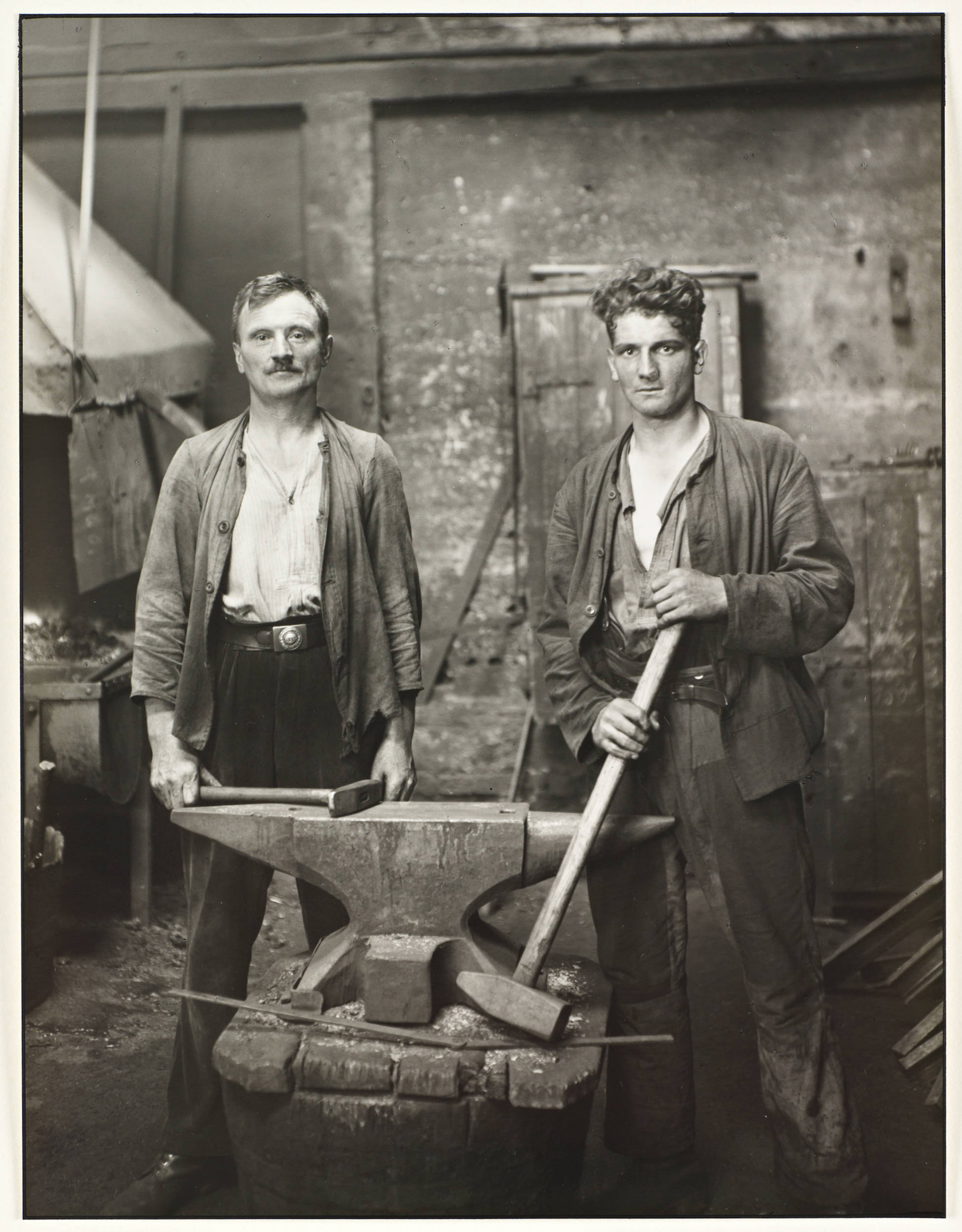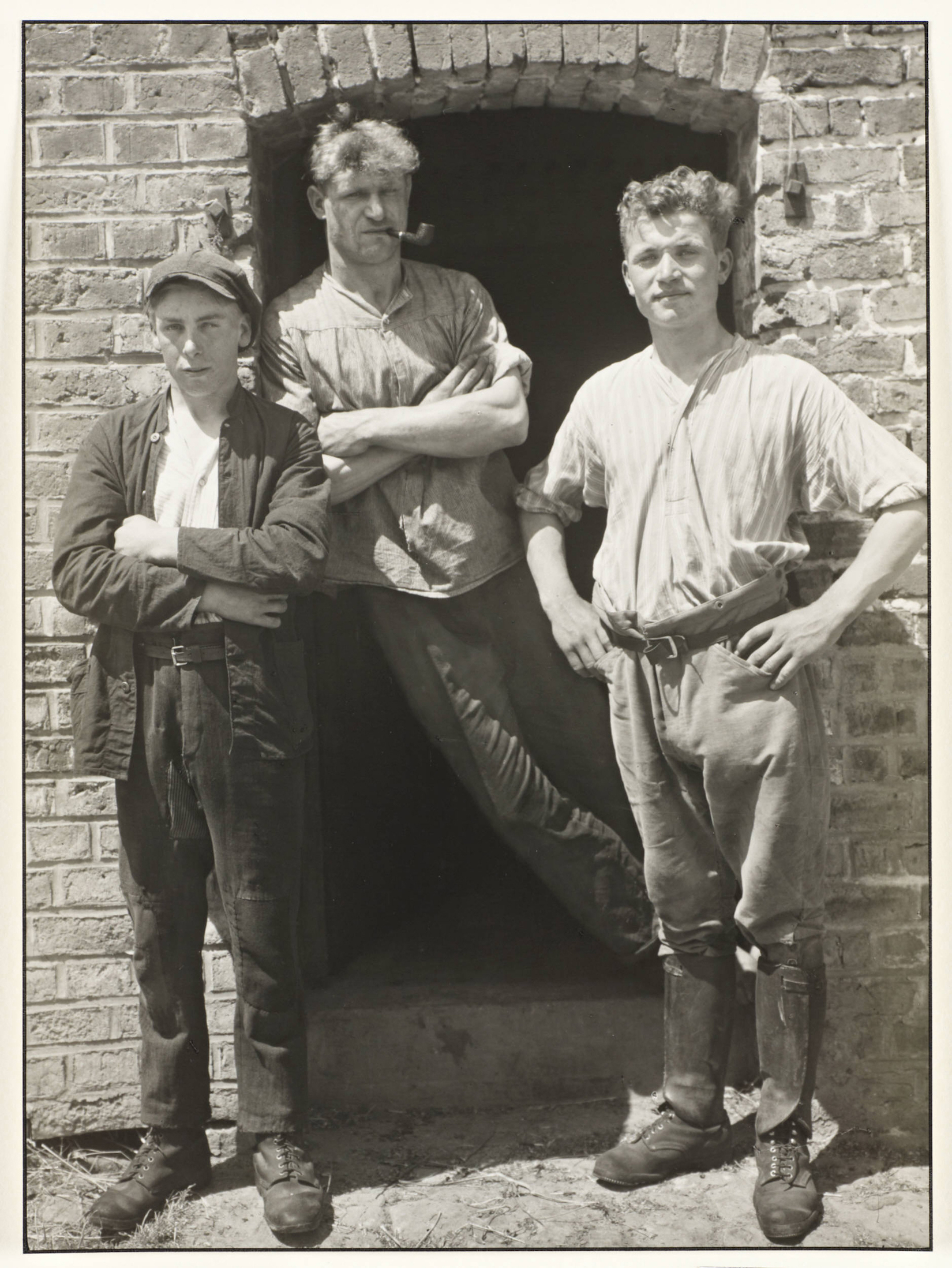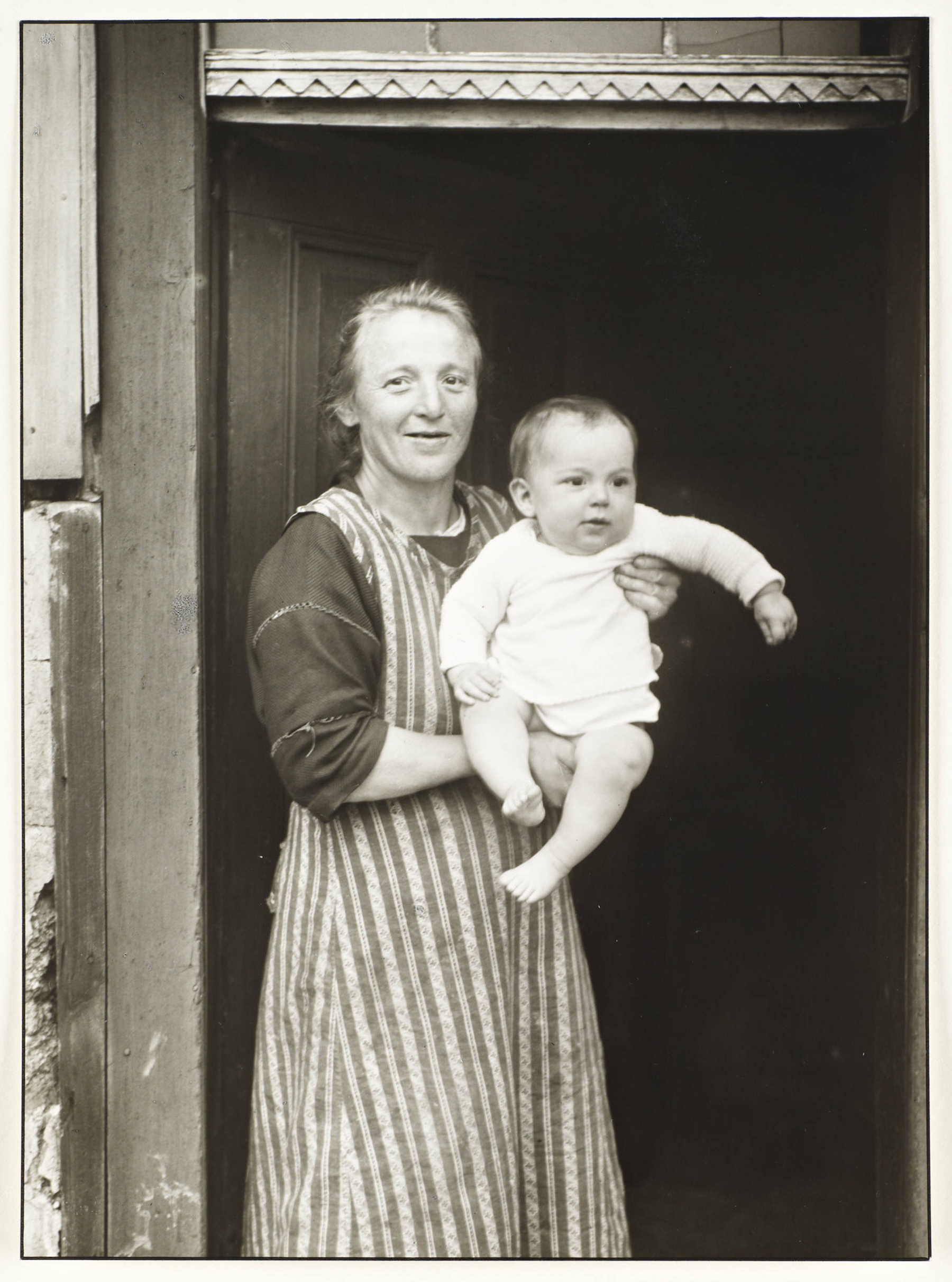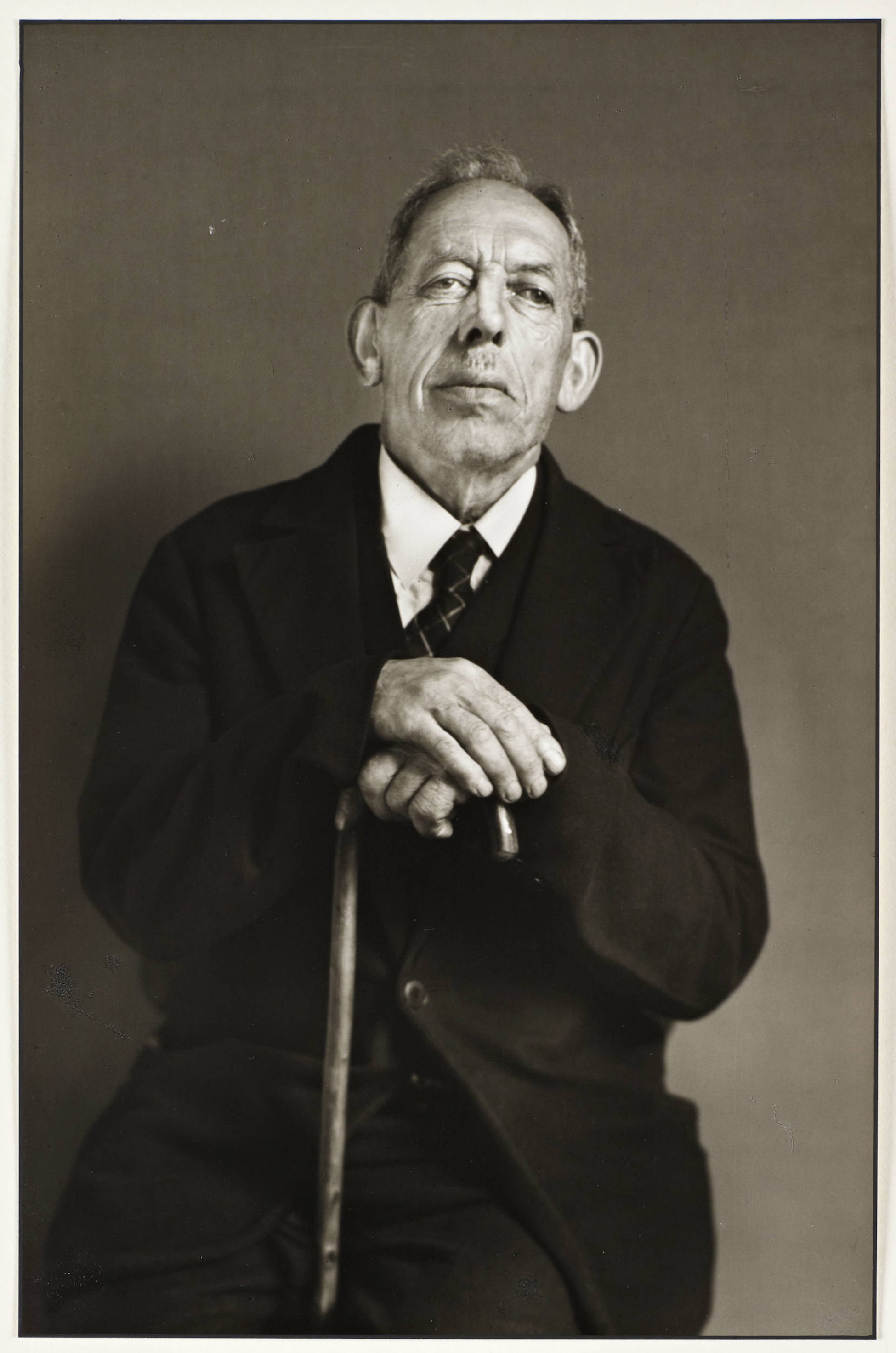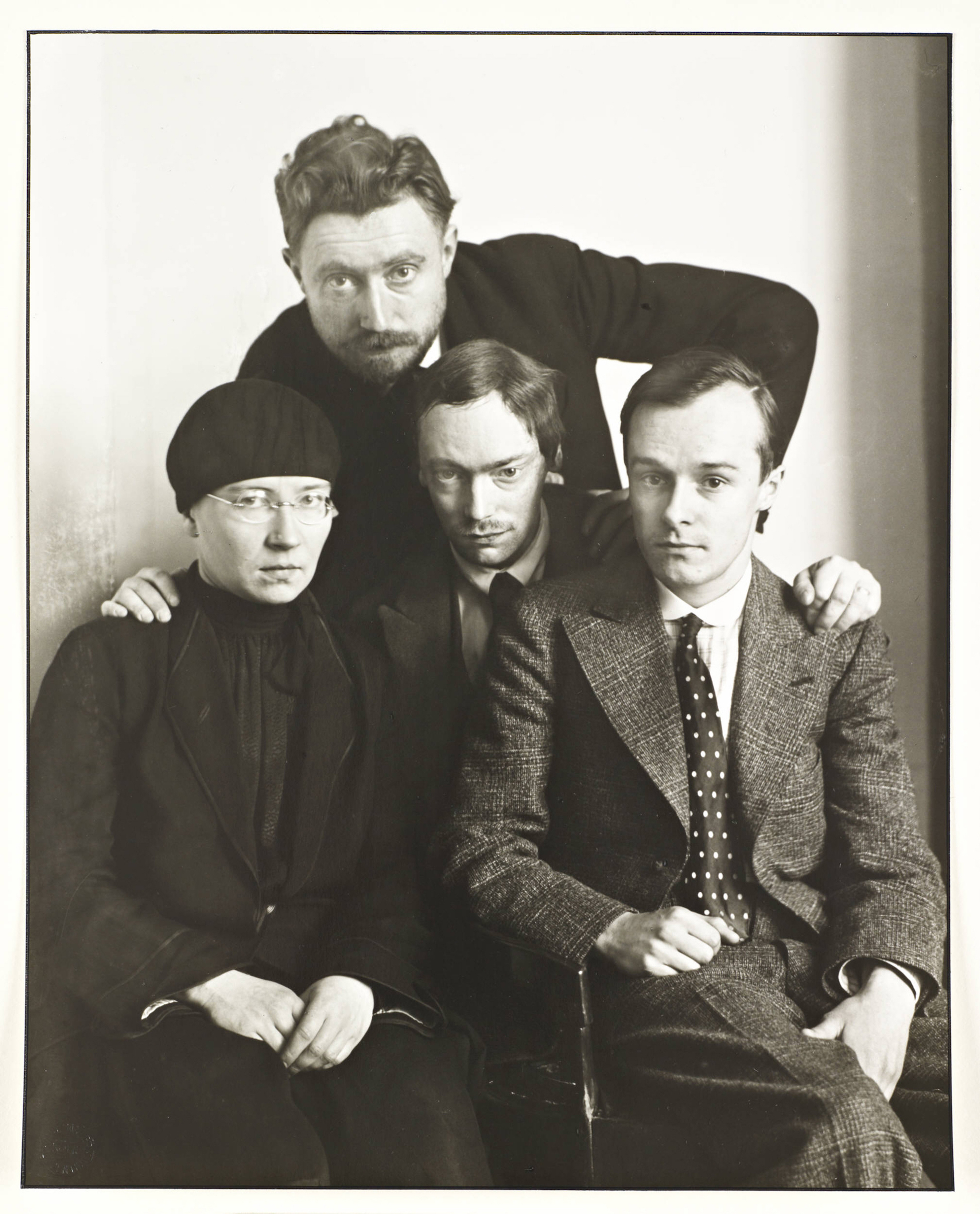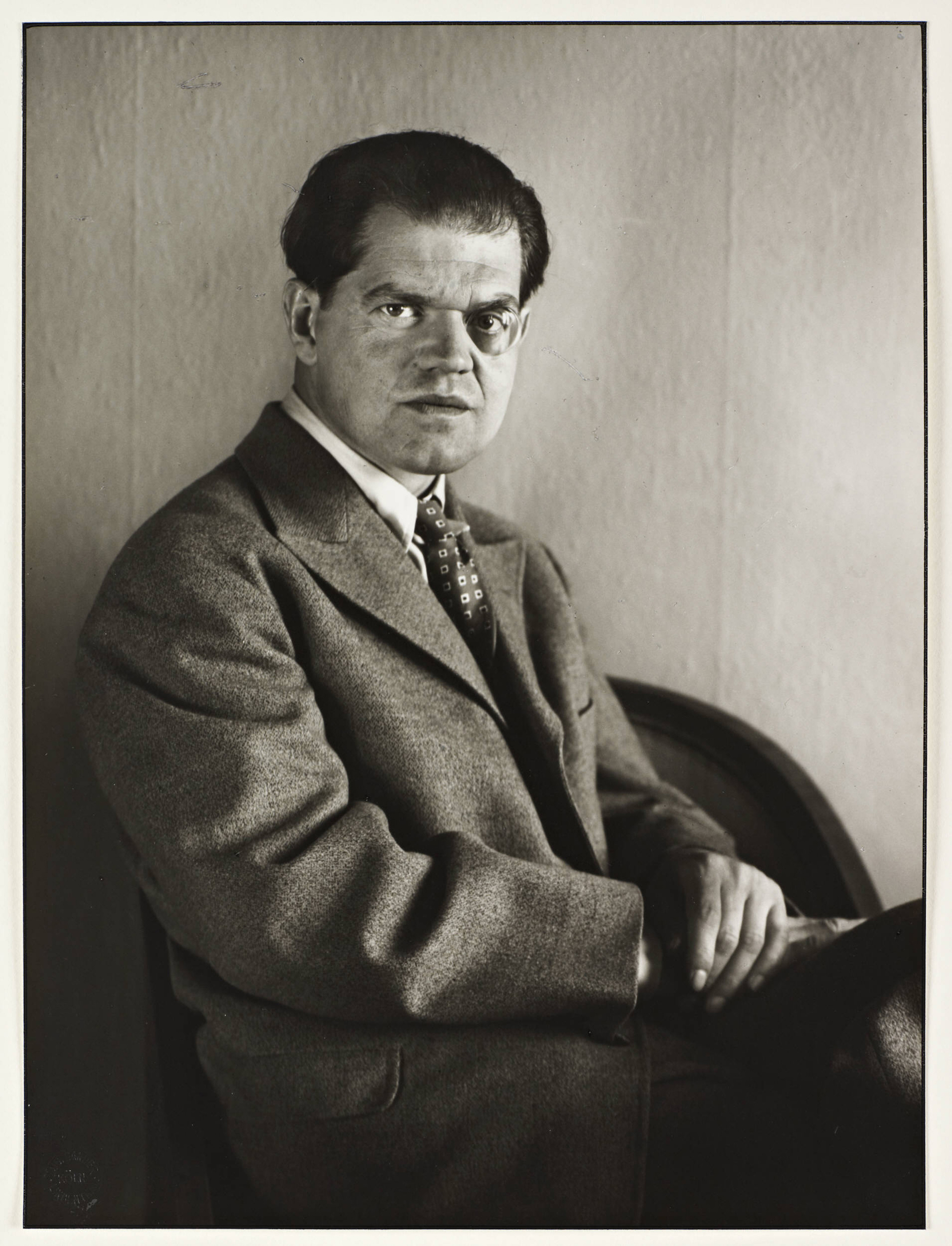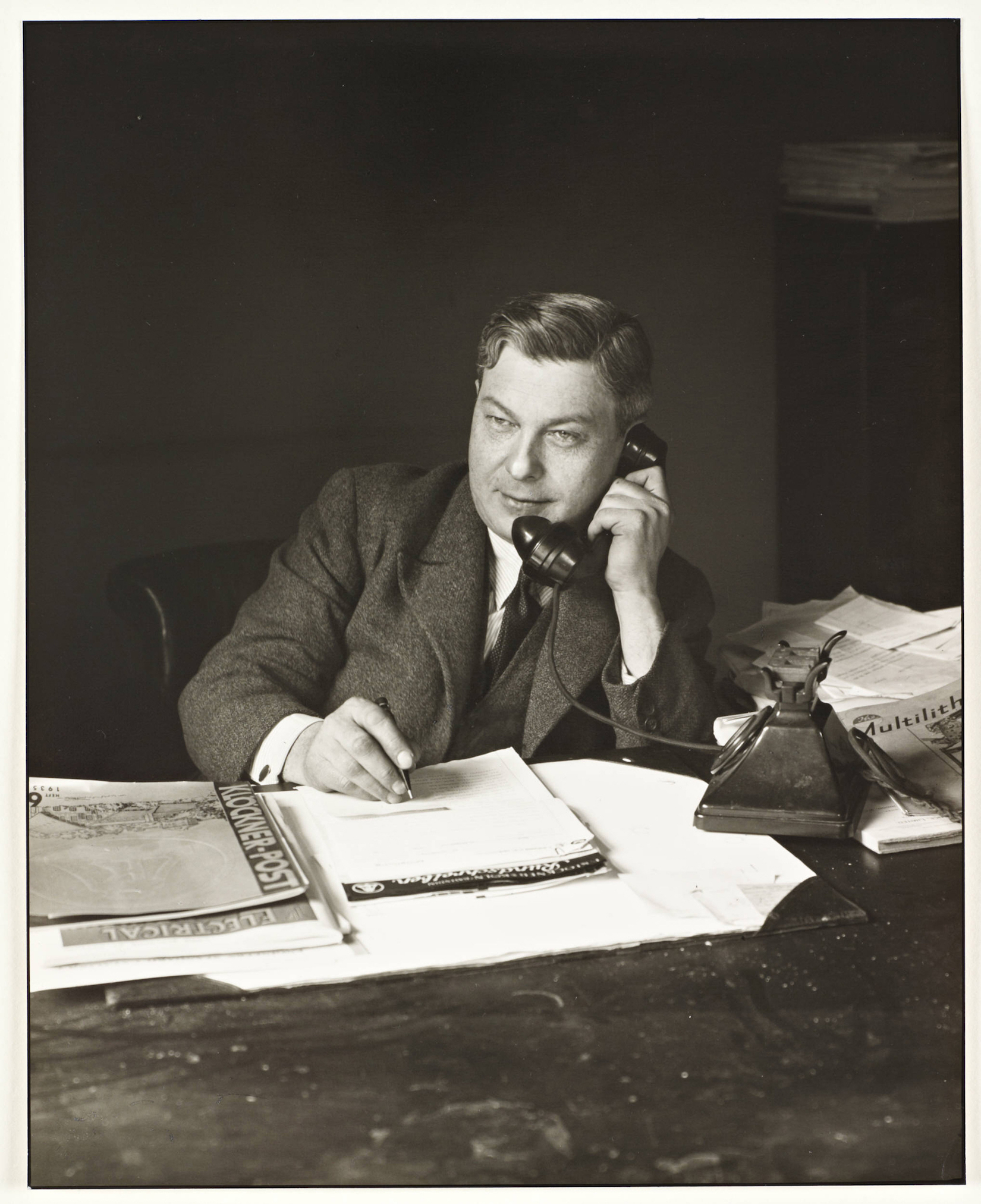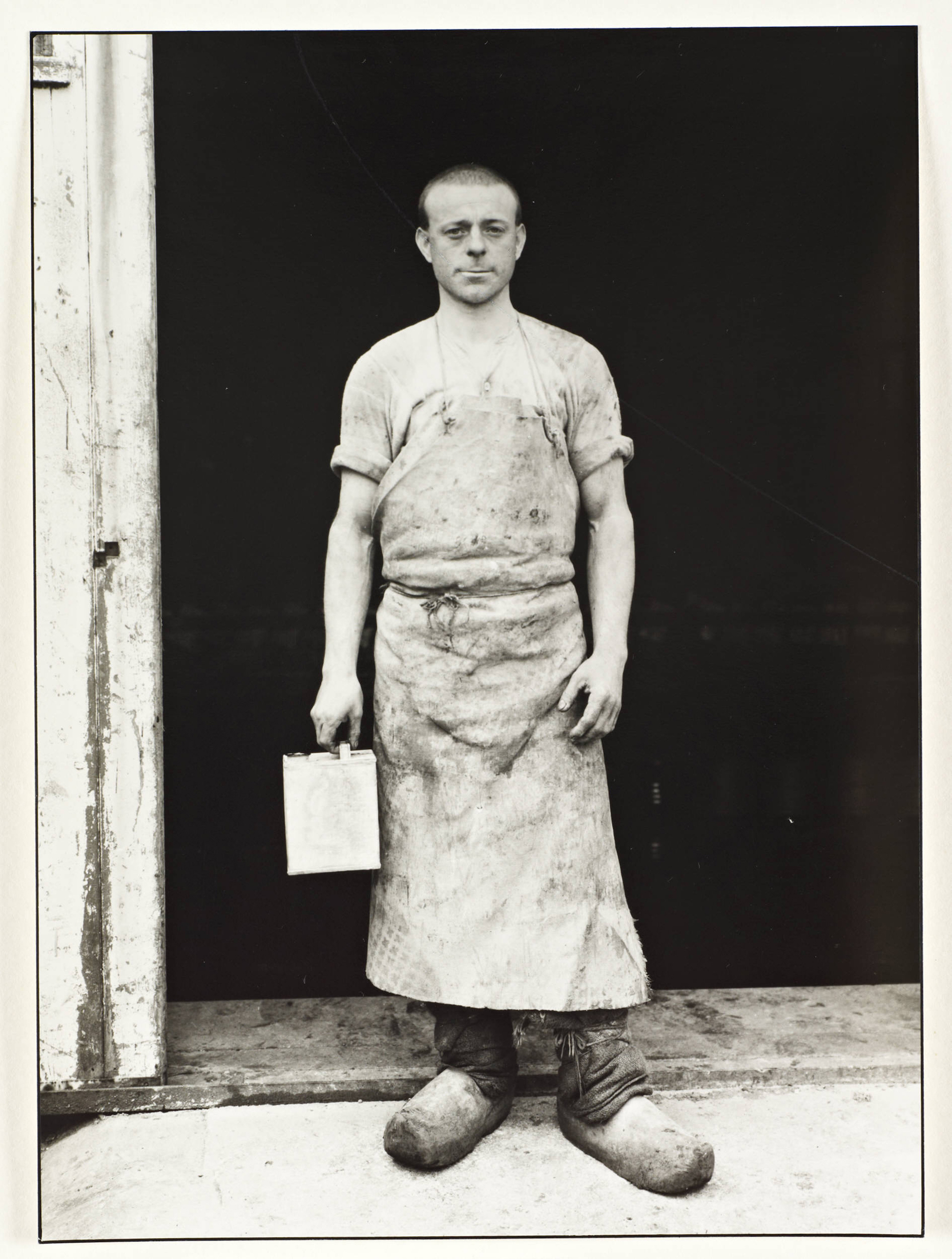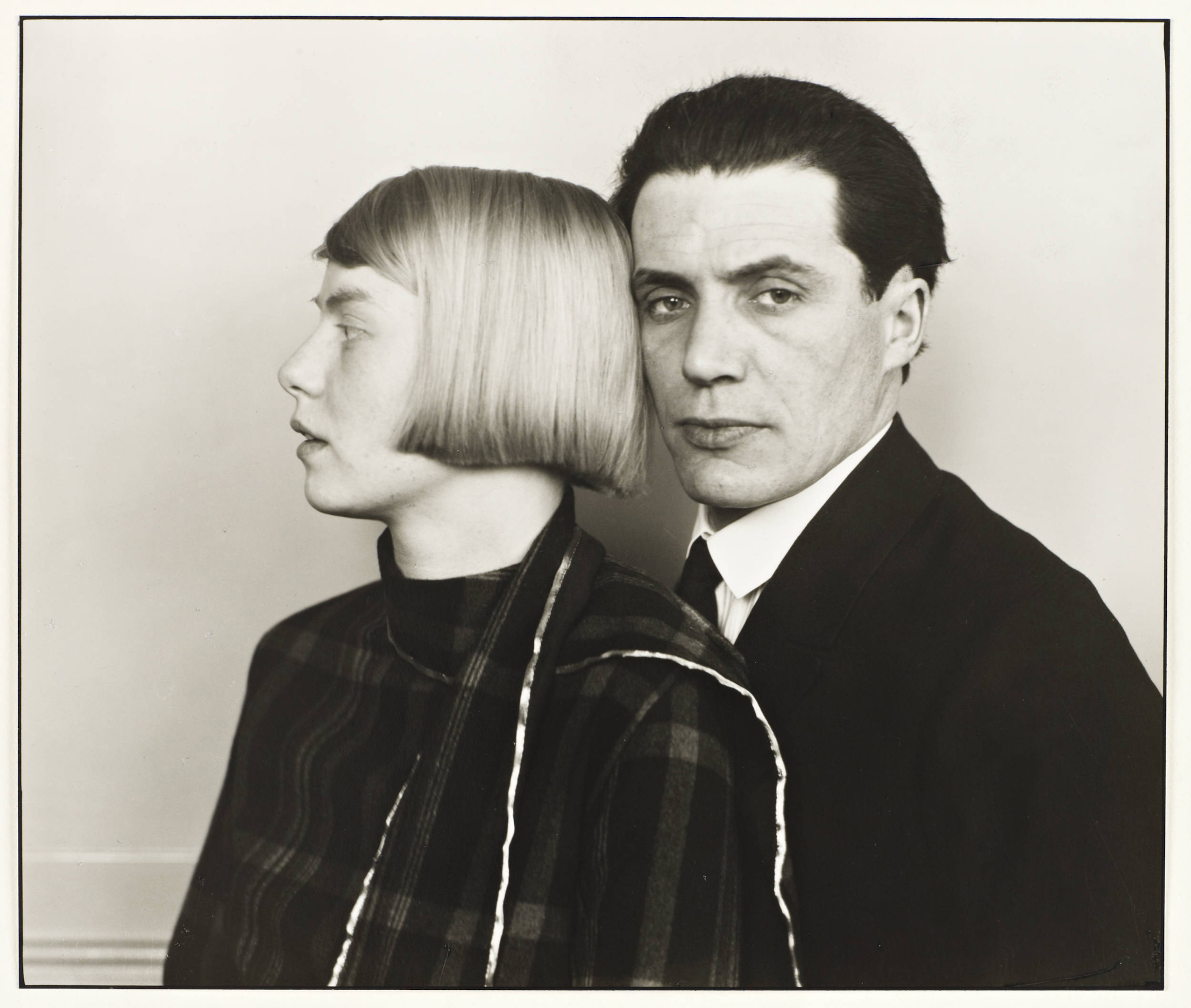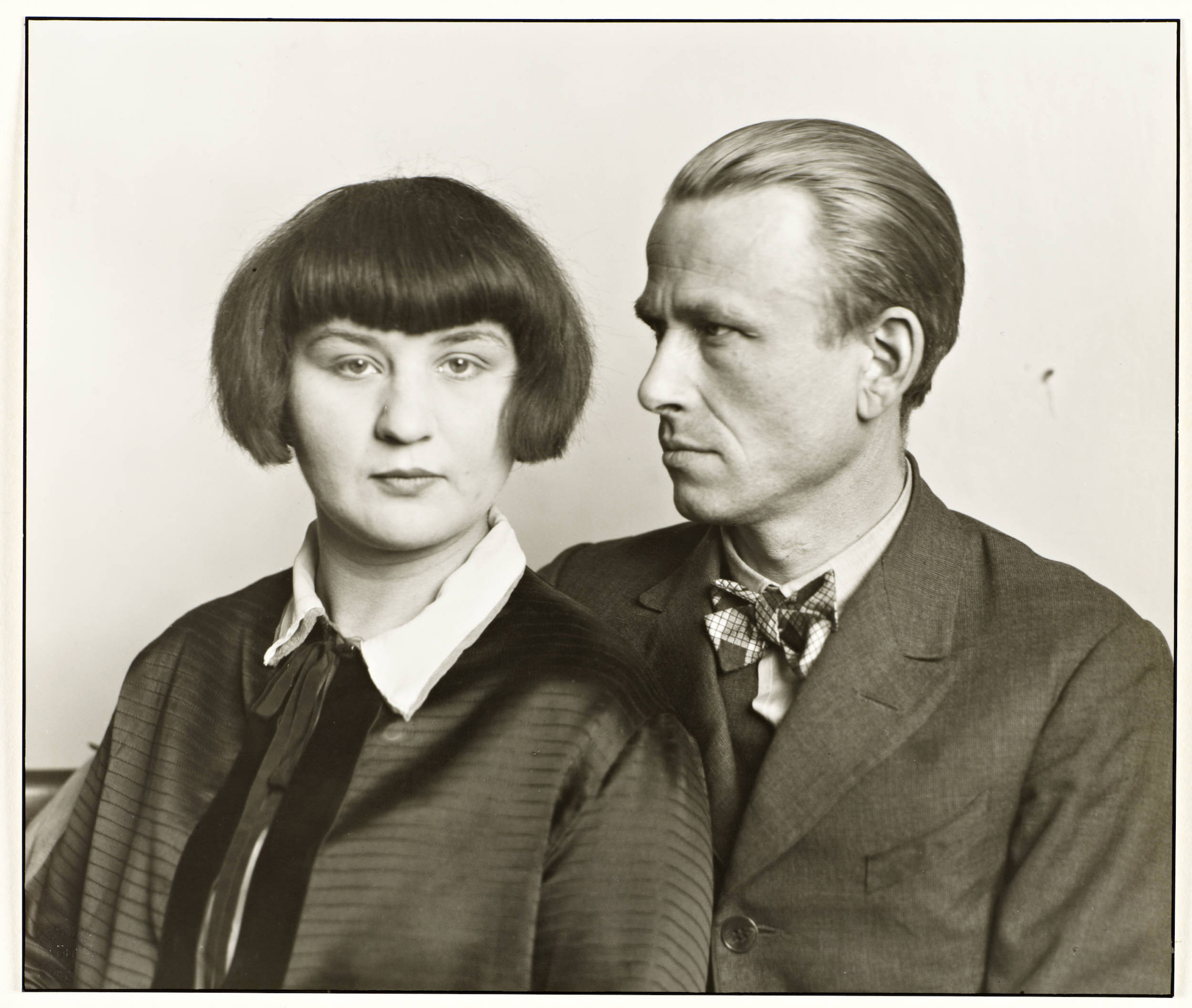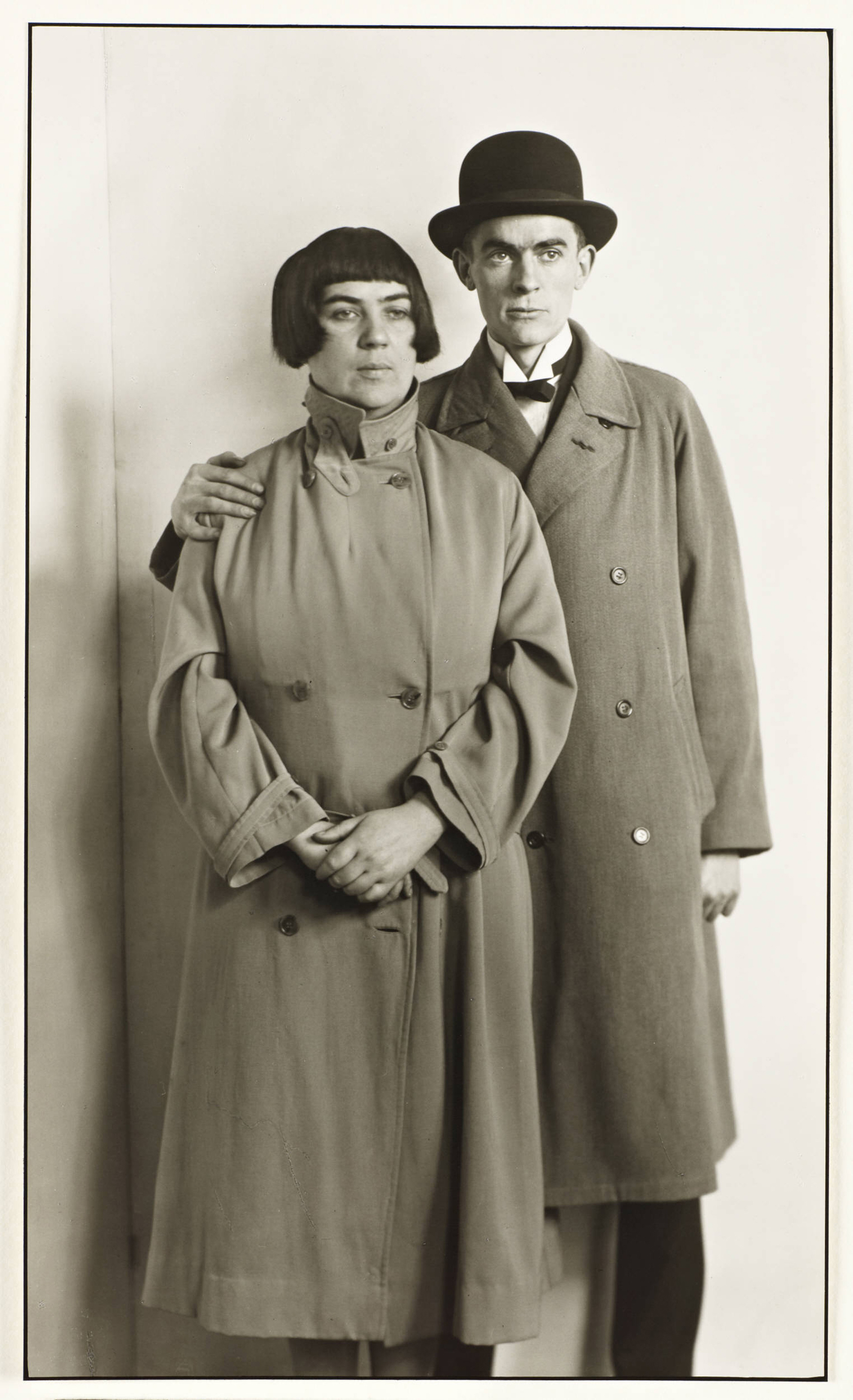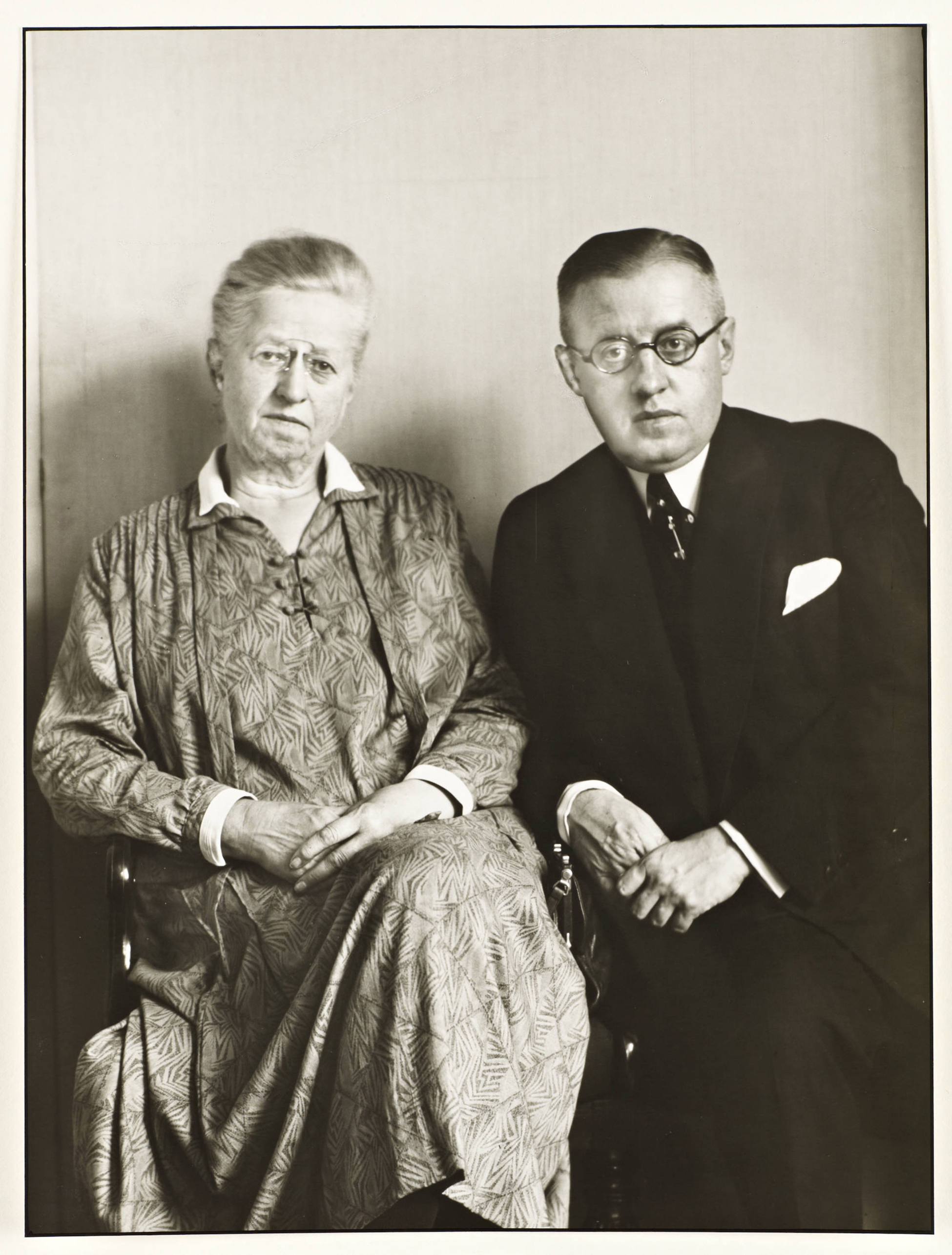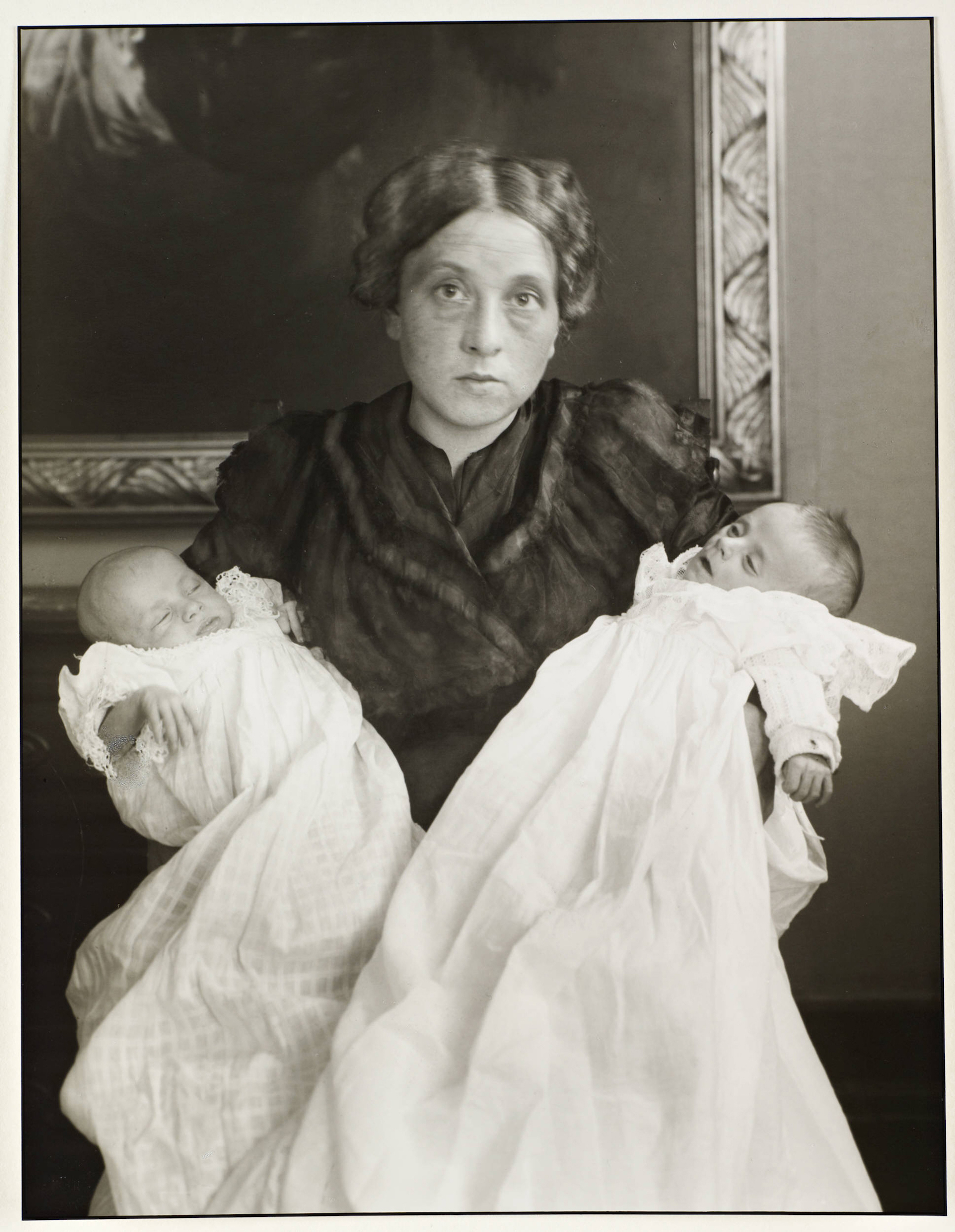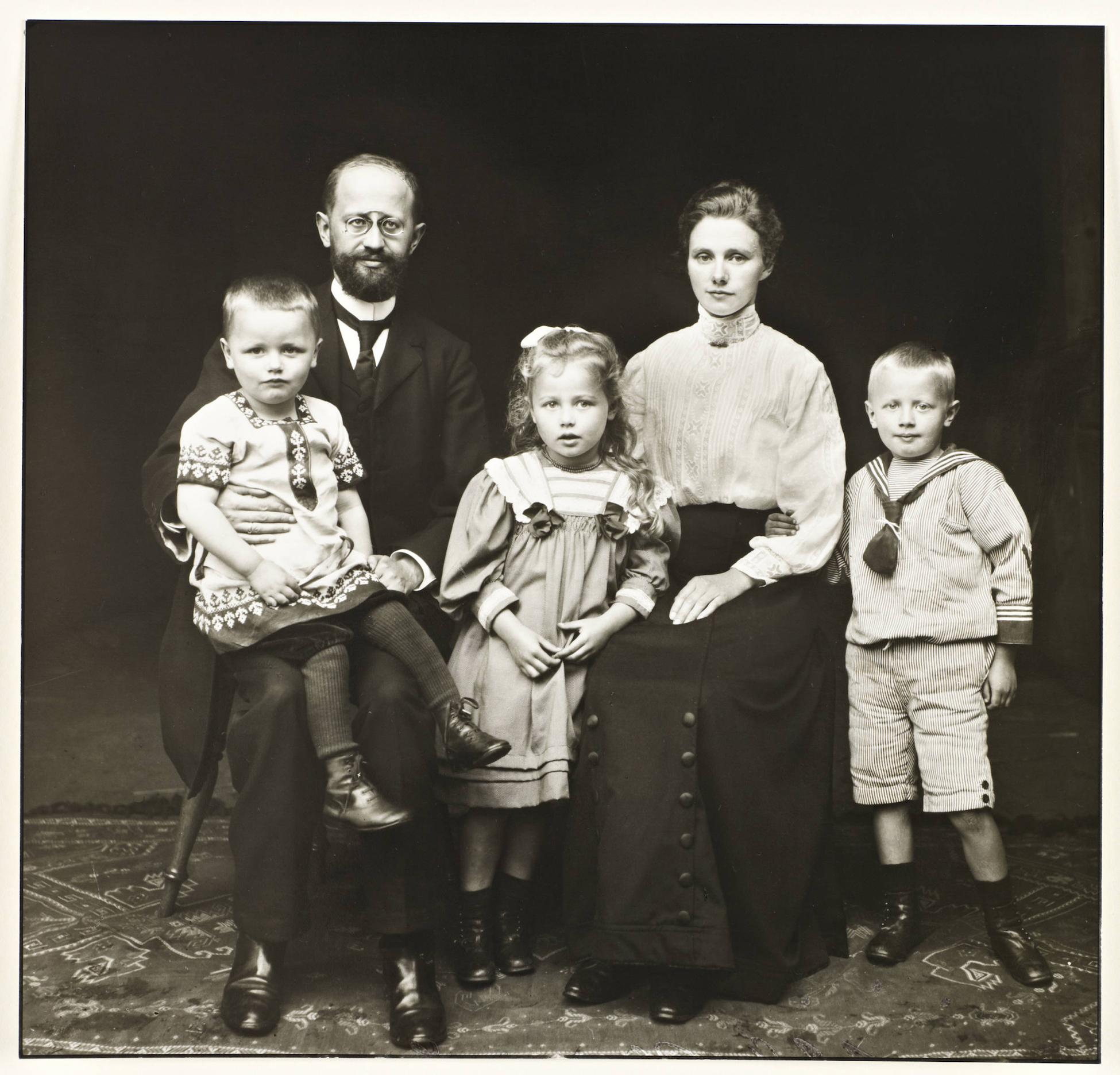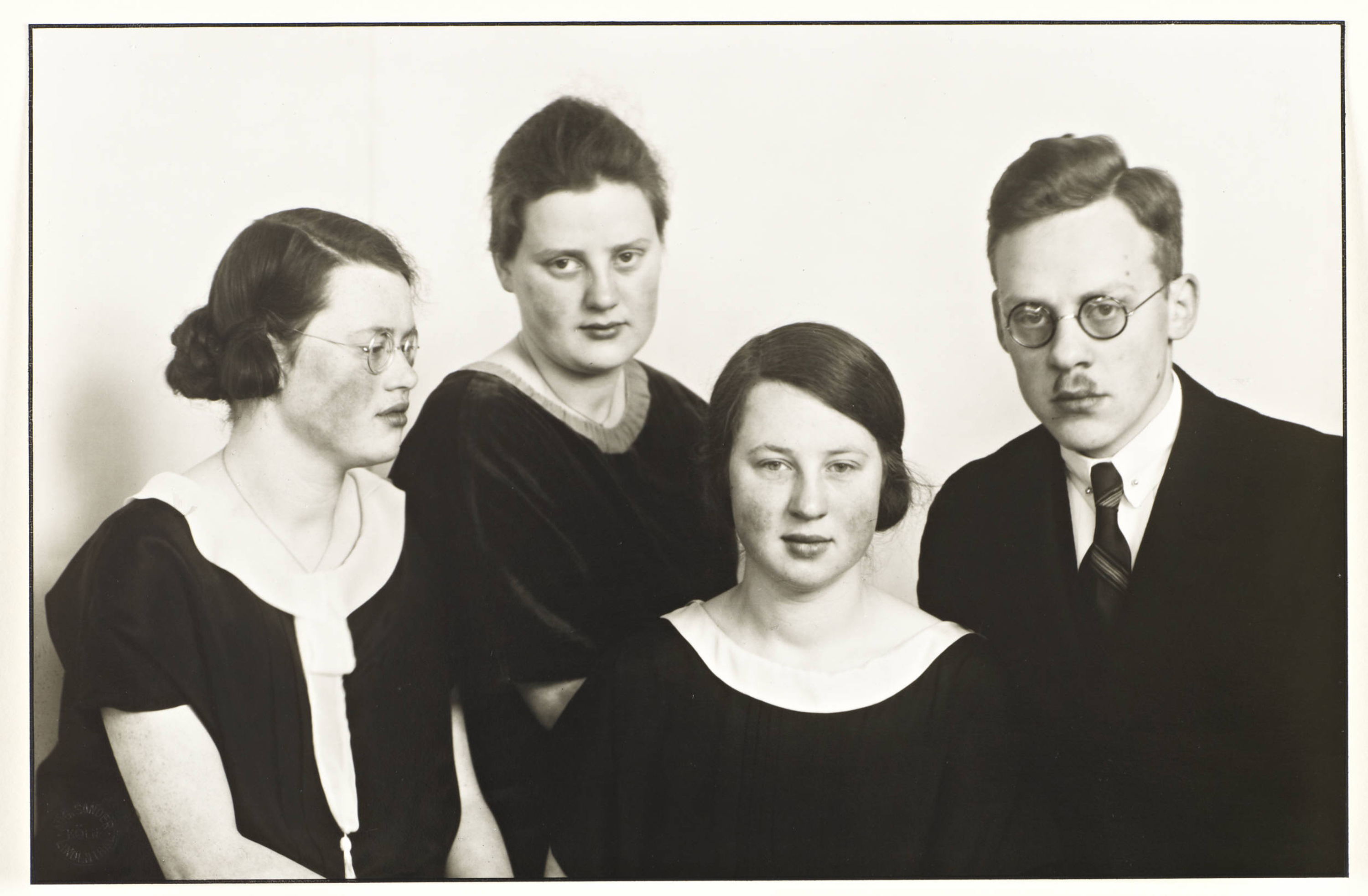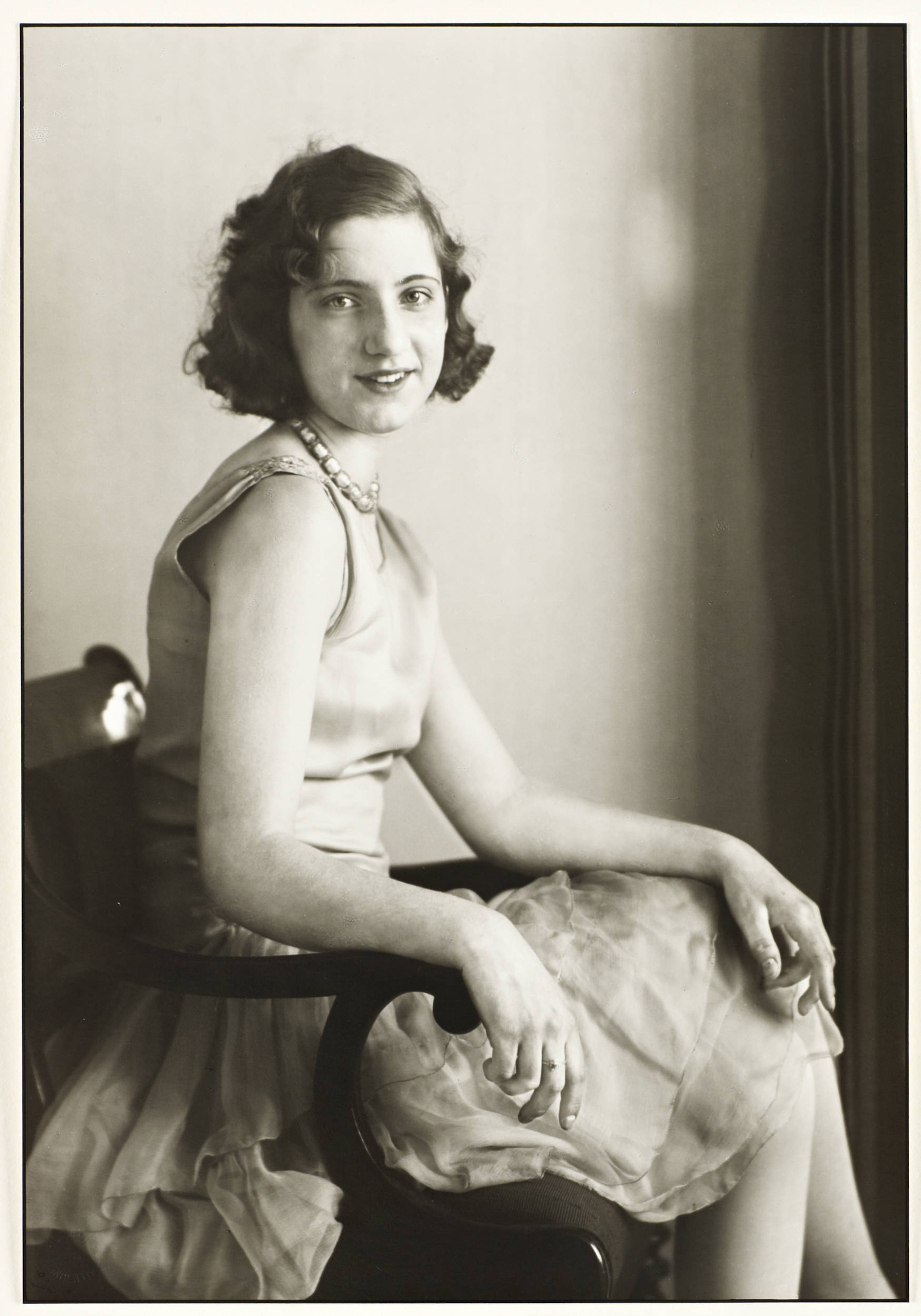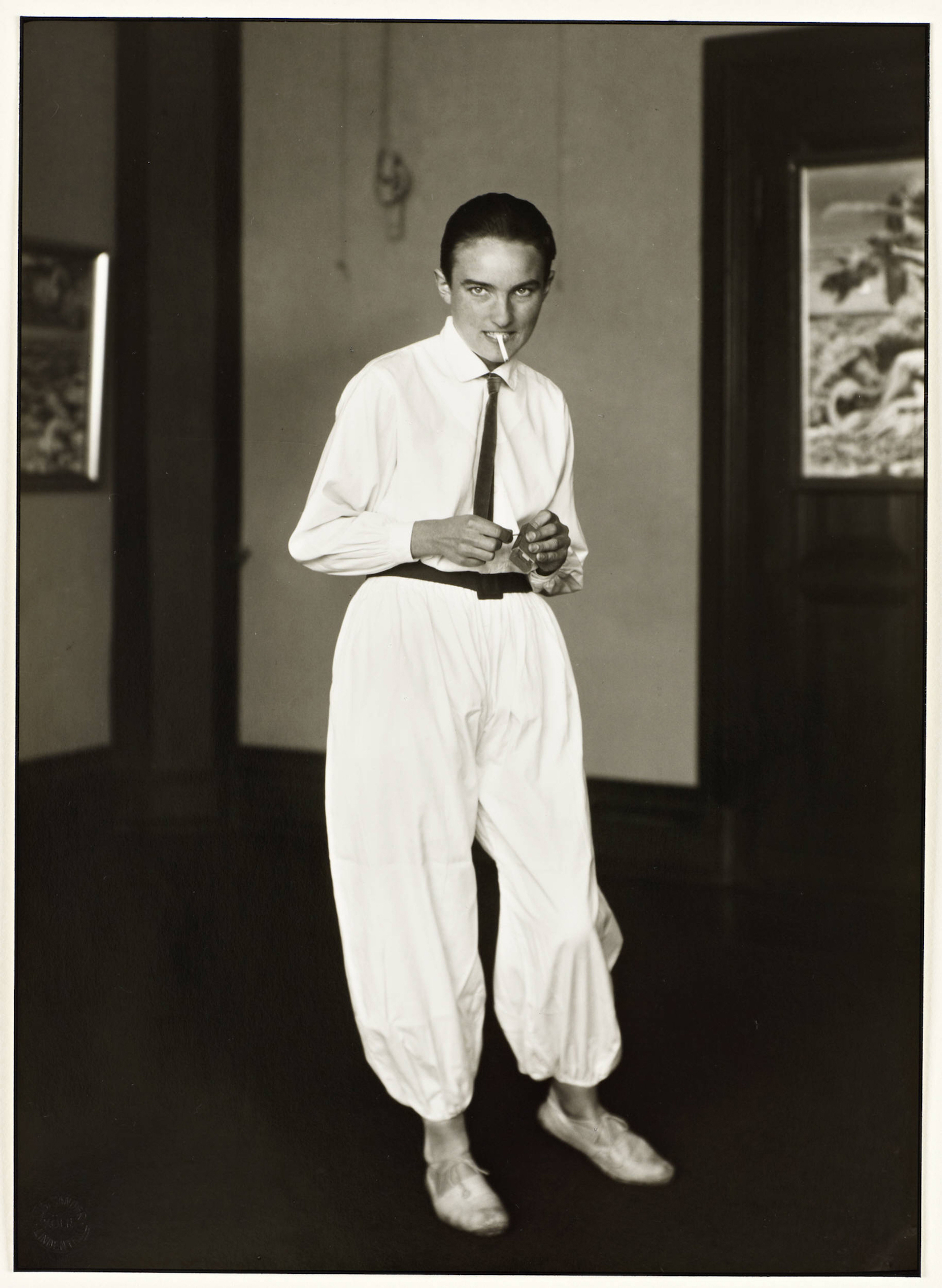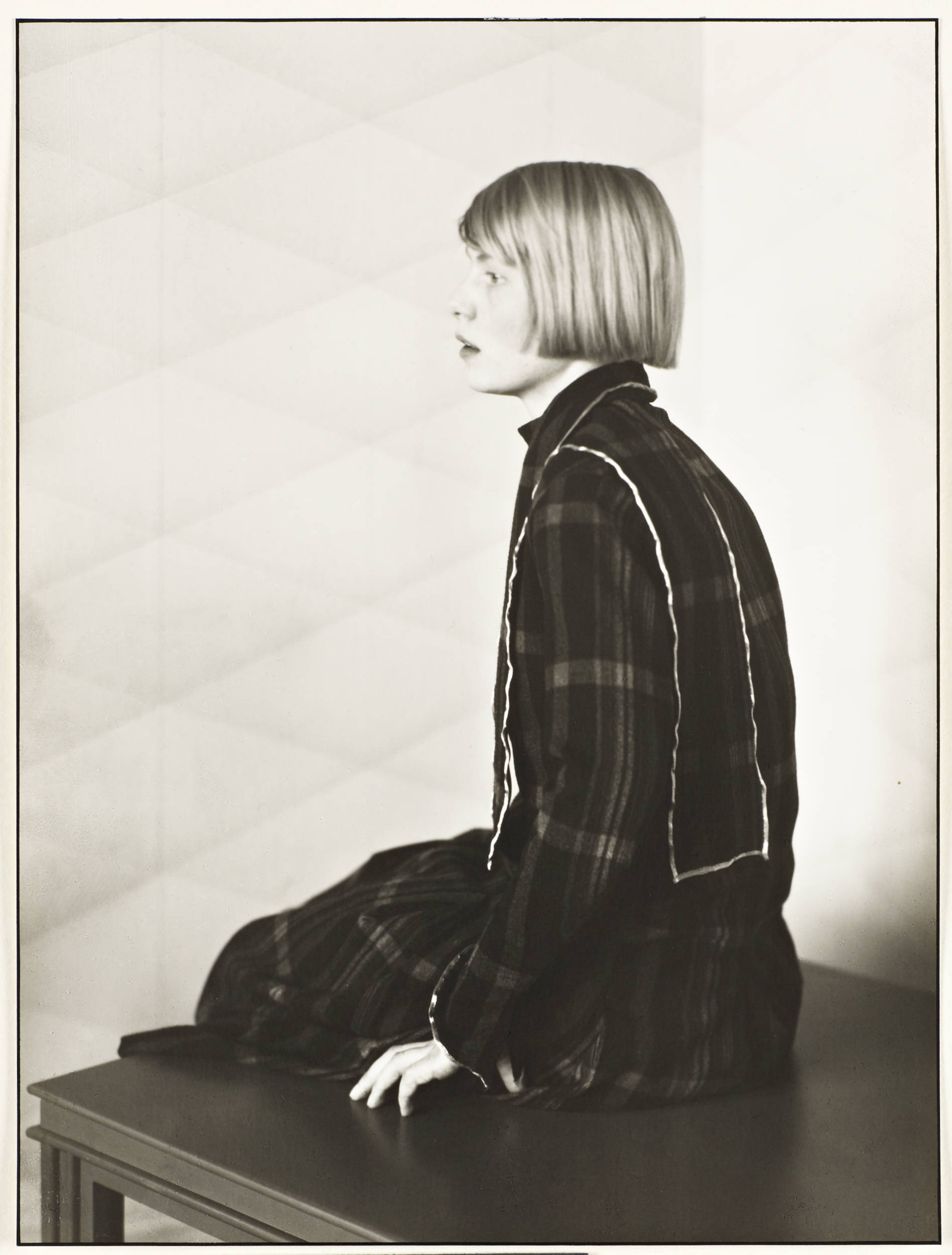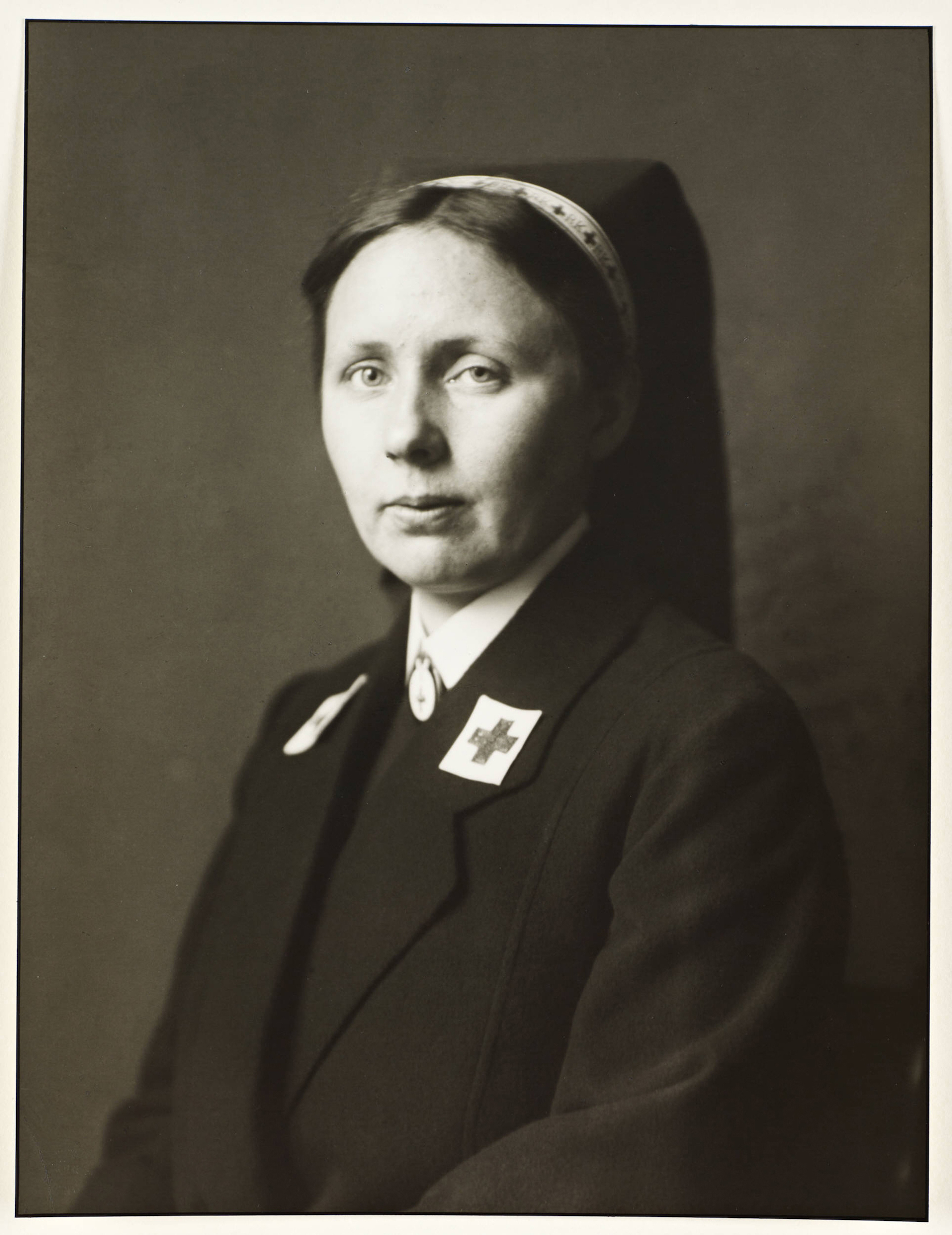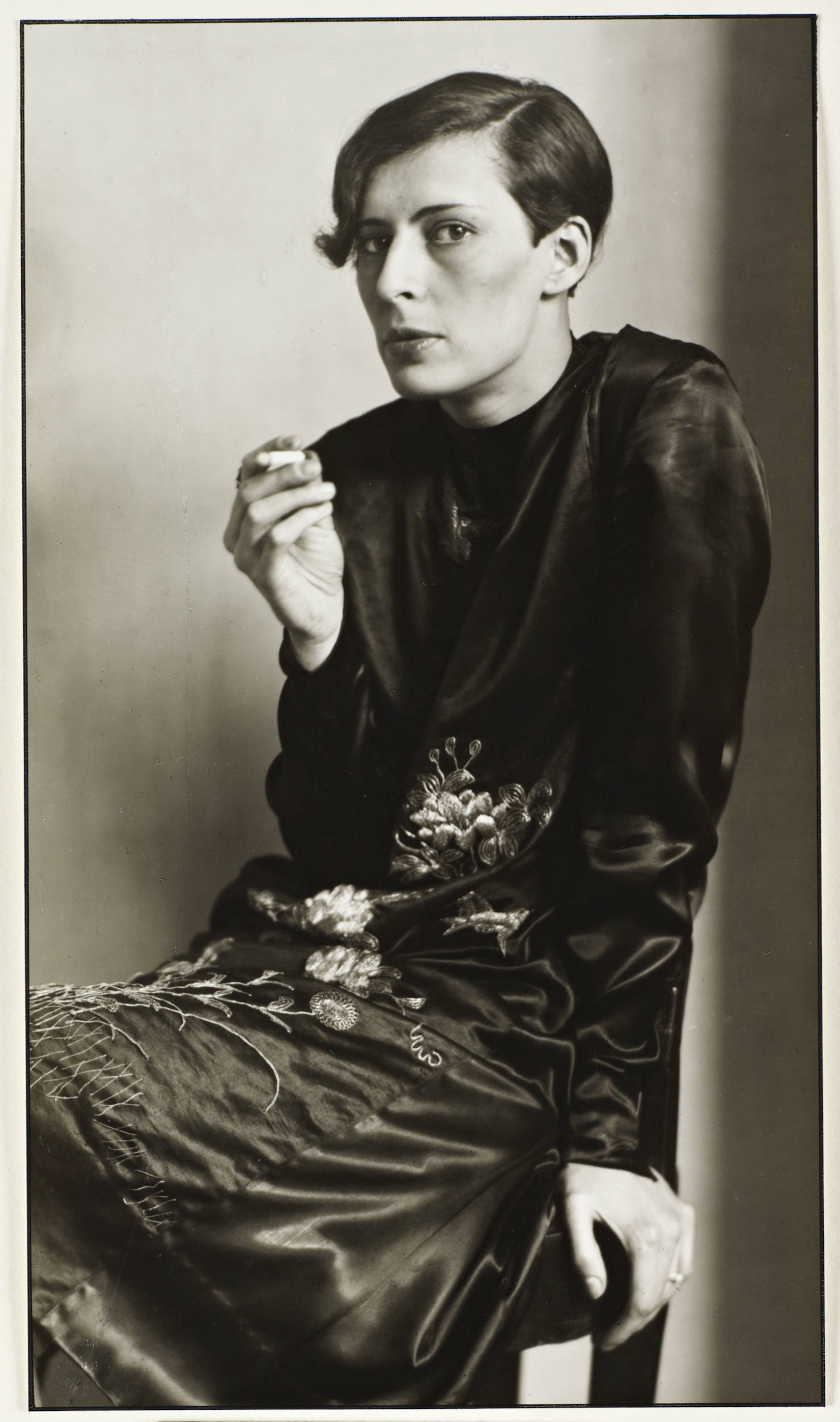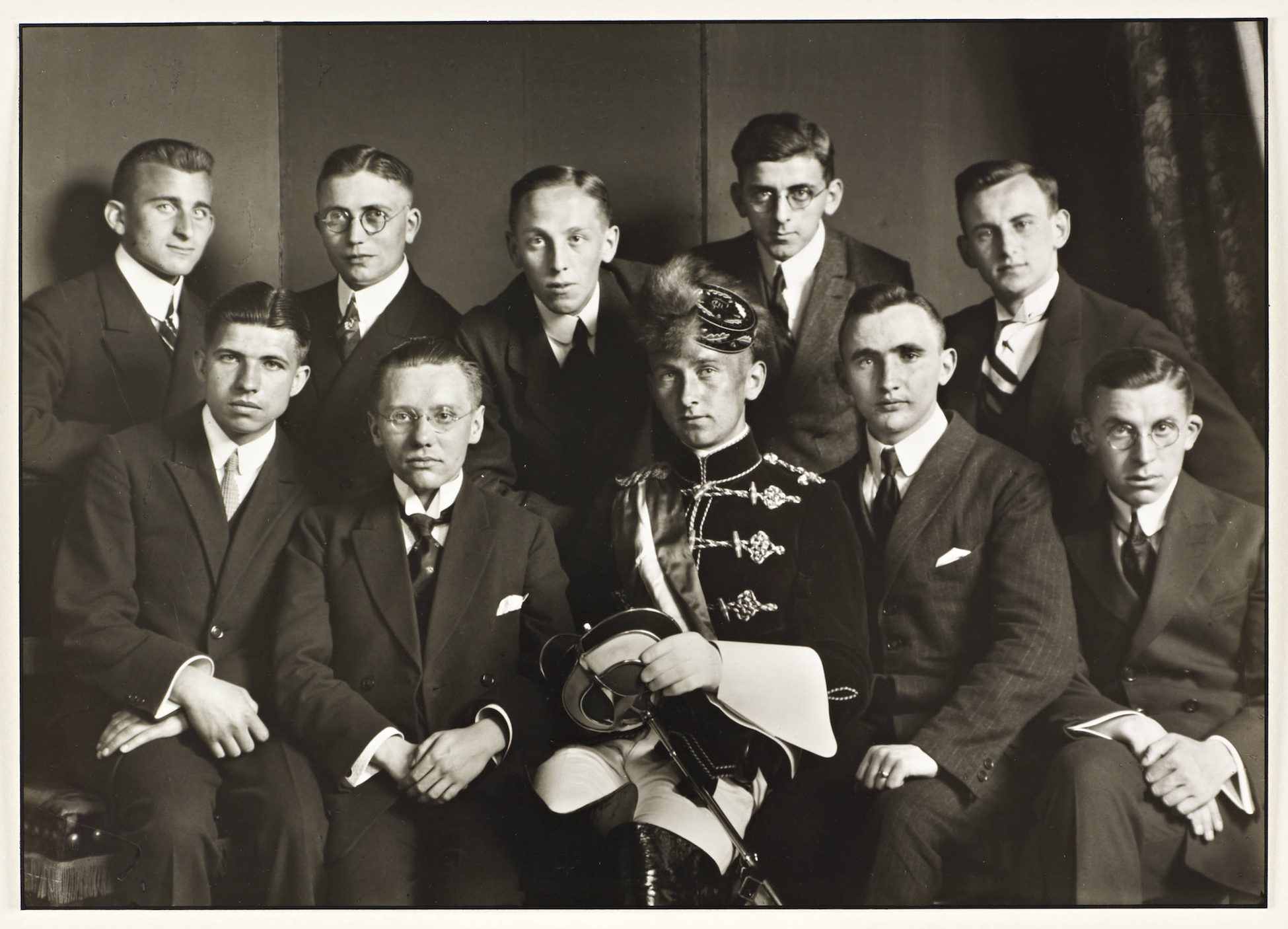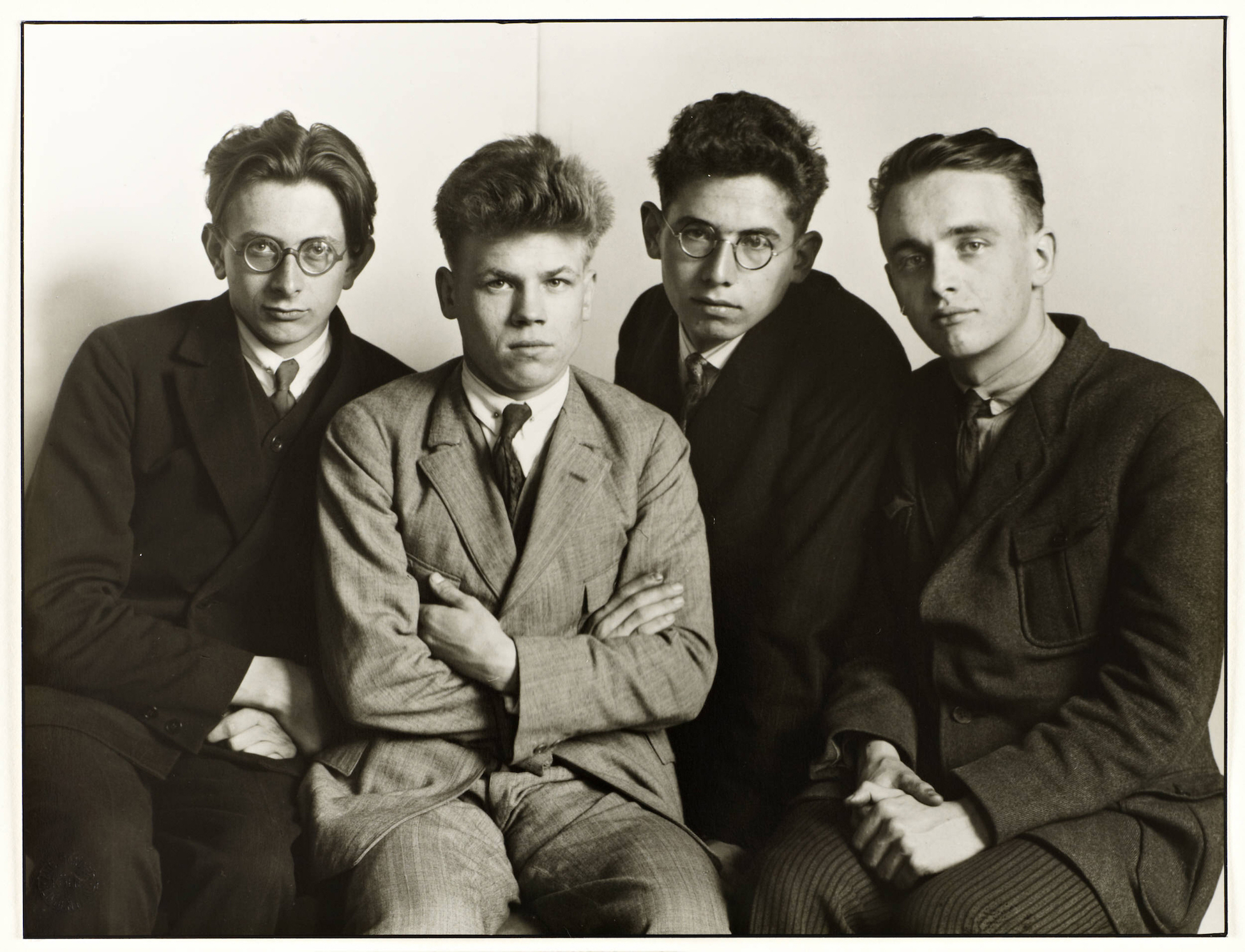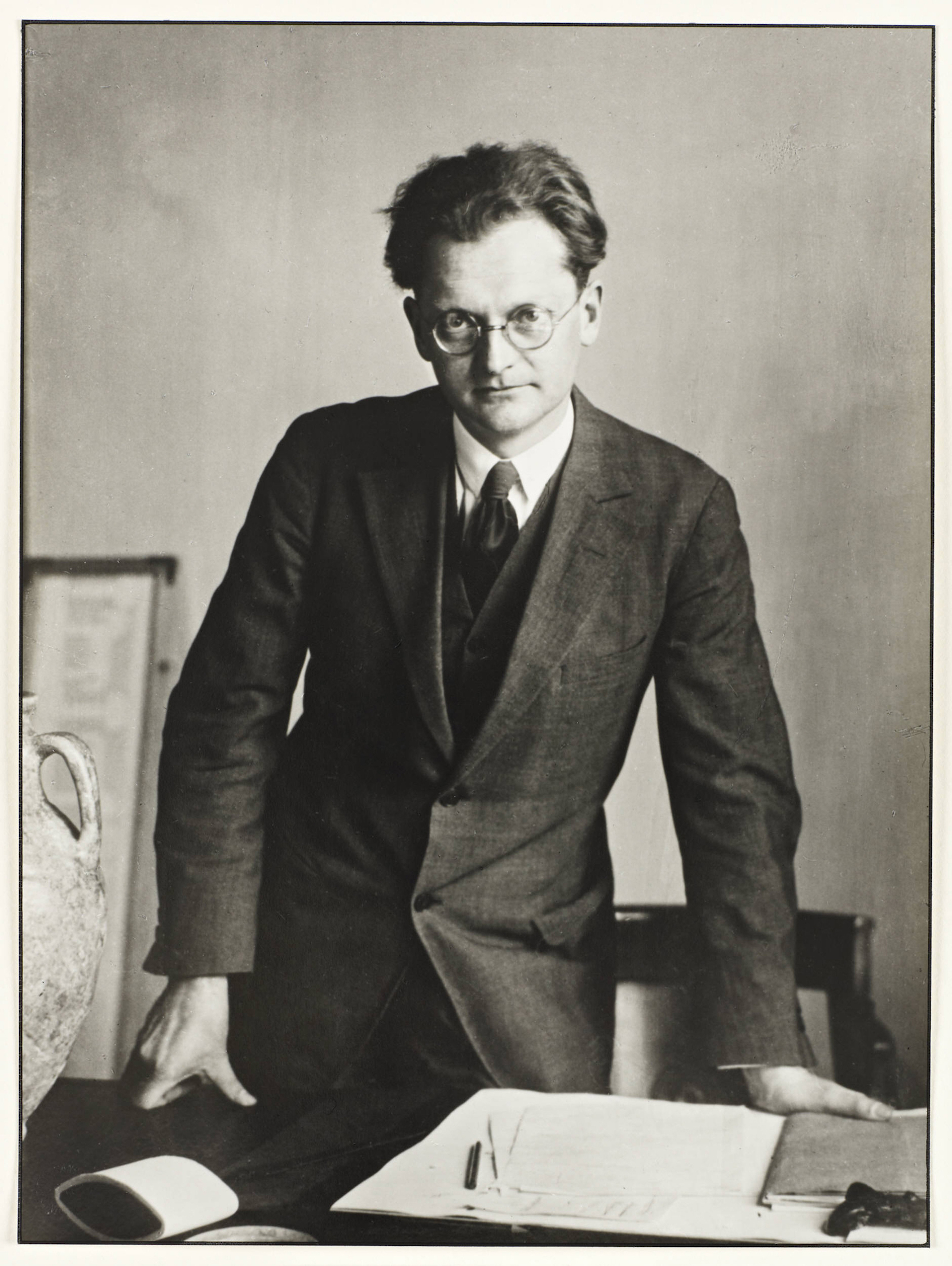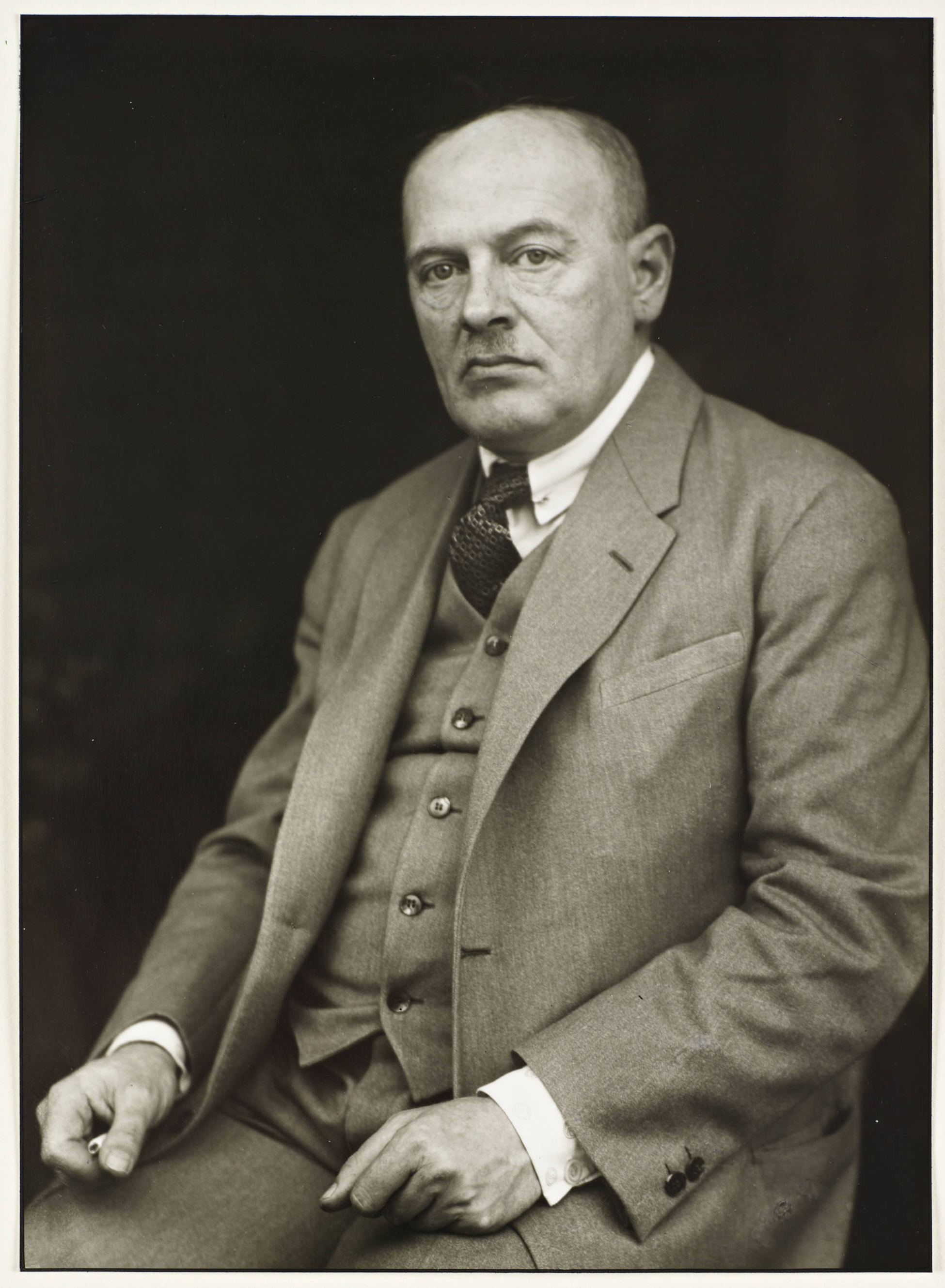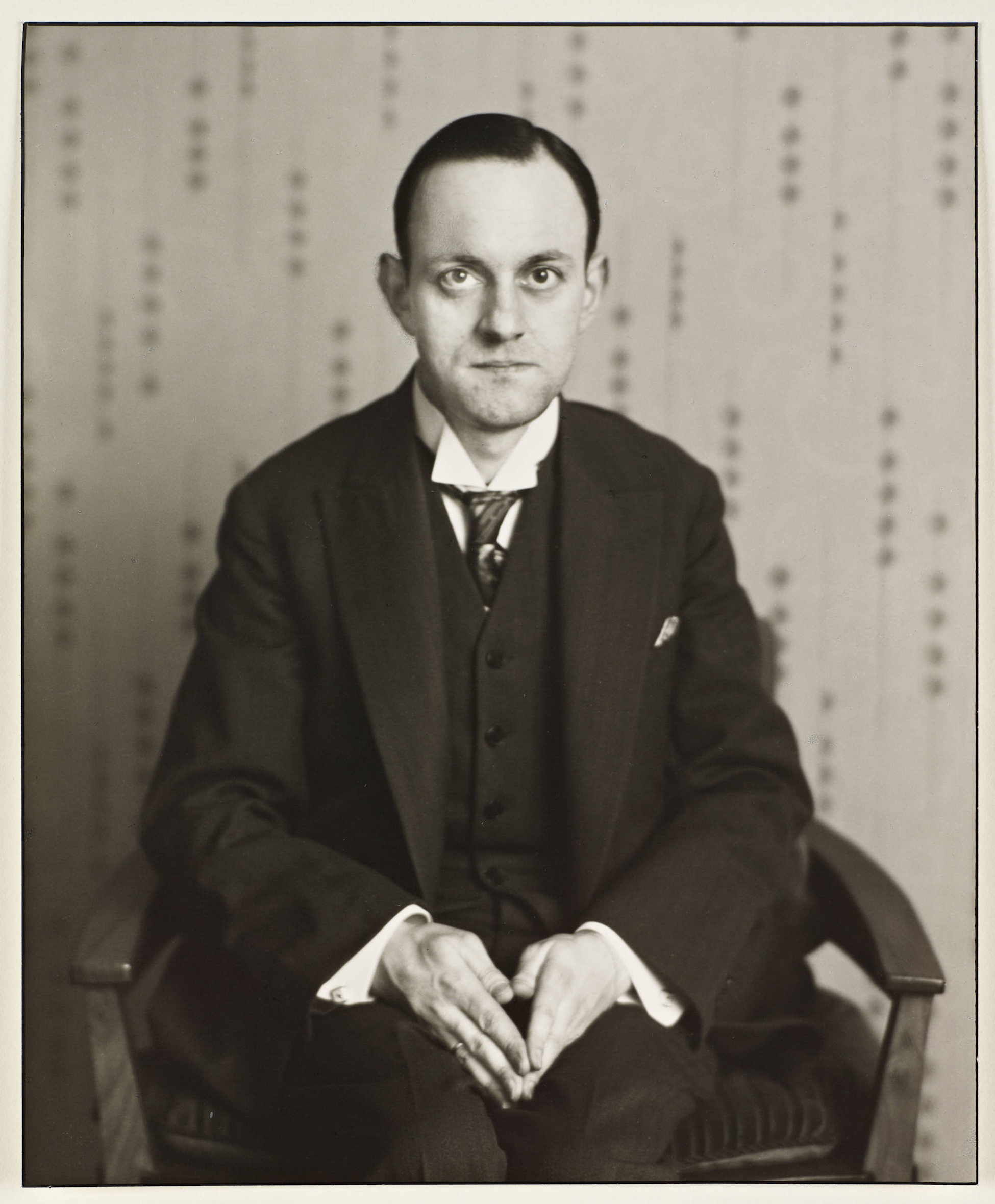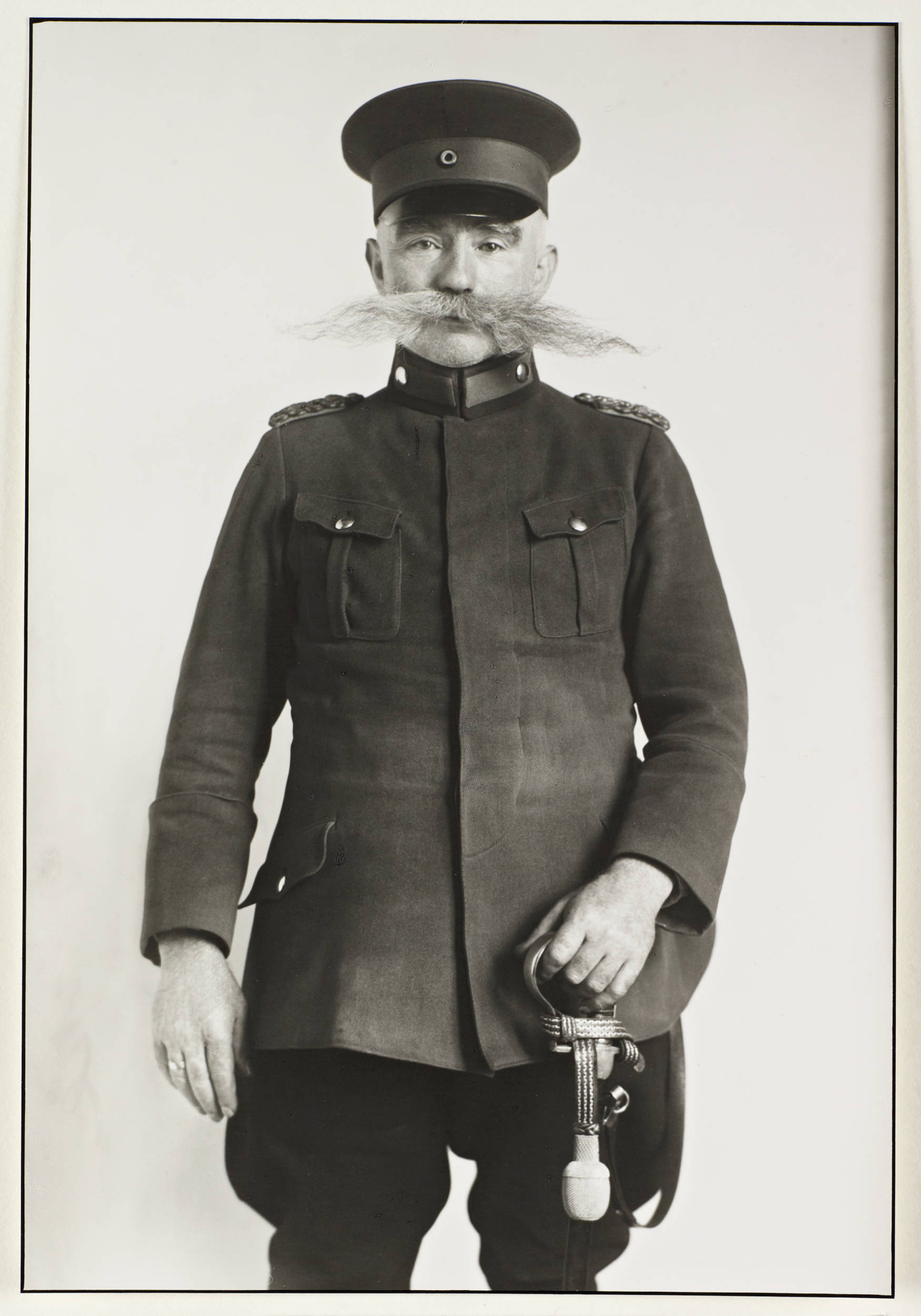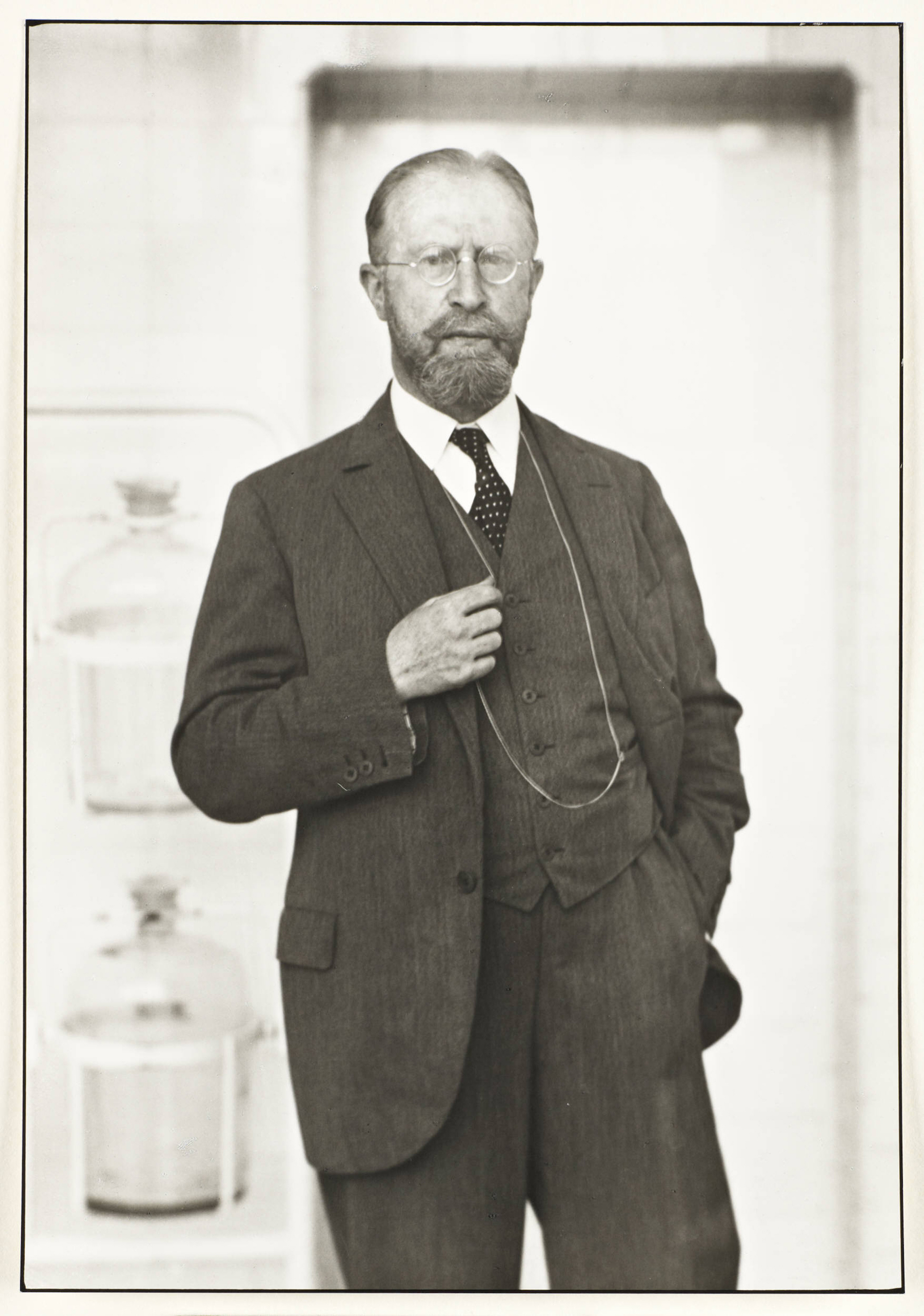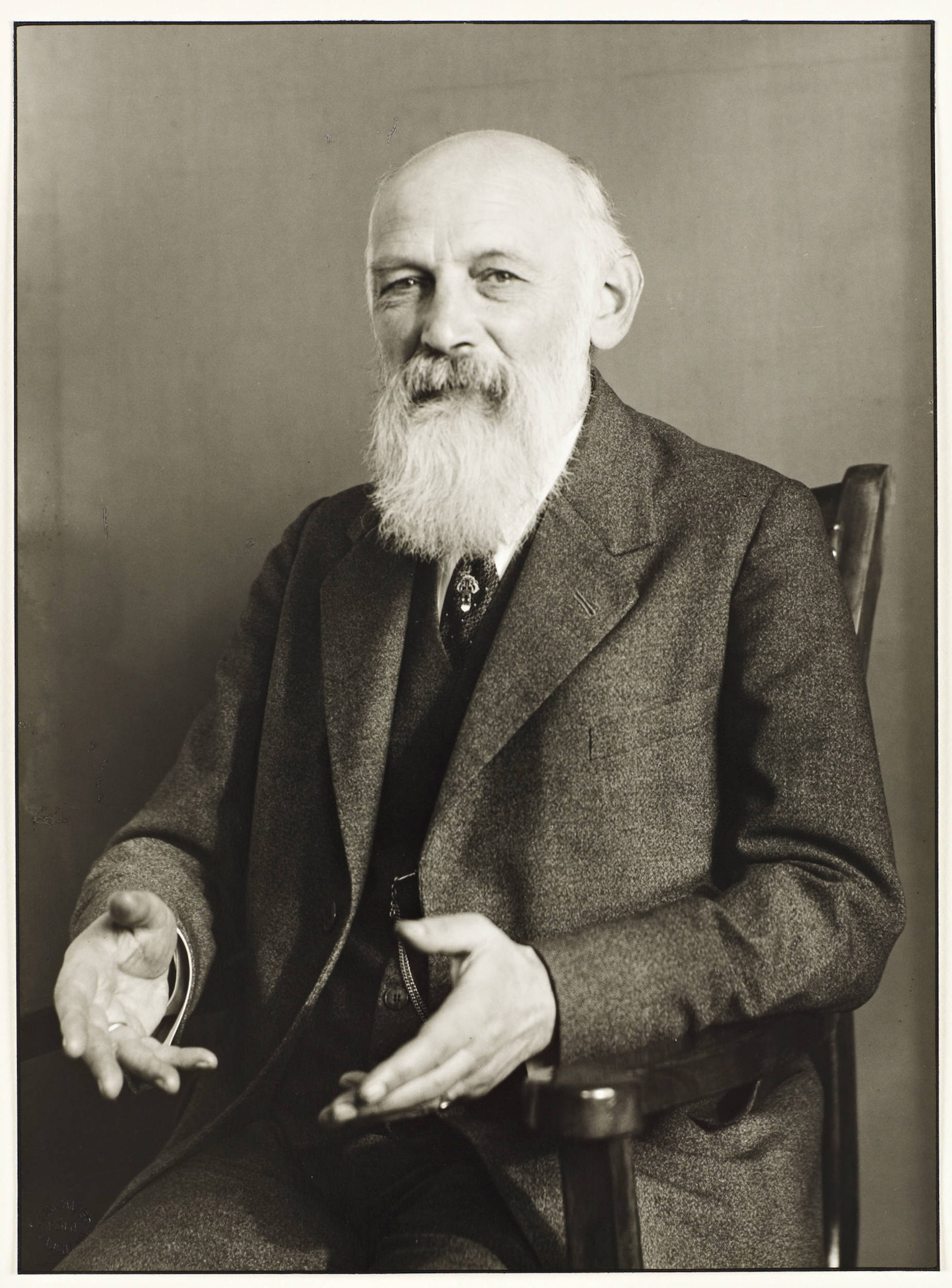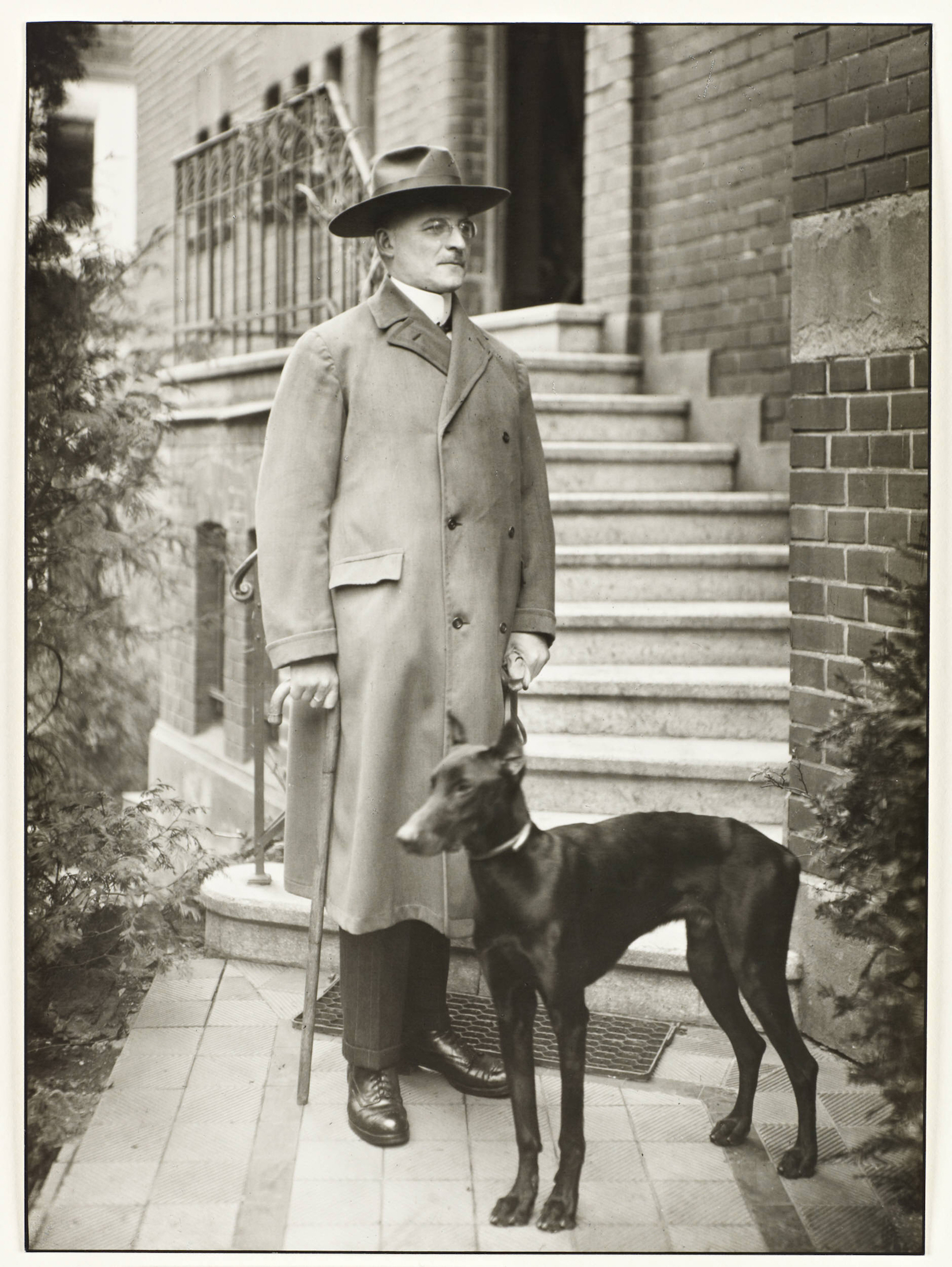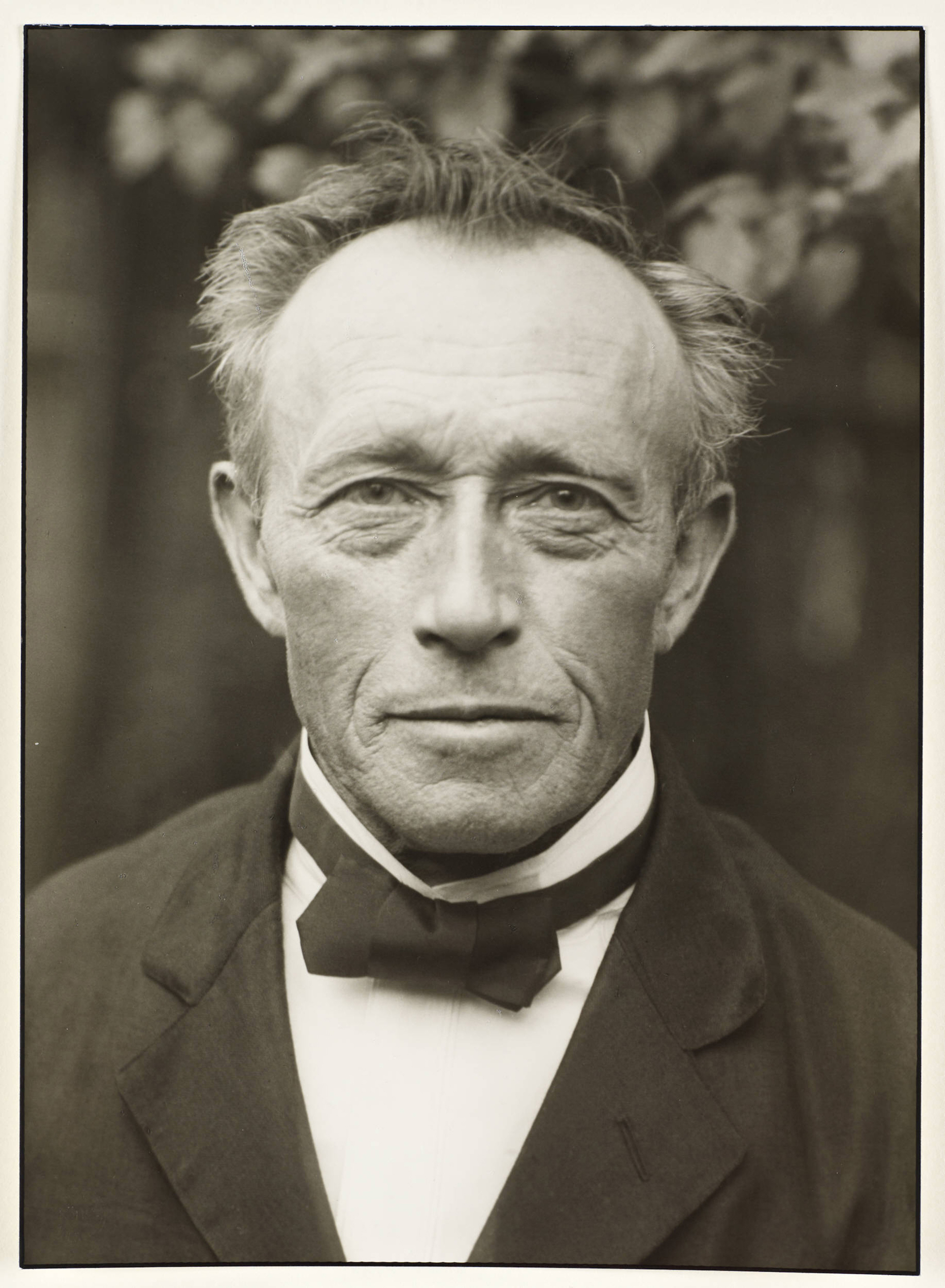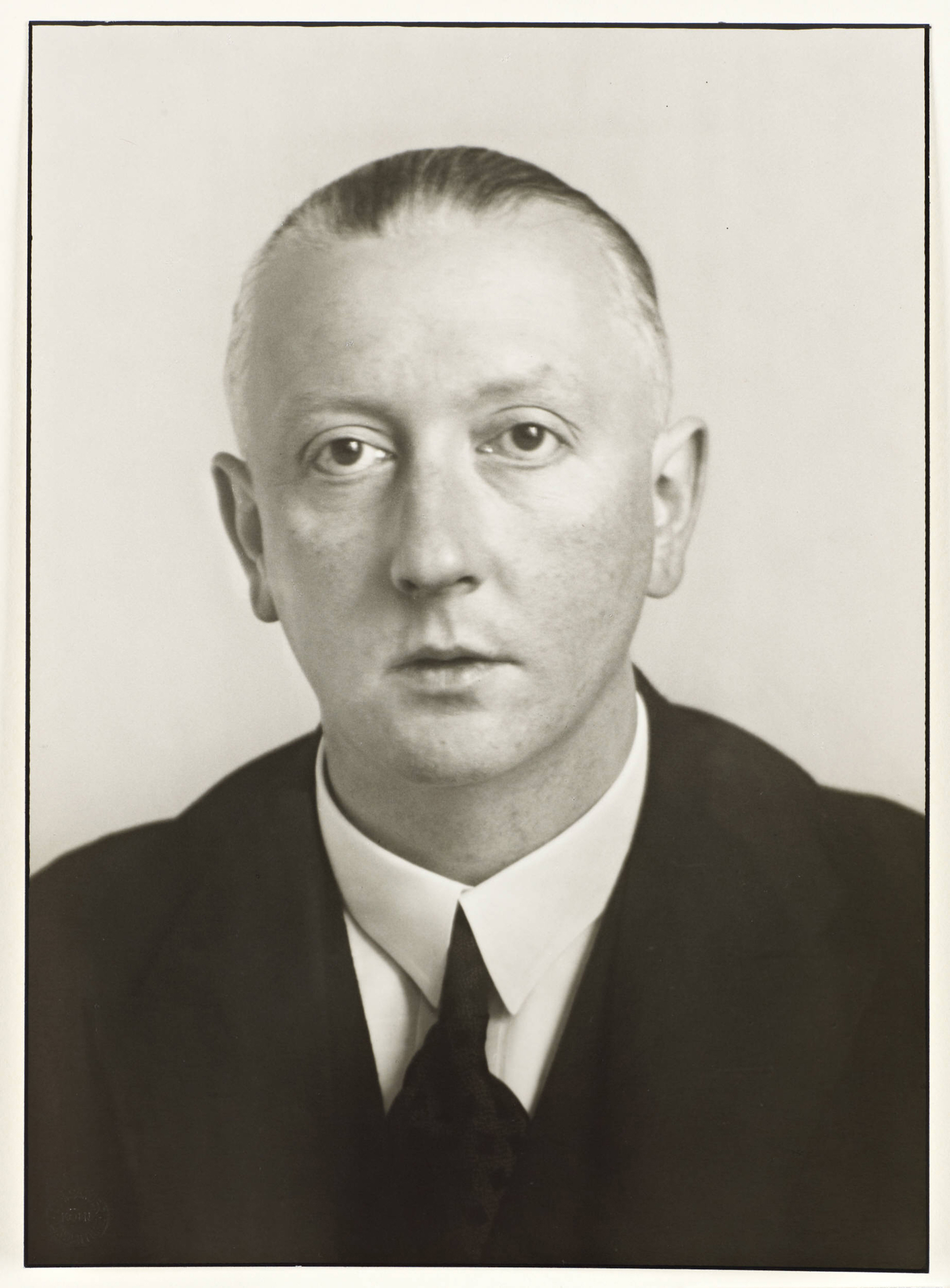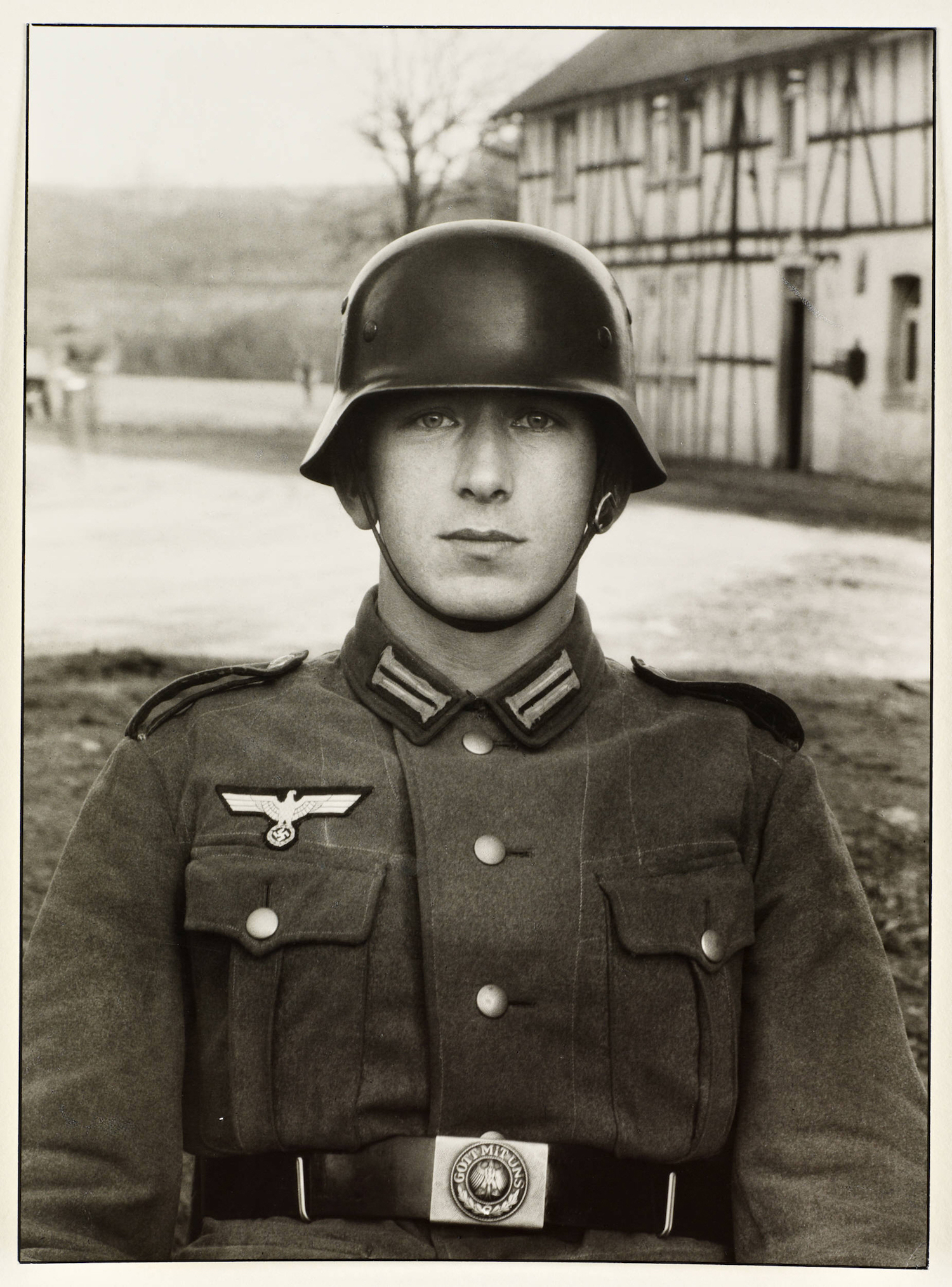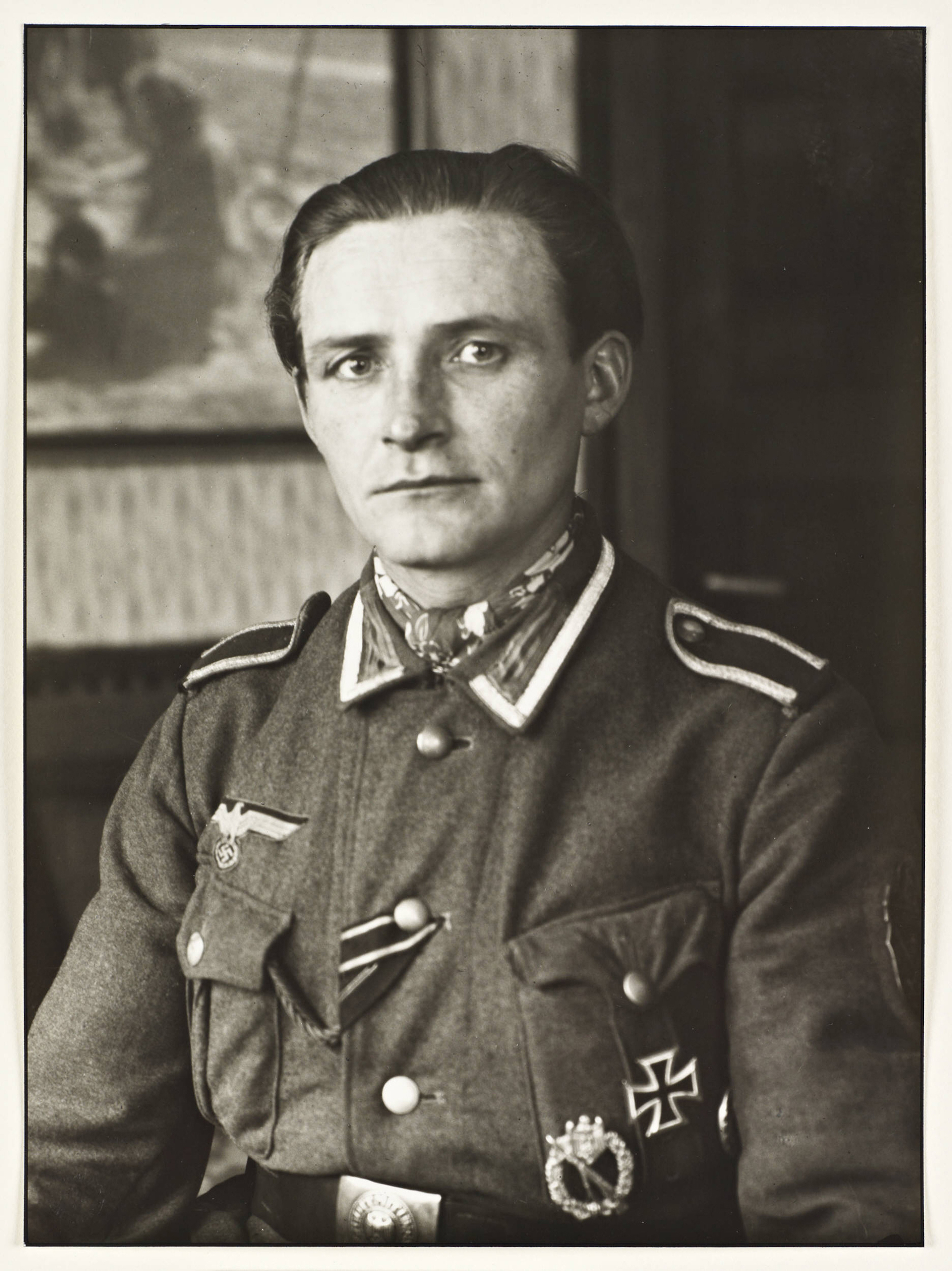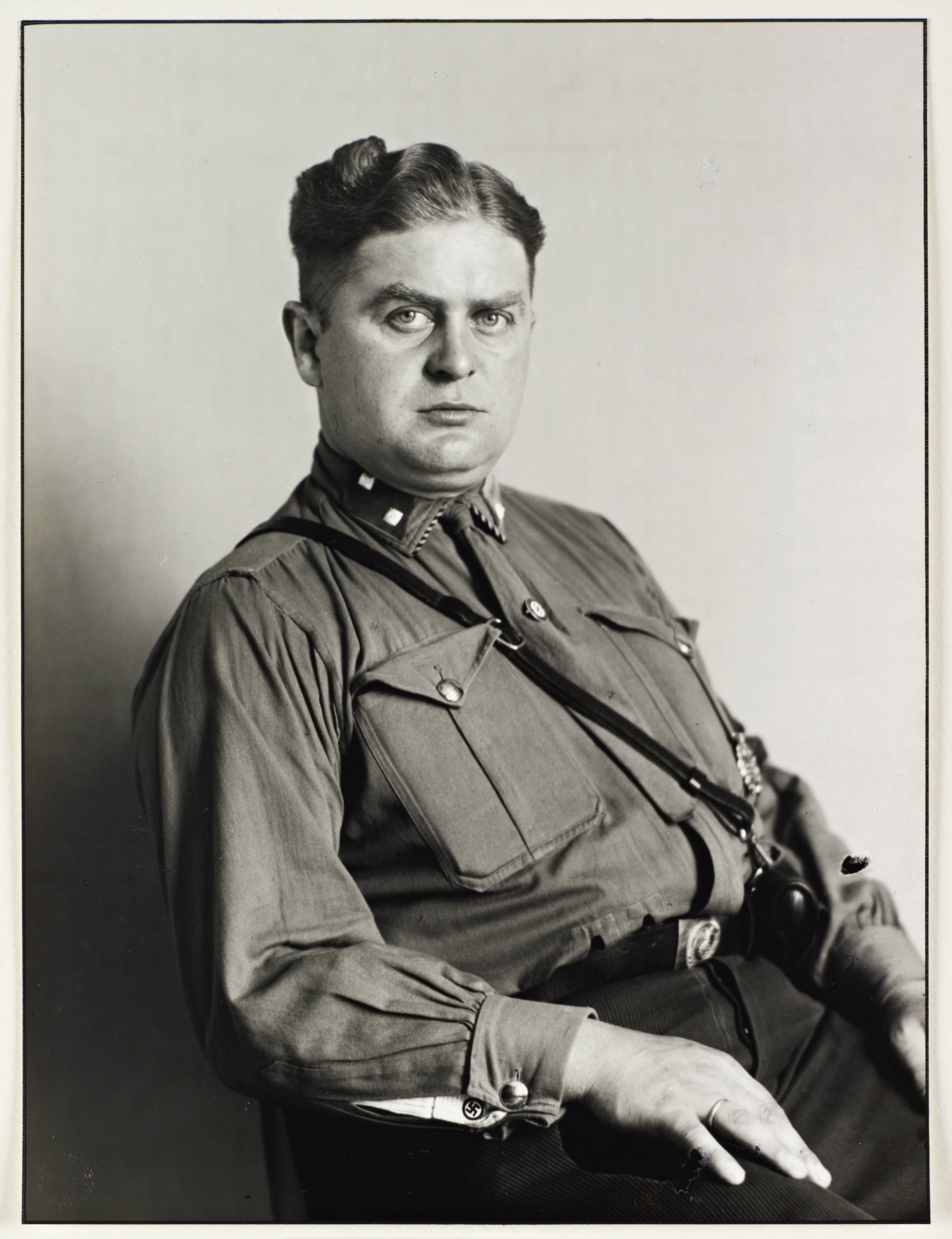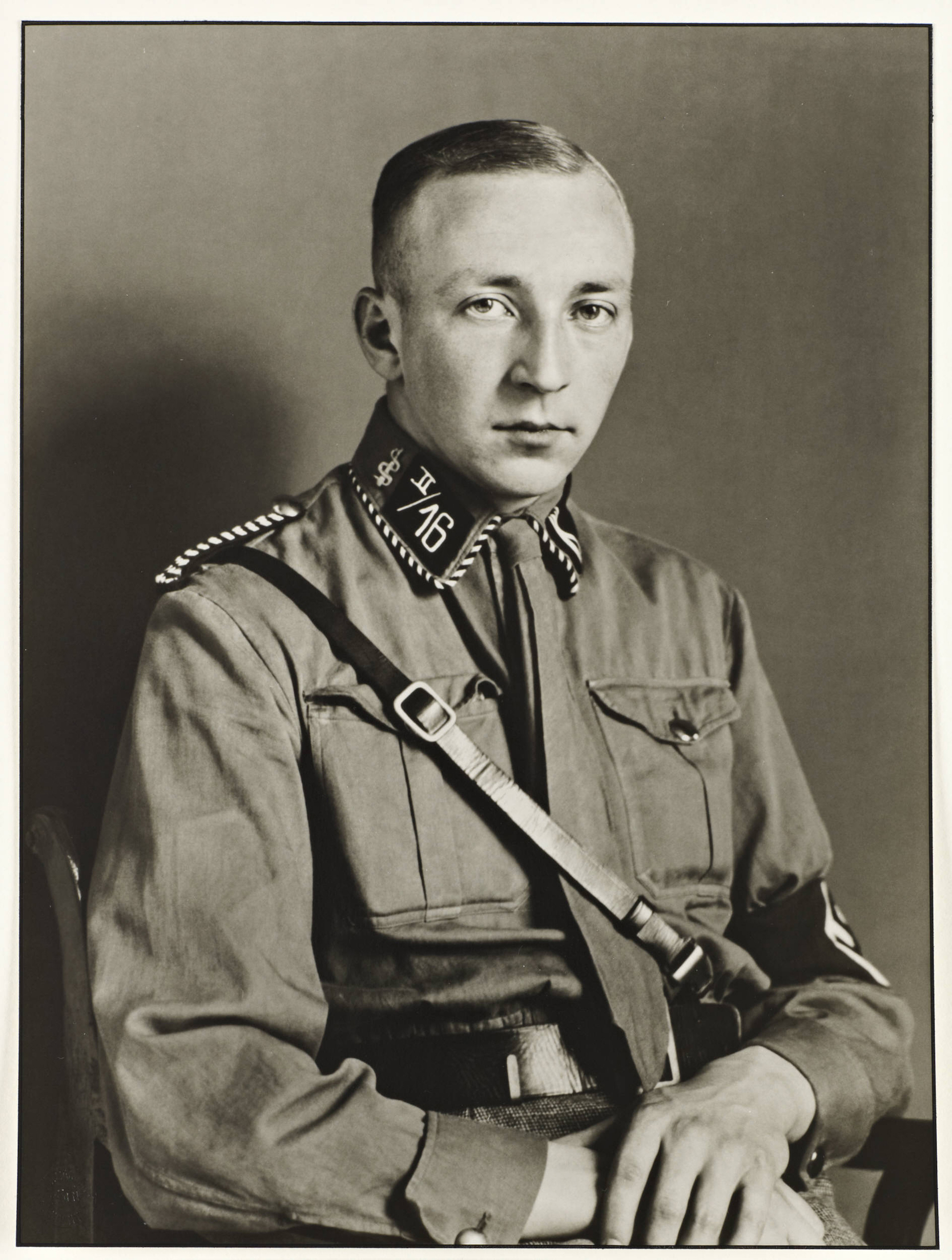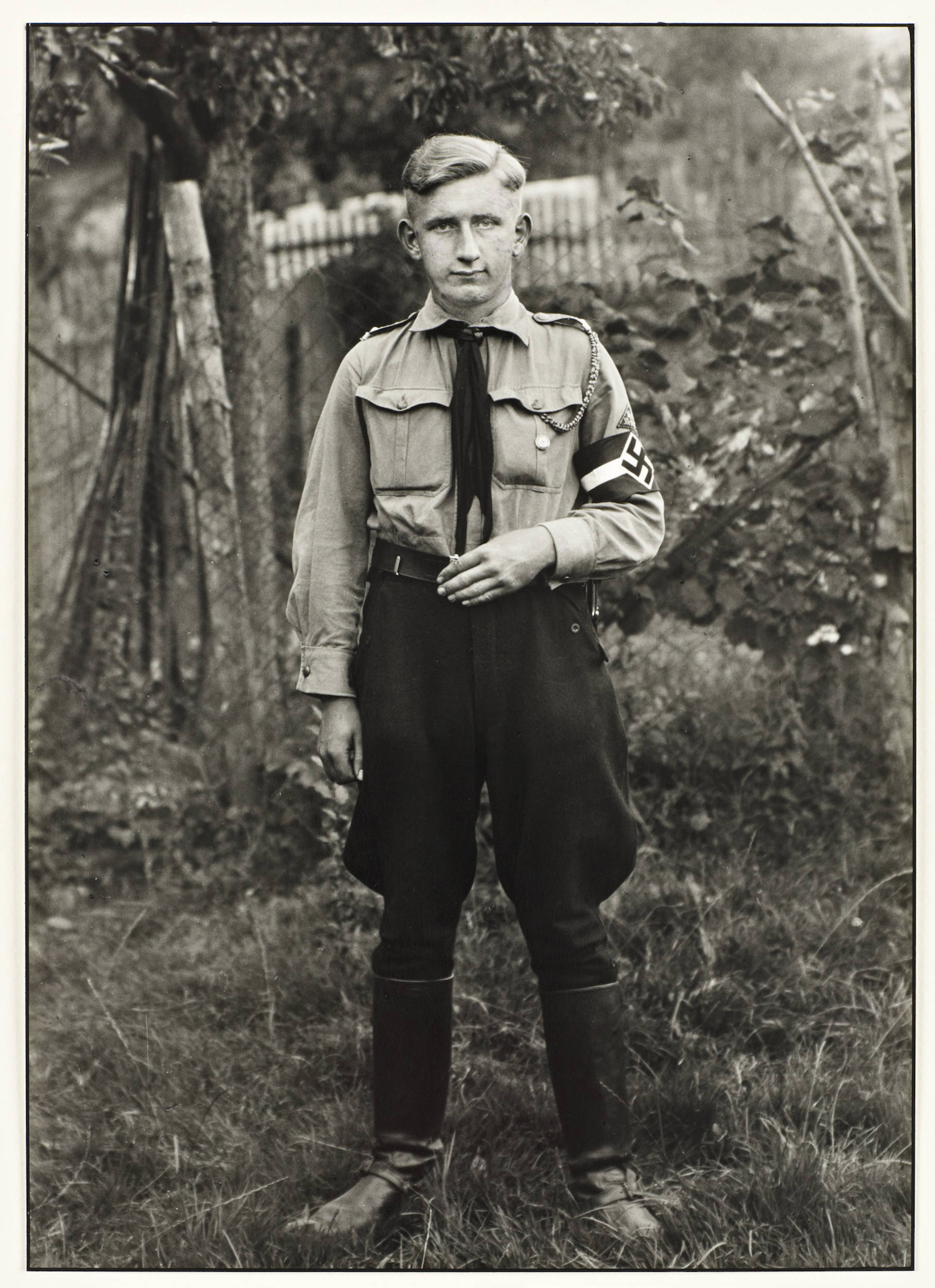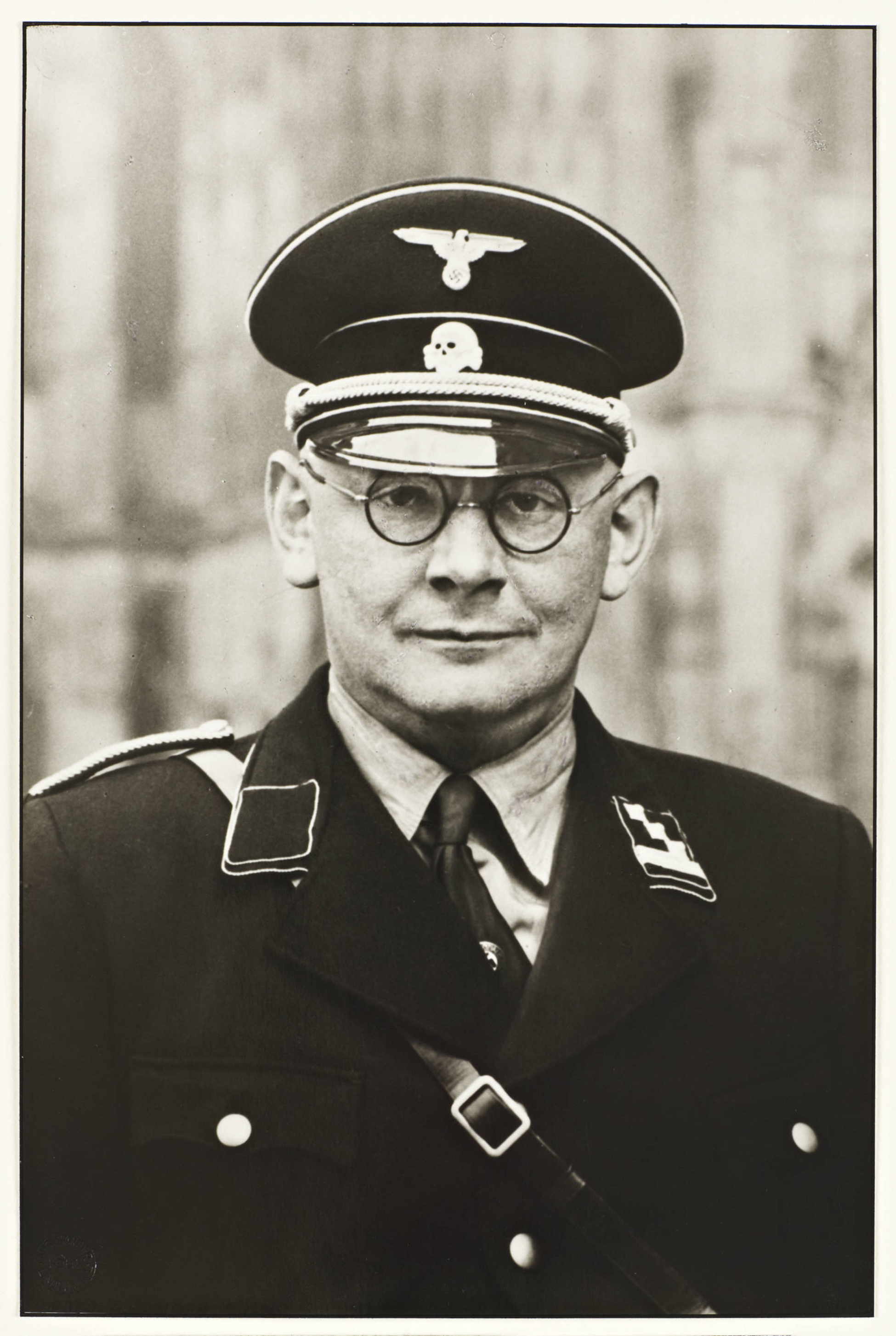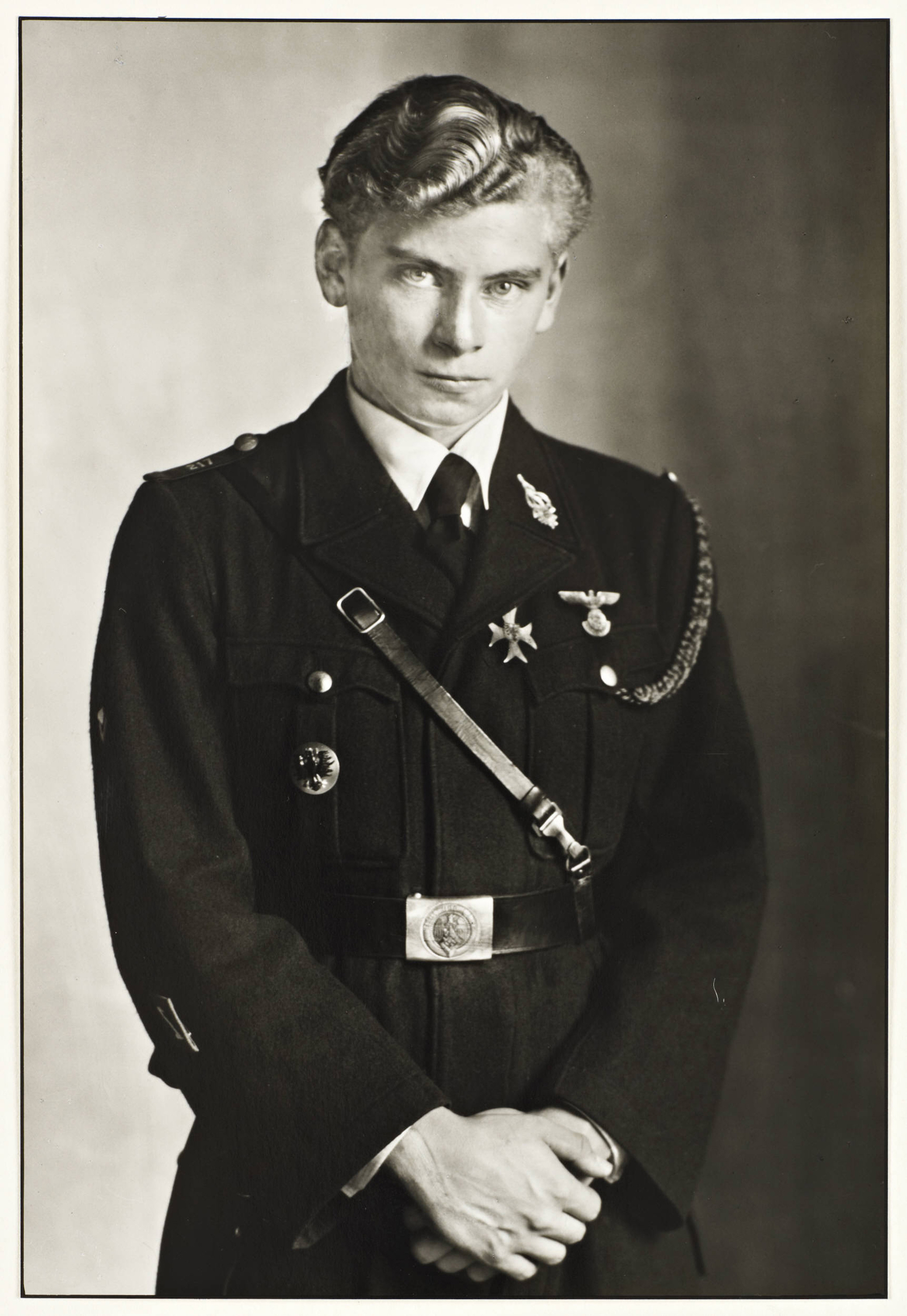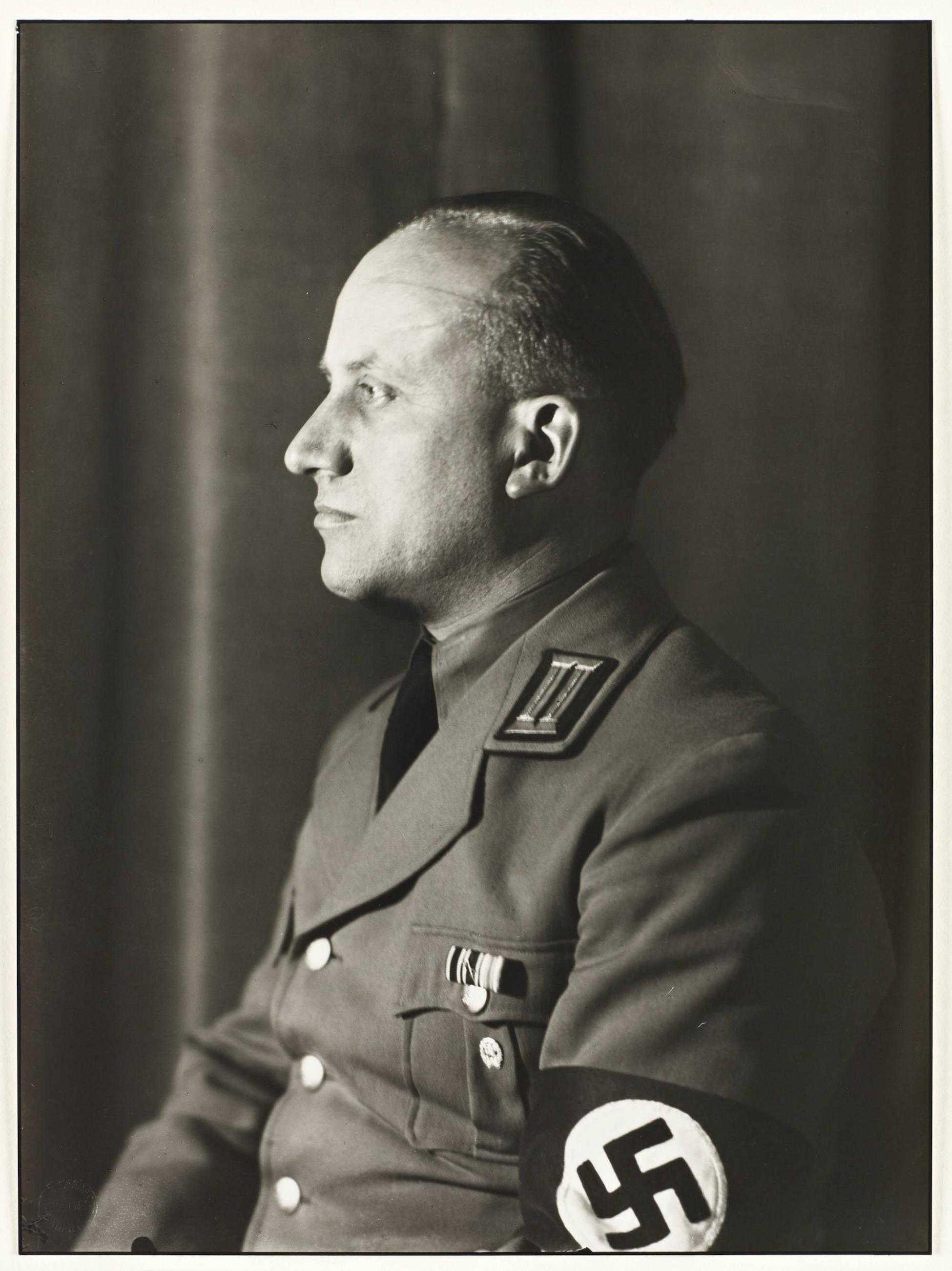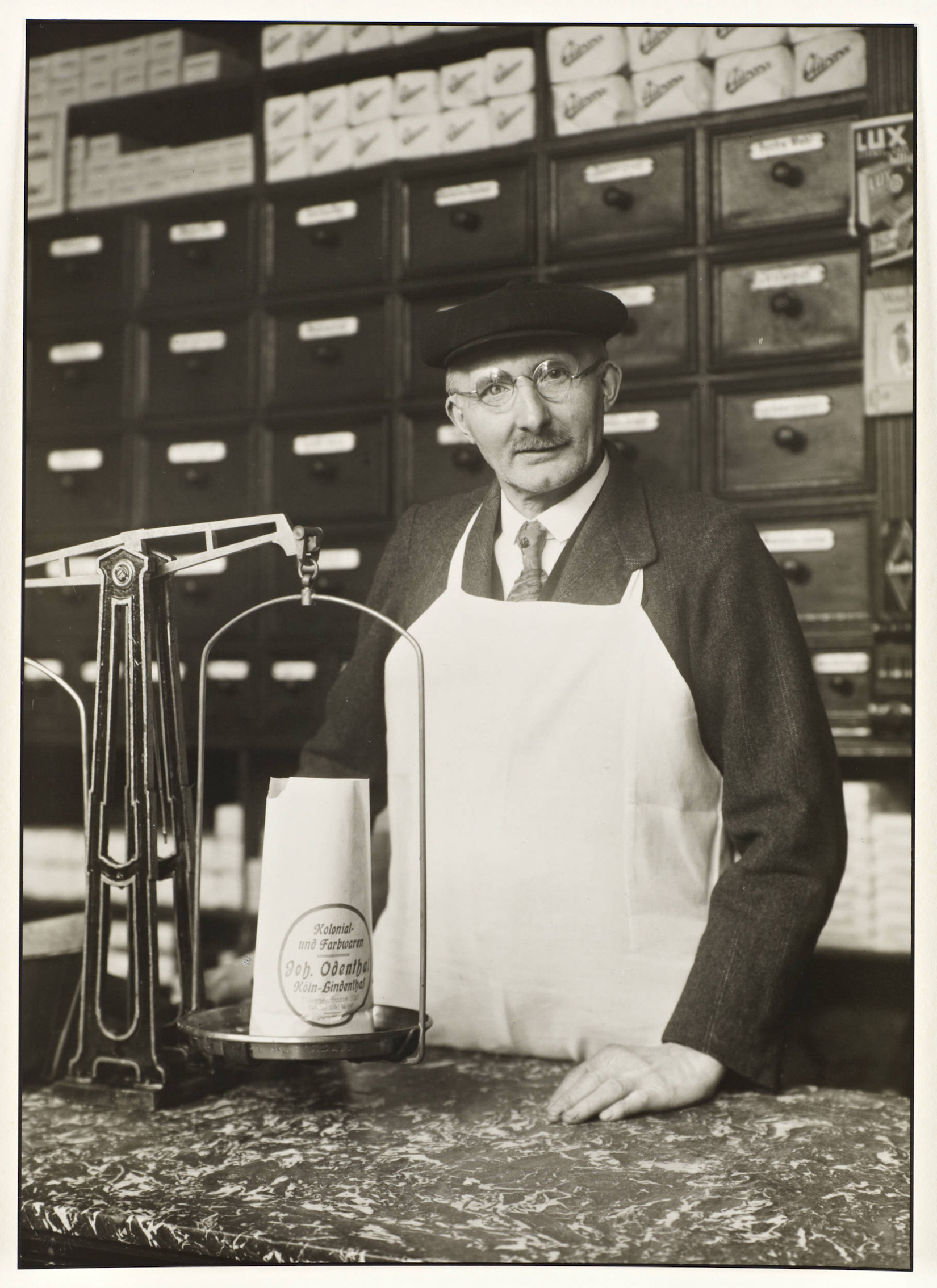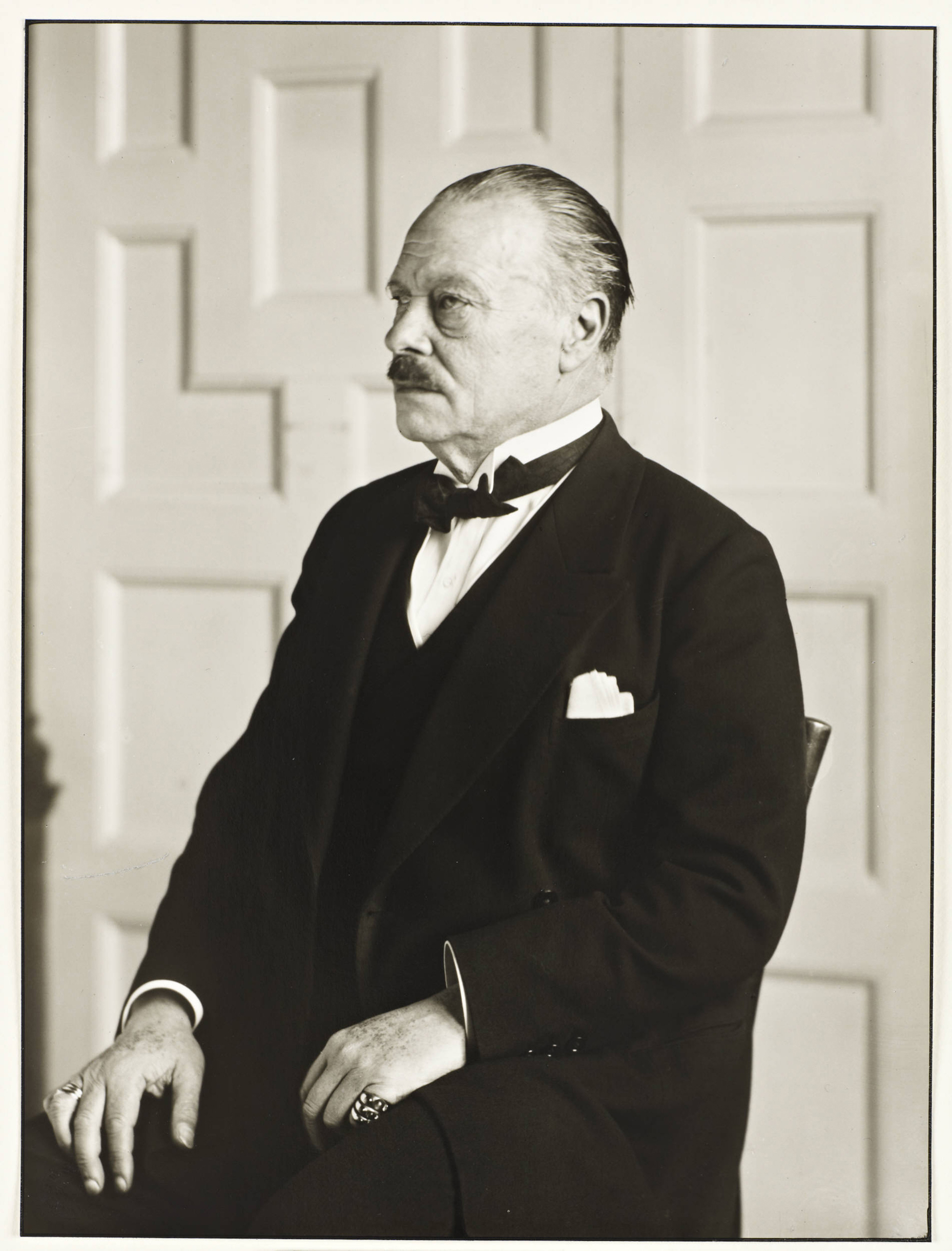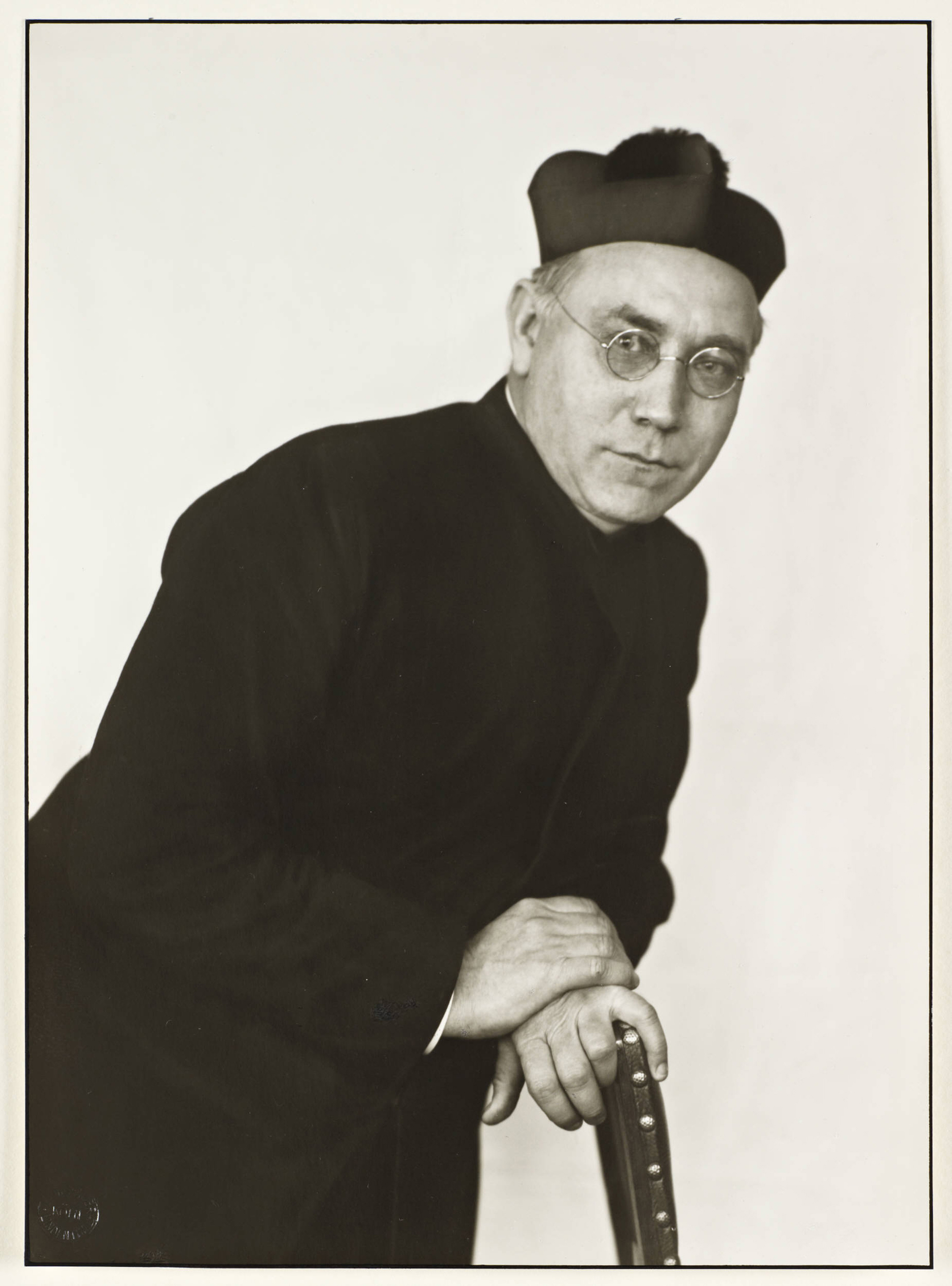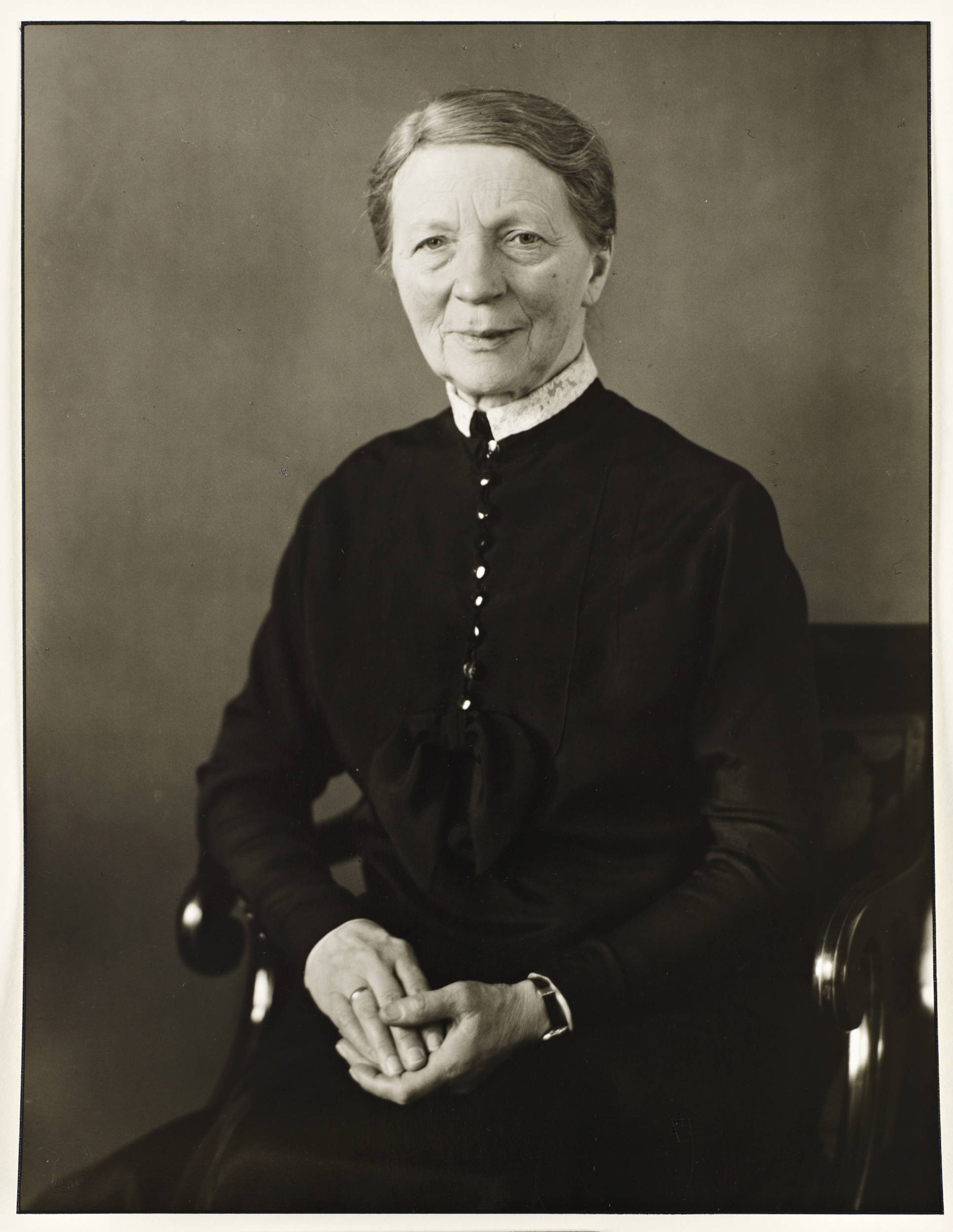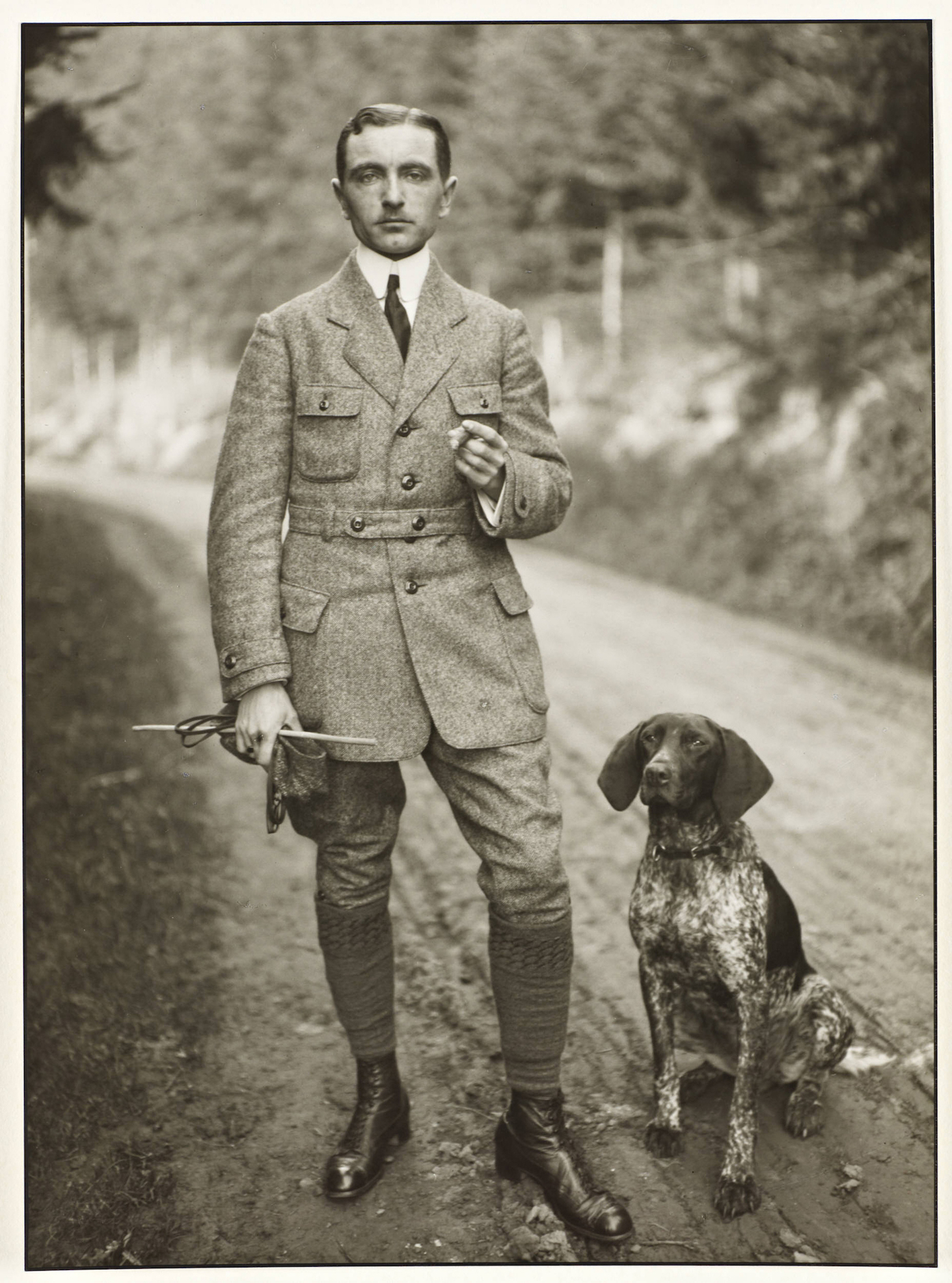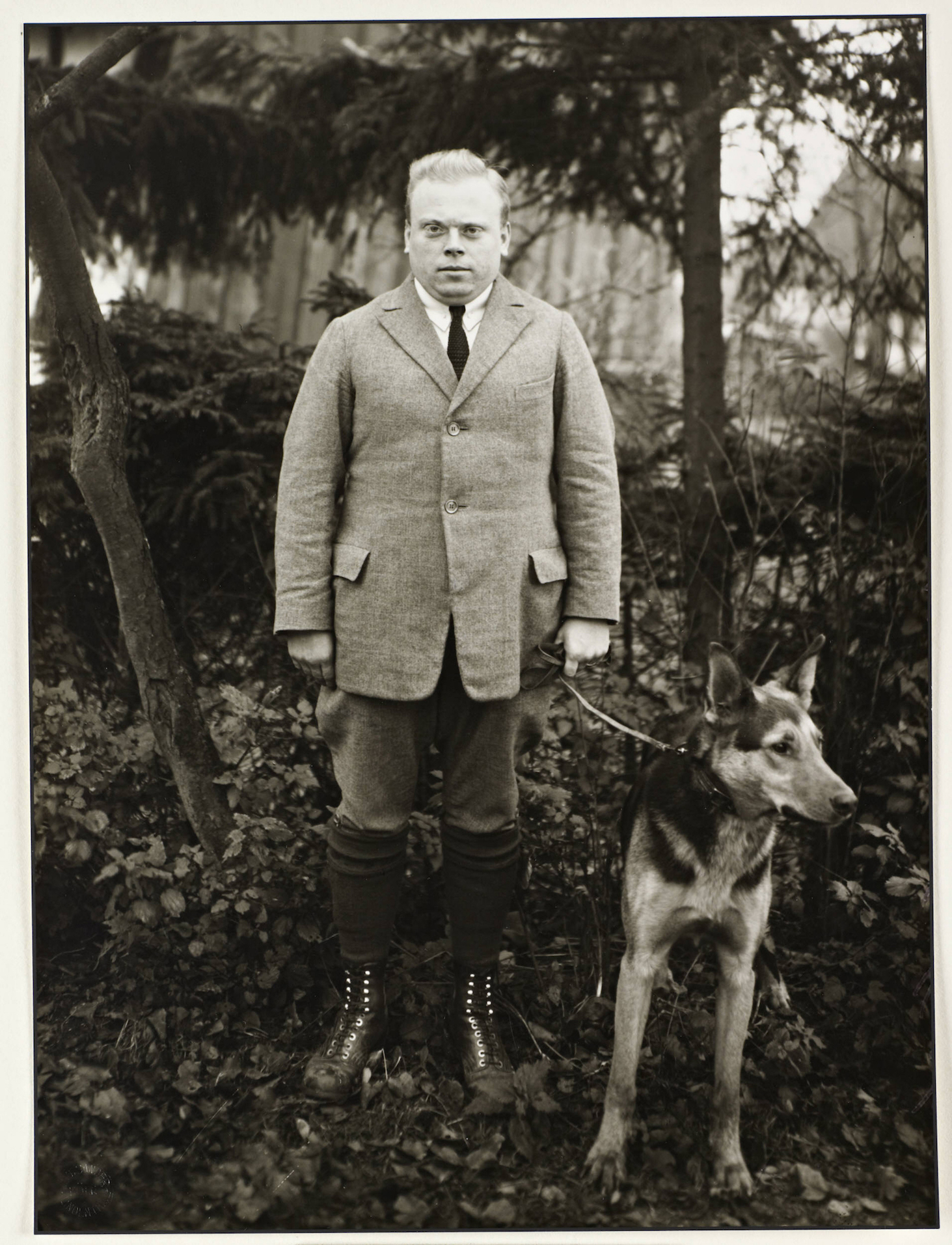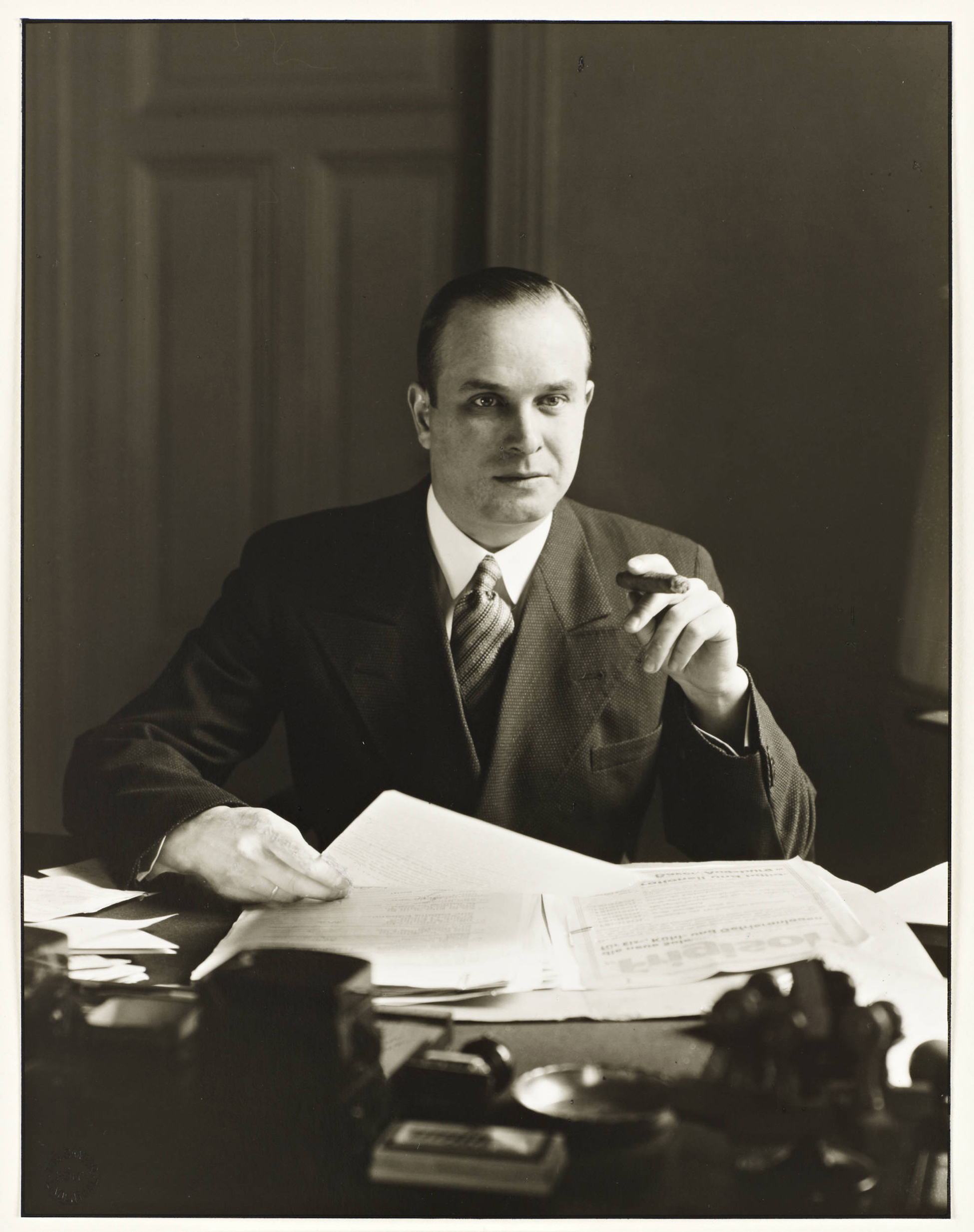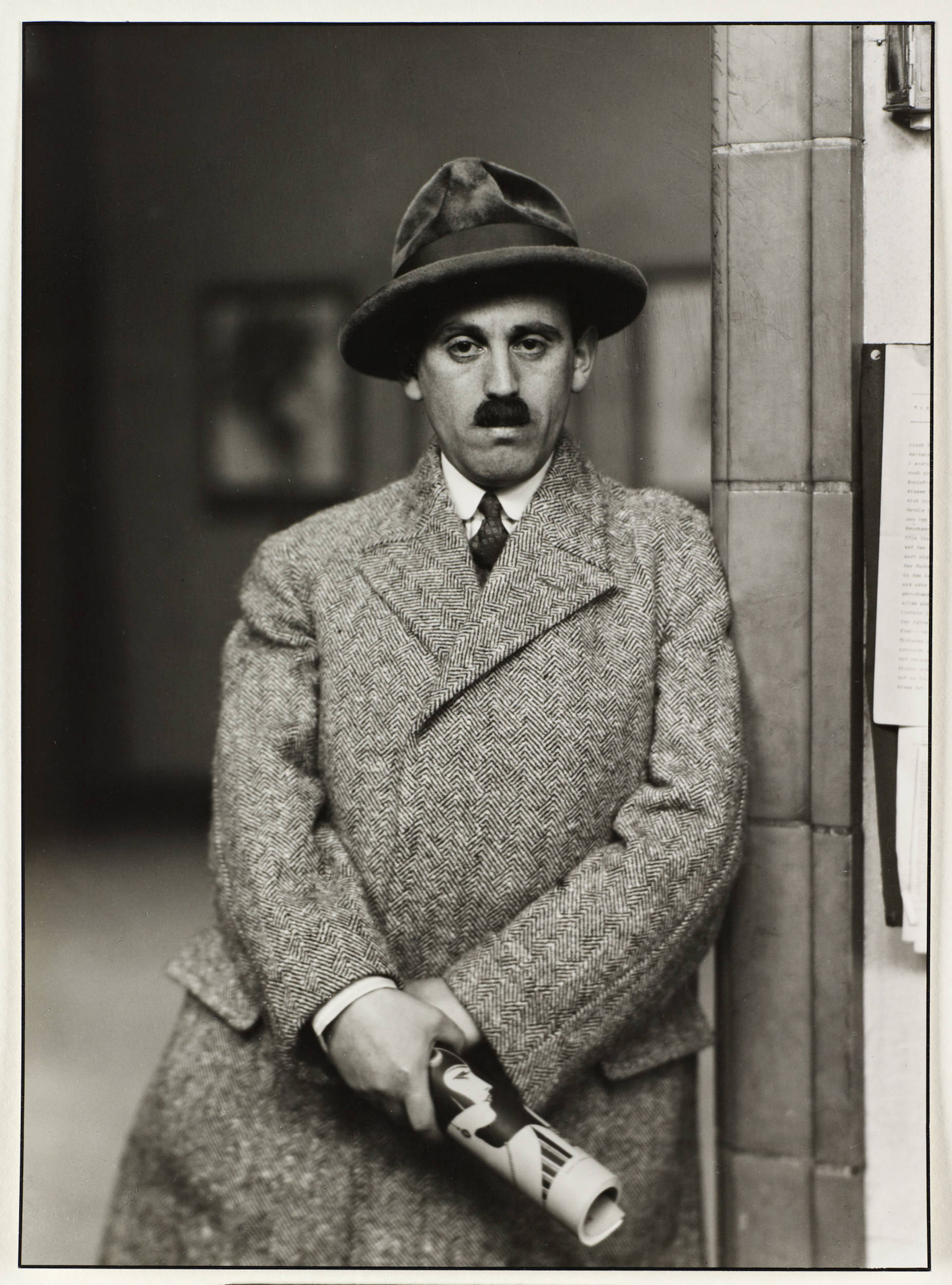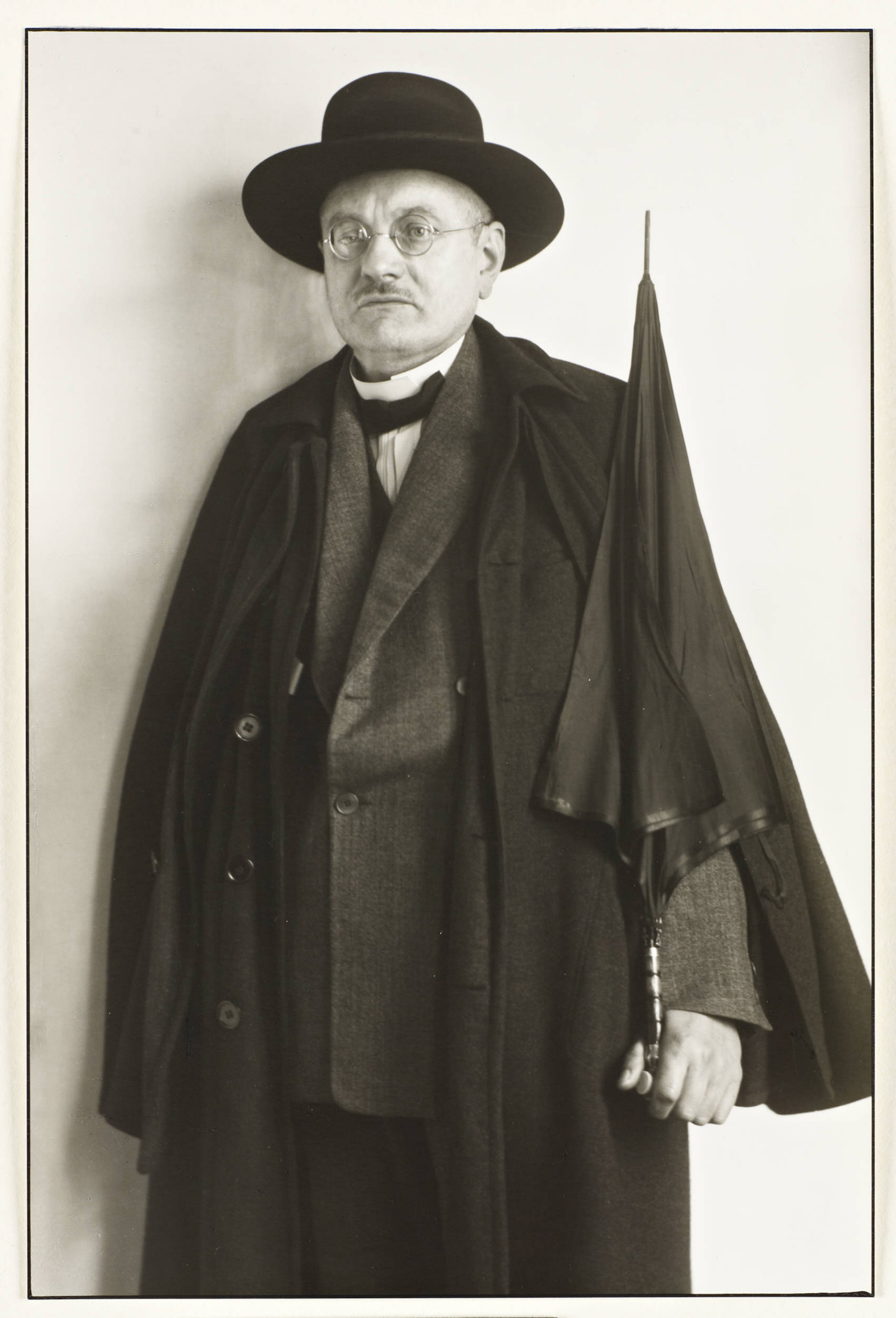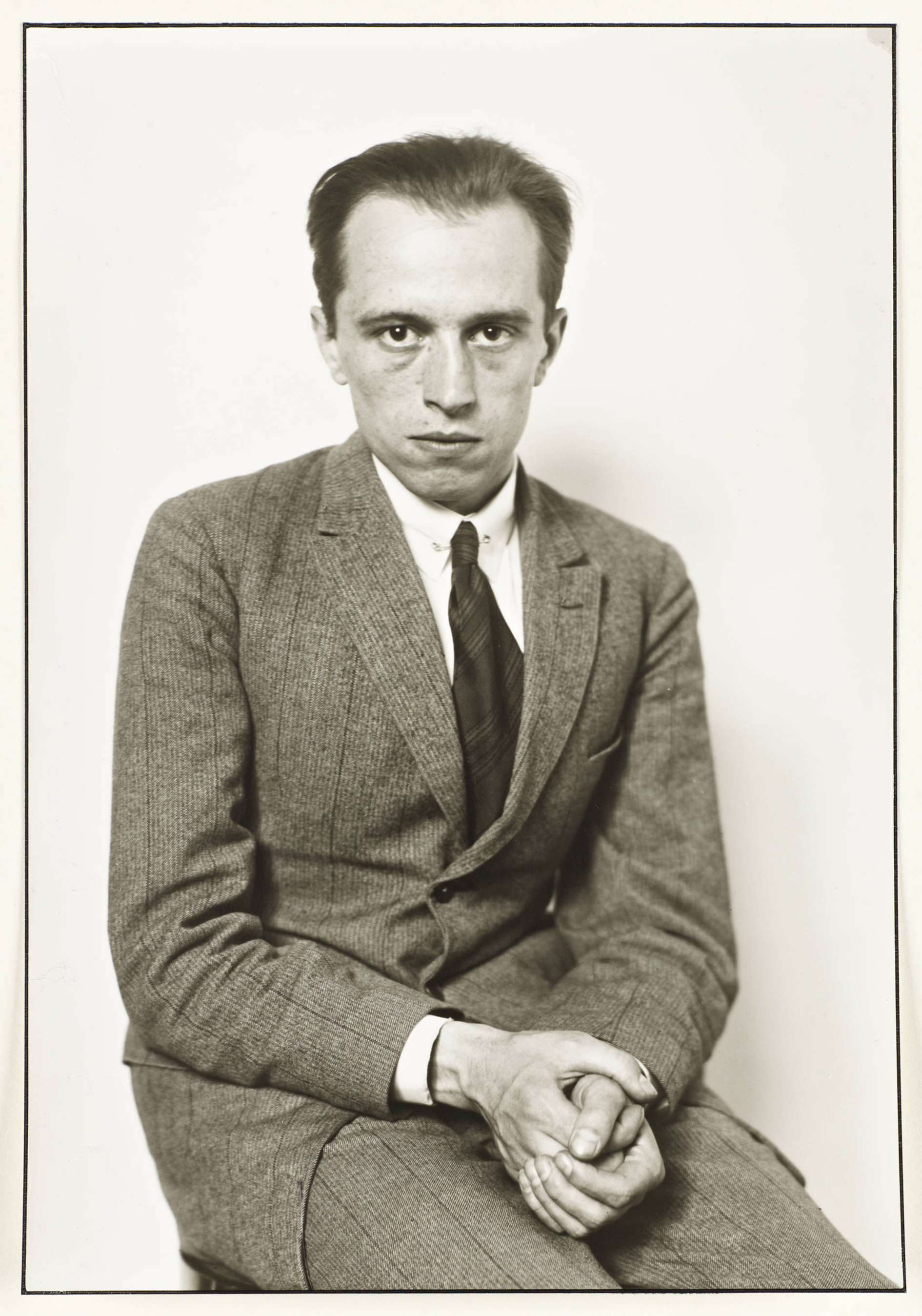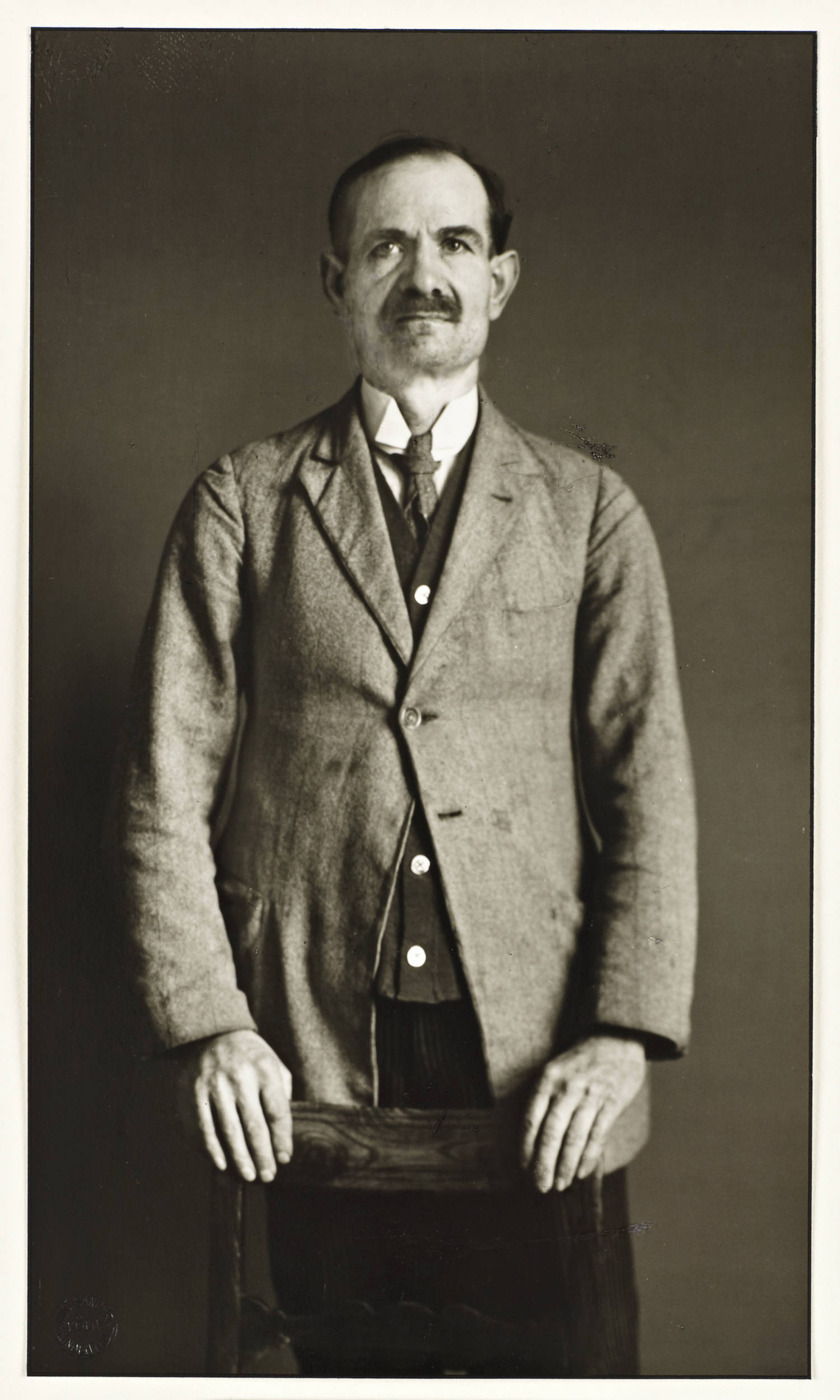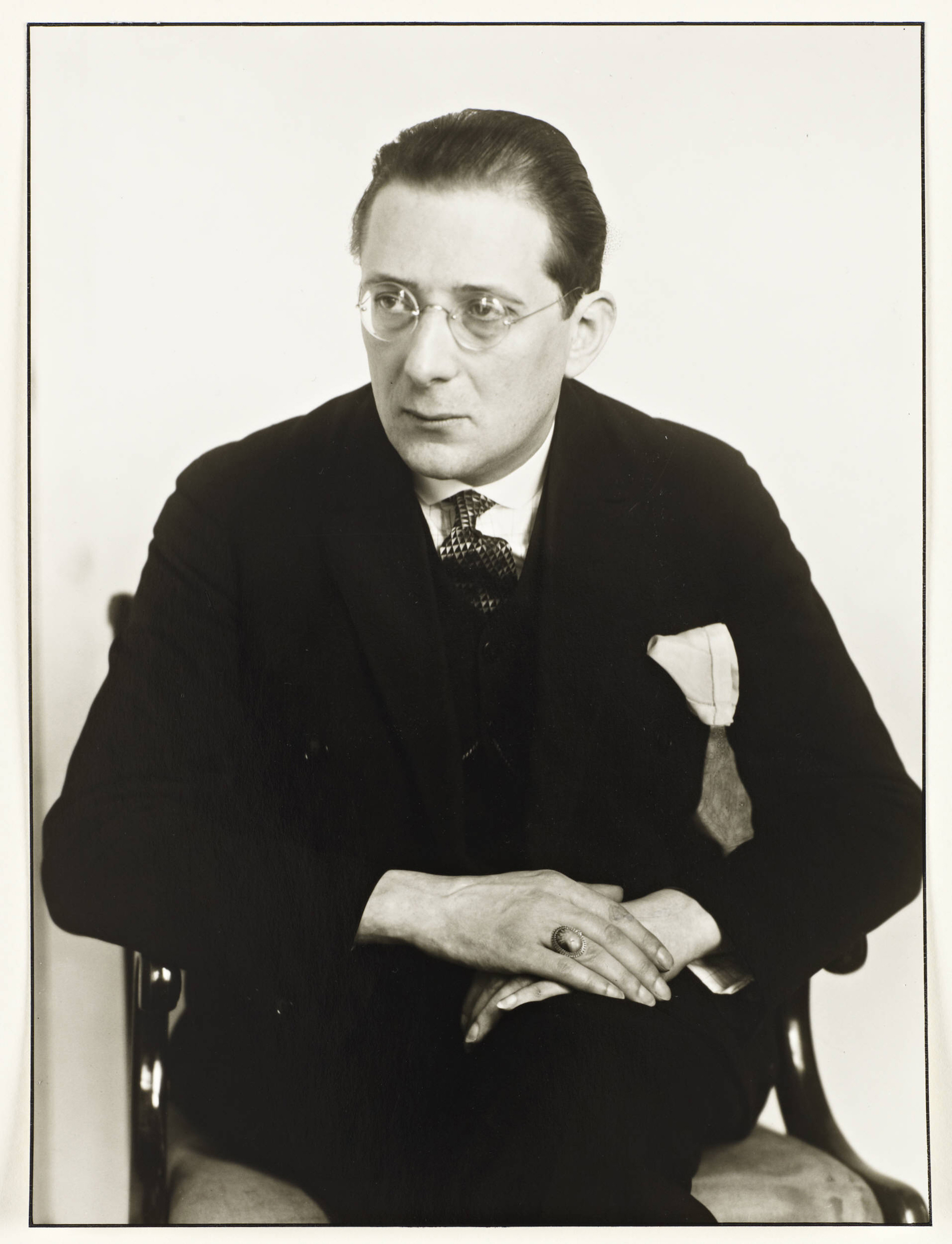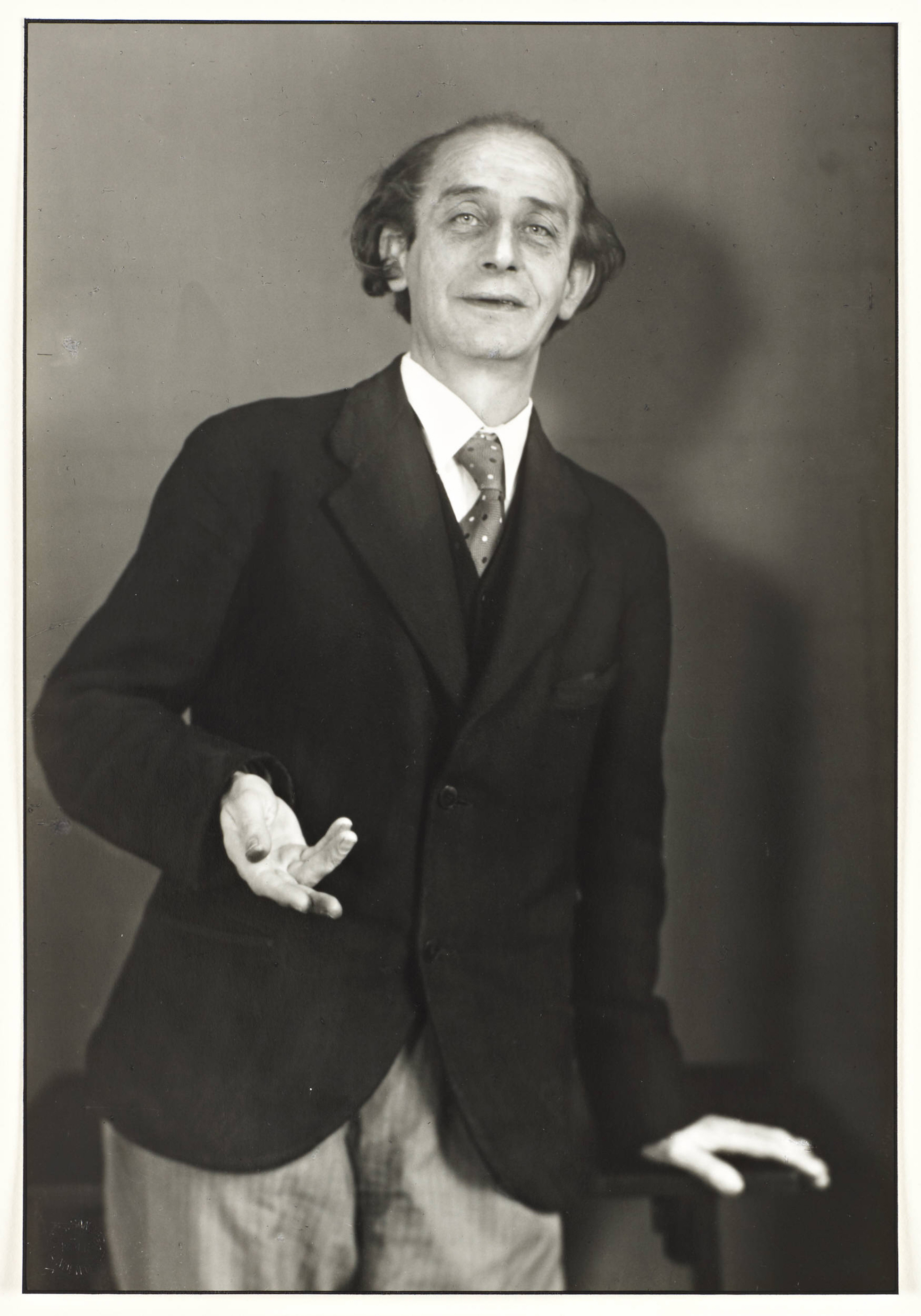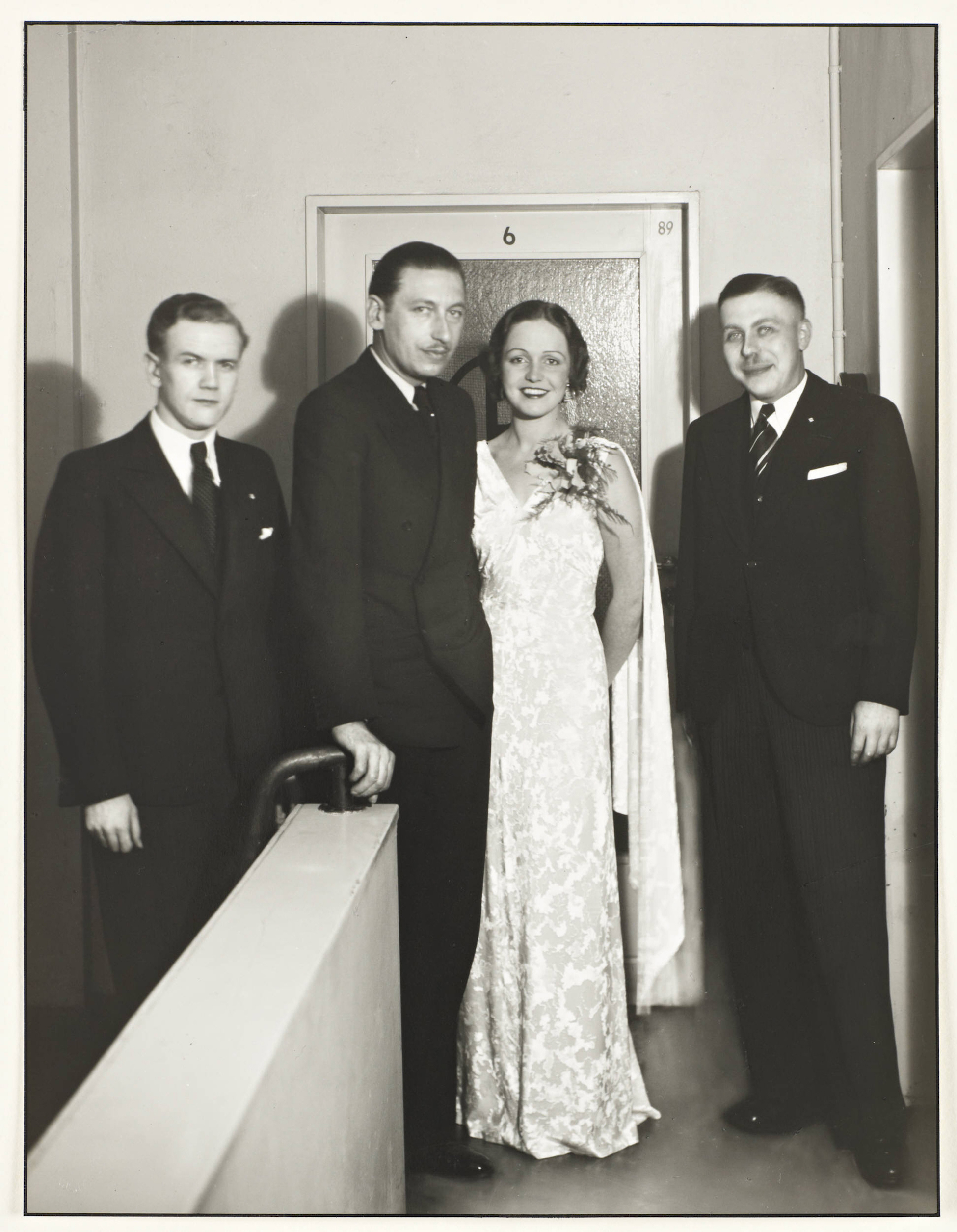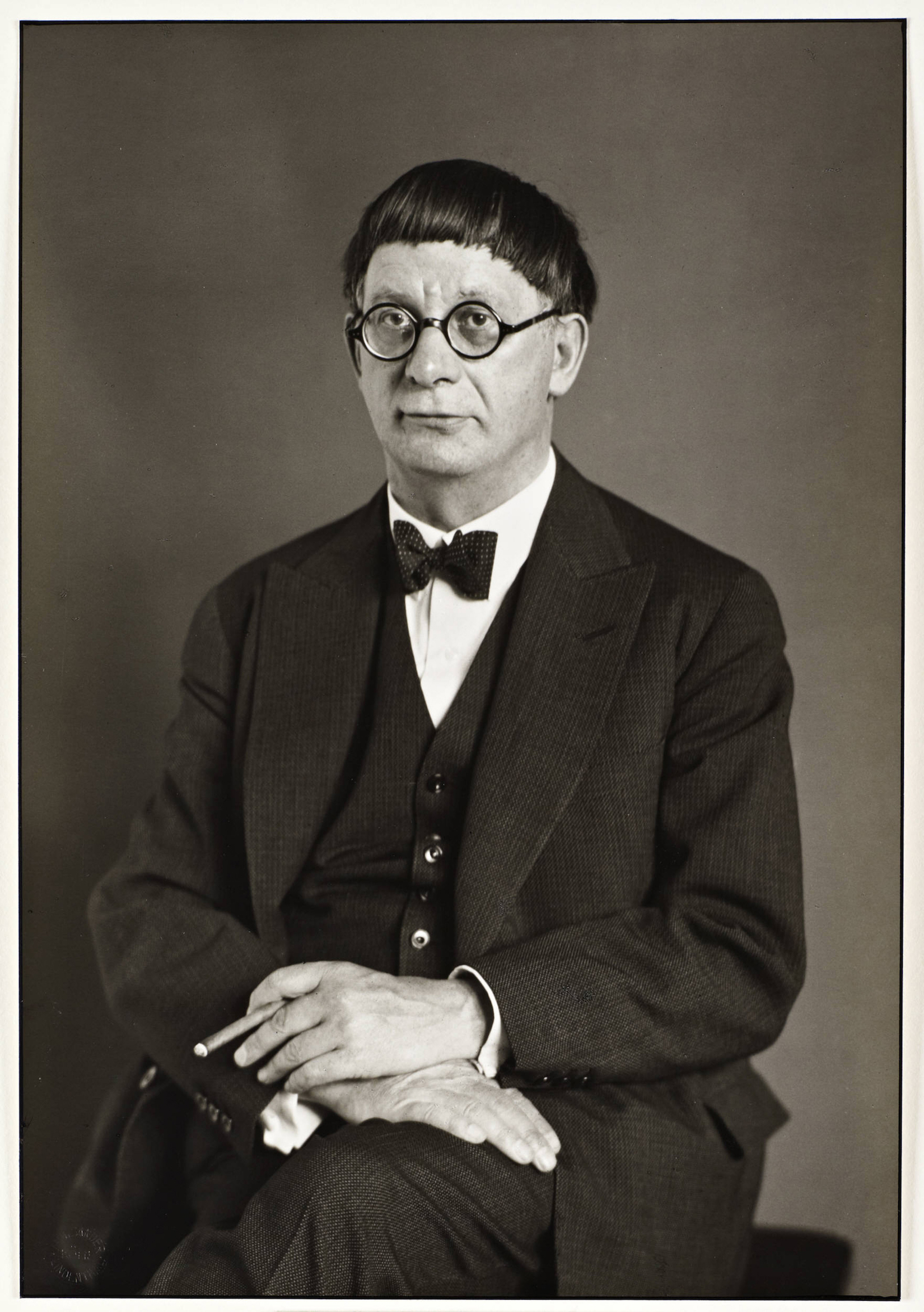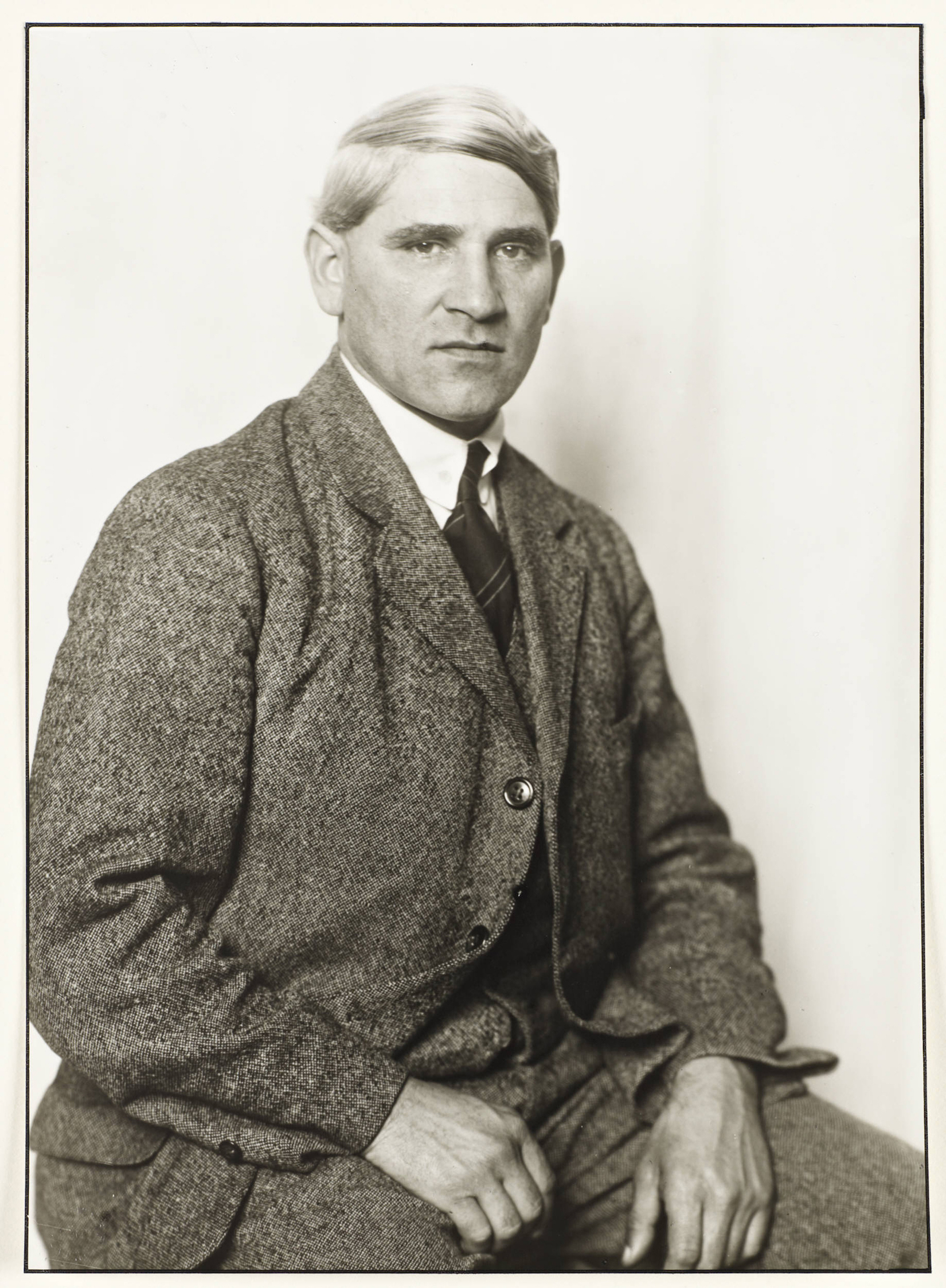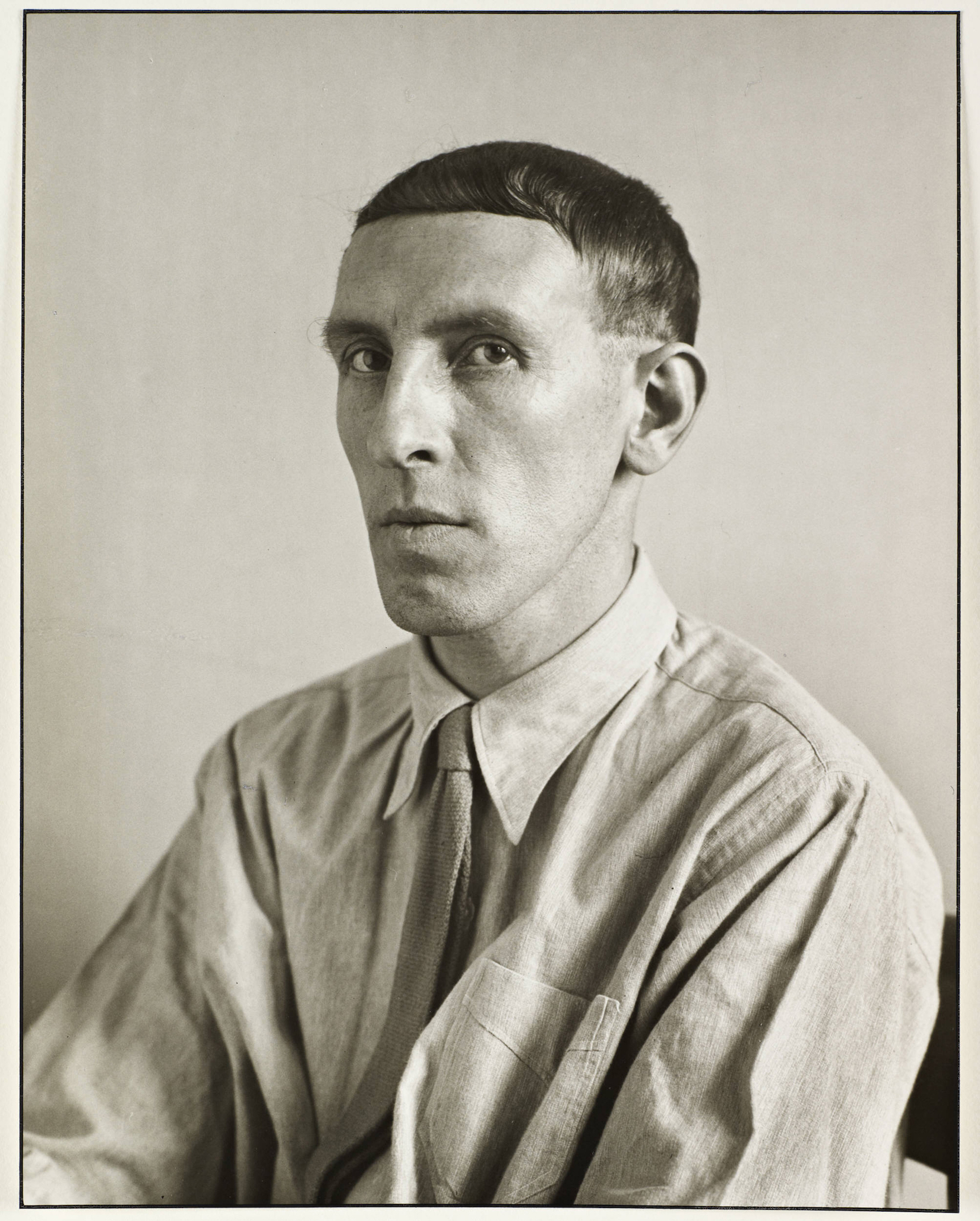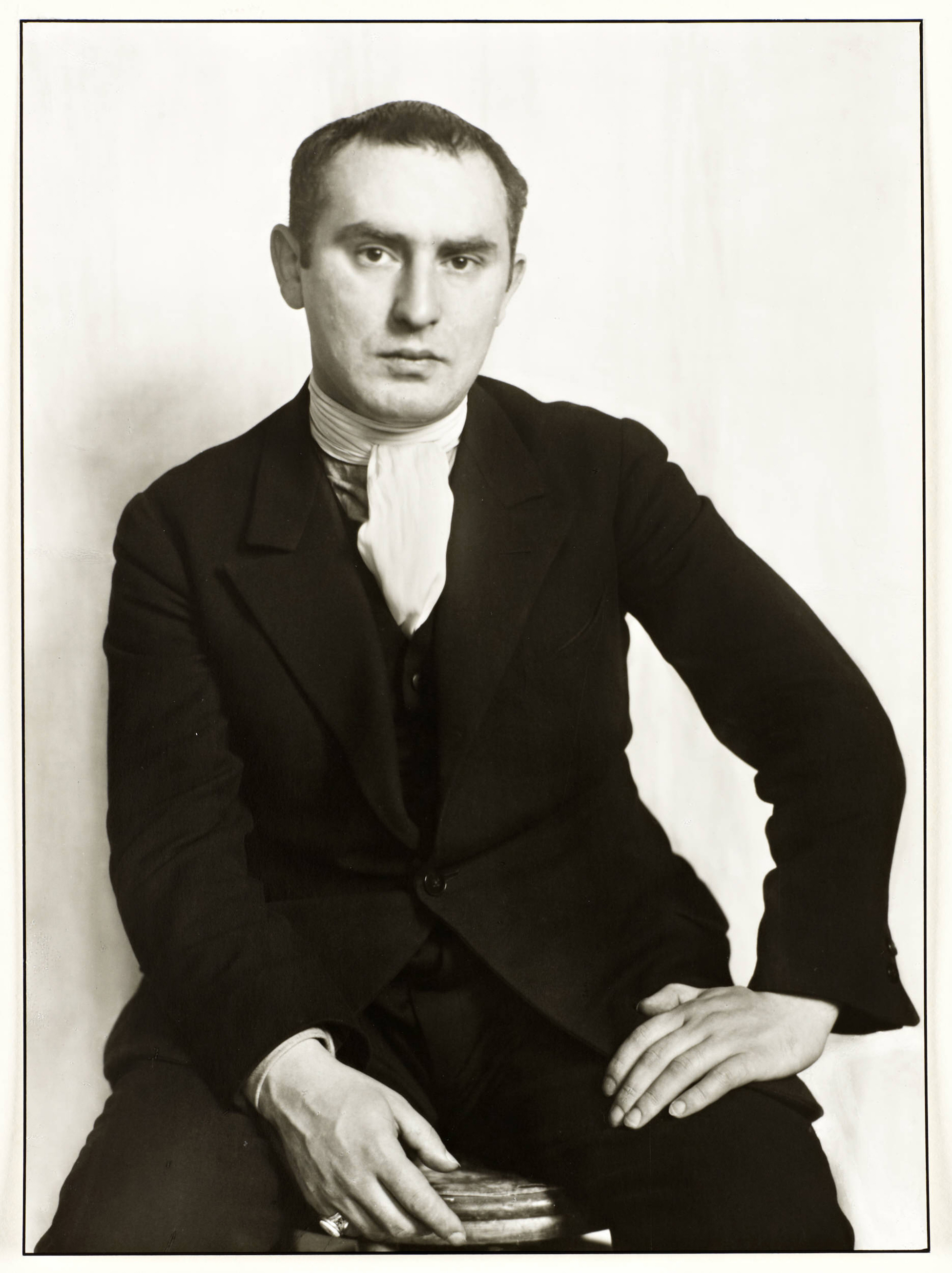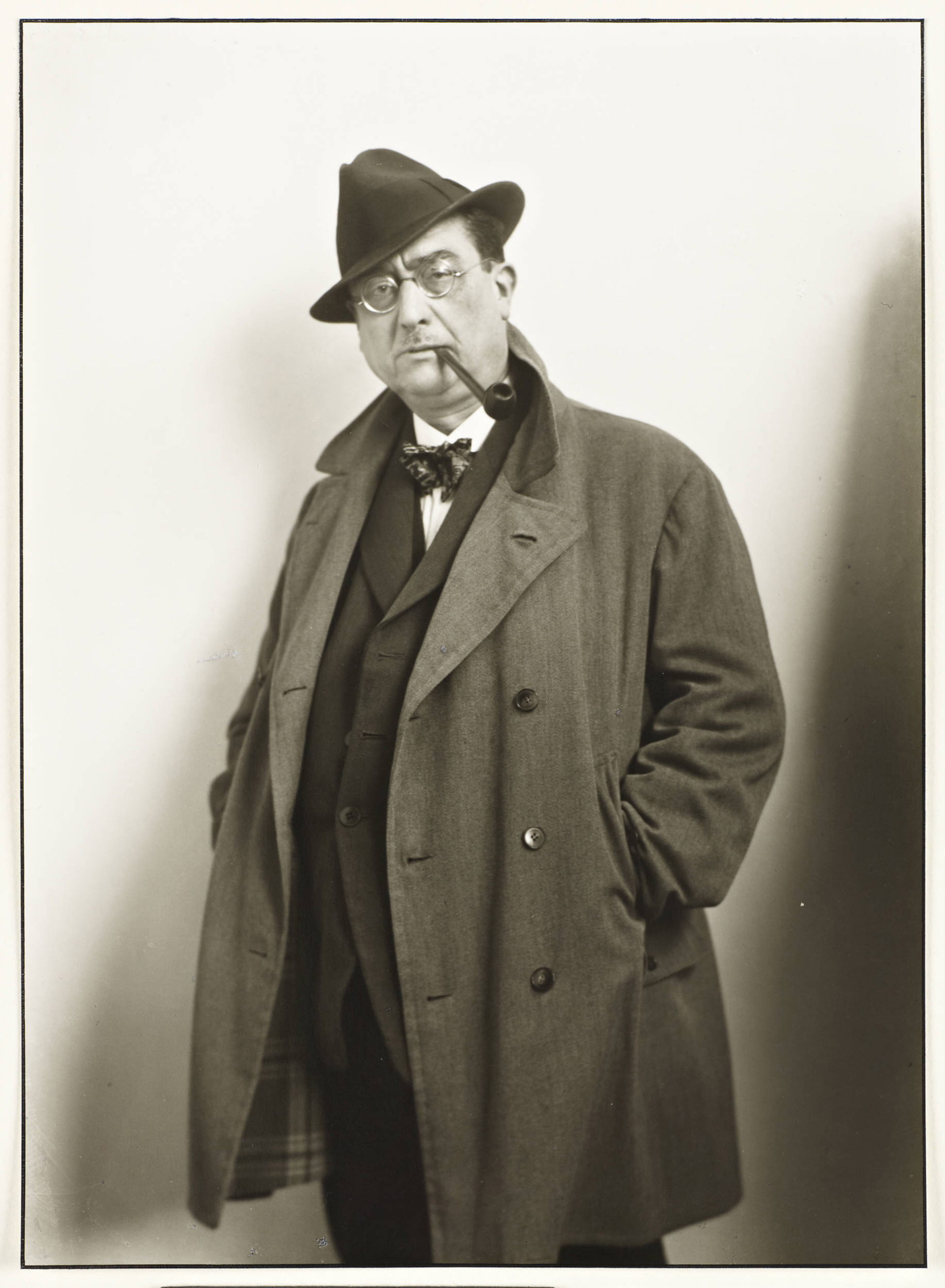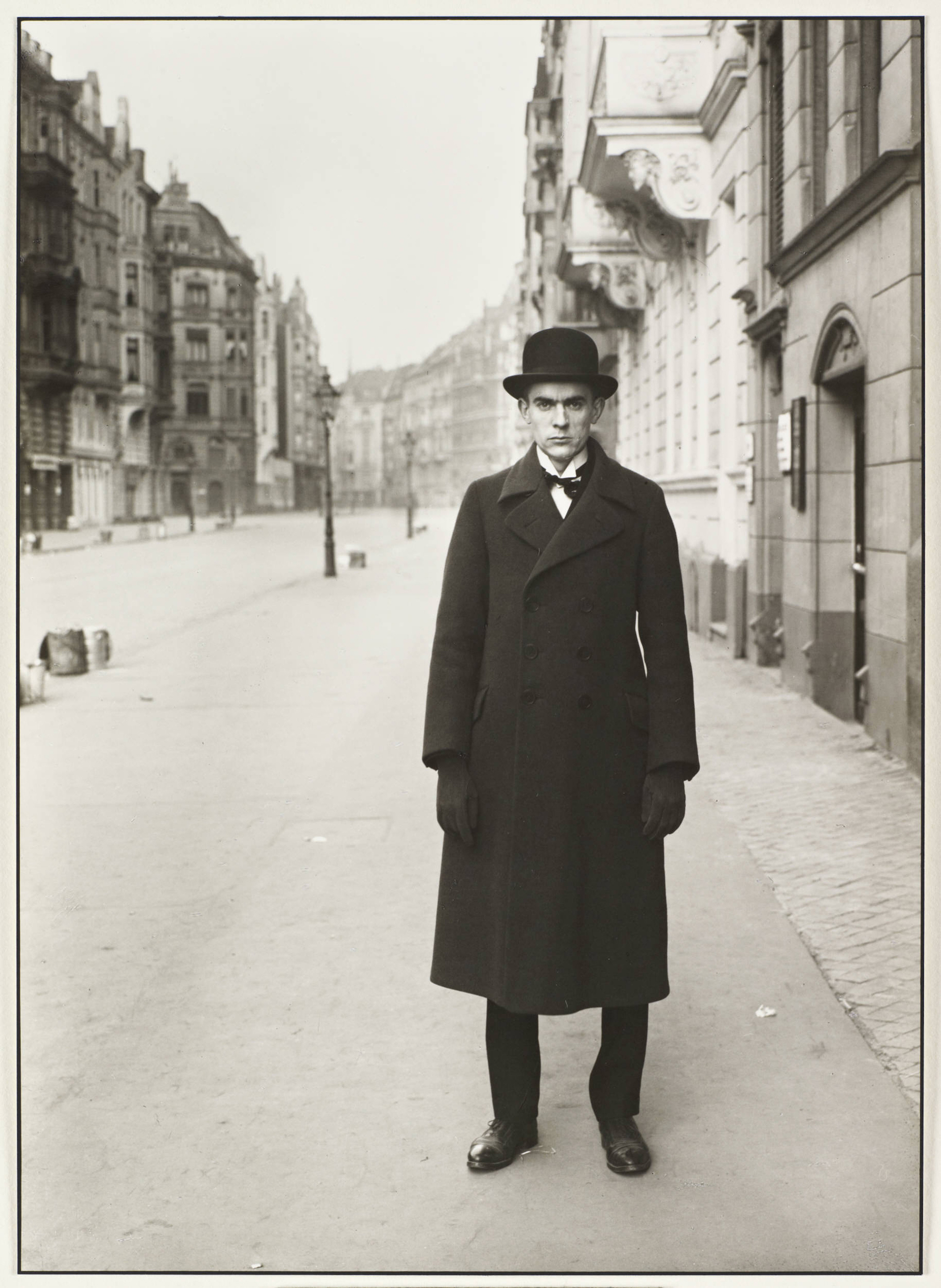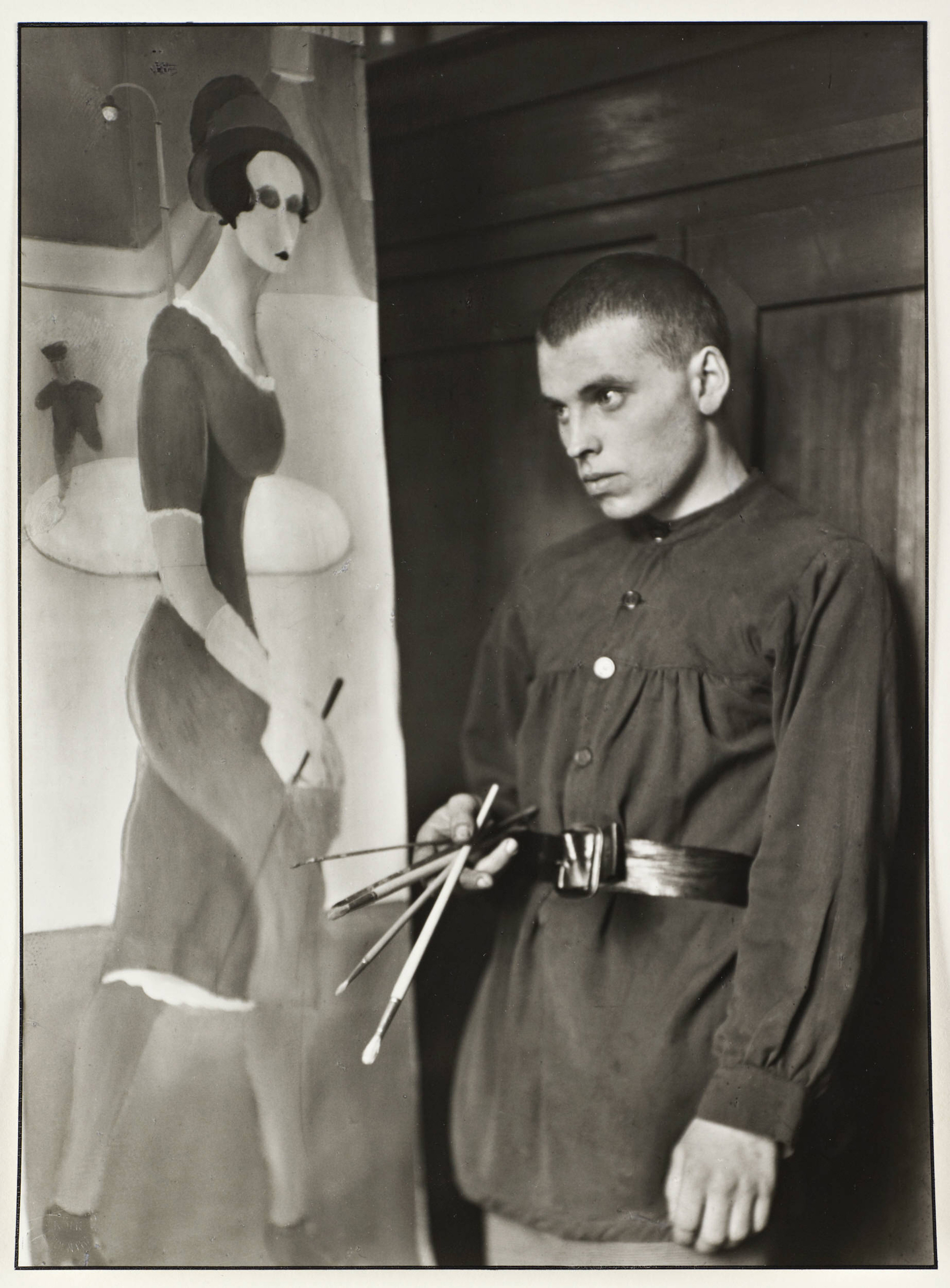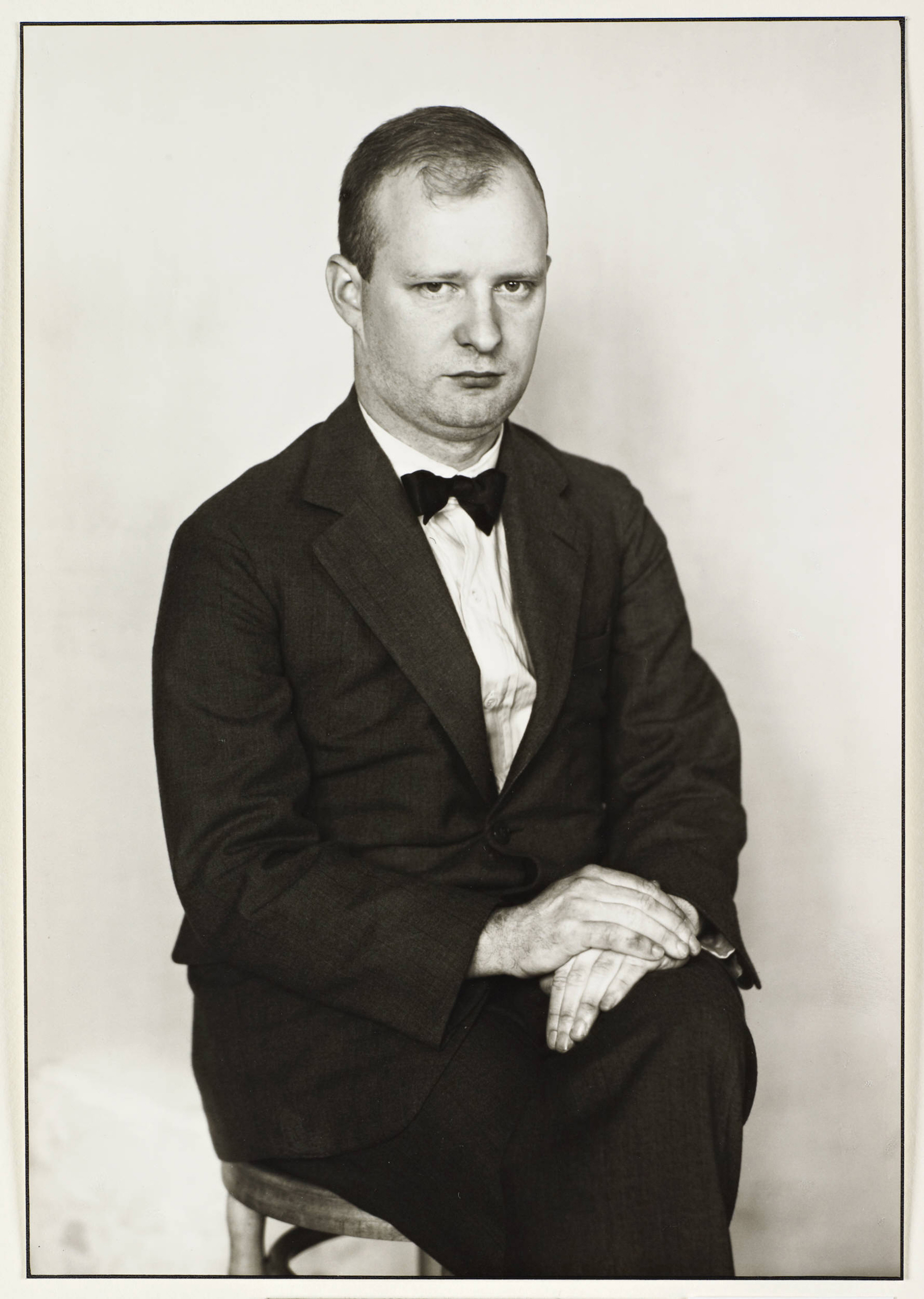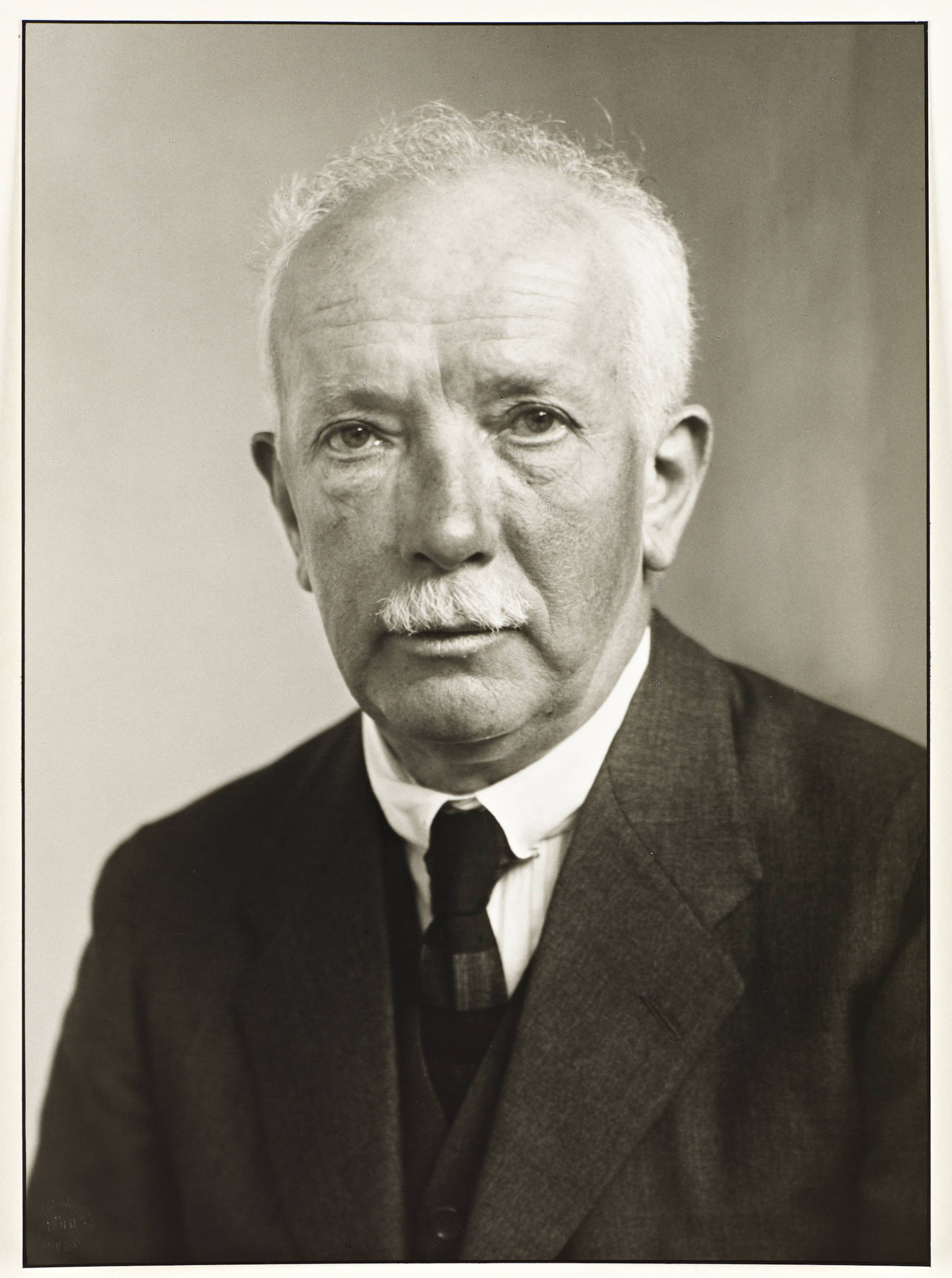Der erdgebundene Mensch, 1910
1910; printed 1953, Archetypes Portfolio, Photograph, gelatin silver print on paper, 258 x 189 mm
© Die Photographische Sammlung/SK Stiftung Kultur - August Sander Archiv, Cologne / DACS 2025
AL00002
Der Philosoph, 1913
1913; printed 1953, Archetypes Portfolio, Photograph, gelatin silver print on paper, 258 x 190 mm
© Die Photographische Sammlung/SK Stiftung Kultur - August Sander Archiv, Cologne / DACS 2025
AL00003
Der Stürmer oder Revoluntionär, 1925
1925; printed 1953, Archetypes Portfolio, Photograph, gelatin silver print on paper, 258 x 189 mm
© Die Photographische Sammlung/SK Stiftung Kultur - August Sander Archiv, Cologne / DACS 2025
AL00004
Der Weise, 1913
1913, printer 1953, Archetypes Portfolio, Photograph, gelatin silver print on paper, 259 x 190 mm
© Die Photographische Sammlung/SK Stiftung Kultur - August Sander Archiv, Cologne / DACS 2025
AL00005
Der erdgebundene Mensch, 1912
1912; printed 1953, Archetypes Portfolio, Photograph, gelatin silver print on paper, 258 x 190 mm
© Die Photographische Sammlung/SK Stiftung Kultur - August Sander Archiv, Cologne / DACS 2025
AL00006
Die Philosophin, 1913
1913; printed 1953, Archetypes Portfolio, Photograph, gelatin silver print on paper, 259 x 184 mm
© Die Photographische Sammlung/SK Stiftung Kultur - August Sander Archiv, Cologne / DACS 2025
AL00007
Der Stümerin oder Revoluntionärin, 1912
1912; printed 1953, The Archetypes Portfolio, Photograph, gelatin silver print on paper, 258 x 190 mm
© Die Photographische Sammlung/SK Stiftung Kultur - August Sander Archiv, Cologne / DACS 2025
AL00008
Die Weise, 1913
1913; printed 1953, The Archetypes Portfolio, Photograph, gelatin silver print on paper, 259 x 190 mm
© Die Photographische Sammlung/SK Stiftung Kultur - August Sander Archiv, Cologne / DACS 2025
AL00009
Die Frau im fortgeshrittenen Intellekt, 1914
1914; printed 1953, The Archetypes Portfolio, Photograph, gelatin silver print on paper, 258 x 189 mm
© Die Photographische Sammlung/SK Stiftung Kultur - August Sander Archiv, Cologne / DACS 2025
AL00010
Bauernpaar - Zucht und Harmonie, 1912
1912; printed 1953, The Archetypes Portfolio, Photograph, gelatin silver print on paper, 258 x 187 mm
© Die Photographische Sammlung/SK Stiftung Kultur - August Sander Archiv, Cologne / DACS 2025
AL00011
Bauernpaar - Zucht und Harmonie, 1912
1912; printed 1953, The Archetypes Portfolio, Photograph, gelatin silver print on paper, 259 x 190 mm
© Die Photographische Sammlung/SK Stiftung Kultur - August Sander Archiv, Cologne / DACS 2025
AL00012
Die Familie in der Generation, 1912
1912; printed 1953, The Archetypes Portfolio, Photograph, gelatin silver print on paper, 182 x 258 mm
© Die Photographische Sammlung/SK Stiftung Kultur - August Sander Archiv, Cologne / DACS 2025
AL00013
Engaged Farming Couple, 1911
1911, printed 1990, Photograph, gelatin silver print on paper, 490 x 390 x 30 mm
© Die Photographische Sammlung/SK Stiftung Kultur - August Sander Archiv, Cologne / DACS 2025
AL00139
Jungbauer, 1912-13
1912-13, printed 1990, Photograph, gelatin silver print on paper, 257 x 201 mm
© Die Photographische Sammlung/SK Stiftung Kultur - August Sander Archiv, Cologne / DACS 2025
AL00016
Westerwälder Bauernmädchen, 1927
1927, printed 1990, Photograph, gelatin silver print on paper, 259 x 180 mm
© Die Photographische Sammlung/SK Stiftung Kultur - August Sander Archiv, Cologne / DACS 2025
AL00015
Farm Children, 1913
c.1913, printed 1991, Photograph, gelatin silver print on paper, 490 x 390 x 30 mm
© Die Photographische Sammlung/SK Stiftung Kultur - August Sander Archiv, Cologne / DACS 2025
AL00140
Farm Girl, 1910
c.1910, printed 1990, Photograph, gelatin silver print on paper, 490 x 390 x 30 mm
© Die Photographische Sammlung/SK Stiftung Kultur - August Sander Archiv, Cologne / DACS 2025
AL00166
Bauernkind, 1919
1919, printed 1990, Photograph, gelatin silver print on paper, 259 x 190 mm
© Die Photographische Sammlung/SK Stiftung Kultur - August Sander Archiv, Cologne / DACS 2025
AL00017
Witwe mit ihren Söhnen, c.1921
c.1921, printed 1990, Photograph, gelatin silver print on paper, 258 x 190 mm
© Die Photographische Sammlung/SK Stiftung Kultur - August Sander Archiv, Cologne / DACS 2025
AL00018
Grandmother and Granddaughter, 1911-14
1911-14, printed 1990, Photograph, gelatin silver print on paper, 490 x 390 x 30 mm
© Die Photographische Sammlung/SK Stiftung Kultur - August Sander Archiv, Cologne / DACS 2025
AL00141
Bauernfamilie, 1913
1913, printed 1990, Photograph, gelatin silver print on paper, 187 x 239 mm
© Die Photographische Sammlung/SK Stiftung Kultur - August Sander Archiv, Cologne / DACS 2025
AL00019
Bauernfamilie, 1912
1912, printed 1990, Photograph, gelatin silver print on paper, 191 x 260 mm
© Die Photographische Sammlung/SK Stiftung Kultur - August Sander Archiv, Cologne / DACS 2025
AL00020
Bauer bei der Feldarbeit, c.1930
c. 1930, printed 1990, Photograph, gelatin silver print on paper, 259 x 198 mm
© Die Photographische Sammlung/SK Stiftung Kultur - August Sander Archiv, Cologne / DACS 2025
AL00021
Bauer beim Säen, 1952
1952, printed 1990, Photograph, gelatin silver print on paper, 260 x 204 mm
© Die Photographische Sammlung/SK Stiftung Kultur - August Sander Archiv, Cologne / DACS 2025
AL00022
Bauernpaar am Spinnrad, 1925-30
1925-30, printed 1990, Photograph, gelatin silver print on paper, 260 x 186 mm
© Die Photographische Sammlung/SK Stiftung Kultur - August Sander Archiv, Cologne / DACS 2025
AL00023
Bauernpaar, c.1932
c.1932, printed 1990, Photograph, gelatin silver print on paper, 262 x 187 mm
© Die Photographische Sammlung/SK Stiftung Kultur - August Sander Archiv, Cologne / DACS 2025
AL00024
Herrenbauer, 1924
1924, printed 1990, Photograph, gelatin silver print on paper, 260 x 183 mm
© Die Photographische Sammlung/SK Stiftung Kultur - August Sander Archiv, Cologne / DACS 2025
AL00025
Reisender Kaufmann, 1930
1930, printed 1990, Photograph, gelatin silver print on paper, 259 x 190 mm
© Die Photographische Sammlung/SK Stiftung Kultur - August Sander Archiv, Cologne / DACS 2025
AL00026
Kleinstädterin, 1927
1927, printed 1990, Photograph, gelatin silver print on paper, 258 x 187 mm
© Die Photographische Sammlung/SK Stiftung Kultur - August Sander Archiv, Cologne / DACS 2025
AL00027
Boxer, 1929
1929, printed 1993, Photograph, gelatin silver print on paper, 259 x 167 mm
© Die Photographische Sammlung/SK Stiftung Kultur - August Sander Archiv, Cologne / DACS 2025
AL00028
Jockey, c.1930
c.1930, printed 1990, Photograph, gelatin silver print on paper, 258 x 185 mm
© Die Photographische Sammlung/SK Stiftung Kultur - August Sander Archiv, Cologne / DACS 2025
AL00028 (on long-term loan from Anthony d'Offay, 2010)
Sportflieger, 1920
1920, printed 1990, Photograph, gelatin silver print on paper, 260 x 190 mm
© Die Photographische Sammlung/SK Stiftung Kultur - August Sander Archiv, Cologne / DACS 2025
AL00030
Maurermeister, 1926
1926, printed 1990, Photograph, gelatin silver print on paper, 259 x 189 mm
© Die Photographische Sammlung/SK Stiftung Kultur - August Sander Archiv, Cologne / DACS 2025
AL00032
Schmied, c.1930
c.1930, printed 1990, Photograph, gelatin silver print on paper, 258 x 199 mm
© Die Photographische Sammlung/SK Stiftung Kultur - August Sander Archiv, Cologne / DACS 2025
AL00031
Konditor, 1928
1928, printed 1999, Photograph, gelatin silver print on paper, 260 x 173 mm
© Die Photographische Sammlung/SK Stiftung Kultur - August Sander Archiv, Cologne / DACS 2025
AL00033
Industrieller, c.1924
c.1924, printed 1990, Photograph, gelatin silver print on paper, 260 x 191 mm
© Die Photographische Sammlung/SK Stiftung Kultur - August Sander Archiv, Cologne / DACS 2025
AL00034 (on long-term loan from Anthony d'Offay, 2010)
Industrieller, c.1936
c.1936, printed 1990, Photograph, gelatin silver print on paper, 260 x 192 mm
© Die Photographische Sammlung/SK Stiftung Kultur - August Sander Archiv, Cologne / DACS 2025
AL00035
Handlanger, 1928
1928, printed 1990, Photograph, gelatin silver print on paper, 260 x 183 mm
© Die Photographische Sammlung/SK Stiftung Kultur - August Sander Archiv, Cologne / DACS 2025
AL00038
Grobschmiede, 1928
1926, printed 1990, Photograph, gelatin silver print on paper, 259 x 199 mm
© Die Photographische Sammlung/SK Stiftung Kultur - August Sander Archiv, Cologne / DACS 2025
AL00039
Bauernknechte, 1929
1929, printed 1990, Photograph, gelatin silver print on paper, 259 x 191 mm
© Die Photographische Sammlung/SK Stiftung Kultur - August Sander Archiv, Cologne / DACS 2025
AL00037
Proletariermutter, 1927
1927, printed 1990, Photograph, gelatin silver print, 258 x 188 mm
© Die Photographische Sammlung/SK Stiftung Kultur - August Sander Archiv, Cologne / DACS 2025
AL00036
Herbalist, 1929
1929, printed 1990, Photograph, gelatin silver print on paper, 256 x 167 mm
© Die Photographische Sammlung/SK Stiftung Kultur - August Sander Archiv, Cologne / DACS 2025
AL00124
Geistearbeiter des Proletariats, c.1925
c.1925, printed 1990, Photograph, gelatin silver print on paper, 258 x 207 mm
© Die Photographische Sammlung/SK Stiftung Kultur - August Sander Archiv, Cologne / DACS 2025
AL00040
Erfinder und Dadaist, 1929
1929, printed 1990, Photograph, gelatin silver print on paper, 258 x 193 mm
© Die Photographische Sammlung/SK Stiftung Kultur - August Sander Archiv, Cologne / DACS 2025
AL00042
Ingenieur und Werbeleiter, c.1925
c.1925, printed 1990, Photograph, gelatin silver print on paper, 259 x 208 mm
© Die Photographische Sammlung/SK Stiftung Kultur - August Sander Archiv, Cologne / DACS 2025
AL00043
Lackarbeiter, c.1930
c.1930, printed 1990, Photograph, gelatin silver print on paper, 260 x 190 mm
© Die Photographische Sammlung/SK Stiftung Kultur - August Sander Archiv, Cologne / DACS 2025
AL00041
The Architect Hans Heinz Luttgen and his Wife Dora, 1926
1926, printed 1990, Photograph, gelatin silver print on paper, 490 x 390 x 30 mm
© Die Photographische Sammlung/SK Stiftung Kultur - August Sander Archiv, Cologne / DACS 2025
AL00142
The Painter Otto Dix and his Wife Martha, 1925/6
1925/6, printed 1991, Photograph, gelatin silver print on paper, 490 x 390 x 30 mm
© Die Photographische Sammlung/SK Stiftung Kultur - August Sander Archiv, Cologne / DACS 2025
AL00143
Malerehepaar [Marta Hegemann und Anton Räderscheidt], c.1925
c.1925, printed 1990, Photograph, gelatin silver print on paper, 261 x 155 mm
© Die Photographische Sammlung/SK Stiftung Kultur - August Sander Archiv, Cologne / DACS 2025
AL00045
Mutter und Sohn, 1925-30
1925-30, printed 1990, Photograph, gelatin silver print on paper, 258 x 195 mm
© Die Photographische Sammlung/SK Stiftung Kultur - August Sander Archiv, Cologne / DACS 2025
AL00046
Meine Frau in Freud und Leid, 1911
1911, printed 1990, Photograph, gelatin silver print on paper, 258 x 199 mm
© Die Photographische Sammlung/SK Stiftung Kultur - August Sander Archiv, Cologne / DACS 2025
AL00048
Dorfpfarrer mit Familie, 1920-5
1920-5, printed 1990, Photograph, gelatin silver print on paper, 251 x 224 mm
© Die Photographische Sammlung/SK Stiftung Kultur - August Sander Archiv, Cologne / DACS 2025
AL00050
Geschwister, 1924
1924, printed 1990, Photograph, gelatin silver print on paper, 163 x 251 mm
© Die Photographische Sammlung/SK Stiftung Kultur - August Sander Archiv, Cologne / DACS 2025
AL00049
Junge Frau, 1929
1929, printed 1990, Photograph, gelatin silver print on paper, 258 x 179 mm
© Die Photographische Sammlung/SK Stiftung Kultur - August Sander Archiv, Cologne / DACS 2025
AL00051
Frau eines Malers [Helene Abelen], 1926
c.1926, printed 1994, Photograph, gelatin silver print on paper, 257 x 187 mm
© Die Photographische Sammlung/SK Stiftung Kultur - August Sander Archiv, Cologne / DACS 2025
AL00052
Frau eines Architekten [Dora Lüttgen], 1926
1926, printed 1990, Photograph, gelatin silver print on paper, 258 x 194 mm
© Die Photographische Sammlung/SK Stiftung Kultur - August Sander Archiv, Cologne / DACS 2025
AL00053
Rotkreuzschwester, 1924
1924, printed 1990, Photograph, gelatin silver print on paper, 259 x 198 mm
© Die Photographische Sammlung/SK Stiftung Kultur - August Sander Archiv, Cologne / DACS 2025
AL00056
Sekretärin beim Westdeutschen Rundfunk in Köln, 1931
1931, printed 1992, Photograph, gelatin silver print on paper, 260 x 149 mm
© Die Photographische Sammlung/SK Stiftung Kultur - August Sander Archiv, Cologne / DACS 2025
AL00054
Corpsstudenten, 1921
1921, Photograph, gelatin silver print on paper, 195 x 260 mm
© Die Photographische Sammlung/SK Stiftung Kultur - August Sander Archiv, Cologne / DACS 2025
AL00057
Werkstudenten, 1926
1926, printed 1990, Photograph, gelatin silver print on paper, 190 x 250 mm
© Die Photographische Sammlung/SK Stiftung Kultur - August Sander Archiv, Cologne / DACS 2025
AL00058
Kunstgelehrter [Karl With], 1932
1932, printed 1990, Photograph, gelatin silver print on paper, 259 x 193 mm
© Die Photographische Sammlung/SK Stiftung Kultur - August Sander Archiv, Cologne / DACS 2025
AL00059
Philosoph [Max Scheler], c.1925
c.1925, printed 1990, Photograph, gelatins ilver print on paper, 258 x 188 m
© Die Photographische Sammlung/SK Stiftung Kultur - August Sander Archiv, Cologne / DACS 2025
AL00060
Staatsanwalt, c.1931
c.1931, printed 1990, Photograph, gelatin silver print on paper, 252 x 207 mm
© Die Photographische Sammlung/SK Stiftung Kultur - August Sander Archiv, Cologne / DACS 2025
AL00062
Polizeibeamter. Der Herr Wachtmeister, 1925
1925, printed 1990, Photograph, gelatin silver print on paper, 261 x 178 mm
© Die Photographische Sammlung/SK Stiftung Kultur - August Sander Archiv, Cologne / DACS 2025
AL00061
Der Arzt [Carl Robert Schlayer], 1929
1929, printed 1990, Photograph, gelatin silver print on paper, 257 x 178 mm
© Die Photographische Sammlung/SK Stiftung Kultur - August Sander Archiv, Cologne / DACS 2025
AL00063
Magnetopath, 1924
1924, printed 1990, Photograph, gelatin silver print on paper, 258 x 190 mm
© Die Photographische Sammlung/SK Stiftung Kultur - August Sander Archiv, Cologne / DACS 2025
AL00064
The Notary, 1924
1924, printed 1990, Photograph, gelatin silver print on paper, 258 x 190 mm
© Die Photographische Sammlung/SK Stiftung Kultur - August Sander Archiv, Cologne / DACS 2025
AL00147
Der Schiedsrichter, 1919
1919, printed 1990, Photograph, gelatin silver print on paper, 258 x 188 mm
© Die Photographische Sammlung/SK Stiftung Kultur - August Sander Archiv, Cologne / DACS 2025
AL00066
Rechtsanwalt und Kunstsammler [Josef Haubrich], 1931
c.1931, printed 1990, Photograph, gelatin silver print on paper, 255 x 185 mm
© Die Photographische Sammlung/SK Stiftung Kultur - August Sander Archiv, Cologne / DACS 2025
AL00065
Soldat, 1940
c.1940, printed 1990, Photograph, gelatin silver print on paper, 259 x 190 mm
© Die Photographische Sammlung/SK Stiftung Kultur - August Sander Archiv, Cologne / DACS 2025
AL00067
Unteroffizier, 1944
c.1944, printed 1990, Photograph, gelatin silver print on paper, 258 x 191 mm
© Die Photographische Sammlung/SK Stiftung Kultur - August Sander Archiv, Cologne / DACS 2025
AL00068
Nationalsozialist, 1937/8
1937/8, printed 1990, Photograph, gelatin silver print on paper, 258 x 154 mm
© Die Photographische Sammlung/SK Stiftung Kultur - August Sander Archiv, Cologne / DACS 2025
AL00069
Nationalsozialist, c.1935
c.1935, printed 1990, Photograph, gelatin silver print on paper, 252 x 188 mm
© Die Photographische Sammlung/SK Stiftung Kultur - August Sander Archiv, Cologne / DACS 2025
AL00070
Member of the Hitler Youth, 1941
c.1941, printed 1990, Photograph, gelatin silver print on paper, 259 x 185 mm
© Die Photographische Sammlung/SK Stiftung Kultur - August Sander Archiv, Cologne / DACS 2025
AL00148
SS Captain, 1937
1937, printed 1990, Photograph, gelatin silver print on paper, 258 x 171 mm
© Die Photographische Sammlung/SK Stiftung Kultur - August Sander Archiv, Cologne / DACS 2025
AL00150
Young National Socialist, 1941
1941, printed 1990, Photograph, gelatin silver print on paper, 257 x 174 mm
© Die Photographische Sammlung/SK Stiftung Kultur - August Sander Archiv, Cologne / DACS 2025
AL00149
National Socialist, Head of Department of Culture, c.1937
1938, printed 1990, Photograph, gelatin silver print on paper, 160 x 192 mm
© Die Photographische Sammlung/SK Stiftung Kultur - August Sander Archiv, Cologne / DACS 2025
AL00151
Kolonial - und Farbwarenhändler, c.1929
c.1929, printed 1990, Photograph, gelatin silver print on paper, 262 x 188 mm
© Die Photographische Sammlung/SK Stiftung Kultur - August Sander Archiv, Cologne / DACS 2025
AL00077
Großherzog [Ernst Ludwig von Hessen und bei Rhein], c.1930
c.1930, printed 1990, Photograph, gelatin silver print on paper, 258 x 193 mm
© Die Photographische Sammlung/SK Stiftung Kultur - August Sander Archiv, Cologne / DACS 2025
AL00071
Katholischer Geistlicher, 1927
1927, printed 1990, Photograph, gelatin silver print on paper, 259 x 188 mm
© Die Photographische Sammlung/SK Stiftung Kultur - August Sander Archiv, Cologne / DACS 2025
AL00072
Frau Pastor, c.1920
c.1920, printed 1990, Photograph, gelatin silver print on paper, 258 x 198 mm
© Die Photographische Sammlung/SK Stiftung Kultur - August Sander Archiv, Cologne / DACS 2025
AL00073
Dorfschullehrer, 1921
1921, printed 1990, Photograph, gelatin silver print on paper, 260 x 189 mm
© Die Photographische Sammlung/SK Stiftung Kultur - August Sander Archiv, Cologne / DACS 2025
AL00074
Bäueliche Braut , 1922
1922, Gelatin silver print, 48 x 38 cm, Printed 1990
© Die Photographische Sammlung/SK Stiftung Kultur - August Sander Archiv, Cologne / DACS 2025
A045022
Jungelehrer, c.1928
c.1928, printed 1990, Photograph, gelatin silver print on paper, 258 x 192 mm
© Die Photographische Sammlung/SK Stiftung Kultur - August Sander Archiv, Cologne / DACS 2025
AL00075
Bankier, 1929
1929, printed 1990, Photograph, gelatin silver print on paper, 252 x 195 mm
© Die Photographische Sammlung/SK Stiftung Kultur - August Sander Archiv, Cologne / DACS 2025
AL00076
Kunsthändler [Sam Salz], 1927
1927, printed 1990, Photograph, gelatin silver print on paper, 259 x 190 mm
© Die Photographische Sammlung/SK Stiftung Kultur - August Sander Archiv, Cologne / DACS 2025
AL00078
Abgeordneter (Demokrat), 1927
1927, printed 1990, Photograph, gelatin silver print on paper, 259 x 173 mm
© Die Photographische Sammlung/SK Stiftung Kultur - August Sander Archiv, Cologne / DACS 2025
AL00080
Schriftsteller und Theaterkritiker [Theodor Haerten], 1928
1928, printed 1990, Photograph, gelatin silver print on paper, 258 x 179 mm
© Die Photographische Sammlung/SK Stiftung Kultur - August Sander Archiv, Cologne / DACS 2025
AL00081
Vorsitzender einter Splitterpareti [Dr. Braun, Bund der geistigen Erneurer Deutschlands], 1931
1931, printed 1990, Photograph, gelatin silver print on paper, 258 x 150 mm
© Die Photographische Sammlung/SK Stiftung Kultur - August Sander Archiv, Cologne / DACS 2025
AL00079
Schrifsteller und Theaterkritiker [Franz Paul Brückner], c.1926
c.1926, printed 1990, Photograph, gelatin silver print on paper, 260 x 194 mm
© Die Photographische Sammlung/SK Stiftung Kultur - August Sander Archiv, Cologne / DACS 2025
AL00082
Fahrender Komödiant, 1928-30
1928-30, printed 1990, Photograph, gelatin silver print on paper, 257 x 177 mm
© Die Photographische Sammlung/SK Stiftung Kultur - August Sander Archiv, Cologne / DACS 2025
AL00083
Filmschauspieler [zweiter von links Willy Virgel], 1934
1934, printed 1990, Photograph, gelatin silver print on paper, 257 x 197 mm
© Die Photographische Sammlung/SK Stiftung Kultur - August Sander Archiv, Cologne / DACS 2025
AL00084
Der Architekt [Hans Poelzig], 1929
1929, printed 1990, Photograph, gelatin silver print on paper, 259 x 179 mm
© Die Photographische Sammlung/SK Stiftung Kultur - August Sander Archiv, Cologne / DACS 2025
AL00086
Maler und Bildhauer [Otto Freundlich], c.1925
c.1925, printed 1990, Photograph, gelatin silver print on paper, 260 x 188 mm
© Die Photographische Sammlung/SK Stiftung Kultur - August Sander Archiv, Cologne / DACS 2025
AL00087
Maler [Heinrich Hoerle], 1928
1928, printed 1991, Photograph, gelatin silver print on paper, 260 x 204 mm
© Die Photographische Sammlung/SK Stiftung Kultur - August Sander Archiv, Cologne / DACS 2025
AL00091
Maler [Jankel Adler], 1924
1924, printed 1990, Photograph, gelatin silver print on paper, 258 x 190 mm
© Die Photographische Sammlung/SK Stiftung Kultur - August Sander Archiv, Cologne / DACS 2025
AL00090
Maler [Robert Seuffert], 1928
1928, printed 1990, Photograph, gelatin silver print on paper, 258 x 188 mm
© Die Photographische Sammlung/SK Stiftung Kultur - August Sander Archiv, Cologne / DACS 2025
AL00089
Painter [Anton Raderscheidt], 1926
1926, printed 1990, Photograph, gelatin silver print on paper, 260 x 188 mm
© Die Photographische Sammlung/SK Stiftung Kultur - August Sander Archiv, Cologne / DACS 2025
AL00125
Maler [Gottfried Brockmann], 1924
1924, printed 1991, Photograph, gelatin silver print on paper, 360 x 190 mm
© Die Photographische Sammlung/SK Stiftung Kultur - August Sander Archiv, Cologne / DACS 2025
AL00088
Composer [Paul Hindemith], c.1925
c.1925, printed 1990, Photograph, gelatin silver print on paper, 259 x 181 mm
© Die Photographische Sammlung/SK Stiftung Kultur - August Sander Archiv, Cologne / DACS 2025
AL00126
Komponist [Richard Strauss], 1925
1925, printed 1990, Photograph, gelatin silver print on paper, 260 x 190 mm
© Die Photographische Sammlung/SK Stiftung Kultur - August Sander Archiv, Cologne / DACS 2025
AL00092
